![]()
Fare Media Catalog - Page Index: |
||||||||||||||||
| Page 1: Fare Tickets and Employee Tickets & Passes | Page 2: Tokens | Page
3:
Continuing
Ride Tickets &
Transfers for Rapid Transit |
||||||||||||||
| updated: 10/27/2025 | updated: 1/9/2025 | updated: 3/27/2025 | ||||||||||||||
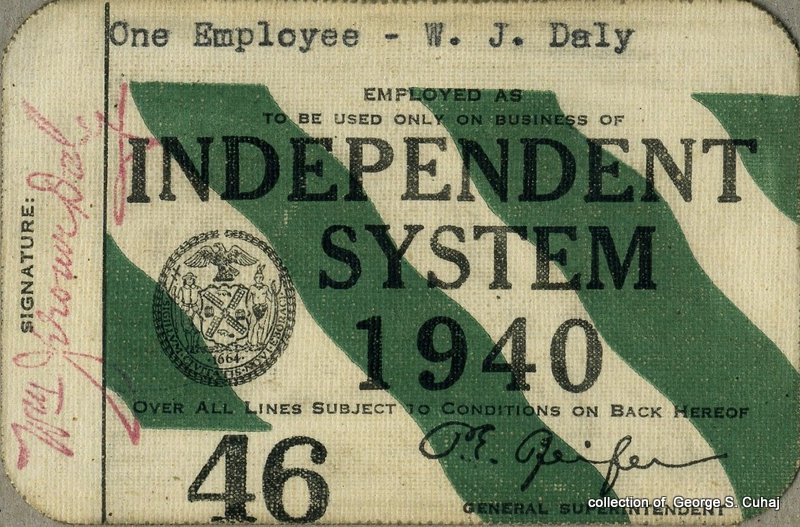 |
Horsedrawn Stage & Railways, Omnibus Lines, Surface Railways, Elevated Lines & Subways cable & trolley lines for: Brooklyn, Manhattan, Williamsburgh & Queensboro Bridges Employee Tickets & Passes |
|
Horsedrawn
Stage & Omnibus Lines Independent
Trolley & Bus Lines |
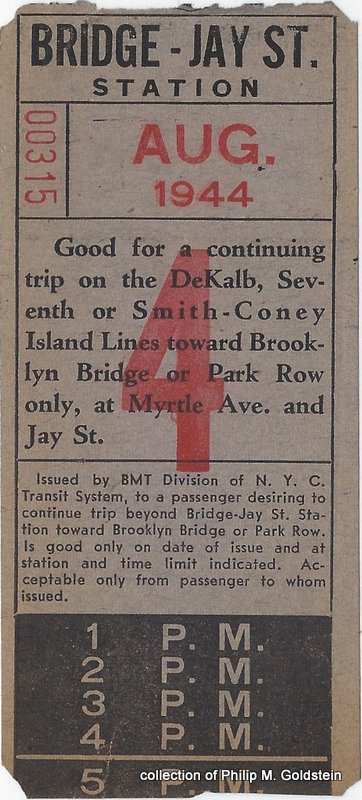 |
Internal & Interdivisional: Rapid Transit to Rapid Transit Rapid Transit to Surface Transit Surface Transit to Rapid Transit Combination Tickets: Rapid Transit to Surface Transit Surface Transit to Rapid Transit |
|||||||||||
| . | ||||||||||||||||
| Page
4: Continuing Ride Tickets
& Transfers for Streetcar / Trolley: all boroughs |
Page
5A: Continuing Ride Tickets
& Transfers for
Bus Routes: Brooklyn |
Page 5B: Continuing Ride
Tickets & Transfers for Bus Routes: Bronx, Manhattan, Queens, Richmond / Staten Island & Express |
||||||||||||||
| updated: 10/27/2025 | updated: 4/13/2025 | updated: 4/13/2025 | ||||||||||||||
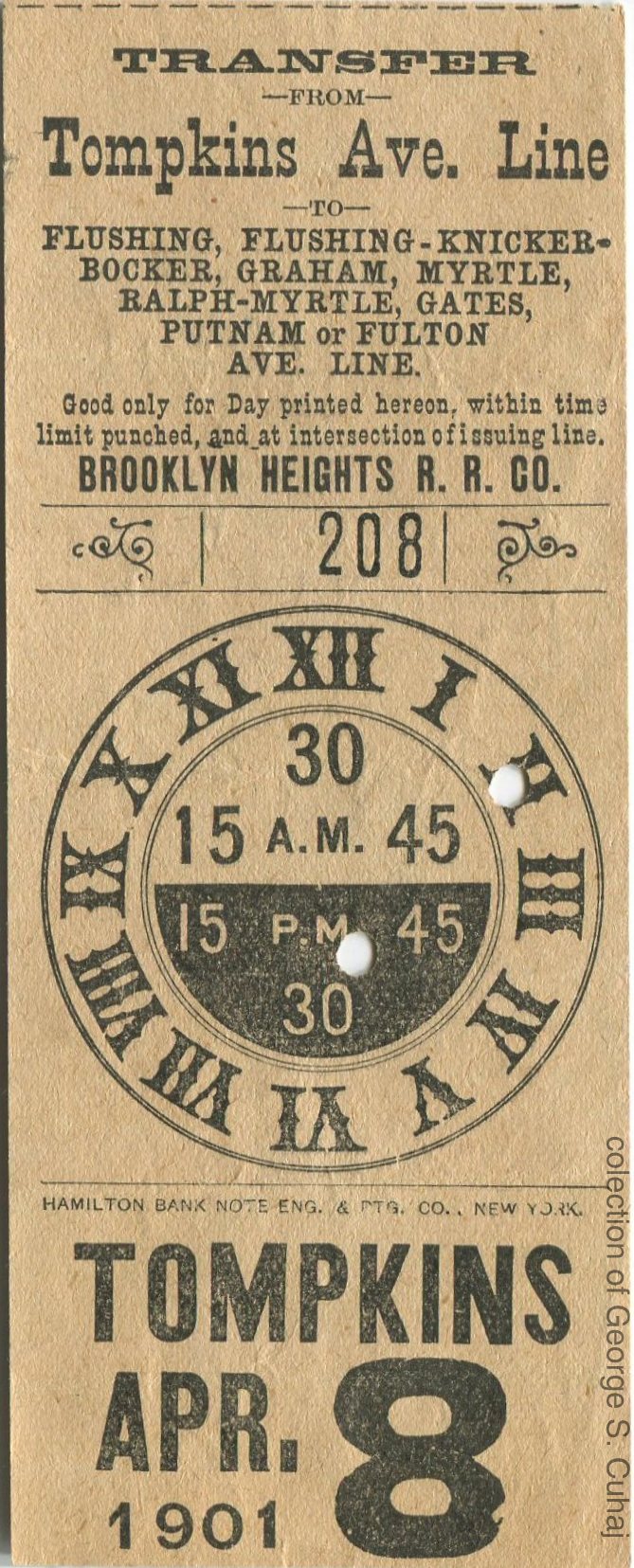 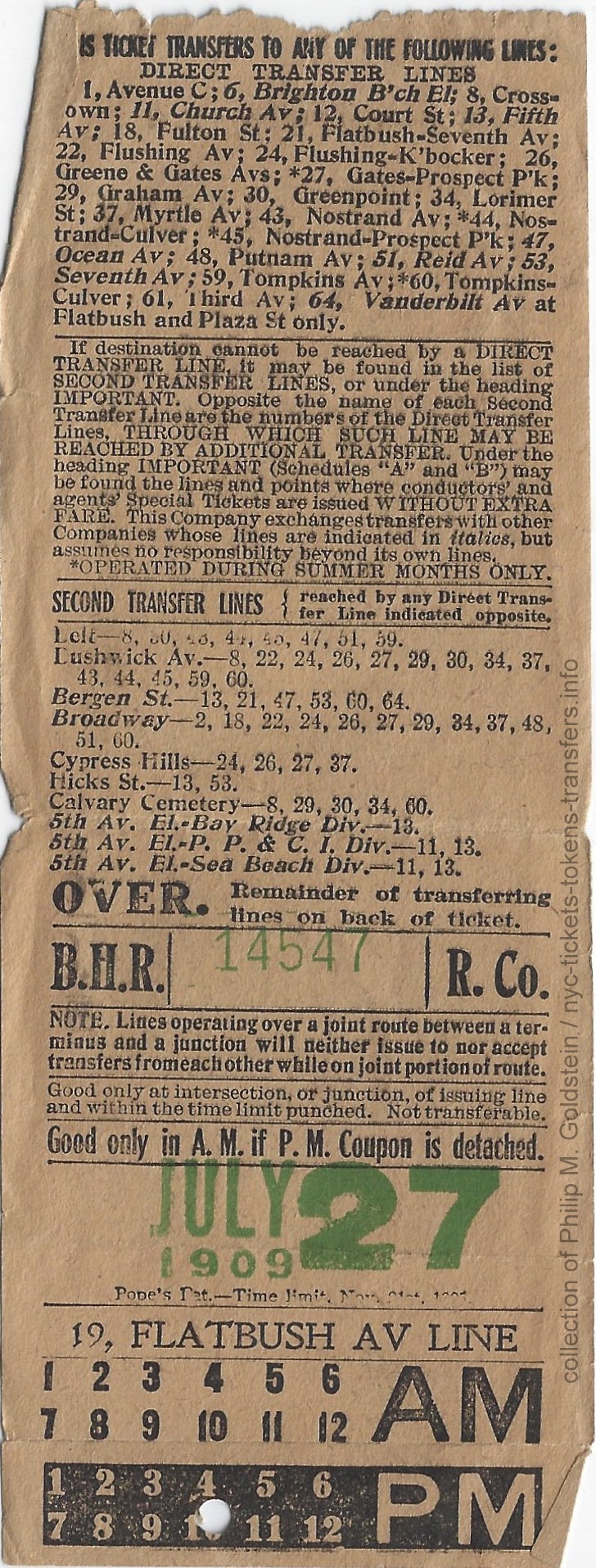 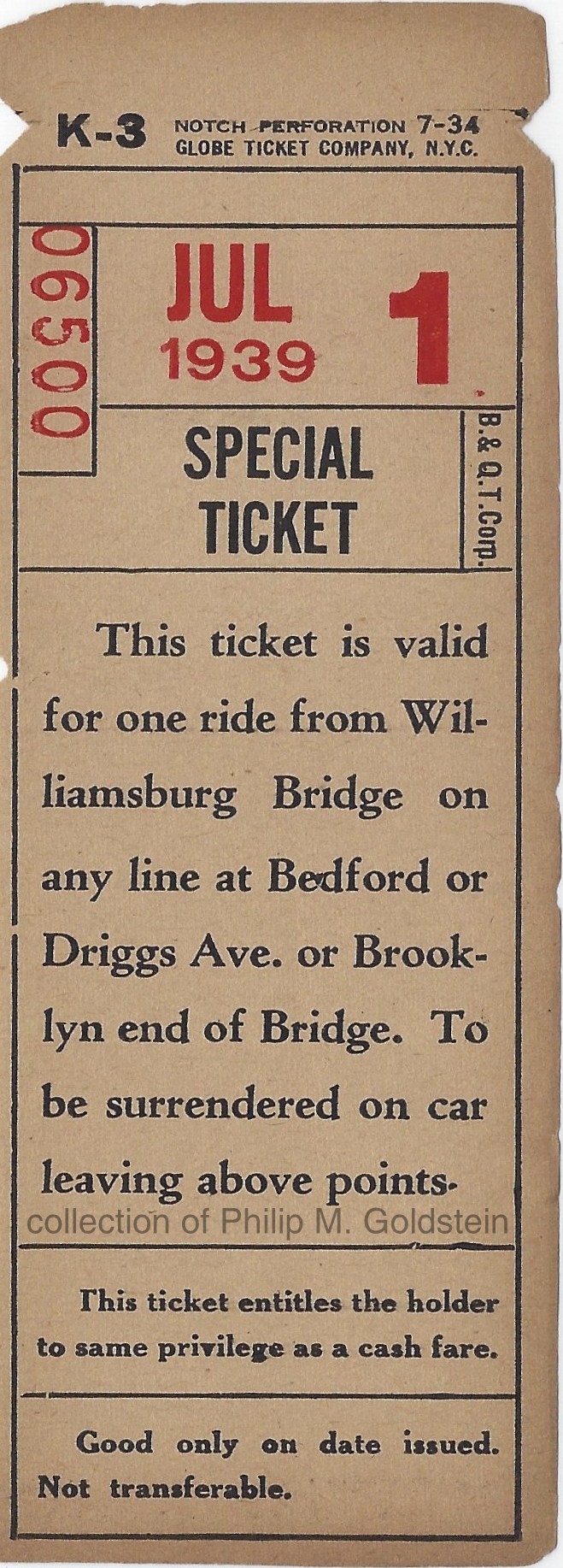  |
Brooklyn, Bronx,
Manhattan, Queens, and Richmond / Staten Island Stedman, Hamilton "Clock", Pope, Smith, Globe Ticket Patents Williamsburgh Bridge Local Continuing Ride Tickets and Transfers Zone Tickets |
Municipal and Private
Bus Lines Interdivisional Continuing Ride Transfers: Surface Transit to Rapid Transit |
. | Municipal and Private
Bus Lines Interdivisional Continuing Ride Transfers Surface Transit to Rapid Transit Zone Tickets |
||||||||||||
| . | ||||||||||||||||
| Page 6: Bus Routes: Add-A-Ride Tickets | Page 7: Subway / Elevated: Half Fare Tickets | Page 8: Subway / Elevated & Bus: Half Fare Tickets | ||||||||||||||
| updated: 4/5/2025 | updated: 6/1/2024 | updated: 4/9/2025 | ||||||||||||||
| Municipal
City of New
York Routes Private Bus Lines |
 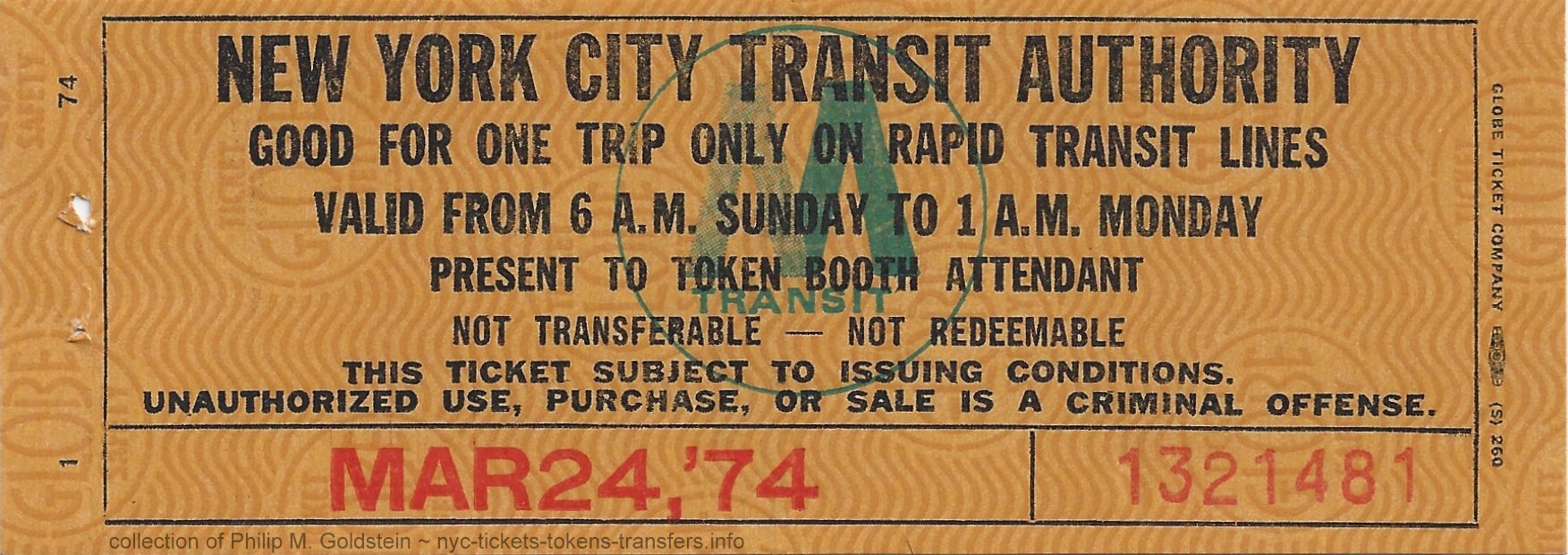 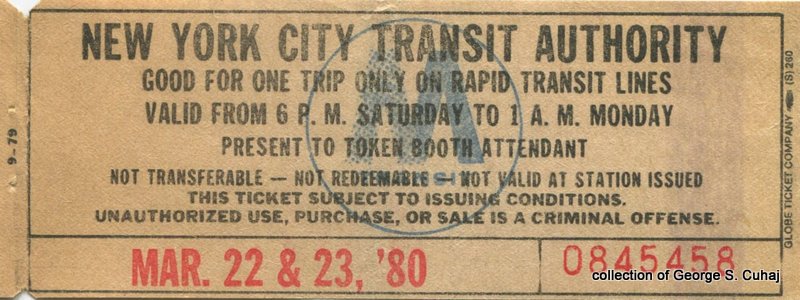 |
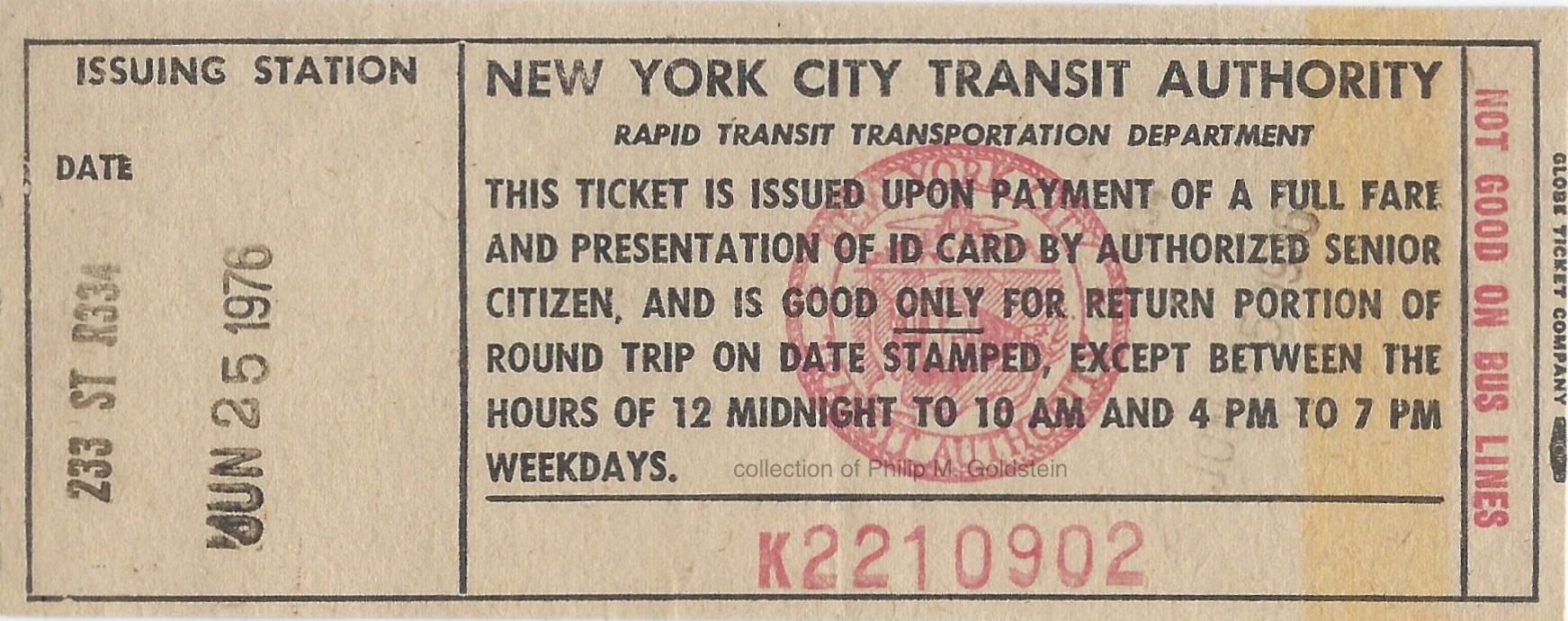  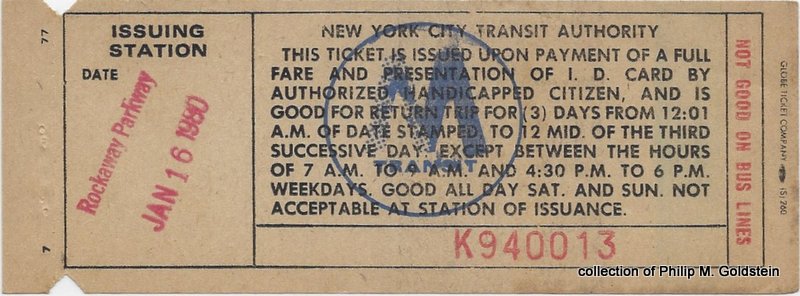  . |
||||||||||||||
| . | ||||||||||||||||
| Page 9: School Tickets & Passes | Page 10: Special Issue Tickets & Passes | Page 11: Staten Island Rapid Transit | ||||||||||||||
| updated: 10/27/2025 | updated: 7/2/2025 | updated: 3/18/2025 | ||||||||||||||
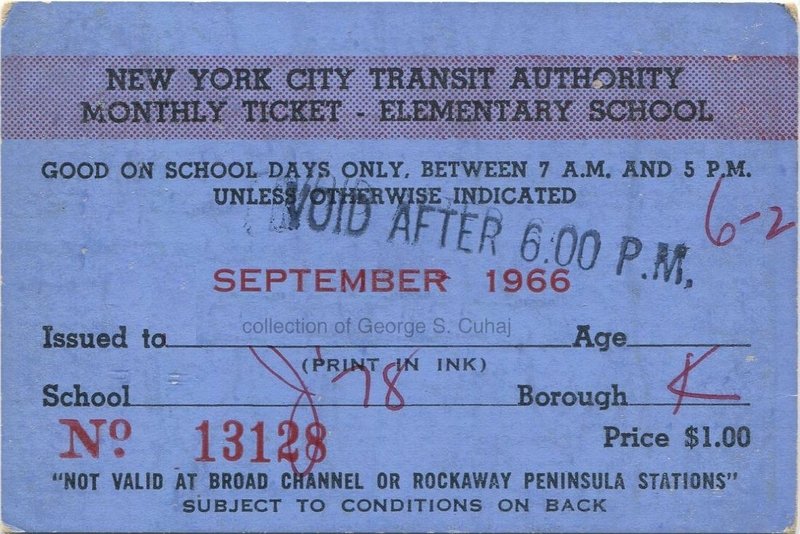 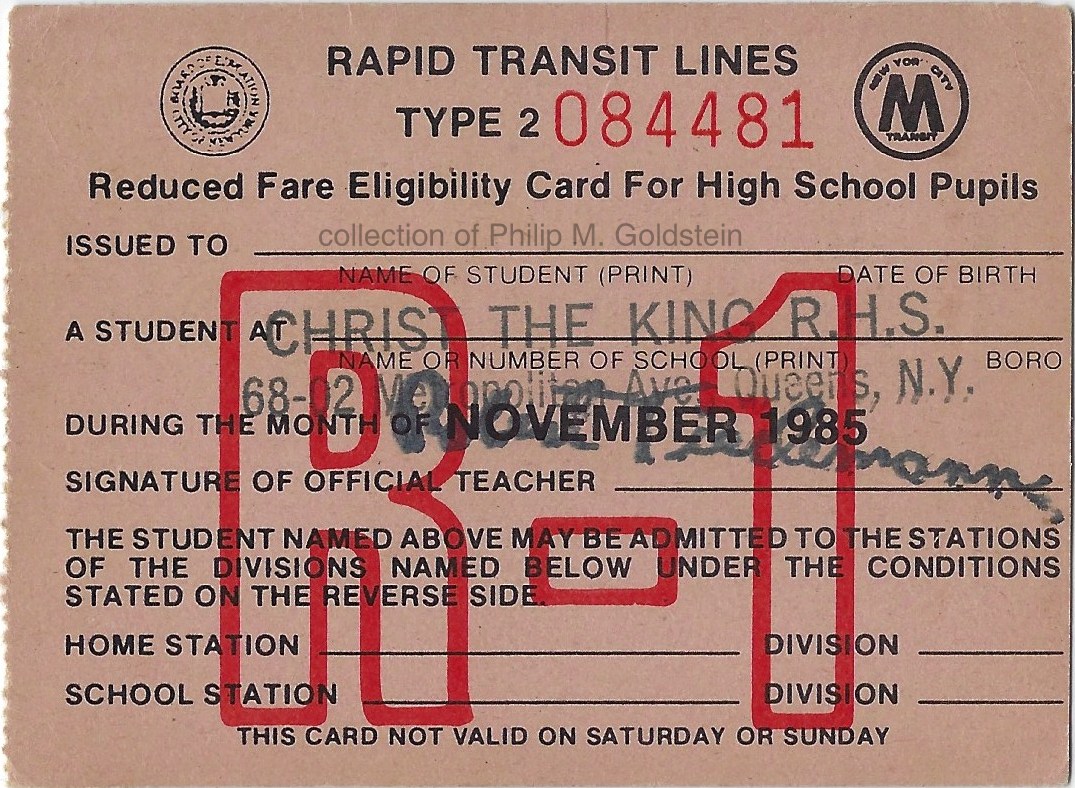 |
|
|
||||||||||||||
| . | ||||||||||||||||
| Page 12: Hudson and Manhattan RR & PATH | ||||||||||||||||
| updated: 4/11/2025 | ||||||||||||||||
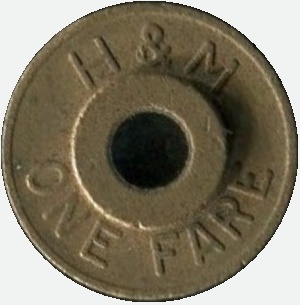 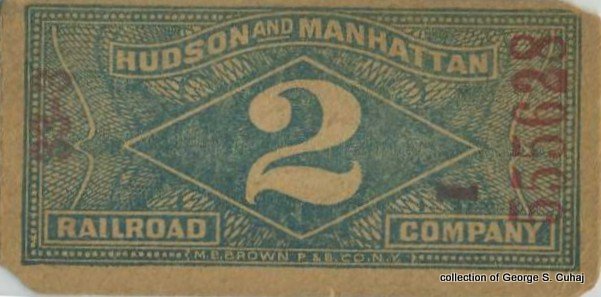 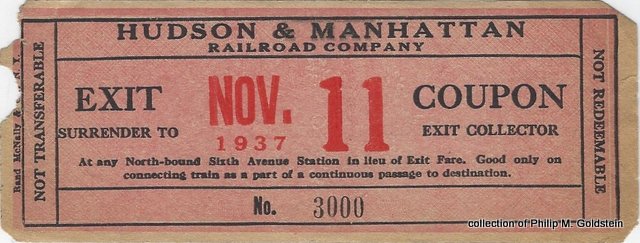 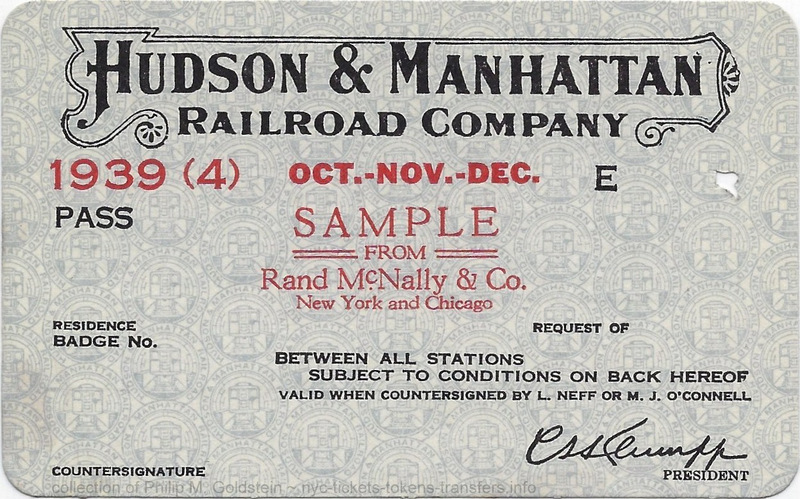 |
Tokens, Tickets & Passes | |||||||||||||||
|
|
||||
Pricing and the NYC Transit Ephemera Market: updated: 1/30/2024 |
Special Thanks updated: 1/30/2024 |
Collectors of NYC Area Transportation Exonumia & Ephemera: Facebook Group updated: 7/25/2021 |
||
| Website Dedication updated: 7/25/2021 |
About Your Authors updated: 7/25/2021 |
Bibliography
& References updated: 9/26/2022 |
||
![]()
Hello and Welcome!
You have found the most detailed and informative compilation of information regarding the fiscal issues and fare control (tickets, tokens, transfers, passes, zone checks, ticket choppers, turnstiles and fare boxes) of transit companies located in New York City. At the current time, we refrain from from digital / electronic methods of payment such as MetroCard and OMNY payment systems.
The history of public transportation in the City of New York has been very well documented in many books, blogs, government reports and newspaper articles, therefore it shall not be our intent to rehash the general history of the construction or operation of the subway. Also, there are many fine authoritative publications and websites that pertain to very specific topics such as: the railroad rolling stock (trolleys, elevated and subway cars) used throughout the decades; station design; sign development; tile color coding, artwork and frescoes; development of the transit maps; etcetera.
In stark contrast; very little had been published about the many fiscal issues – tickets and transfers – that were sold or issued to passengers. So, in recognition of "what was already out there" and what wasn't; this website shall focus on the fare aspects of these transportation companies.
For the early era of operations (1890's to 1953), it is all too commonly thought that passengers simply dropped a nickel into a turnstile and entered the system. But that is not exactly the case. In the very first days, long before turnstiles were invented; and before the subway was built and opened in 1904; there were tickets that needed to be purchased first and they cost ten cents not a nickel.
As we will see; there were many more facets to the fare payment process to access the New York City subway and surface systems, past and present; and unfortunately they have remained mostly overlooked until now. So, in this website, we will endeavor to not only refer to the subways and elevateds, but surface transportation methods as well; from the earliest horse-drawn stages and omnibuses, as well as electric trolleys, streetcars to internal combustion powered buses.
Also, many casual New York City Transit history buffs are aware of the original 5 cent "nickel" fare and are under the belief it was universal throughout the city and on all modes of the system. What has been published almost always pertains to the subways and elevated fare, but streetcar and bus fares are hardly mentioned and transfer privileges, if at all; and less so of the private bus franchises.
For the later era of operations (1953 to present), while many people remember the tokens, quite a bit of misinformation abounds regarding some issues; such as which token was the first, when designs were issued (not always in conjunction with a fare raise), etc. In addition to which, there were several special fares for extra services offered both on subway service as well as on surface routes throughout the years.
Furthermore, there are misconceptions and misinformation regarding other fare related items as well. Quite a few of the items on these pages are well recognized (tokens, later bus transfers, school passes) but unfortunately, either urban myth, or revisionist history via blogs and "click bait" web-traffic generator channels have unfortunately twisted some of the facts. On the lesser known items shown, a lot of people simply were not aware of their existence; whether those items were used in the 1800's and had been forgotten over time; or later day issues so limited in their use, i.e.: to a particular neighborhood or short duration of usage.
Equally as unfortunate and in this day and age of social media, this misinformation gets copied, pasted and shared with no regard to its actual veracity. Fallacies and falsehoods are accepted as fact, which is the bane of established historians everywhere. Accuracy and precision make for good historians - not egregious exaggeration and embellishment.
We are not here to pass judgment or criticize those who have made their errors in an innocent way, but our goal is to make sure the misinformation is amended and the correct information made readily available to the general public - at least to those willing to check and accept the veracity of said posted information.
Sadly, even the Transit Museum social media website has been observed lately to post inaccurate information. So much so to the point I have felt the need to create a new chapter to address the matter and to point out corrections in one location. It is hoped that this research and this website will set the record straight and correct those misconceptions and inaccuracies.
Some of these examples of erroneous or overlooked information are:
Furthermore, this website is offered as a collaborative effort between George Cuhaj and Philip Goldstein. We know it is not complete but consider it a starting point for documenting fiscal issues of the land transportation services offered in NYC. It is a companion website to Goldstein’s other "New York Centric" transportation related websites.
It is emphasized and not expected that this catalog will never be truly "finished" or "complete". There will always be "one more thing" we have not seen and needs to be added; so please bookmark this website and feel free to check back often. Page revision dates are listed either under the chapter link in the index above. It is our intention, to have this catalog become a usable reference and price guide for the active collector (more about this in another chapter below).In developing this website catalog, there four different eras of use regarding transit operations in the City of New York:
| pre-First Unification | many private companies, surface and rapid transit | 1820's through 1940 |
| First Unification | Board of Transportation - The New York City Transit System | 1940 through July 1953 |
| Second Unification | New York City Transit Authority | July 1953 to February 2006 |
| Third Unification | Private Bus Lines absorbed by MTA - NYCT | February 2006 to present |
Please note: The coverage of this website currently stops at the point in time in which the MetroCard system replaced most of these printed fiscal issues.
| YES! Contributions are welcome! |
If you don't see it on one of the pages of this compilation, we want to know about it!
If you wish to offer an item (or items) for inclusion, you are invited to email us using the contact information at the end of this introduction. Whether you have one piece or many, a ticket, token, transfer or pass or any other fiscal item that you do not see already on any of the pages in this website, you are cordially invited to share them here.
Your submission(s) will be watermarked with your name and your name listed in the special thanks chapter below.
Please feel free to contact me regarding errors, broken links, missing images, corrections, or for any other reason at:
 |
brghtnbchexp@aol.com |
![]()
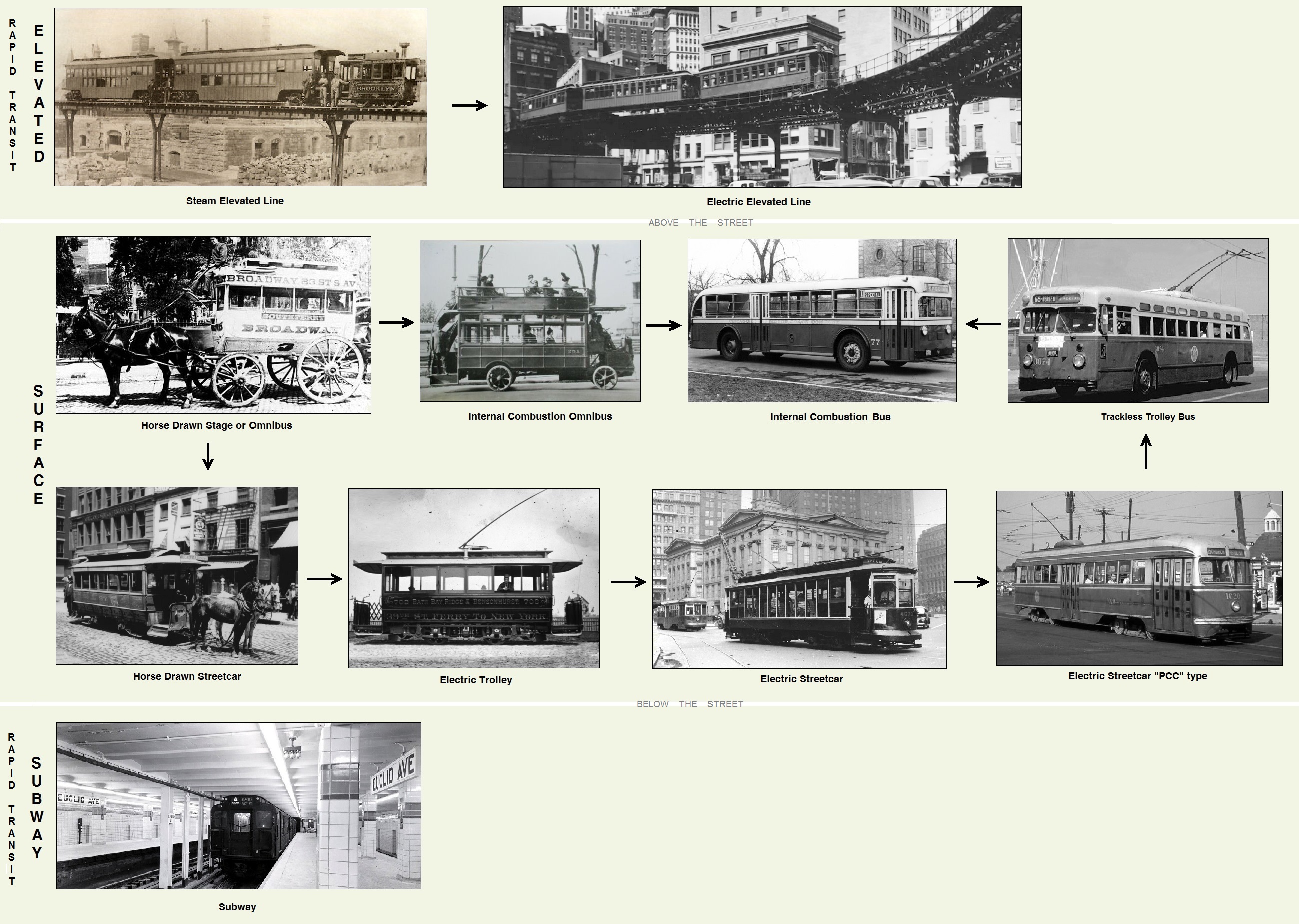
![]()
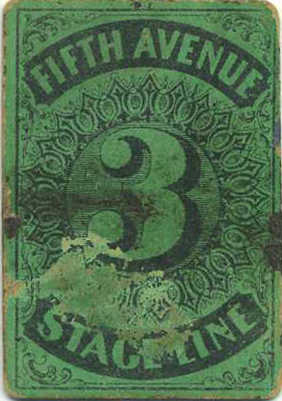
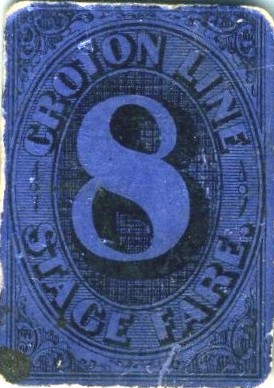
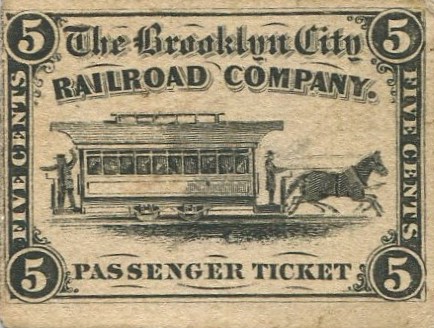

| operator | start | route | end | fare |
| Sudlow & Siney | NE end of Avenue C | to Houston Street, to Bowery, to Chatham Street, to Broadway and Whitehall Street, to | South Ferry | 4¢ |
| Charles Curtiss & Co | Grand Street Ferry | through Grand Street, to Broadway to Canal Street, to Greenwich Street, to Cortlandt Street, to | Jersey City Ferry | 6¢ |
| Knickerbocker Stage | West 23rd Street | down Eighth Avenue to Bleecker Street, to Broadway, to Whitehall Street, | South Ferry | 3¢ cents on Avenue 5¢ any other |
| C. Lent | East 27th Street | through Avenue A, to Essex Street, to Division Street, to Chatham Street, to Broadway, to Fulton Street, to Washington Street, to | Cortlandt St Ferry | 5¢ |
| J. T. Mills | East 42nd St and Third Ave | to Bowery, to Pearl Street, to Peck Slip, to | Fulton Ferry | 3¢ |
| Mackrell & Simpson | Tenth Avenue and Avenue C | to Avenue D, to Lewis and Grand Streets, to East Broadway, to Chatham Street, to Broadway, to Whitehall Street, to | South Ferry | 4¢ |
| New York Consolidated Stage | West 36 St and Seventh Avenue | down Seventh Avenue and Greenwich Avenue, to Amity Street, to Broadway, to Fulton Street, to | Fulton Ferry | 6¢ |
| " " " " " " " " | West 42 Street and Broadway | Broadway to Whitehall Street, to | South Ferry | 6¢ |
| " " " " " " " " | East 32nd Street and Fourth Avenue |
down fourth Ave, to Broadway & Whitehall Street, to | South Ferry | 6¢ |
| " " " " " " " " | foot of Tenth Avenue | through Tenth Avenue, to Avenue A, to Eighth Avenue, to Broadway, to Whitehall Street, to | South Ferry | 6¢ |
| " " " " " " " " | Broadway and West 39th Street | down Broadway, to Wall Street, to | Wall Street Ferry | 6¢ |
| " " " " " " " " | Hudson River RR Depot | through West 31 Street or neighboring streets, to and through Ninth Avenue, to West 14th Street, to Broadway, to Whitehall Street, to | South Ferry | 6¢ |
| Joseph Churchill | West 32 Street and Broadway | up Bloomingdale Road, to Manhattanville and Tenth Avenue, to | High Bridge | 25¢ |
| S. M. & S. W. Andrews & McDonald | West 42 Street and Fifth Avenue |
through Fifth Avenue and Broadway, to Fulton Street, to | Fulton Ferry | 6¢ |
| D. L. Youngs | NE corner of Avenue C and Tenth Ave |
through Tenth Avenue, to Avenue D, Columbia Street, Bowery, Chatham Street, Park Row, Broadway & Whitehall Street, to | South Ferry | 4¢ |
| Siney, McLelland & Pullis | West 34 Street and Ninth Avenue |
down Ninth Avenue to West 23rd Street, to Broadway and Whitehall Street, to | South Ferry | 6¢ |
| Marshalls & Perry | West 46th Street and Sixth Avenue |
down Sixth Avenue, to Ninth Avenue, to Broadway & Whitehall Street, to | South Ferry | 3¢ (from 42 to Eighth Av) 3¢ (from 42 to Sixth Av) |
| " " " " " " " " | West 46th Street and Sixth Avenue |
through Sixth Avenue to Eighth Avenue, to Broadway & Whitehall Street, to | South Ferry | 6¢ |
| F. Conselyea | Tenth Avenue and West 32nd Street |
down Tenth Avenue, to West 14th Street, to Ninth Avenue, to Hudson Street, to Spring Street, to Broadway, to Broome Street, to Bowery, to Catherine Street, to South Street, to |
Fulton Ferry | 6¢ |
| Johnson & Company | Williamsburgh Ferry and Grand Street |
through Grand Street, to Cannon Street, to Second Avenue, to Avenue C, to East 14th Street, to Third Ave, to East 26th St, to Broadway, to East 32nd St, to |
Hudson River RR Depot | 6¢ |
| O'Keefe & Duryea | Houston Street Ferry | through Houston Street, to Second Avenue, to Bleecker Street, to Broadway, to | Cortlandt Street Ferry | 6¢ |
| Murphy & Smith | Fourth Avenue and East 40th Street |
up East 40th Street, to Madison Ave, to East 23rd St, to Broadway, to John Street, to Nassau Street, to Wall Street, to | Ferry | 6¢ |
Broadway & Fifth Avenue Line
Broadway, Twenty-Third Street & Ninth Avenue
Broadway & Fourth Avenue Line
Broadway & Eighth Street Line
Second Street & Broadway Line
Madison Avenue Line
![]()
|
We see as a result of this article, the method of ticket
collection was changed from conductors taking up tickets aboard the
train, which was abolished on January 20, 1879. The reason for this was, at times of large crowds - especially during rush hours; the conductor may not have gotten to taking your ticket before you disembarked at your station; allowing you to ride for free and using your ticket on another date. So, the collection of tickets now required passengers to deposit their tickets into ticket boxes upon exiting the train at the exit gates. With this method, it also caused congestion when trains discharged the passengers in one short time span. And so, on June 21, 1880; the method of ticket collection would change yet again. Passengers now had to deposit their tickets into chopper boxes prior to boarding the trains; and it is this method of ticket collection that would gain widespread use for other rapid transit companies in the Cities of New York, the Bronx, Brooklyn and Queens as well. This method worked the best, considering people arriving to purchase their tickets and hand them to the gateman were for the most part spread out over time. Granted, you can still get a crush of people, but the groups were smaller than on discharge of a train arriving in a station. Only on November 1, 1886; would the elevated fare would be reduced to 5 cents "around the clock" and to match other lines, and it is on this date in 1886 - not 1904 with the opening of the IRT subway - that rapid transit operations in New York City first saw the full time "nickel fare". These later era tickets are categorized on the following page: |
.
 .
. .
.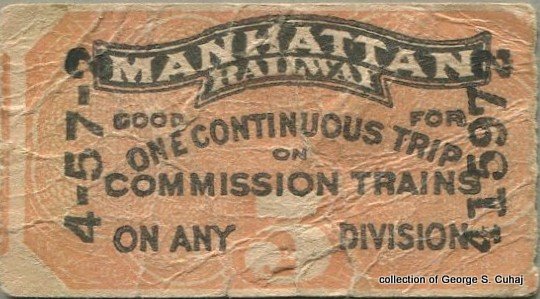 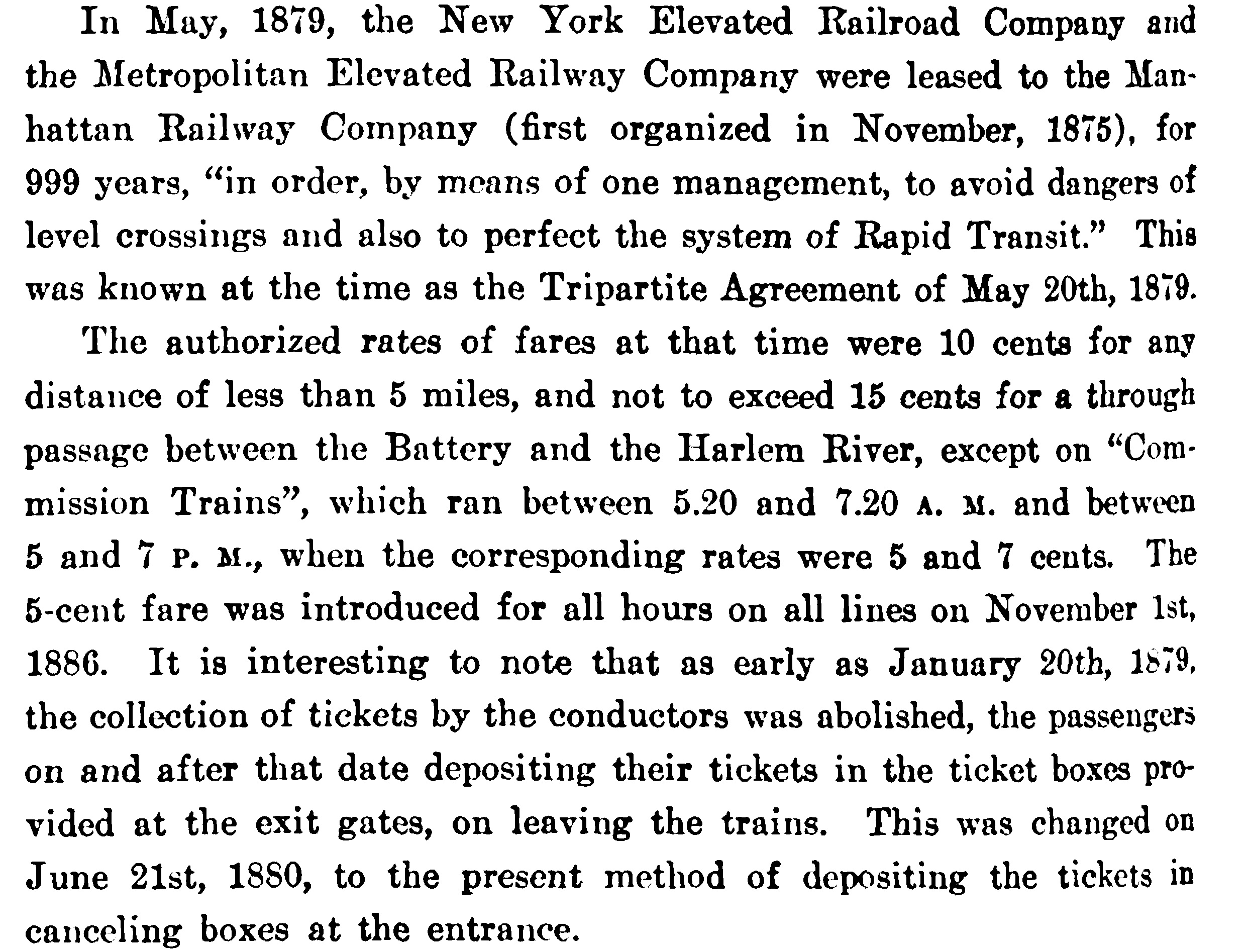
Proceedings of the
American
Society of Civil Engineers, August 1917
|
![]()
|
|
|
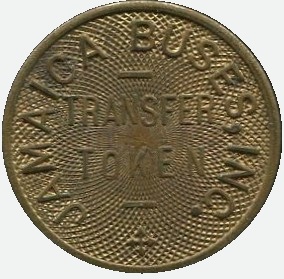 |
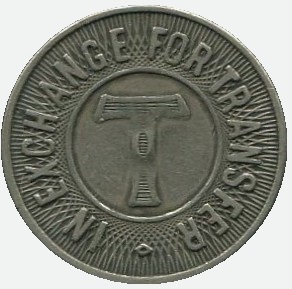 |
|
|
While most consider the NYCTA "dime sized" Y token of
1953 to be the "first" tokens for transit, they were
not. The "Y" tokens may have been the first tokens issued for use by the NYCTA, but:
Many companies prior to the existence of the NYCTA issued tokens to be used as both transfer checks, and for initial fare payment. It is a matter of semantics. The Board of Transportation (the predecessor to the Transit Authority) issued tokens for use by passengers to account for the collection of transfers on a streetcar or bus; prior to the 1953 tokens of the NYCTA; and tokens were used dating back to the early 1830's, were used in this fashion by the individual traction / transit companies. It is these tokens that are all too often overlooked. And these early issues were manually issued and collected by stage drivers or conductors. |
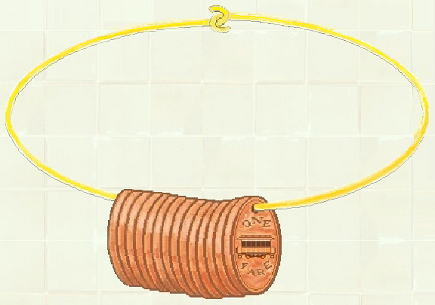 |
Page 2 - Early Tokens - 1827 - 1940
Page 2 - First Unification: Board of Transportation / NYCTS - City Wide Issues - 1940 - 1953
![]()
|
Some transportation companies opted to use tokens not as a
reusable transfer device; but as a primary admission method
via an automatic turnstile. When first introduced, it was known as an
"automatic passimeter". Manually operated passimeters, actuated by the clerk; pre-existed the automatic type. These manually operated passimeters will be discussed a little later. The automatic passimeter became better known as the turnstile. US Government / Mint issued coins, and later on tokens that were accepted in turnstile applications; were always of metal composition. We will explain why, a tad later in this chapter. The first mechanical turnstile for the New York City subways and elevateds was not deployed until May 1921, and after being filed for a patent that same year, by Mssrs. Frank S. Hedley of Yonkers and James S. Doyle of Mount Vernon, NY. This first turnstile would be installed at the 51st Street Station on the Lexington Avenue Line. If these names happen to sound vaguely familiar, perhaps that is because Frank S. Hedley was the President and General Manager, and James S. Doyle was Superintendent for the Mechanical Department, of the Interborough Rapid Transit Company. Side note: it should be recognized that there were other patents issued for other designs of coin operated turnstiles prior to this one; but as this is the type installed in the subways, therefore it is this model we will be focused upon. |
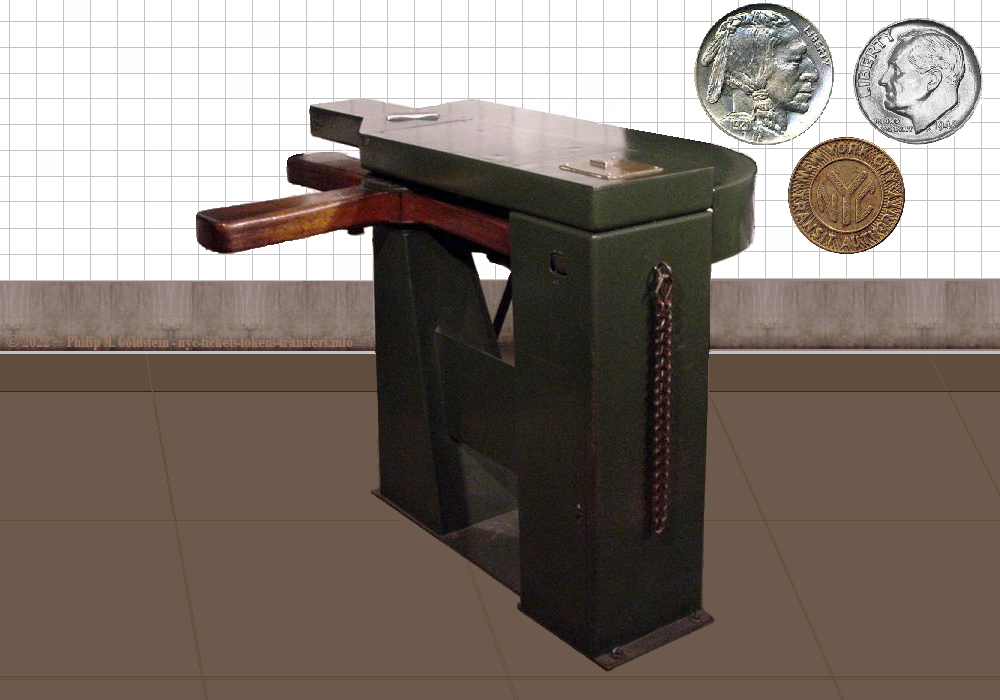 |

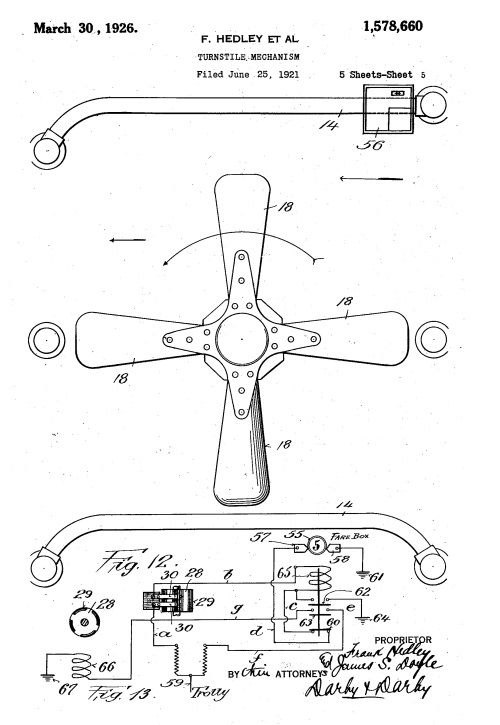 The complete Patent Filing above can be viewed here: Turnstile Patent 1921 US1578660.pdf |
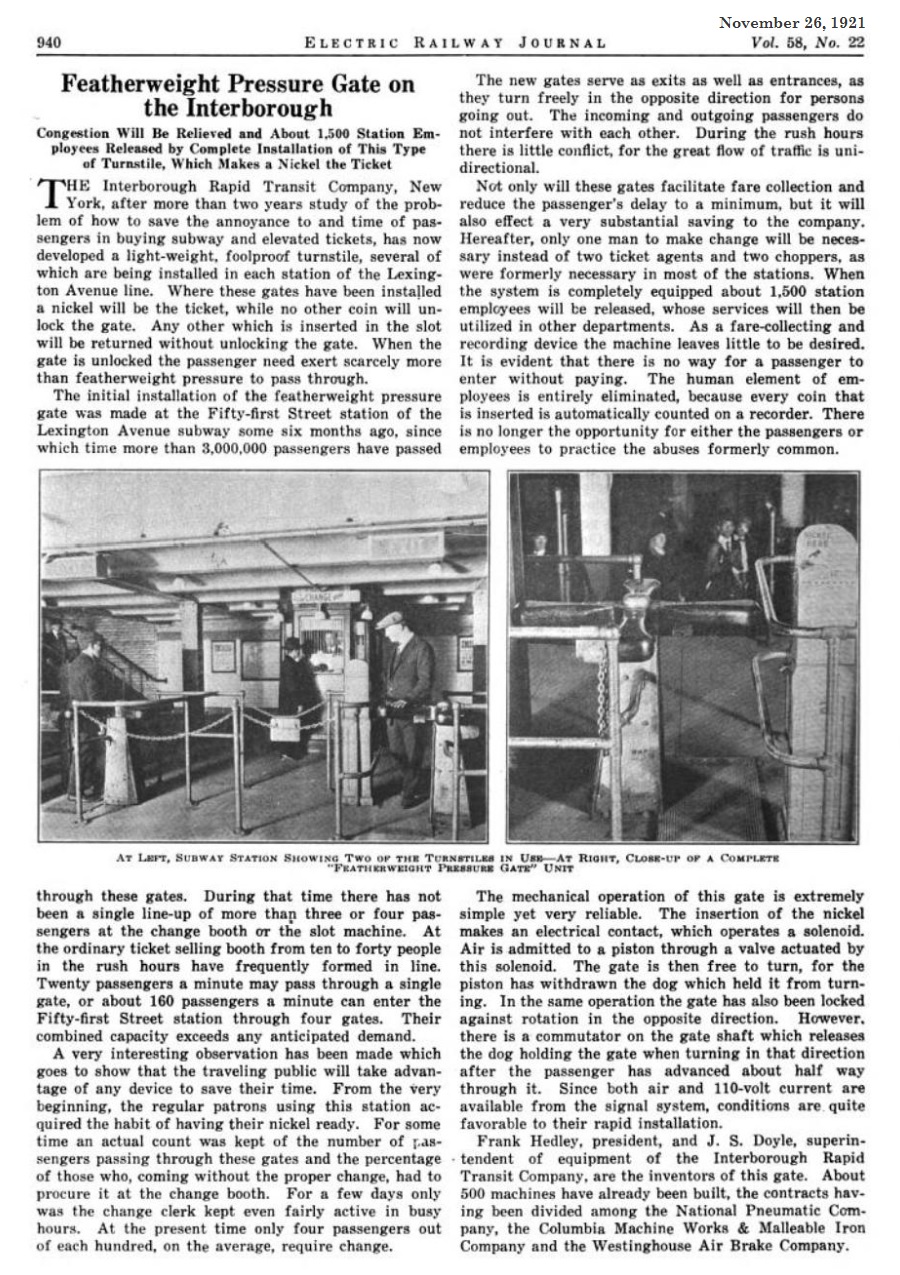 Electric Railway Journal - November 26, 1921 |
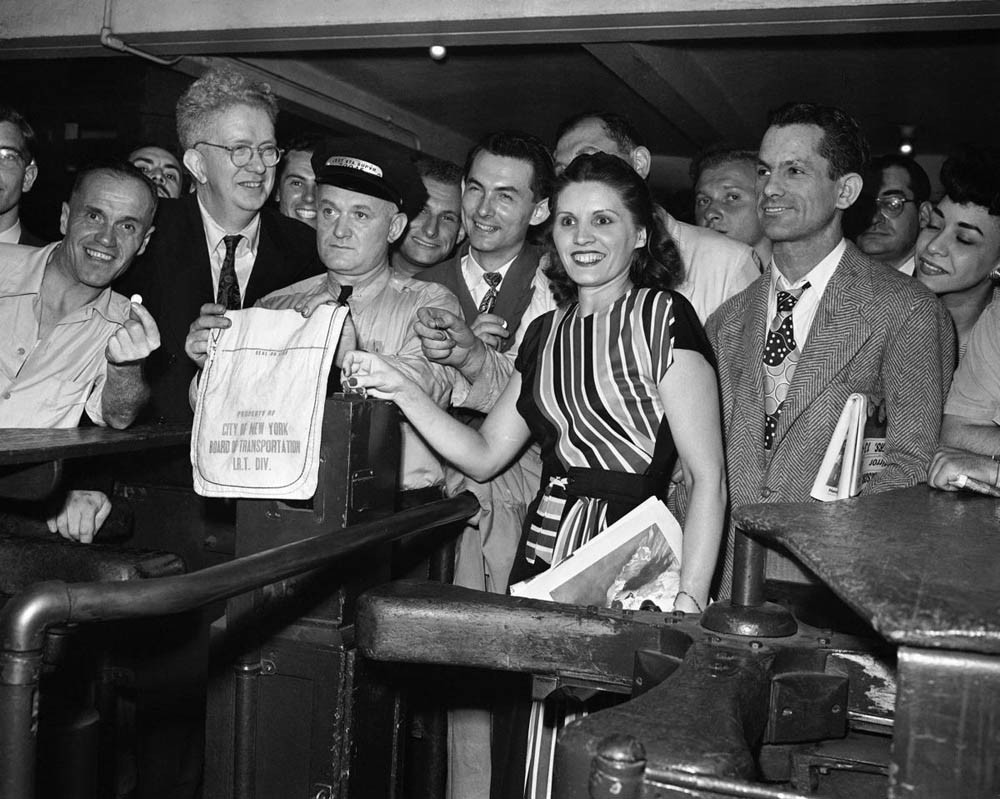 |
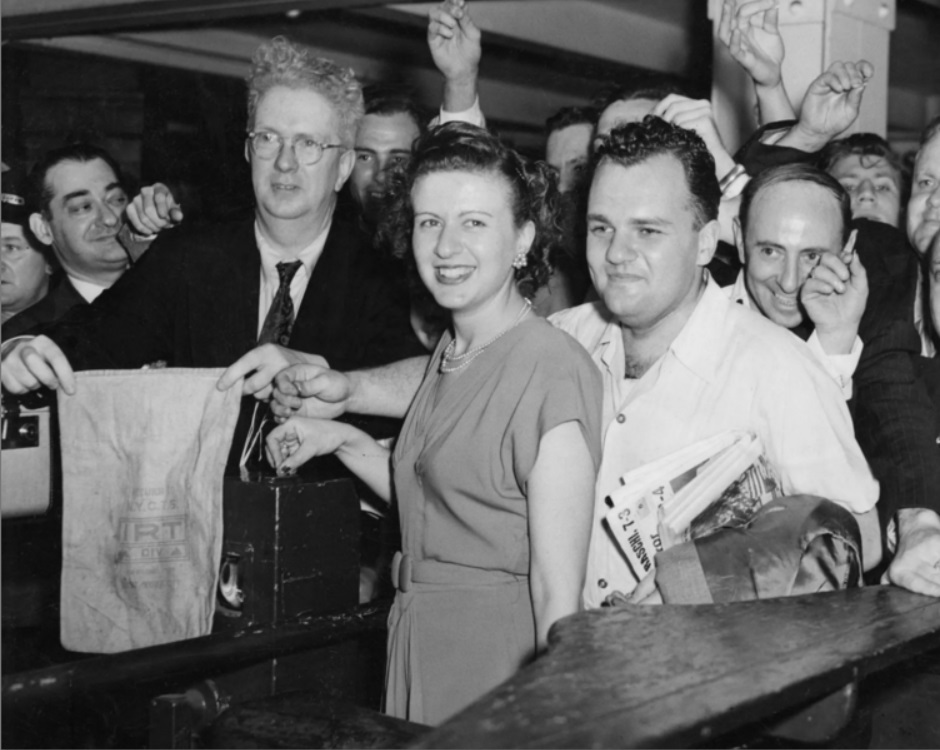 |
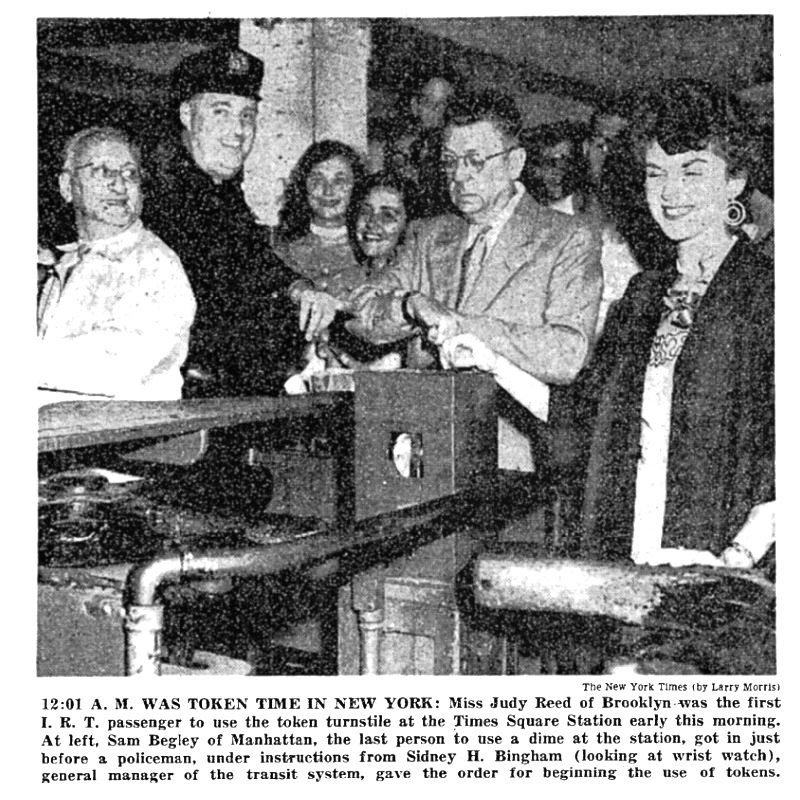 |
|
Last nickel: Ms. Carmen
Gherdol - June 30, 1948 - 11:59 pm
Assistant Supervisor Bartholomew Barry holds the canvas coin bag that will cover the coin drop. IRT Times Square Station image courtesy of the New York Times Digital Archives |
First dime: Ms. Esther
Pollack - July 1, 1948 - 12:00 am IRT Times Square Station image courtesy of the New York Times Digital Archives |
First 15 cent token: Ms.
Judy Reed - July 25, 1953
IRT Times Square Station image courtesy of the New York Times Digital Archives |

![]()
The 15 Cent Fare: Why a token and not coins?
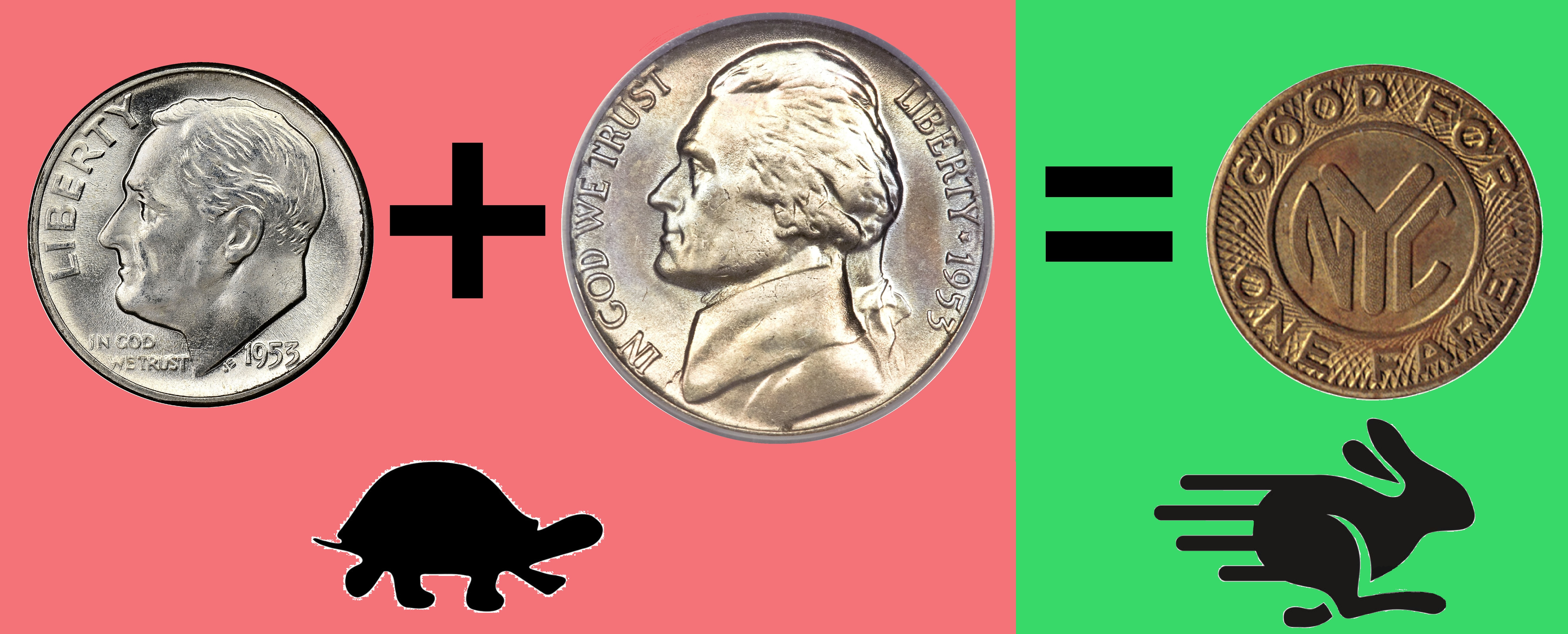
| date | fare amount | maximum coinage | minimum coinage |
||||
| 1904 | 5¢ | 1 nickel | |||||
| 1948 | 10¢ | 2 nickels | 1 dime | ||||
| Had tokens not been introduced, the following coins would have been required: | |||||||
| 1953 | 15¢1 | 3 nickels | or 1 dime and 1 nickel | ||||
| 1959 | 50¢2 | n/a | n/a | n/a | 1 half dollar2 | ||
| 1966 | 20¢1 | 4 nickels | or 2 dimes | ||||
| 25¢ | 5 nickels | or 2 dimes and 1 nickel | or 1 quarter | Please note: the NYCTA never collected a 25¢ cent fare - it went from 20¢ to 30¢. | |||
| 1970 | 30¢1 | 6 nickels | or 3 dimes | or 1 quarter and 1 nickel | |||
| 1972 | 35¢1 | 7 nickels | or 3 dimes and 1 nickel | or 1 quarter and 1 dime | |||
| 1975 | 50¢ | 10 nickels | or 5 dimes | or 2 quarters | or 1 half dollar3 | ||
| 1980 | 60¢ | 12 nickels | or 6 dimes | or 2 quarters and 1 dime | or 1 half dollar and 1 dime | or 1 half dollar and 2 nickels | |
| 1981 | 75¢ | 15 nickels | or 7 dimes and 1 nickel | or 3 quarters | or 1 half dollar and 1 quarter | or 1 half dollar and 2 dimes and 1 nickel | or 1 half dollar and 3 nickels |
| 1984 | 90¢ | 18 nickels | or 9 dimes | or 3 quarters and 1 dime and 1 nickel | or 1 half dollar and 4 dimes | or 1 half dollar and 8 nickels | |
| 1986 | $1.00 | 20 nickels | or 10 dimes | or 4 quarters | or 2 half dollars | or 1 half dollar and 2 quarters | or 1 dollar coin |
| 1990 | $1.15 | 23 nickels | or 11 dimes and 1 nickel | or 4 quarters, 1 dime and 1 nickel | or 2 half dollars, 1 dime and 1 nickel | or 1 dollar coin and 3 nickels | or 1 dollar coin, 1 dime and 1 nickel |
| 1992 | $1.25 | 25 nickels | or 12 dimes and 1 nickel | or 5 quarters | or 2 half dollar coins and 1 quarter | or 1 dollar coin and 5 nickels | or 1 dollar coin and 1 quarter, |
| 1995 | $1.50 | 30 nickels | or 15 dimes | or 6 quarters | or 3 half dollars | or 1 dollar coin and 5 dimes or 10 nickels | or 1 dollar coin and 2 quarters |
1 = Upon its opening in 1956, the IND Rockaway Line south of Howard Beach was a double fare zone. Therefore, double the fare amount and coins shown. This double fare was not abolished until 1975. 2 = In 1959, specially equipped turnstiles accepted half dollars only for the Aqueduct Racetrack Special Train. Patrons of the Aqueduct Special either brought their own half dollars or obtained them from a clerk at the two stations where the Aqueduct Special departed from: 42nd Street & Port Authority Bus Terminal or Hoyt / Schermerhorn Streets 3 = As far as is known, the NYCTA did not accept half dollars in bus fare boxes. Only token dispensers and token booths accepted them for payment (with reluctance). |
|||||||
.
.
|
The second factor to be considered, and yet which is hardly (if at all)
discussed in regards to transit payment systems, is the speed of payment. Here, were are not discussing the time it takes to go to the clerk and get nickels, dimes or tokens for the turnstiles, but the time it takes to deposit the coin or token into, and proceed through the turnstile. In a usage application where speed is not of the essence, such as vending; obviously speed is not crucial. But when in regards to high speed - high volume usage such as those of rapid transit transportation, especially in large stations or terminals; and / or at peak times, any delay in paying at the turnstiles hindered the flow of pedestrian traffic. |
 |
||||||||||||||||||||||||||||||||||||||||||||||||||||||||||||||||||||||||||||||||||||||||
It should be noted, that in reference to the New York City Transit System; that the periods of time that are considered weekday "rush hours" have grown steadily over the last 145 years of rapid transit ridership:
Not only has the amount of the workforce commuting to a more centralized area in Manhattan resulted in increasing transit users, but there has been a trending shortening of the work day 10 am to 4 pm, which has altered the periods of rush hours. Thus, during these periods of "rush hours", any delay in depositing the coin or token by a single passenger at the turnstile had an consequential effect on following passengers. |
|||||||||||||||||||||||||||||||||||||||||||||||||||||||||||||||||||||||||||||||||||||||||
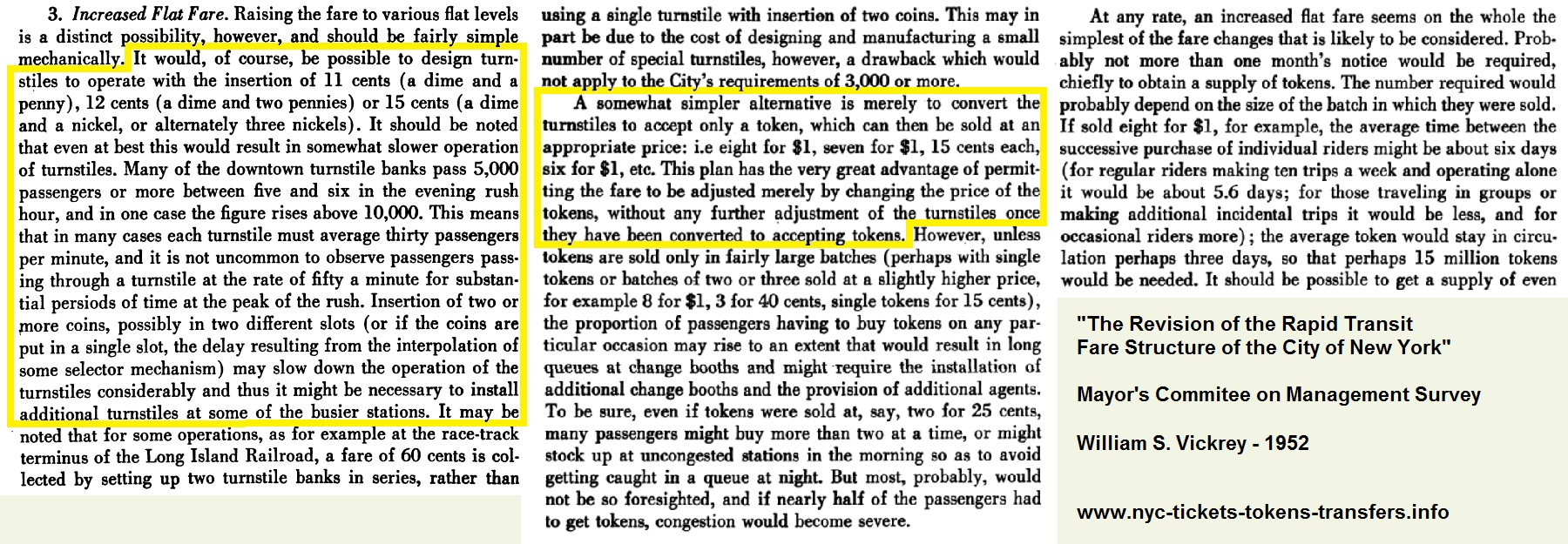 |
 |
| "The Revision of the Rapid Transit Fare
Structure of the City of New York" - Mayor's Committee of Management Survey William S. Vickrey - 1952 |
"Fare Policy and Structure"; DOT Project Report UMTA 78-84; Habib, Linzer, Jones, Nason, Ablamsky, 1984 |
From these documents, we can extrapolate that during rush hour, a single turnstile can see one actuation every two seconds (or 30 people per minute / 1800 people per hour.) As most large stations and terminals have at least 3 to 4 turnstiles or even more, this gets us to the figure of 5400 to 7200 persons per hour (turnstile actuations), per station. Also as stated, the turnstile actuation rate has even been recorded as high as 50 passengers through a single turnstile per minute, or 1.2 seconds per actuation; and a remarkable testament to the reliability of the mechanisms, and the simplicity in payment which permit this traffic.
By contrast, the WMATA (Washington DC Metropolitan Area Transit Authority) utilized turnstiles that accepted multiple coins, due to a zone / distance based fare system. These turnstiles, while they saw nowhere near the same level of traffic as the New York City system due to both a smaller population and smaller transit system,encountered a significantly slower rate of payment as well as increased actuation failure rate.
.
The principal of K.I.S.S. and we're not talking about the rock band! ![]()
In payment of a fare, inserting a single object into a single slot, was the epitome
of
the acronym: K.I.S.S. "Keep It Simple Stupid."
The K.I.S.S. principal, suggests that most systems and designs work best when they are kept simple, rather than made overly complicated. This means a focus on clarity and ease of understanding over clever, sophisticated solutions or multiple choice decision making.
It had been discovered through multiple generalized studies regarding time, motion and efficiency; beginning with Frank B. Gilbreth in 1912; and more specifically in regards to fare payment, that when it came to users (payors, passengers, etc) of mass transit, having to deposit a coin or token to enter through a turnstile, the use of multiple coins significantly increased the time required to go through said turnstile. In other words multiple coins "slowed down the works."
In a multiple coin slot system, the user in having to place the correct coinage in the correct slot requires a thought process: "place the dime in the small slot, the nickel in the big slot."
With
the single coin or token, it became more of a second nature - a pre-programmed
mental conditioning: insert nickel/dime/token, push. Even for non-commuters, i.e. the tourist; it was simple.
| Studies showed multiple coins slowed down the
process of passengers paying and transiting through the
turnstile. Ironically this very problem and the research behind this issue appears to even been forgotten (or taken a back seat to convenience) and would be encountered once again in 1978. This was when the New York City Transit Authority attempted to implement turnstiles that accepted coins and / or tokens for convenience with the Duncan Industries Model TC "Token - Coin"; which accepted two quarters or a token for the 50 cent fare. The issue encountered with these turnstiles was determined to be that many payors kept placing the wrong object in the wrong slot; re: placing the token in the quarter slot. |
 |
Furthermore, persons handling more than one coin, especially doing so in a hurry (hence rush hour), thereby increased the chances of that person fumbling and dropping one or both of the coins on the floor, requiring them to stoop down and retrieve said coin(s) - IF they did not roll far or beyond the turnstile. If this occurred, then the payor needed to dig out replacement coinage from pocket or purse.
For comparison, think back to old payphones where there was a opening for a nickel, dime and quarter. If you were calling a local telephone number, a nickel or dime (and later a quarter) made your connection. One coin - ding - dial tone. But when you had to make a long distance call, and required varying amounts of change; you couldn't hold but more than a few coins at once in your hand. And no matter how many coins you could "palm" (hold in the palm of your hand), it took a few seconds to manipulate the next coin to your finger tips to deposit that coin into the slot. Most people put their coins on small metal tray in front of the phone and deposited the individual coins one at a time. This was not an option in the fast moving subway turnstile.
In a rapid transit (subway or elevated) setting ("rapid transit") however, a single turnstile at peak travel time (the rush hours) could see one person depositing a coin or token every two seconds; which equates to 30 per minute; especially at major stations and terminals. Watching the following archival WPIX news flim footage of people going through the turnstiles in a New York City subway station. At the 1 minute 22 second mark; one will witness a smooth, uninterrupted procession of one person to the next.
Matter of fact, you can even see "a fumble" where a passenger missed the token slot but quickly recovered the token. Using a stop watch, it only takes 1.8 to 2 seconds from the time the token is deposited by the leading person and for that person to walk through, to the second person depositing their token and repeating the process, and this was not rush hour.
Therefore, the introduction of multiple mechanisms and / or multiple coin slots in a turnstile; increased the likelihood of a misfed coin or token, which in turn resulted in rejection and failure to release the turnstile. Multiply this by the number of turnstiles at a busy station, and it would equate to a recipe for unwanted delay.
In a turnstile admittance system with slow moving pedestrian traffic such as those used for admission to libraries, museums, cafeterias, et al, this lack of speed was not much of a factor. But when in relation to New York City rapid transit (the subway and elevated system), reliable operation of the turnstiles equated to speed of the payment and admission process.
This speed of payment was conducive to mass transit system where hundreds of thousands to millions of people moved through the system daily like in New York City.
As such, the single coin or coin-like object, whether it be a single nickel, dime, quarter; or a token; equated to speed. Multiple coins or choices slowed down the works. And in the New York City subway, this would not do..
Speed was not as crucial on surface transportation
Payment speed was not as much of a factor on surface transit methods, i.e: streetcars / trolleys and / or buses. It must also be remembered; New York City Transit Authority tokens were NOT even accepted on buses or streetcars until May 18, 1963 - almost 10 years AFTER tokens were introduced for the subway. With streetcars & buses, it was generally accepted that the prevailing fare would be paid by combinations of coins or a token in later days, with most people conditioned to have the change ready as the bus approached.
The reasoning for this was, stemmed from either the trolley conductor (or in later operations the bus operator); would be present and made change (until 1969) and could remediate fare payment problems; and whereas some people required a transfer or directions for a connecting bus; the payment process was inherently slower.
Another factor inherent to surface operations; was the 2 or 3 cents most companies charged for a transfer to another line. So here, we now have pennies added to the equation of coins needed on a streetcar or bus, either furnished by the passenger at time of purchase of the transfer, or received by the passenger in change from the conductor / operator.
But also, even during rush hour / peak travel times; at best a single bus of the 1950's era only saw a capacity of approximately 40 to 60 people at a single time, and the boarding process was slow enough a passenger could deposit the mix of coins into a fare box built with a sorting mechanism, which took five to seven seconds per passenger: one person at a time, steps up onto the bus, change at the ready to deposit into the fare box and the driver visually verifying the drop of coins before pressing the accepting lever.
Speed, in Advance
Another positive attribute to token use, is such that token operation lends itself very well to prepayment. A pack of ten tokens is significantly less cumbersome than say a roll of 40 or 50 coins of equal value to the tokens, and can be sold in advance.
Pre-payment also has an added benefit for the transit agency (i.e. the NYCTA) is holding ones money in advance, instead of that person holding their money. Say a transit passenger purchased one token at a time; the agency only sees minimal investment and still has to pay the clerk wages to dispense a single token.
But if a passenger purchases ten tokens in advance, and the transit agency held onto the monies from the balance of nine tokens not used at moment.
And, say in the case of a tourist or short term visitor to New York City, and of whom purchases a ten pack (or an unlimited MetroCard); and departs before using all ten tokens (or the full value of the MetroCard) - the transit agency sees a windfall. They get to keep that money. Those tokens or fare card are only good for that particular transit agency and no where else (except in cases when used as a slug); whereas US coinage could be used all over the country, and any business or bank. There was no incentive to "purchase" US coins ahead of time, and even if there were; you could get rolls at any bank and most large businesses for no charge. You held the full value until used.
.
An added benefit of tokens was a security issue: a change in the size slot on the turnstiles could not take place to deter prevent slug use in regard to US coin usages; which was standardized and widespread. Whereas in regard to tokens, the single token size could be changed to discourage and prevent the of using slugs. If an increasing amount of slugs or counterfeit tokens was realized; a new smaller or larger, or thicker token could be released superceding the old type.
This could not be done with US coinage because of their nationwide or worldwide remittance factor.
Hence the decision by the New York City Transit Authority to implement the token as a solitary device for fare payment and general admission for fares of that required more than a single coin.
As tabulated by the Rail Transit Fare Collection Policy and
Technology Assessment, December 1982 DOT Urban Mass Transit
Administration (Govind K. Deshpande, John J. Cucchissi, Ronald C. Heft
(Jet Propulsion Laboratory, Page 26); the ratio of failures in the
Perey Turnstiles in the New York City subway system averaged 1 failure
for every 45,000 actuations. This was an impressive figure,
and as
noted in the pulbication, as other and smaller municipal transit
operations with multiple payment options suffered significantly higher
failure rates at the turnstiles
|
Rapid transit = rapid fare payment. So yes, in
this
hyper-fast paced world of fare collection
on a mass transit system; the single token was the sane choice. Simple.
Secure. Durable. Versatile. Reliable. Convenient. And cost effective
for the issuing agencies. Accepting multiple denomination of coins at the turnstiles meant more coins to process which meant more complicated mechanisms. If the turnstile had room for a sorting method, that meant three holding tubs. Nickels dimes quarters and tokens. Not enough room, meant all the coins in one tub, to be sorted by the clerk which equates to time consuming sorting at end of shift. Using one token kept the mechanism simple and its reliability high and the coin sorting took place intermittently and at time of purchase, instead of all at once at end of shift.. Furthermore, with subsequent fare hikes, the size or magnetic property of the token could be changed to prevent the hoarding of, and prevent the use of lower value tokens. Furthermore, it was a security measure as well: changing the size or properties of a token prevented older generations of slugs from being used via a new size token. Even with the advent electronic fare payment systems with the Metrocard, glitches were encountered. When the MetroCard was first introduced in 1997, the premise was the same - a single swipe of a plastic card was supposed to allow activation of the turnstile mechanism. However, it was soon discovered that a bent or creased plastic card, or a card that had been near a strong magnetic field (i.e.: laid on or a near a computer, or a speaker) had corrupted the embedded magnetic strip. Either of these conditions caused the cards not to read properly, if at all; and failed to release the turnstile and allow the payor through. This required the user to swipe more than once, with each swipe taking a few precious seconds; with waiting passengers lining up behind them. These glitches "choked" the turnstiles, and slowing down pedestrian traffic through the turnstile. |
 |
![]()
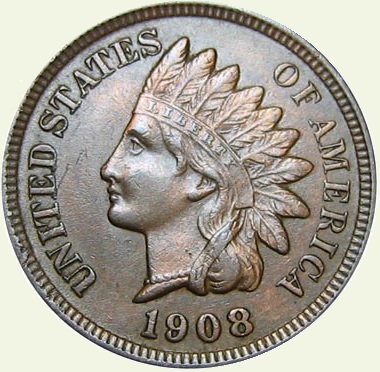
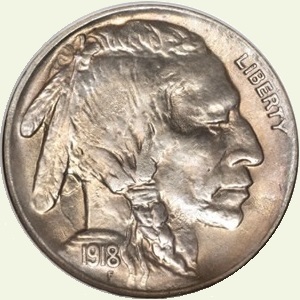
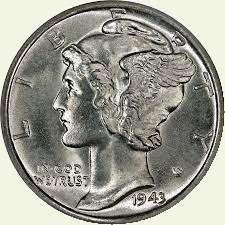



|
Until
1969, the method of collecting fares on trolleys /
streetcars and buses was a little different than on their rapid transit
counterparts. When you boarded the trolley / streetcar, you either paid the conductor; or in growing cases of one man operation after 1930, you paid the motorman / operator / driver. But whomever was in charge of actually collecting fares, they would be able to make change as well. As such, they had a portable coin changer (an example of which can be scene at right), and of which was clipped to their waist band as can be seen in the photograph at below right. This coin changer was part of their regular duties and uniform "kit". Coin changers could have four, five, six or even more "barrels", the number of which depending on the denominations of coins that were accepted, and that needed to be given in change. Usual configurations were one for pennies, two for nickels, one for dimes, and one for quarters; or one penny, one nickel, one dime, one quarter and one token. Custom coin changers could be ordered if the conductor only needed to handle minimal types of coins: say, only nickels and tokens. Furthermore, if you required a transfer to a connecting line, you paid the extra fare (usually 1 or 2 cents) and were issued a specially marked token (as mentioned in the chapter above) which would be kept in one of the barrels of the coin changer or a cardboard ticket (mentioned in the chapter below). Tokens and these early cardboard tickets were not marked for date, so abuse of the transfer system by traveling on two separate dates was possible and growing more frequent. This abuse was curtailed in later era of operations around the turn of the Century. This is when dated paper ticket transfers began to be issued and mass produced for use on the intersecting lines (see paper transfers below). When the last models of streetcars made their entrance into the scene in the 1930's: the "PCC car" (or Presidents' Conference Committee Car), the conductor's position became superfluous and all revenue handling was done by the operator. The motorman / operator now had to make change, issue transfers, as well as whatever other duties that were inherent to operating the trolley / streetcar, including but not limited to: changing the direction of the trolley pole at the end of a run, moving manually operated track switches (with a pry bar) so as to change route to a branch line off a main trunk line, cleaning rubbish, flipping the seats to face the traveling direction if so required, tallying the fares, giving directions, etc. Actually operating the streetcar or trolley itself on tracks was pretty straightforward: start, slow and stop, with no steering obviously. |
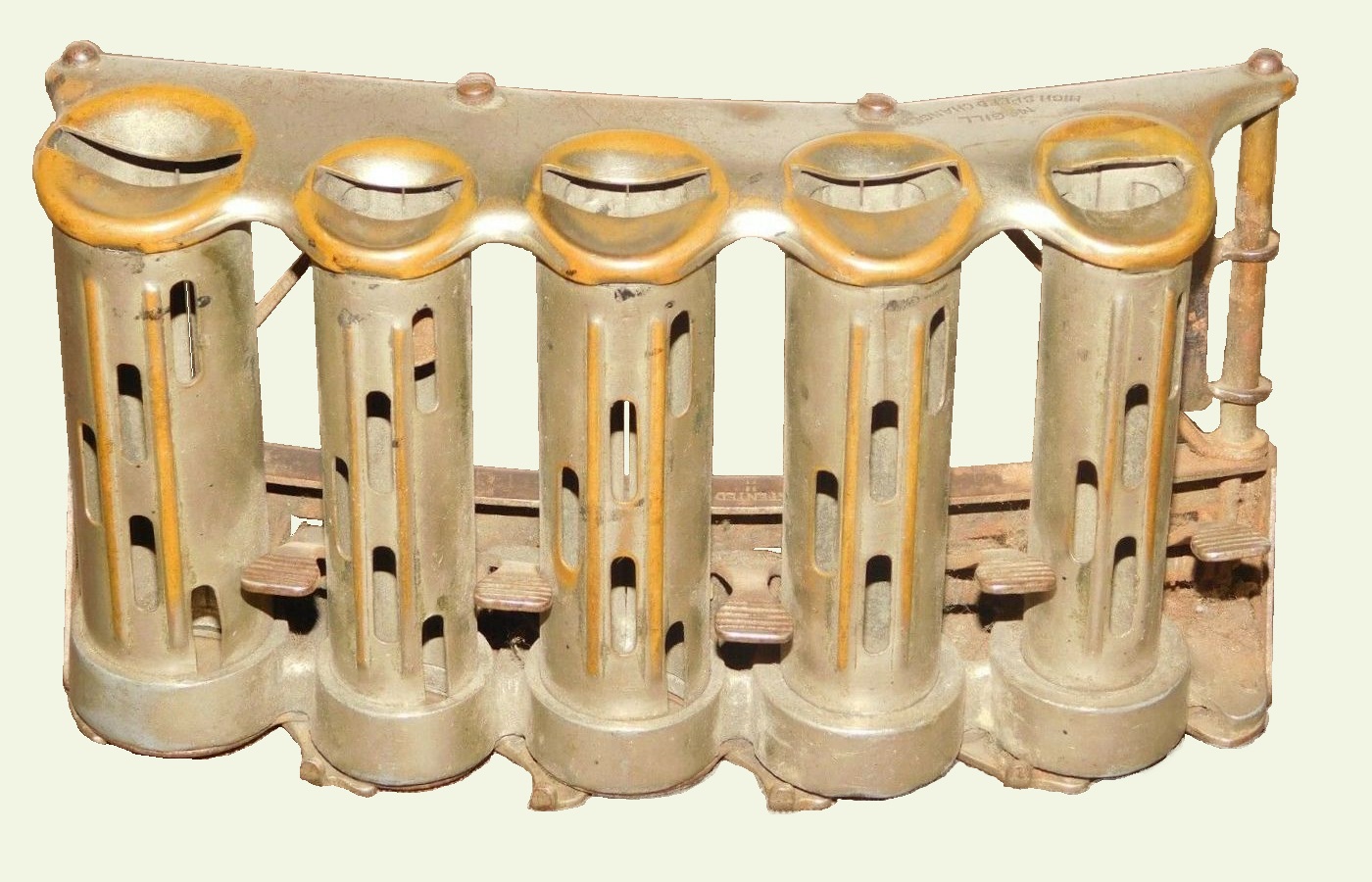 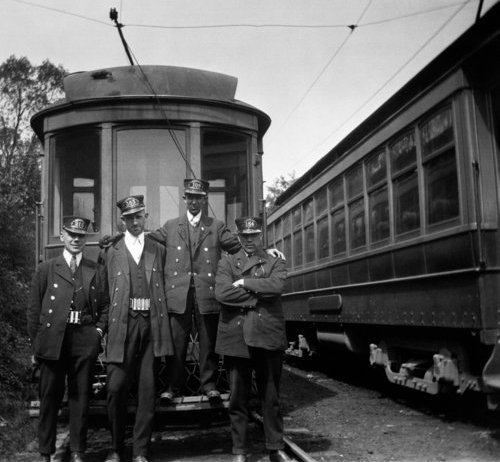 |
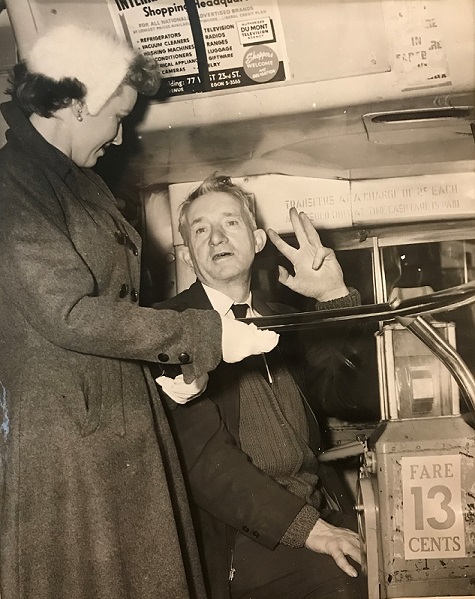
![]()
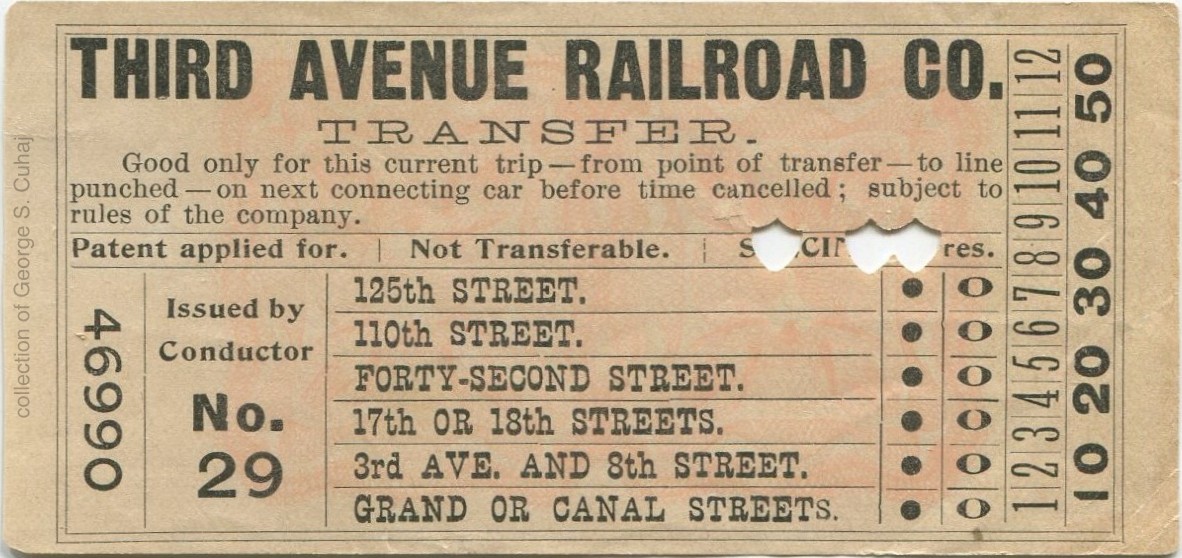 |
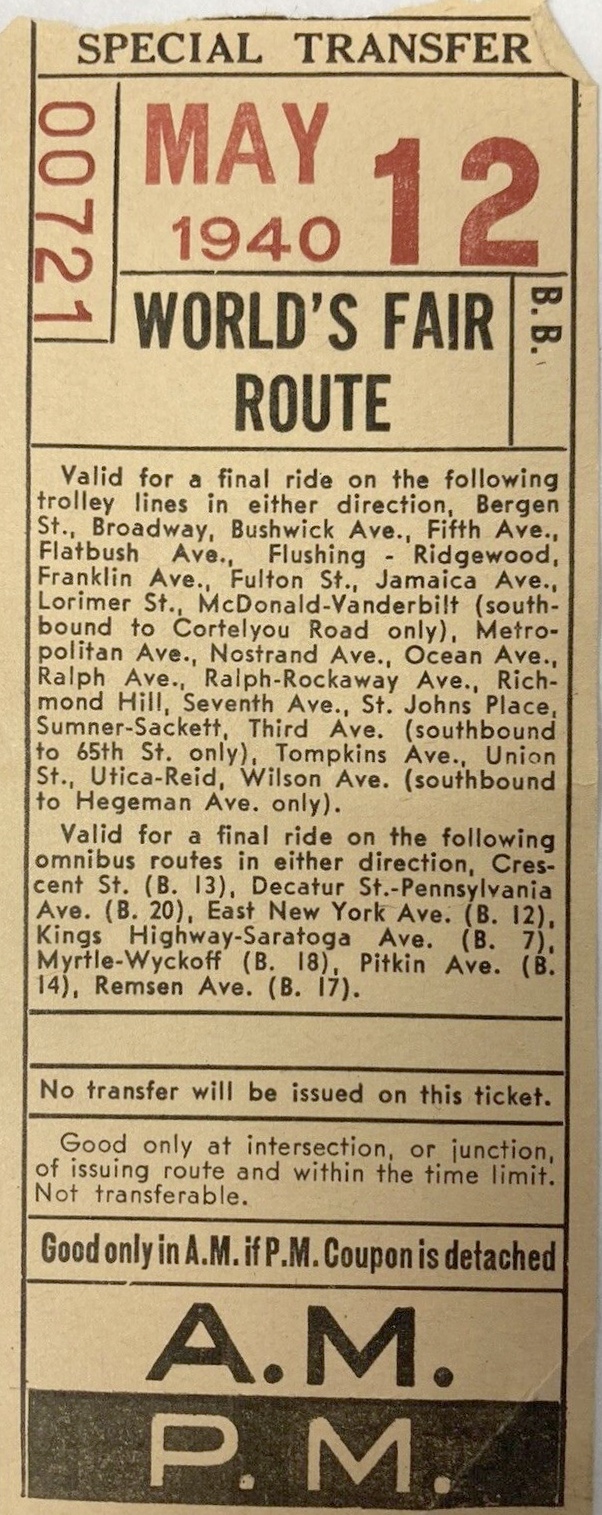 |
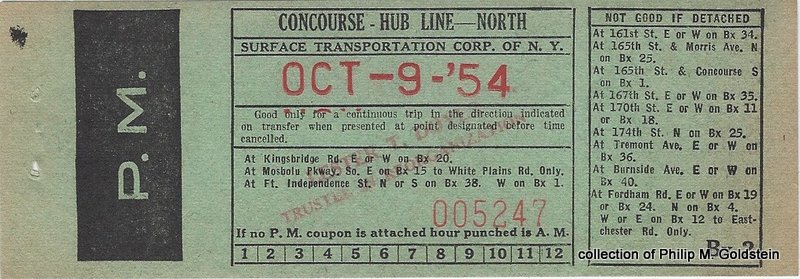 |
![]()
Zone
Checks - The Oddball of the Fare Collection Methods
also
known as the "Pay Enter - Pay Leave" fare method

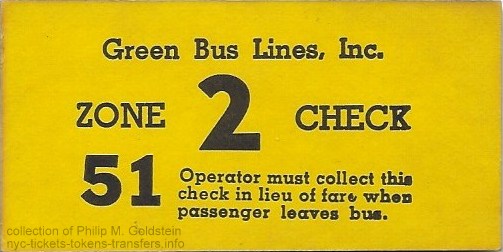
| within each Zone (intra-zone) | 10 cents |
| from Zone 1 to Zone 2 or Zone 2 to Zone 3 (inter-zone): | 20 cents |
| from Zone 1 to Zone 3 (inter-zone): | 30 cents |
| And
obviously, the system will work with even more zones, if necessary. Ultimately, the driver collected the appropriate base fare (intra-zone) from the passengers upon boarding and then again (inter-zone) based on their distance upon their disembarking pursuant to the Zone Check issued when they boarded. It sounds more complicated than it is, but in actuality, it really was not. Furthermore, it is essential to note that most of the private bus operators operating in Queens fielded fleets of buses (also known as coaches); that were built without mid-body exit doors, as commonly seen on Board of Transportation, NYCTA and MaBSTOA buses. For some of the Queens operators, one set of doors at the front by the driver was sufficient for both entrance and exit; as seen in the image at right of a coach for Steinway Omnibus built by Mack Trucks in 1939. However, some companies would operate both types of buses (with and without mid-body doors); with buses equipped with center doors assigned to routes within single zones of operations. |
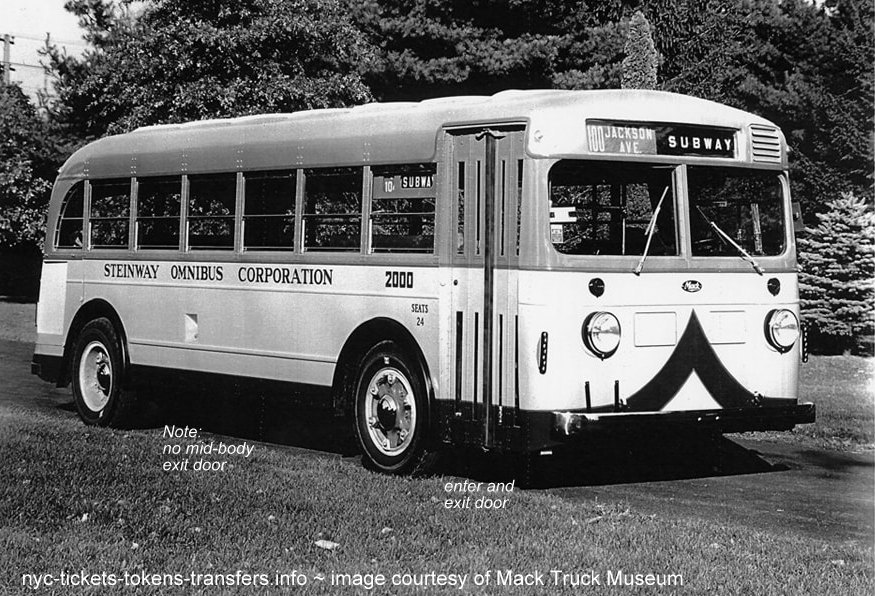 |
![]()
![]()
1) Railroad Clerks
colloquially known as "Token Clerks" or "Station Agents"
Beginning in 1880, Railroad Clerks sold tickets which were then handed to Gatemen with ticket choppers or to Conductors for collection. Beginning in 1922 and with the innovation of the mechanical turnstiles, the nickel was used to gain access. Railroad clerks exchanged dimes, quarters, half dollars and dollar coin and bills into nickels for the passenger; who then inserted a nickel into the turnstile.
2) Turnstiles
Or, if the passenger entered the system prepared with a nickel, the passenger could bypass the Railroad clerk, and proceed directly to the turnstile.
3) On Board Fare Collection
Between ca. 1945 and 1975; there was a singular exception to the turnstile payment method: The Conductor aboard the IRT Dyre Avenue Line (nights) collected fares onboard the subway car with a surface type farebox. A token or coinage was deposited, but no change was given.
Commencing in 1978 with the institution of JFK Express Service, this service employed the use of a Railroad Clerk on board each train to make change and sell tickets. This is because Railroad clerks were bonded and insured to handle money; and conductors were not. Therefore, the assignment of a Railroad Clerk on board each train was required.
4) Group collections;
Such as those for school field trips, tour groups, special events. Here a paper form was issued to the leader or administrator of said group, granting access to the transit system for a predetermined amount of people from a particular point of boarding to a point of disembarking. Many a school field trip to a museum or venue began or ended with the teacher handing over a form (usually on school stationery) to a Railroad Clerk at a subway station; then proceeding through the manual fare gates to the train platform. In most cases the fare was prepaid by the Board of Education or the group responsible for the excursion.
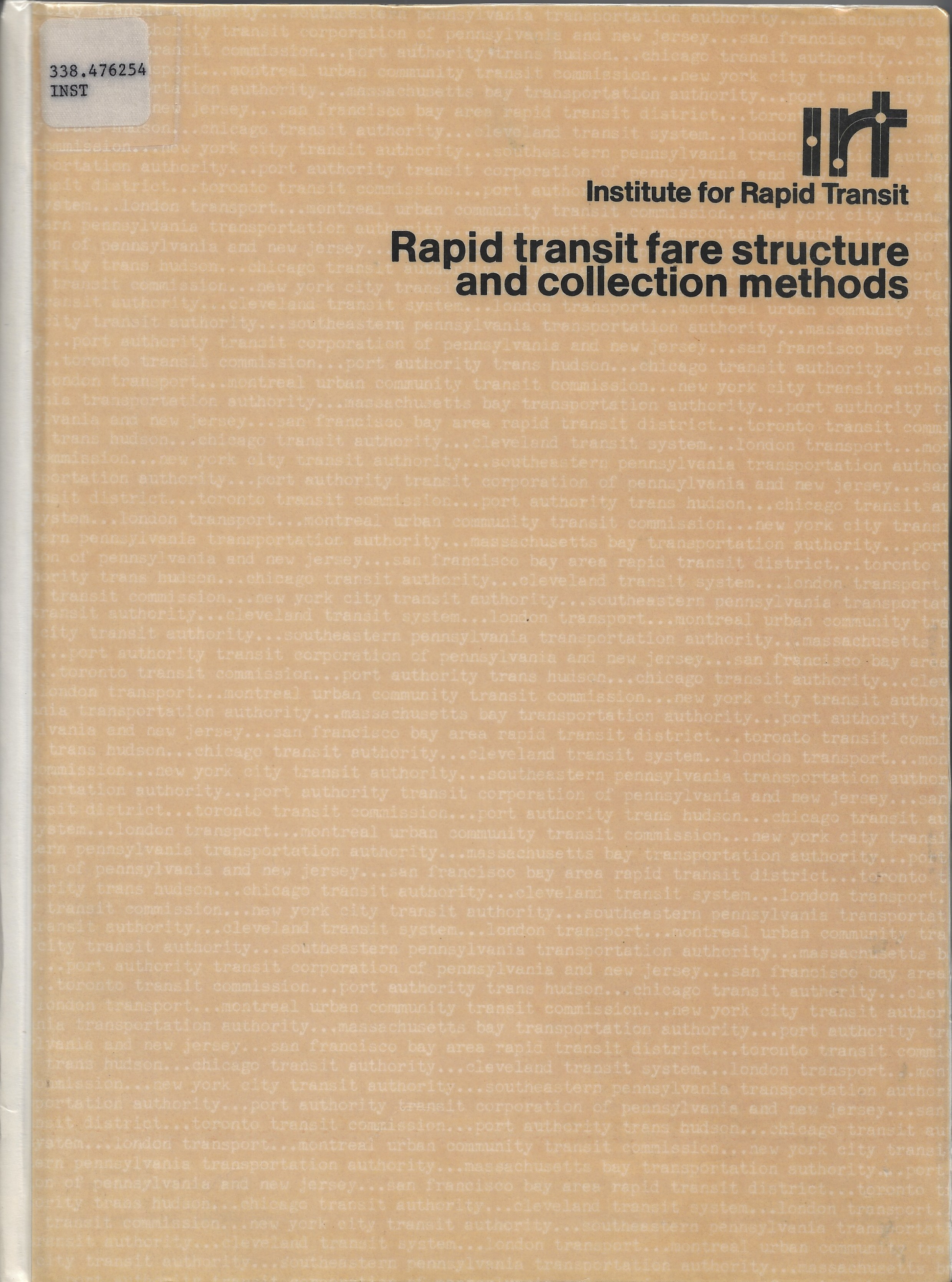 cover
. . |
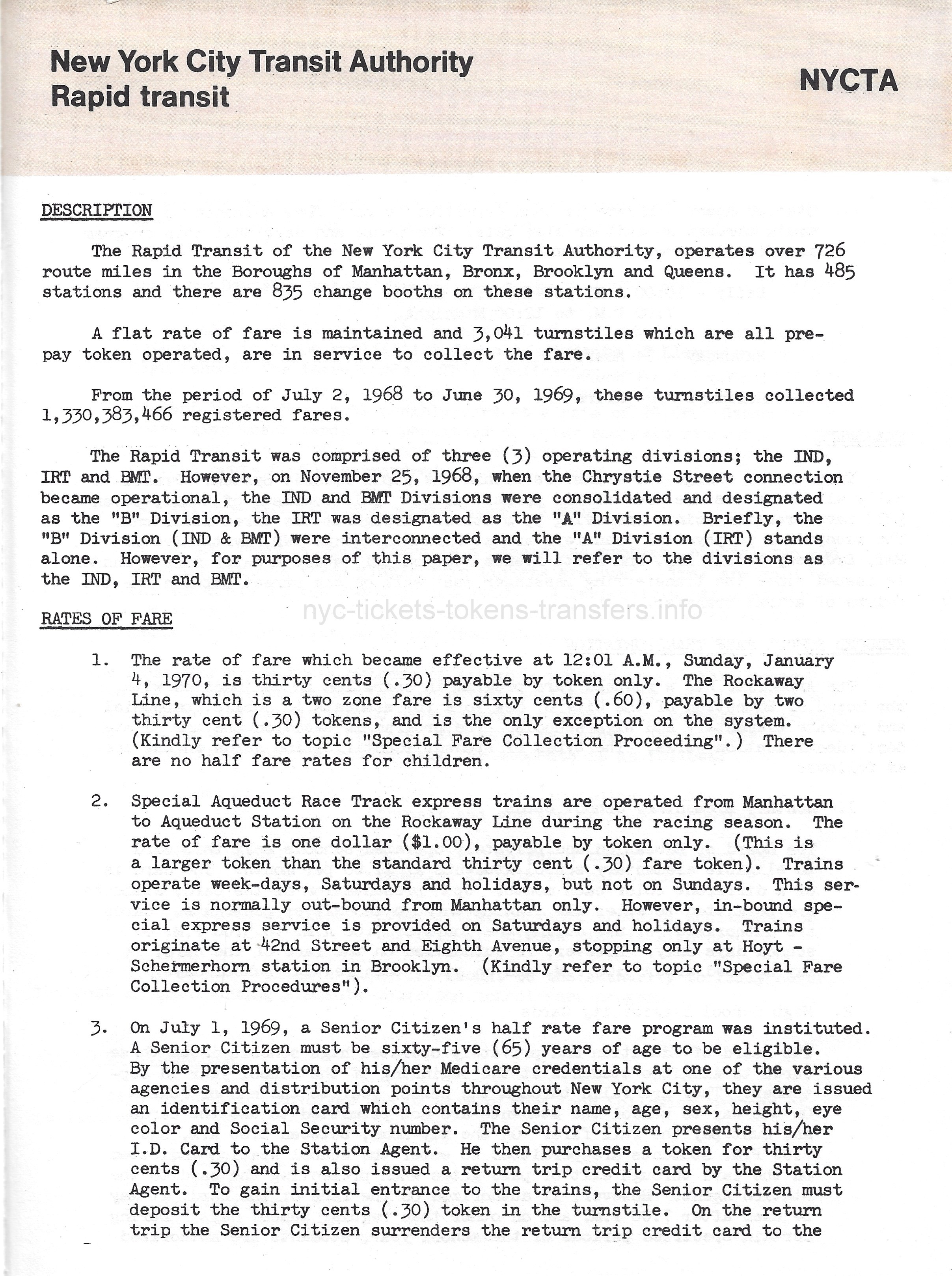 page 1.
Description, Rates of Fare . |
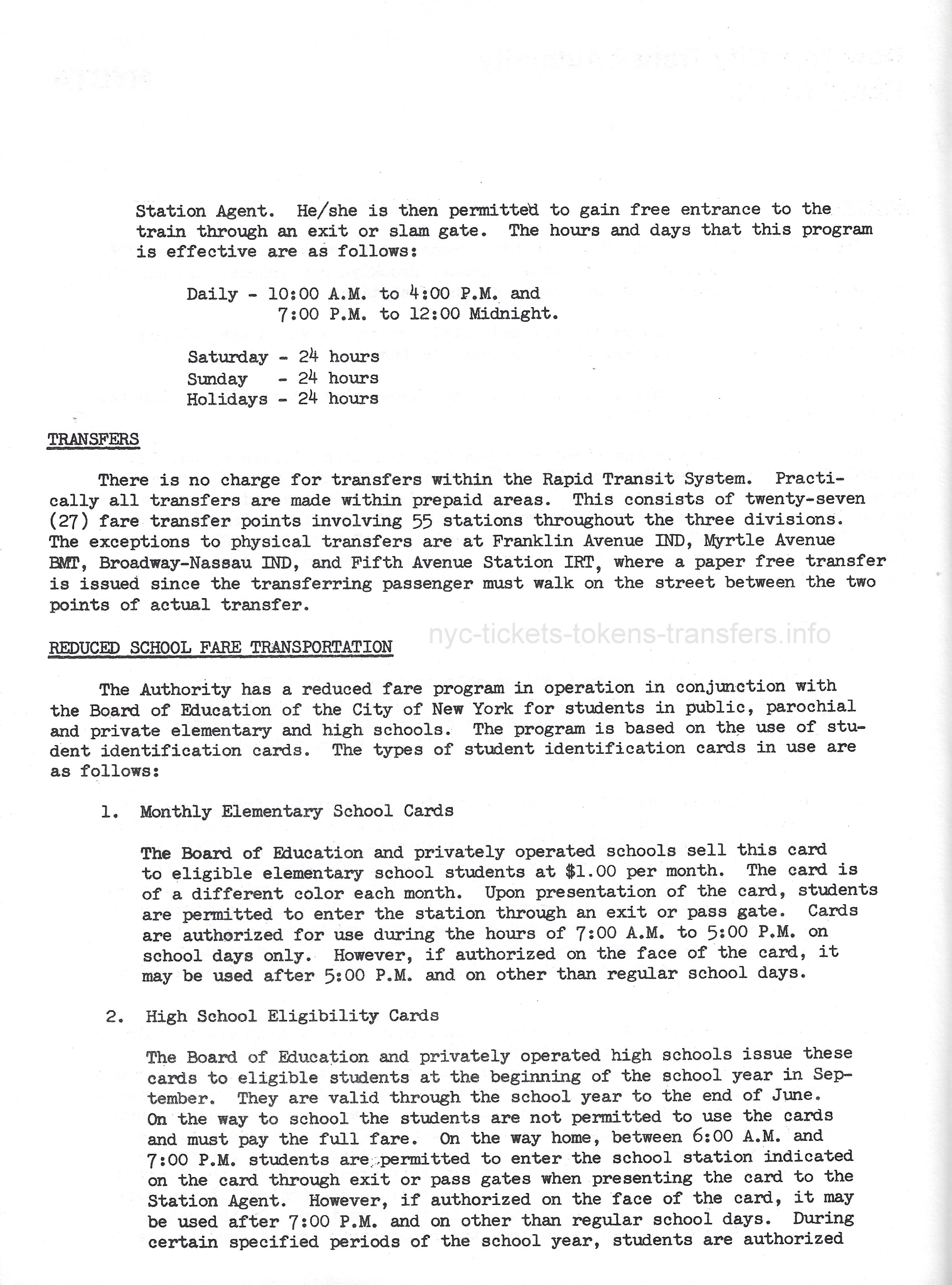 page 2
Transfers, Reduced School Fare Transportation . |
 page 3
Reduced School Fare Transportation (con't); Methods of Collection . |
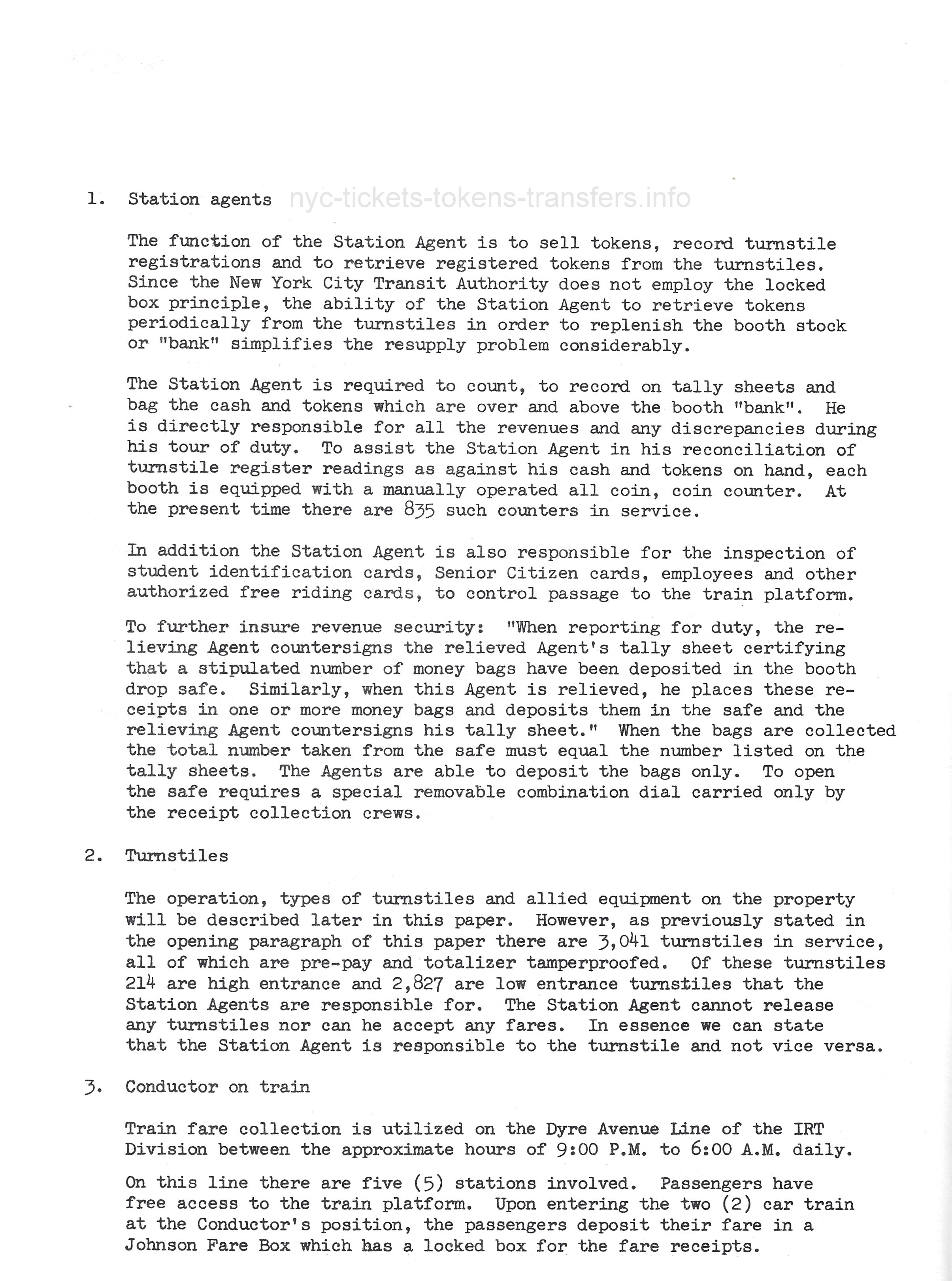 Methods of Collection (con't): Station Agents, Turnstiles, Conductor on Train . |
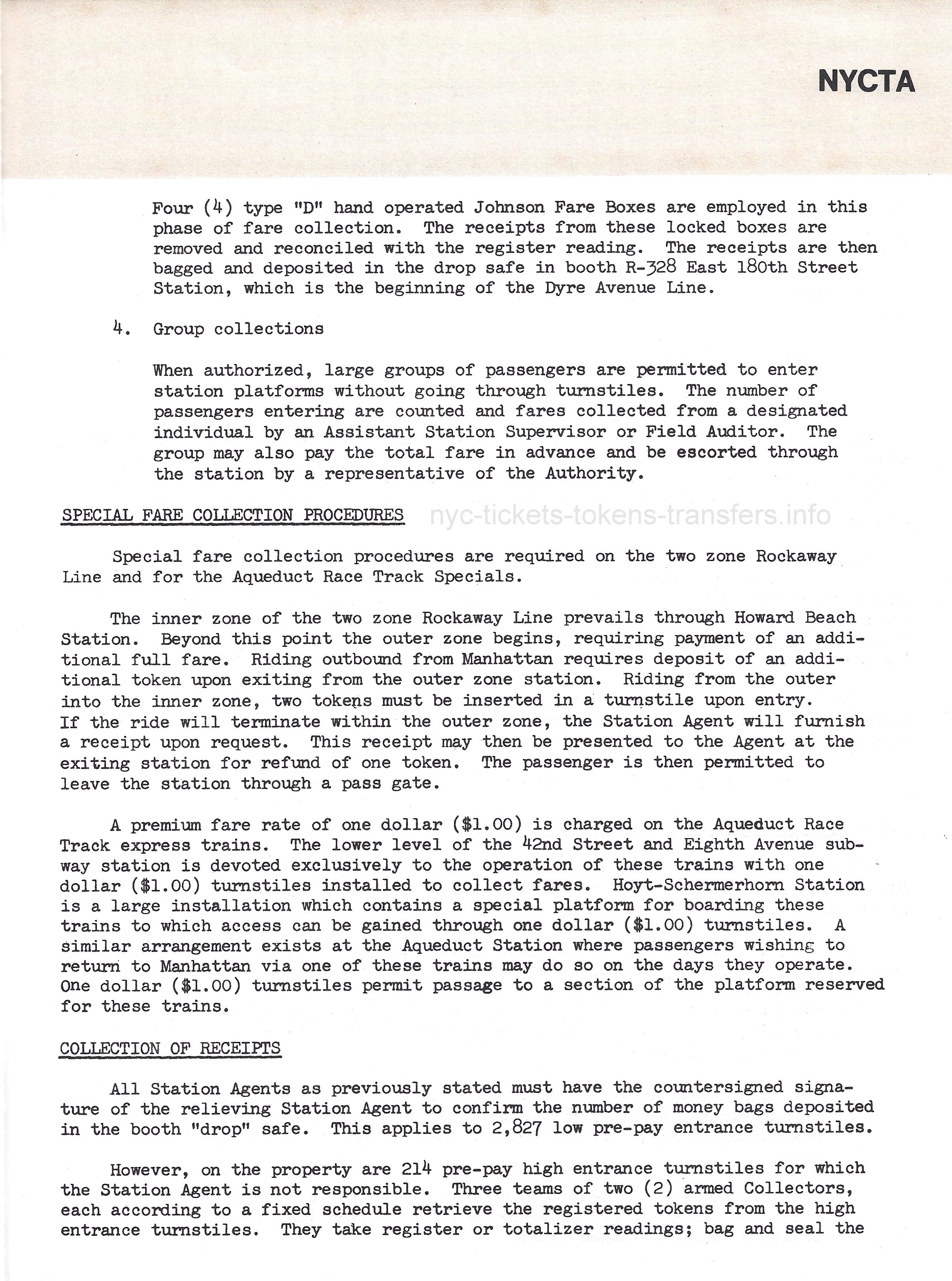 page 5
Special Fare Collection Procedures (Rockaway, Aqueduct), Collection of Receipts . |
 page 6
Collection of Receipts (con't) Reconciliation of Collected Revenues . |
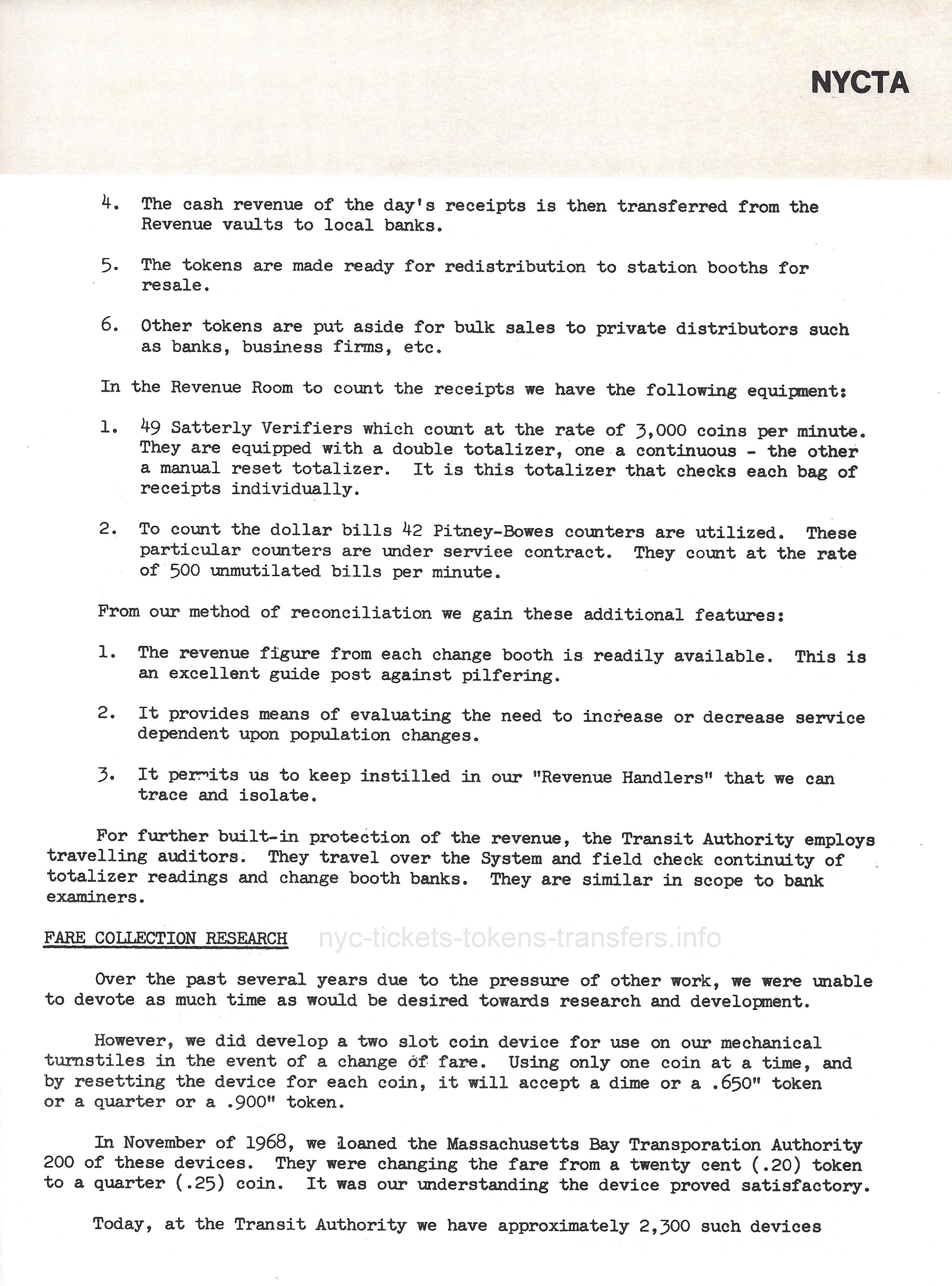 page 7
Reconciliation of Collected Revenues (con't) Fare Collection Research, Two Slot Coin Turnstiles . |
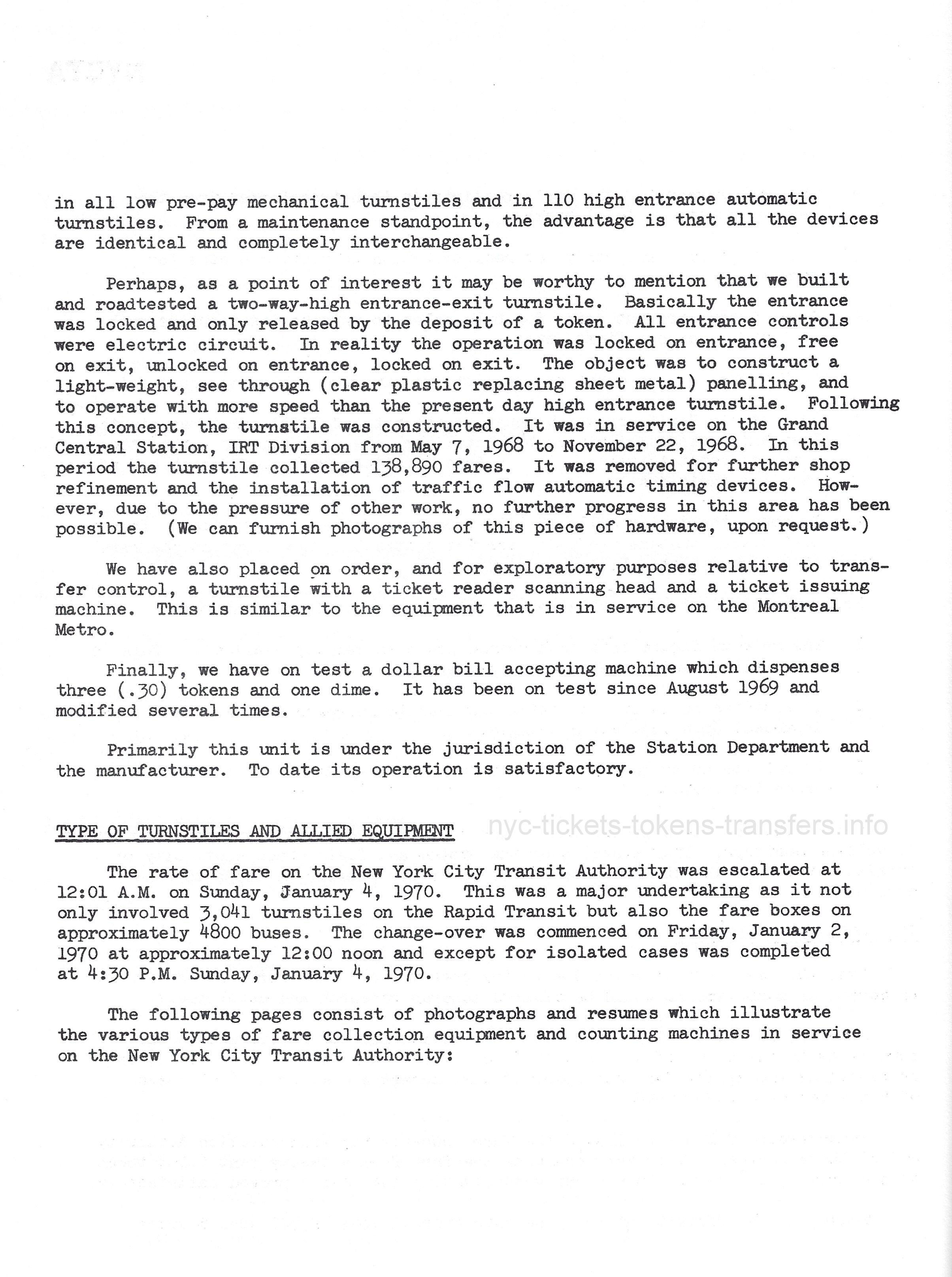 page 8
Fare Collection Research (con't) Type of Turnstiles and Allied Equipment . |
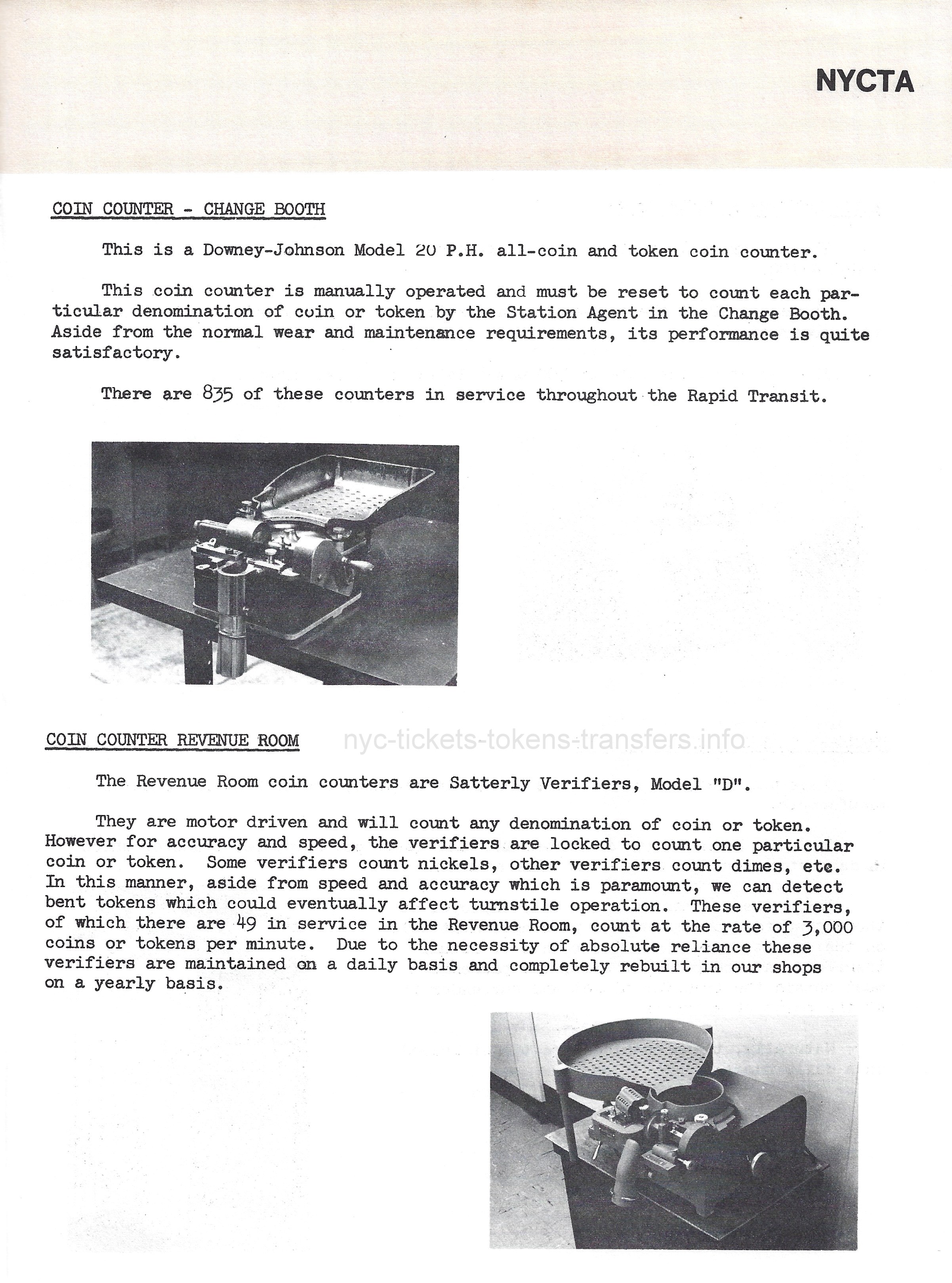 page 9
Coin Counter, Change Booth - Downey Johnson Model 20 P.H. Coin Counter, Revenue Room - Satterly Verifiers Model D . |
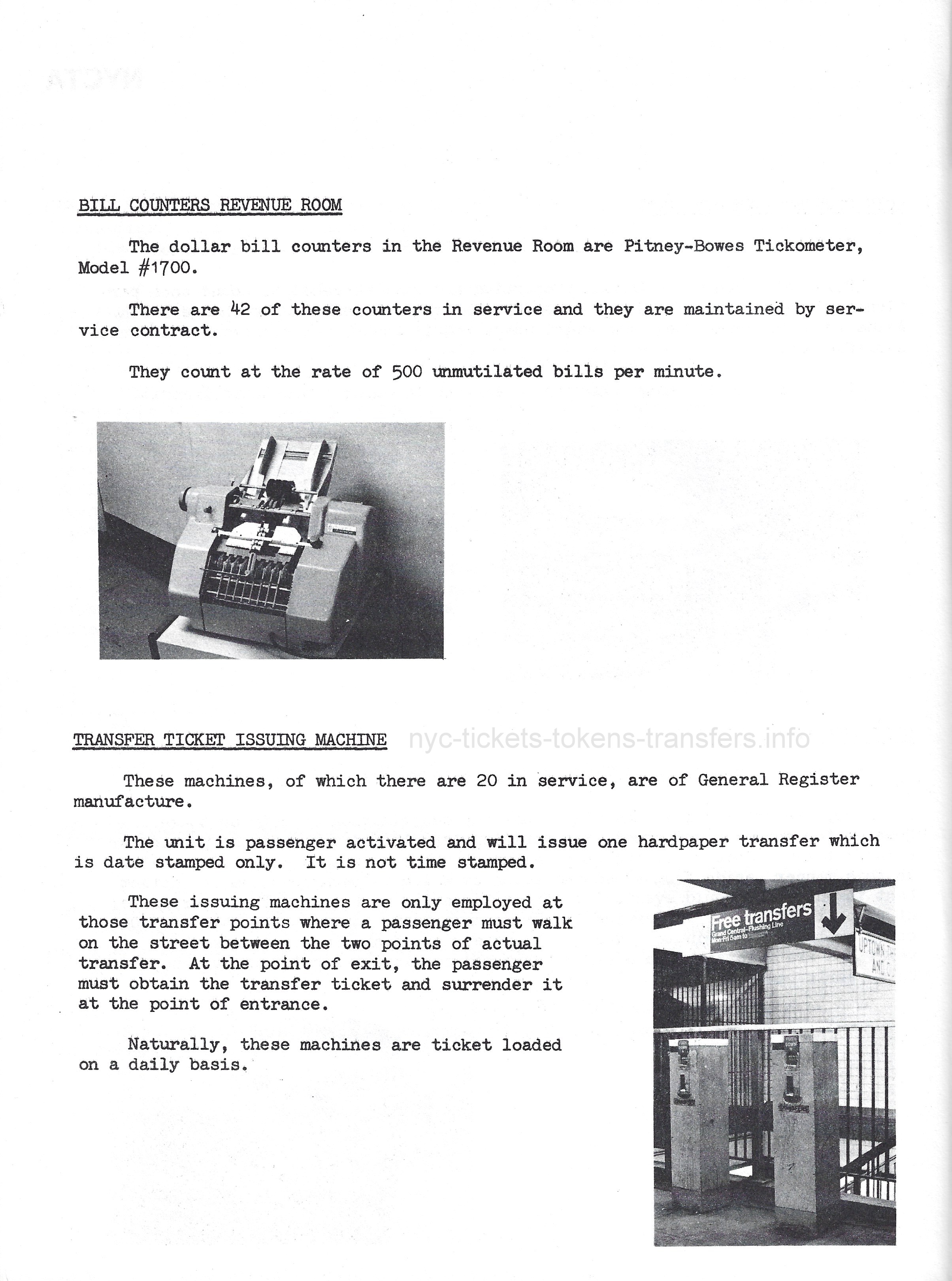 page 10
Bill Counter, Revenue Room - Pitney Bowes Tickometer Model #1700 Transfer Ticket Issuing Machine, General Register (small format card tickets) . |
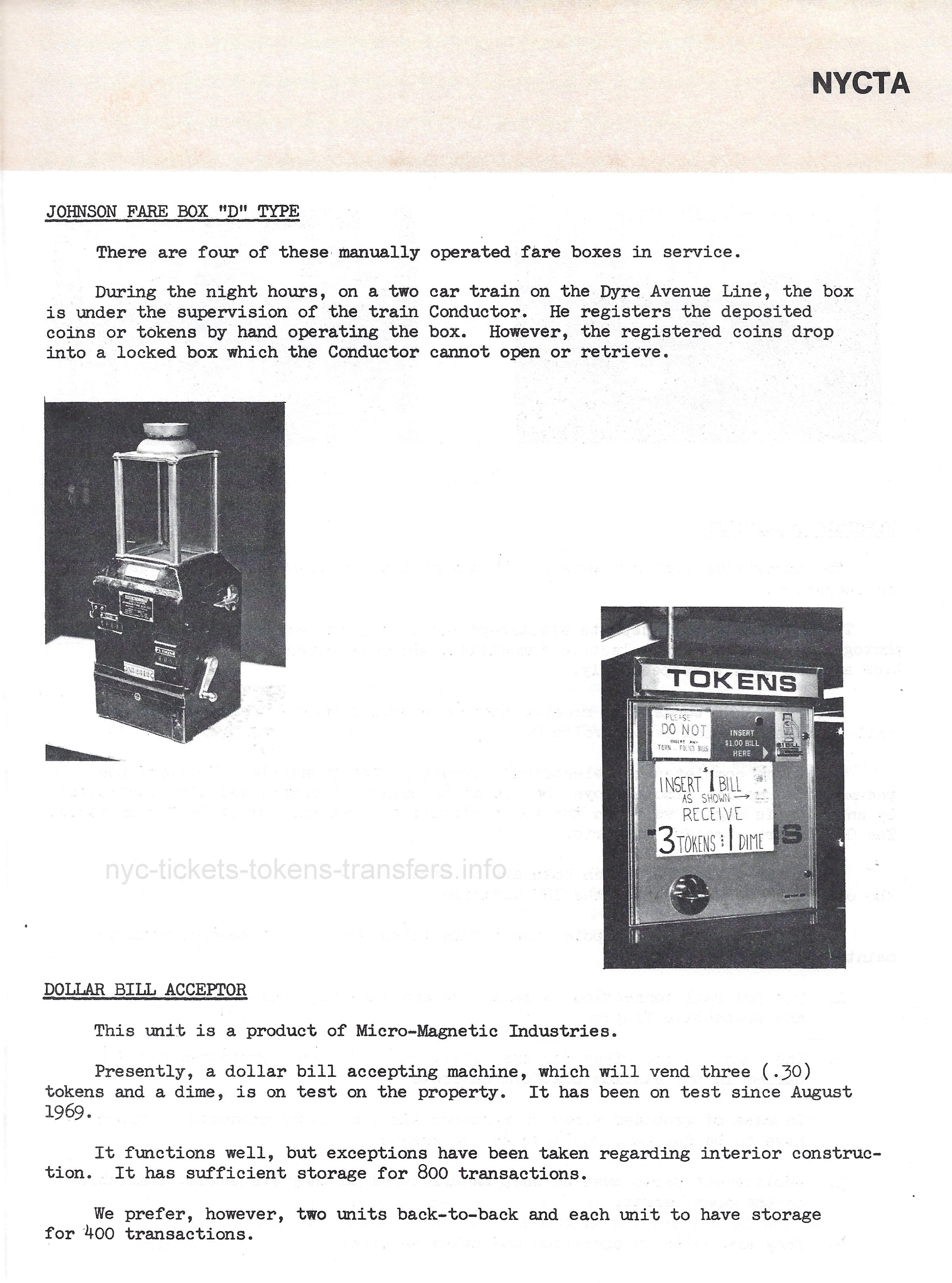 page 11
Johnson Fare Box D Type (Dyre Avenue Line nights) Dollar Bill Acceptor, Micro-Magnetic Industries (3 tokens & dime) . |
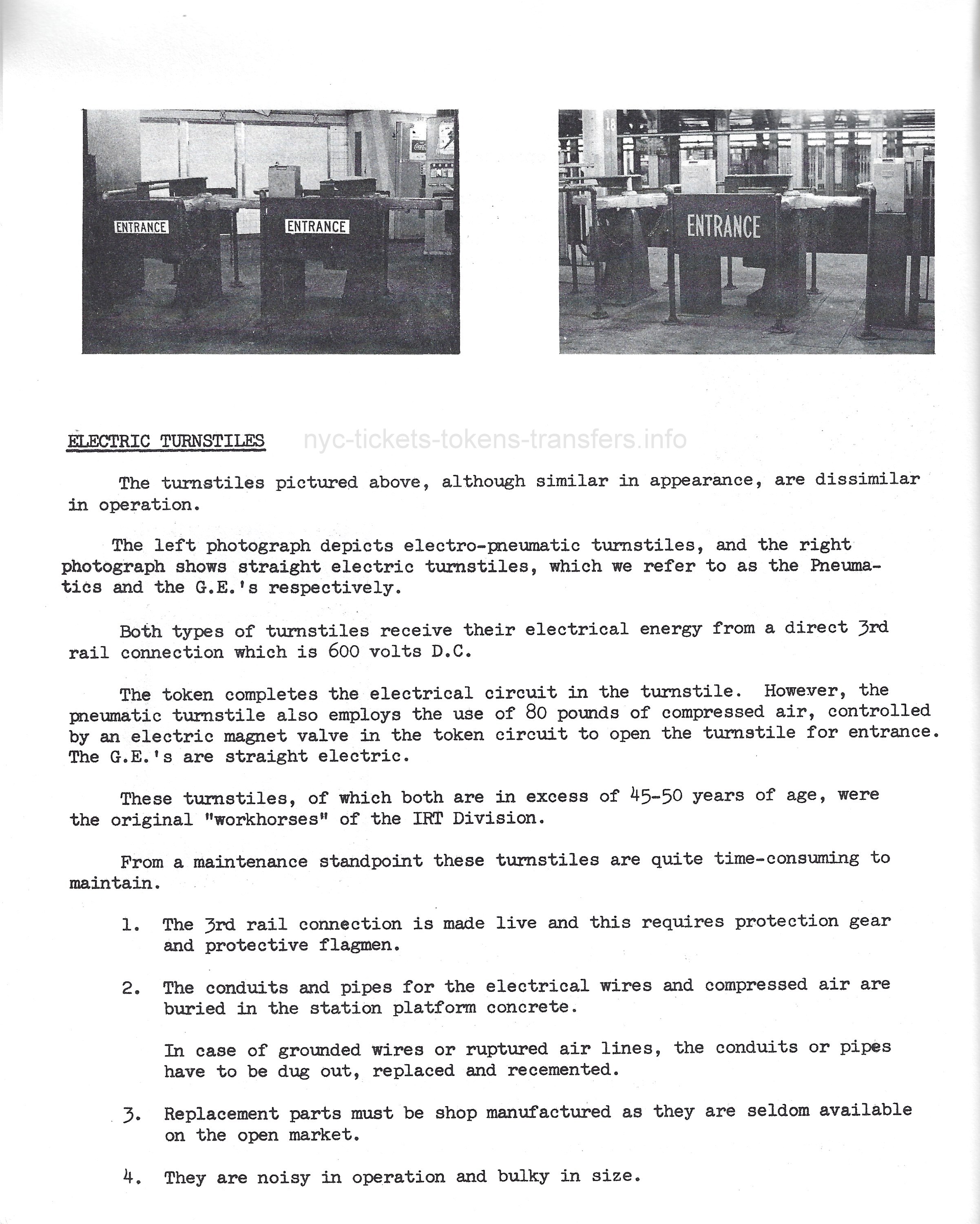 page 12
Electric Turnstiles, Electro-pneumatics & General Electric Straight Electrics (600 volts) . |
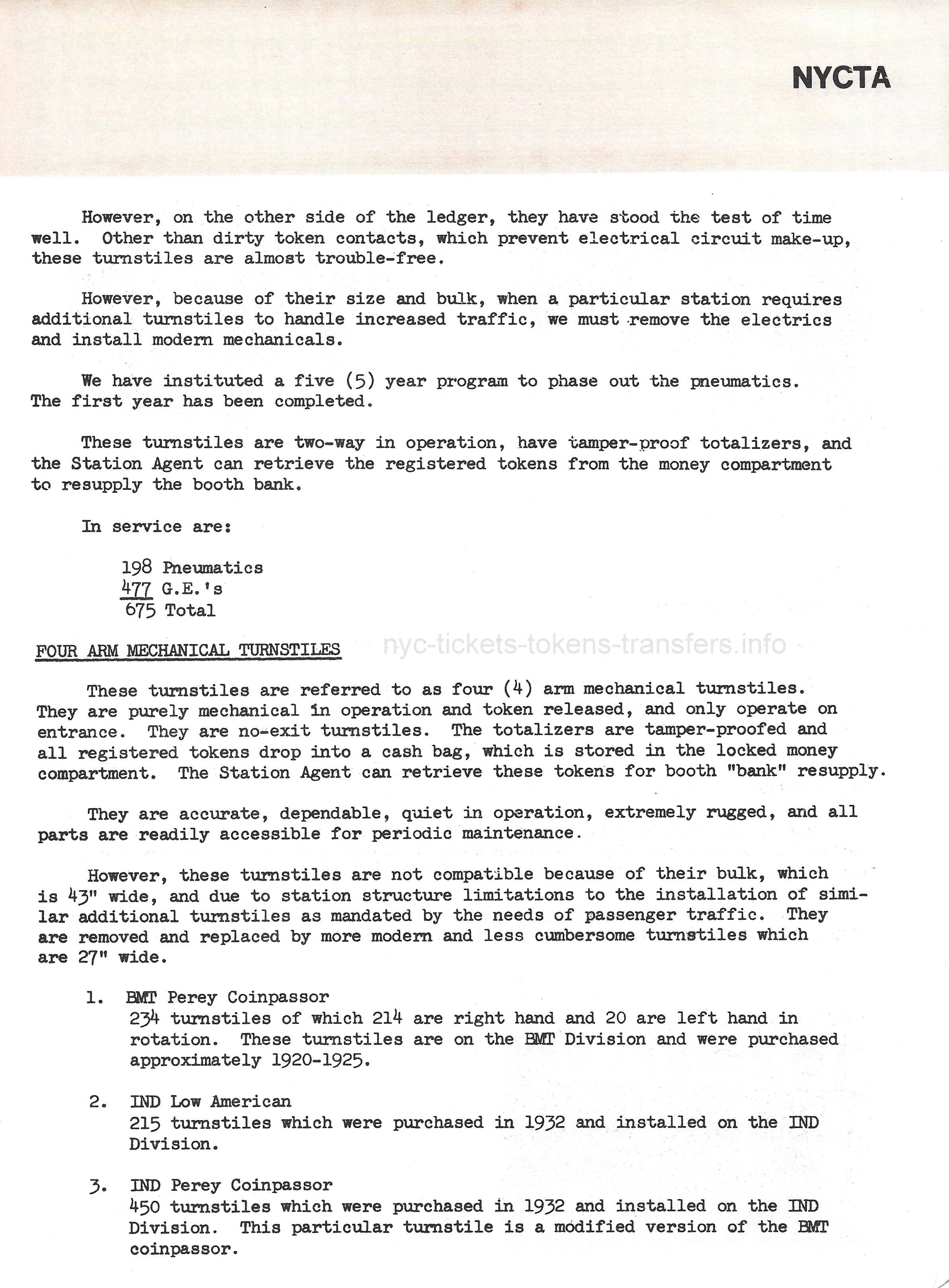 page 13
Electric Turnstiles, (con't) Mechanical Turnstiles, Four Arm: BMT Perey Coinpassor, IND Low American & IND Perey Coinpassor . |
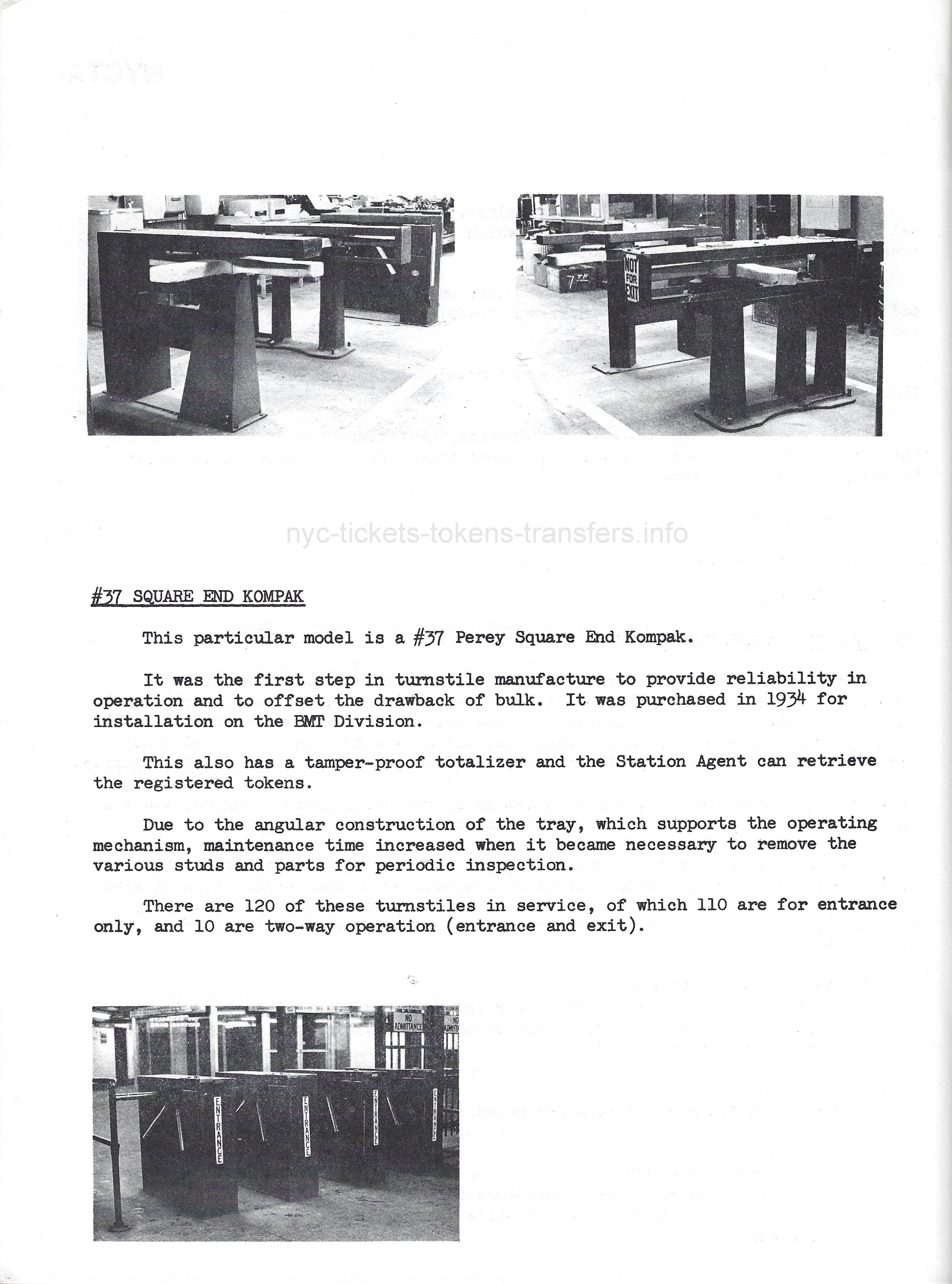 page 14
Perey #37 Square End Compak . |
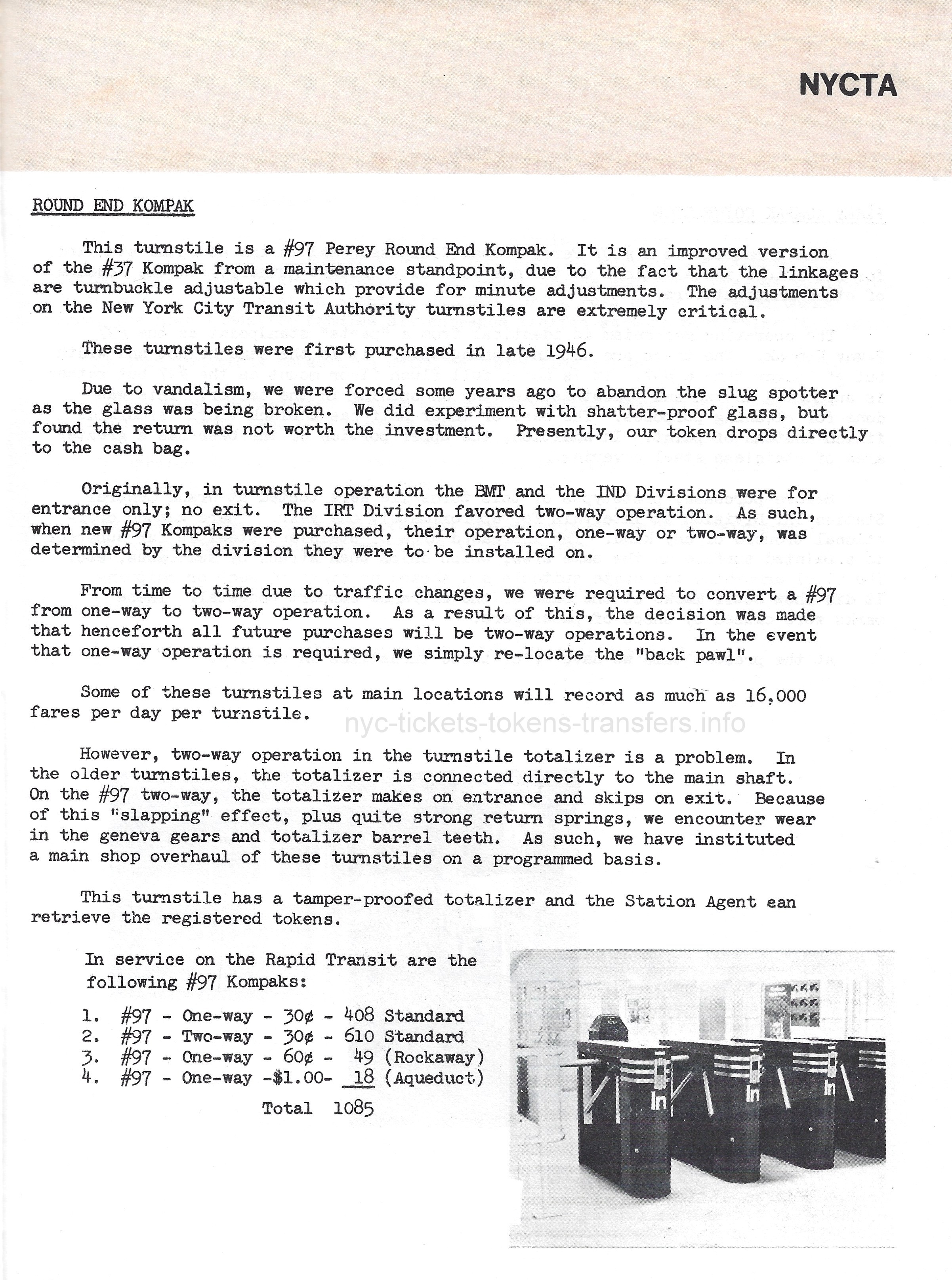 page 15
Perey #97 Round End Kompak . |
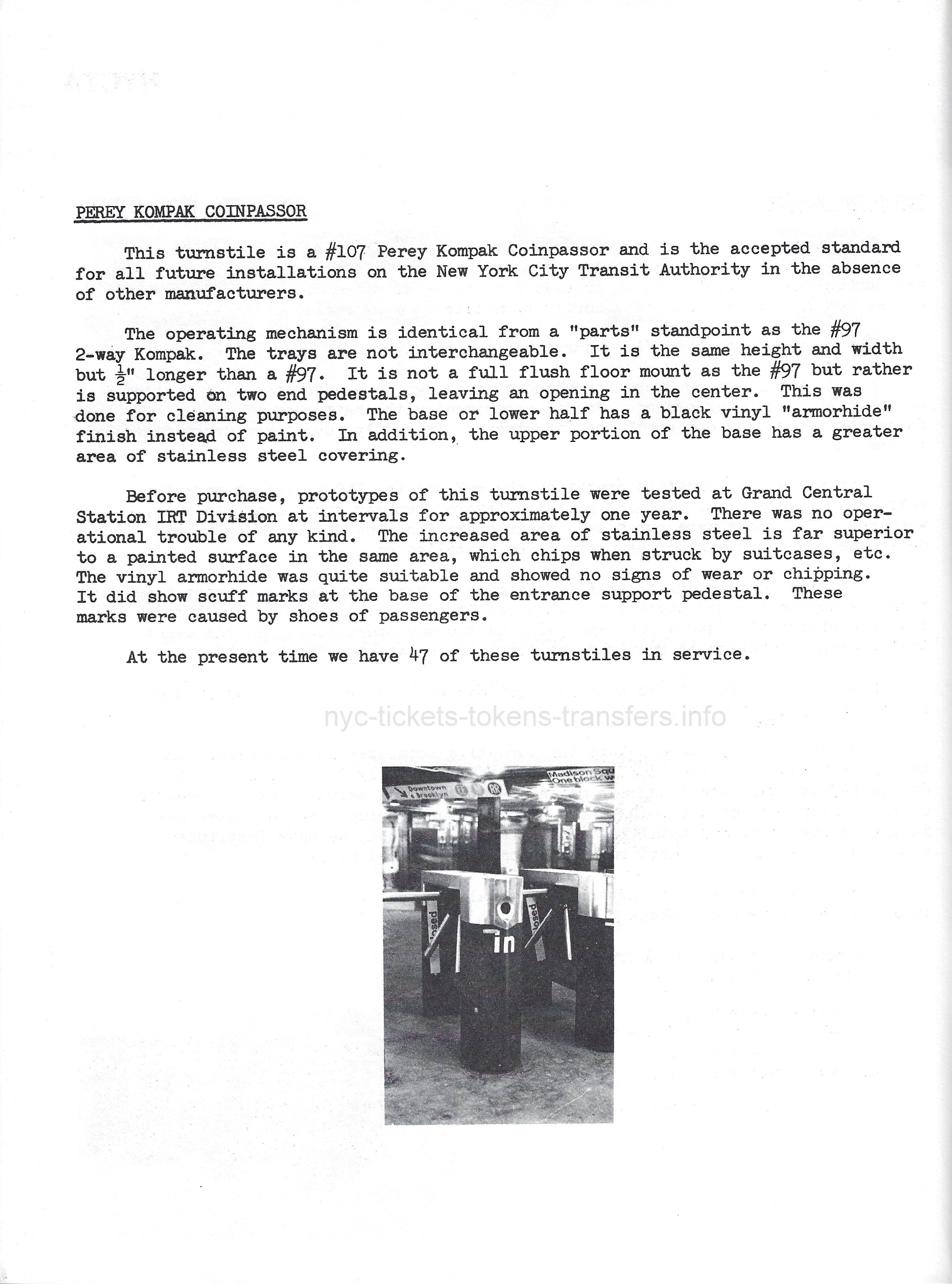 page 16
Perey #107 Kompak Coinpassor . |
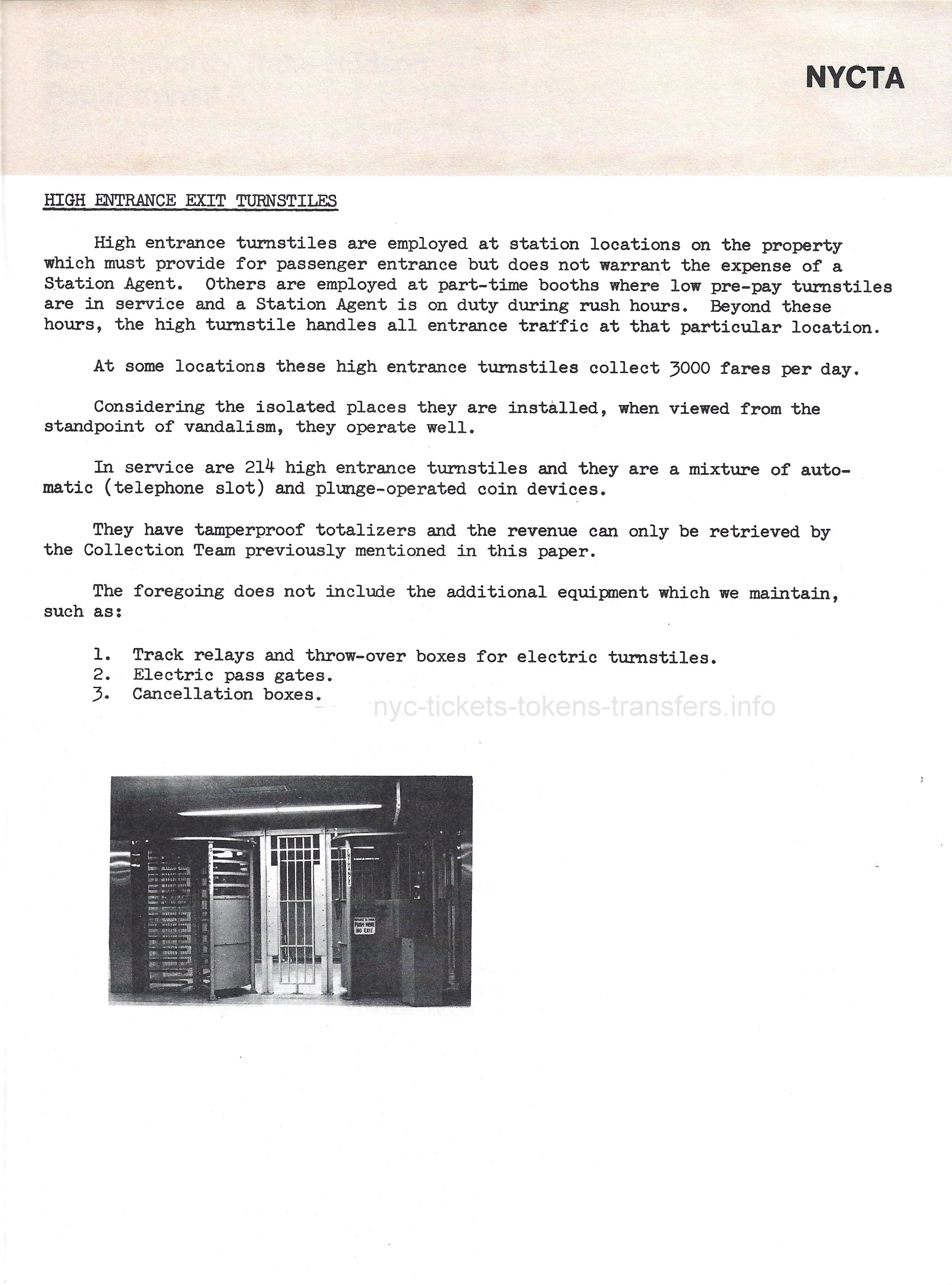 page 17
High Entrance Exit Turnstiles . |
![]()

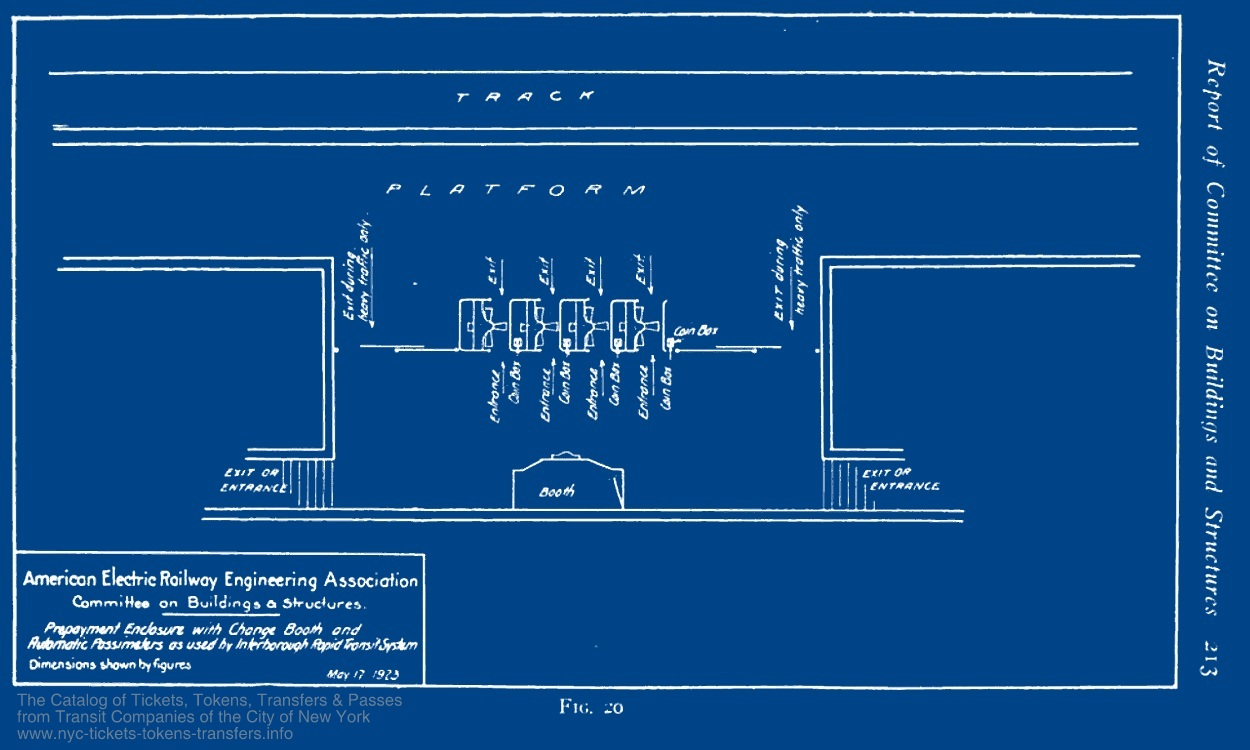

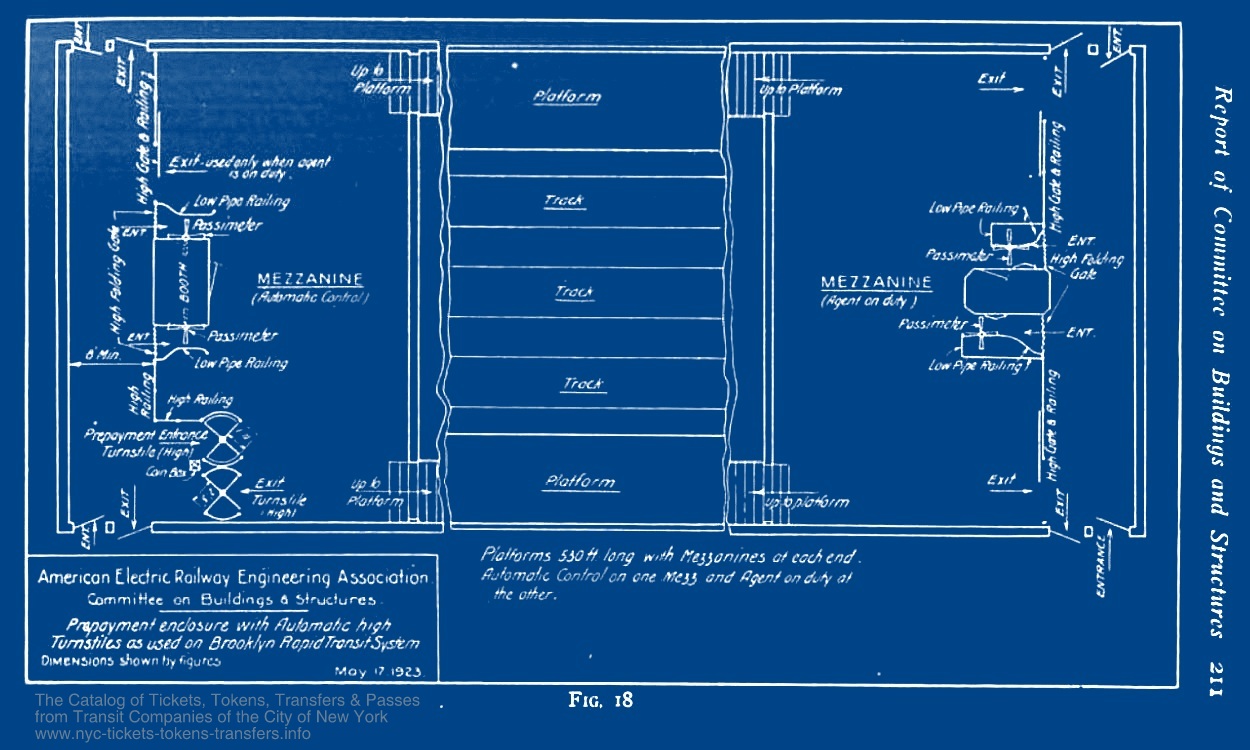
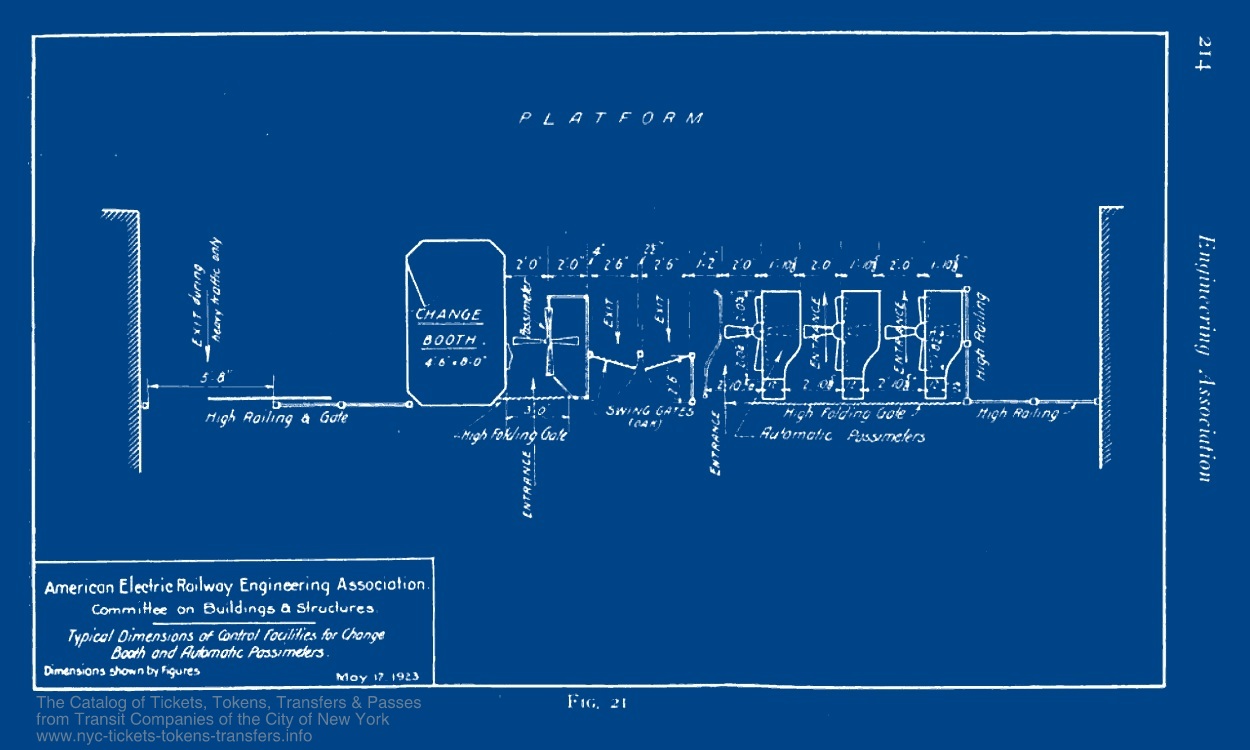
![]()
|
We see as a result of this article, the method of ticket
collection was changed from conductors taking up tickets aboard the
train, which was abolished on January 20, 1879. The reason for this was, at times of large crowds - especially during rush hours; the conductor may not have gotten to taking your ticket before you disembarked at your station; allowing you to ride for free and using your ticket on another date. So, the collection of tickets now required passengers to deposit their tickets into ticket boxes upon exiting the train at the exit gates. With this method, it also caused congestion when trains discharged the passengers in one short time span. And so, on June 21, 1880; the method of ticket collection would change yet again. Passengers now had to deposit their tickets into chopper boxes prior to boarding the trains; and it is this method of ticket collection that would gain widespread use for other rapid transit companies in the Cities of New York, the Bronx, Brooklyn and Queens as well. This method worked the best, considering people arriving to purchase their tickets and hand them to the gateman were for the most part spread out over time. Granted, you can still get a crush of people, but the groups were smaller than on discharge of a train arriving in a station. After purchasing their ticket(s) a patron would proceed to the gate which divided the "open area" or public spaces from the "fare controlled area" which was the stairs that led to the subway or elevated platforms. Here, at an opening in this gate, a collector or "gateman" stood next to a glass and wood box on a pedestal, called a "chopper box". The passenger would hand the ticket to the gateman, who would place the ticket into the top of the "ticket chopper", and actuated the handle that in turn chopped the ticket, preventing reuse. This action finally granted you access to the "controlled area", also known as the platforms of the subway and elevateds, or main terminals of the surface cars. |
.
 .
. .
. 
Proceedings of the
American
Society of Civil Engineers, August 1917
|
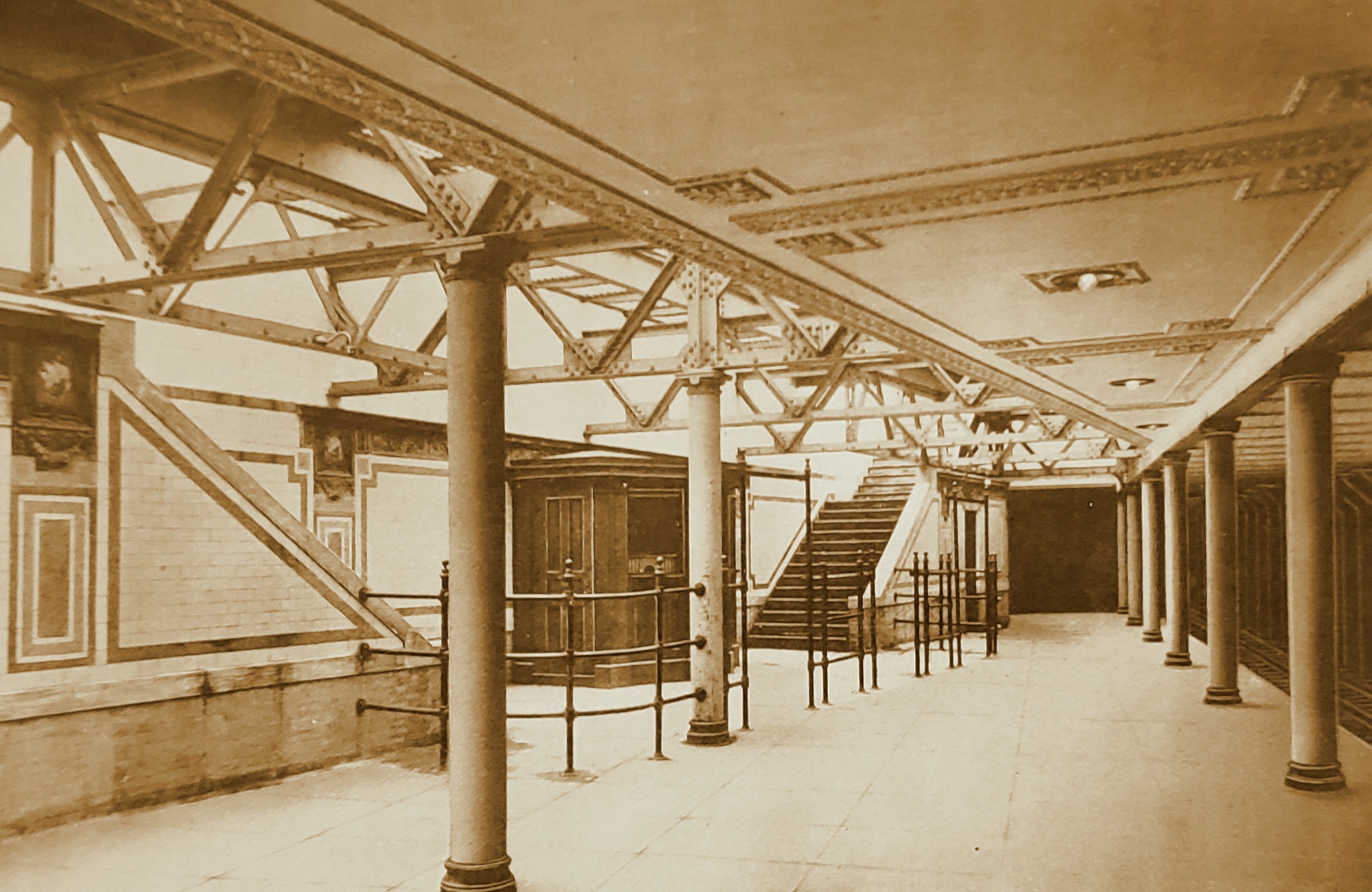 |
|
| Columbus
Circle Station; showing change / ticket booth; and gate separating
"unpaid" area (and stairs to the street) and "paid" side (subway platform) areas. This image was taken upon completion of construction and the chopper box not yet installed. |
Gateman with chopper box. Note the second chopper box covered by canvas and not in use. |
|
|
|
|
|
| Gateman with chopper box. image courtesy of New York Transit Museum |
Ticket Chopper Box at
IRT Wall Street
Station
image courtesy of ephemeralnewyork |
Deposit
slot, glass viewing box and "funnel" image courtesy of New York Transit Museum |
Chopping
mechanism (slightly damaged) and removed from wood cabinet. image courtesy of New York Transit Museum |
The glass box on top had a glass plate v-shaped funnel at the bottom (not shown in the patent drawings) which directed the tickets into the chopper box. Here a set of interlaced metal teeth resembling combs are mounted. Connecting to these teeth combs, there was a shaft that connected through the side of the case to the outside. Much like the purpose of a modern paper shredder; only the chopper boxes were manually operated. The tickets were chopped to prevent reuse and the shredded tickets contained in a hopper in the bottom portion of the chopper box pedestal.



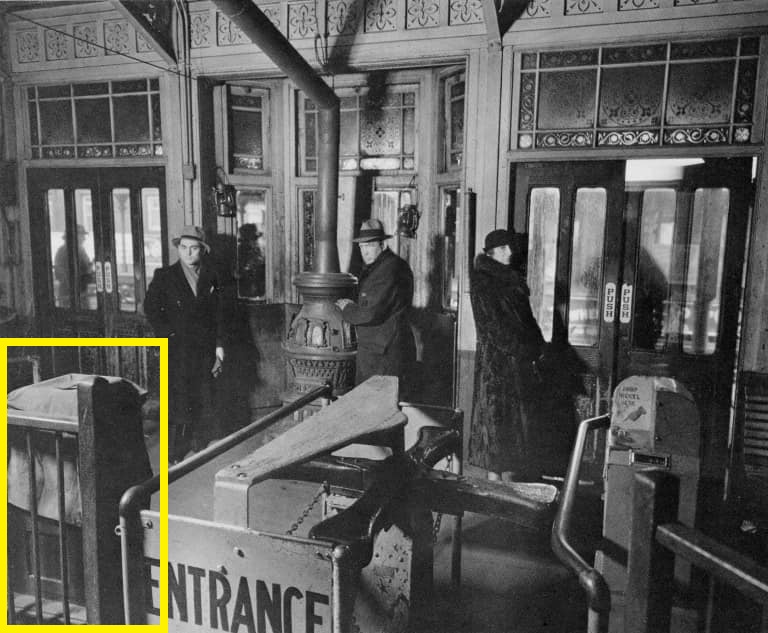 |
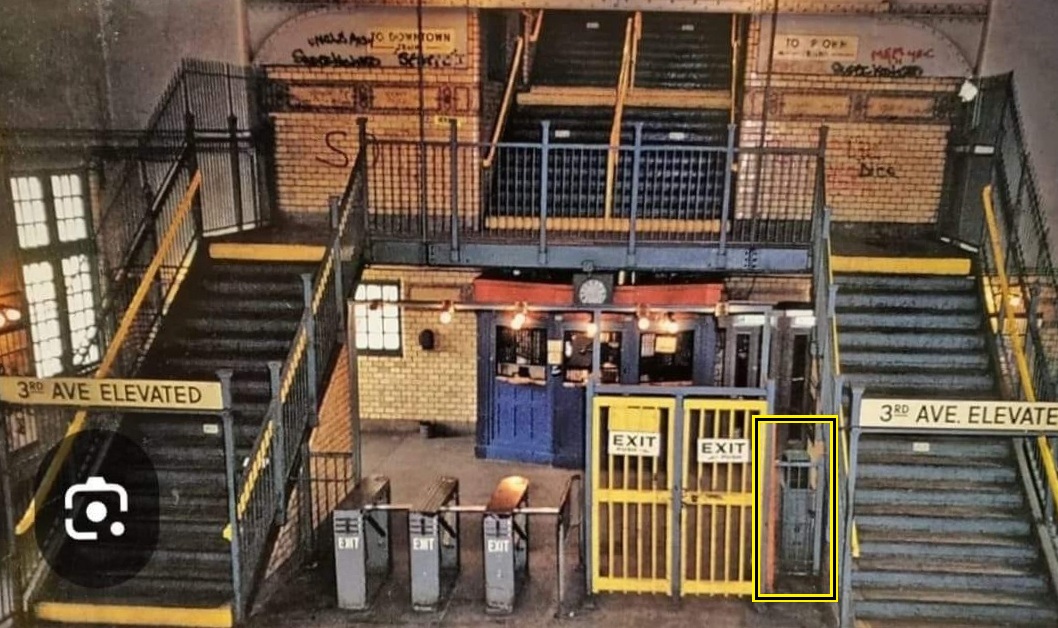 |
| IRT Ninth Avenue Elevated 72nd Street and Columbus Avenue Station - February 6, 1936 Berenice Abbott photo "Changing New York" series |
IRT White Plains
Line Gun Hill Road Station,
ca. 1973 (just prior to the cessation of service on the Third Avenue Elevated - April 29, 1973.) unknown provenance |
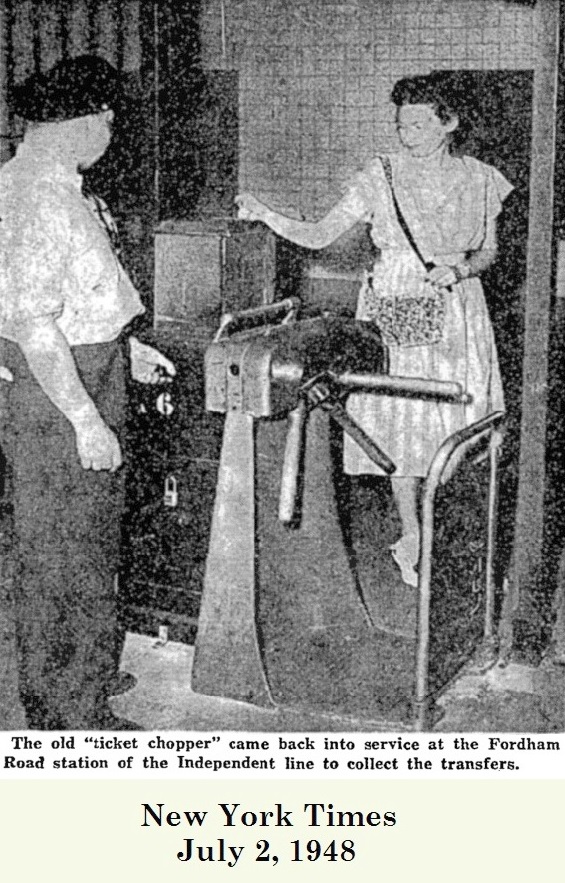 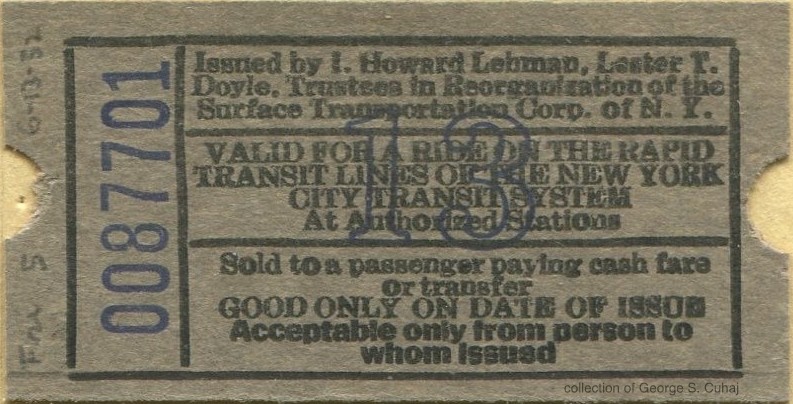 |
Recently discovered in the New York Times issue
dated July 2,
1948, and in the multi-page coverage regarding the fare raise to 10
cents the day before; is a photo of a Transit
Employee with a chopper box placed next to a portable turnstile (Perey
Model 48 "HD") accepting the new
small format combination (surface to rapid) tickets at the Fordham Road
Station in the Bronx! The caption reads, "The old ticket chopper" came back into service at the Fordham Road Station of the Independent Line to collect the transfers." It is also interesting to note that the model turnstile shown next to the chopper box, is a model used in surface transit applications: streetcars and buses. It appears here it is being used as a counting mechanism. Returning to the image; the intersecting surface lines for the Fordham Station would have been the Surface Transportation Corp. Bx12 and Bx19 routes, and the ticket being deposited would have been almost identical to the one shown at below left. Friday July 2, would have been gray ticket like shown, but with a number "2". Anecdotal recollection of a member in the Facebook group for the Transit Museum recalls a chopper box being used in the 1960's to collect the inter-divisional continuing ride transfers from the Fulton IND Line in the BMT Franklin Avenue Shuttle station. Chopper boxes were even used as late as June 30, 1980 albeit as a simple receptacle to help accept old tokens and a dime for the June 28, 1980 fare hike (and new token release), as seen in the New York Times article at right. |
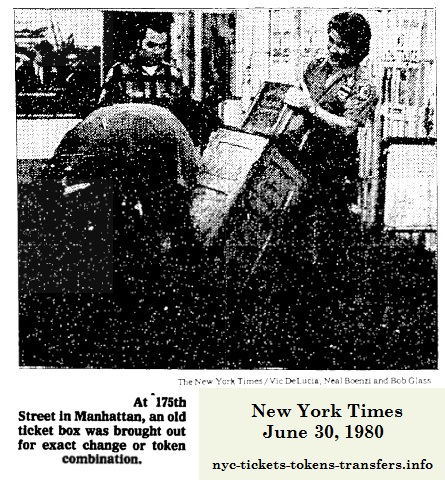 |
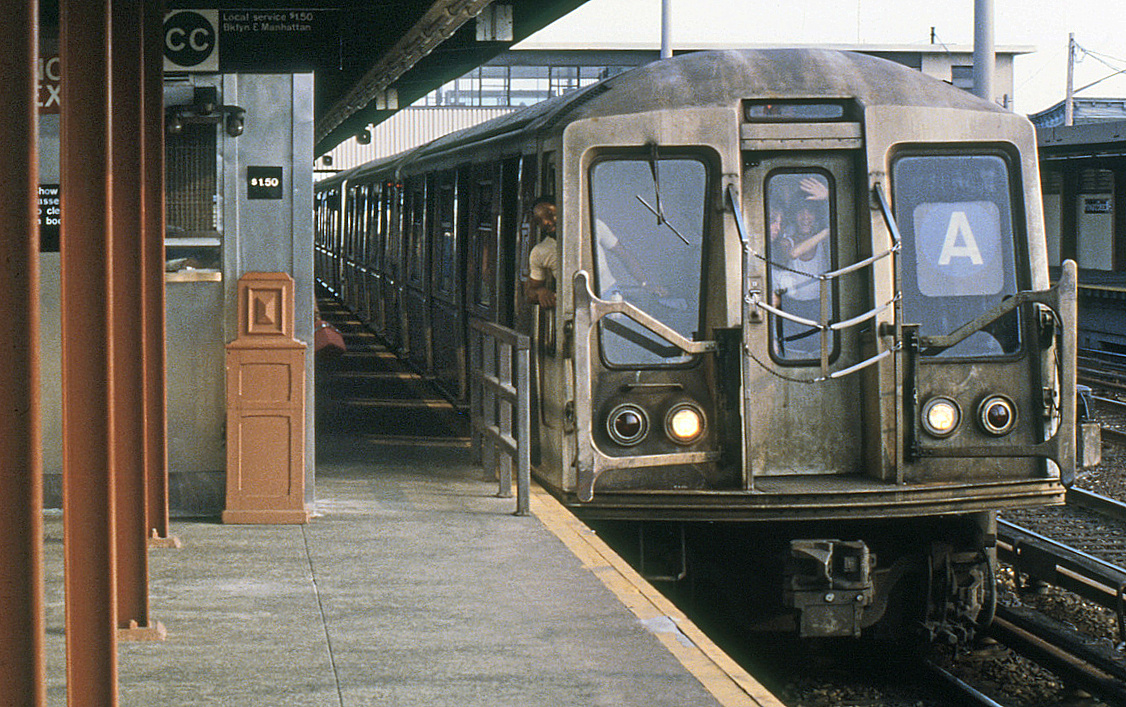
![]()
| Manually operated booth-side Passimeter | |
|
These types of turnstiles were manually activated by the
change
clerk inside the booth. They were not automatic and there was no coin
operated mechanism
to release them. The passimeter was mounted halfway through the side wall of the change booth, with a gate and turnstile arm projecting outside the wall of the change booth, and with the side with the foot lever and counter projected into the booth. Usually a shelf covered the arm inside the booth so the clerk was protected from walking into it and had more work area. When a passenger who was entitled to travel for free, the change clerk would depress the foot lever which in turn released the arms, allowing the person to now pass through to the revenue side of the station. This happened more than people realize: it could be another transit employee, a policeman, a student, a vending machine owner filling up the Chicklets / Beeman's dispenser, or perhaps an advertising man changing the posters from Burma Shave to Barbasol. Coin operated turnstiles were mounted to the outside of the passimeter lane. In the earliest days of fare revenue collection, the terminology in the trade journals was specific: these were passimeters. Automatic coin operated versions were known as turnstiles. As time progressed, the passimeters were lumped into the turnstile category; and as passimeter gave way to the "electric lock gate", so as the passimeters faded from use; terminology was no longer an issue. |
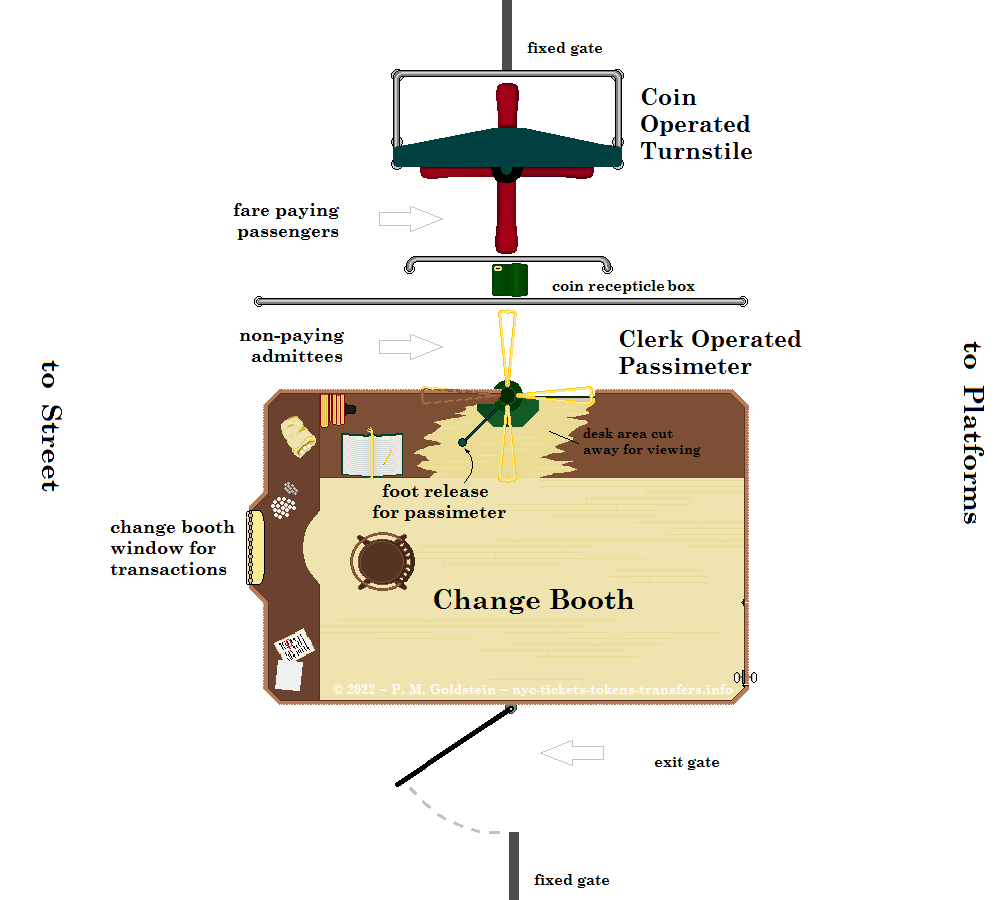 |
left unit:
IRT; right unit: BRT / BMT  |
|
designed by IRT;
manufactured by General Electric: the "Featherweight
Pressure Gate" - 1921
|
|||||||
| The first electro-mechanical / electro-pneumatic turnstile for the New York City subways and elevateds was not deployed until June 1921, and after being filed for a patent that same year, by Mssrs. Frank S. Hedley of Yonkers and James S. Doyle of Mount Vernon, NY. If these names happen to sound vaguely familiar, perhaps that is because Frank S. Hedley was the President and General Manager, and James S. Doyle was Superintendent for the Mechanical Department, of the Interborough Rapid Transit Company. They were revolutionary for their time and even had a name: "Featherweight Pressure Gate" Other turnstiles mechanism were developed prior to this model, and required some serious pushing to get it to cycle. But this model was design specifically for high traffic rapid transit use, and it easy of turning made it well suited to the crush of thousands of passengers per hour. After the patent was granted and the demonstrator model successfully tried out in service, General Electric Company was contracted to manufacture them. It took until 1928 to install at least one of these turnstiles in each and every station on the IRT. There are images in the NYTM archives showing this model in service in the the 1950's!  uncovered hub type better image requested |
 |
||||||
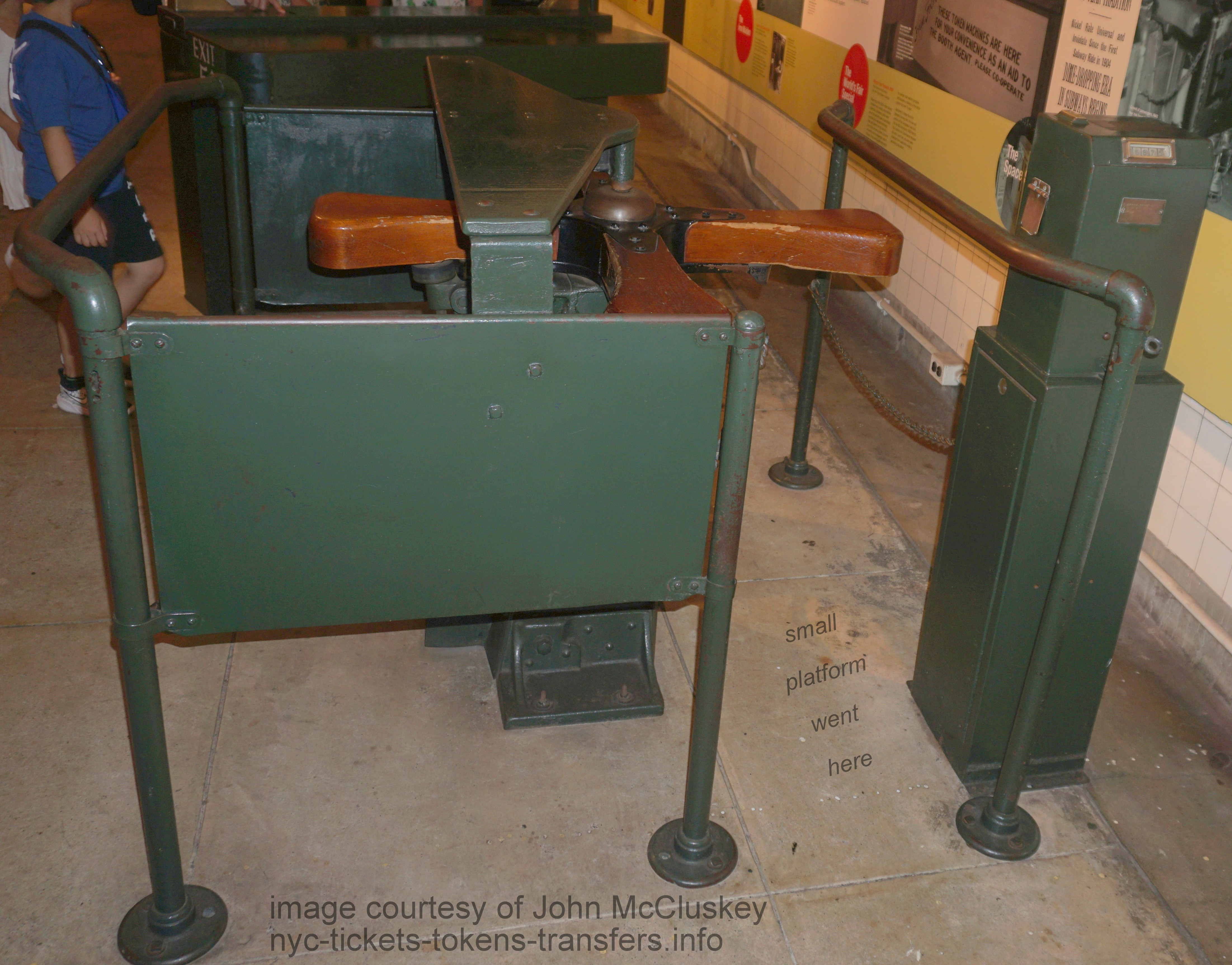 GE "Featherweight Pressure Gate" turnstile - entrance covered hub type there was a covered platform connecting the coin deposit and the turnstile mechanism, that is not included in the Transit Museum display. |
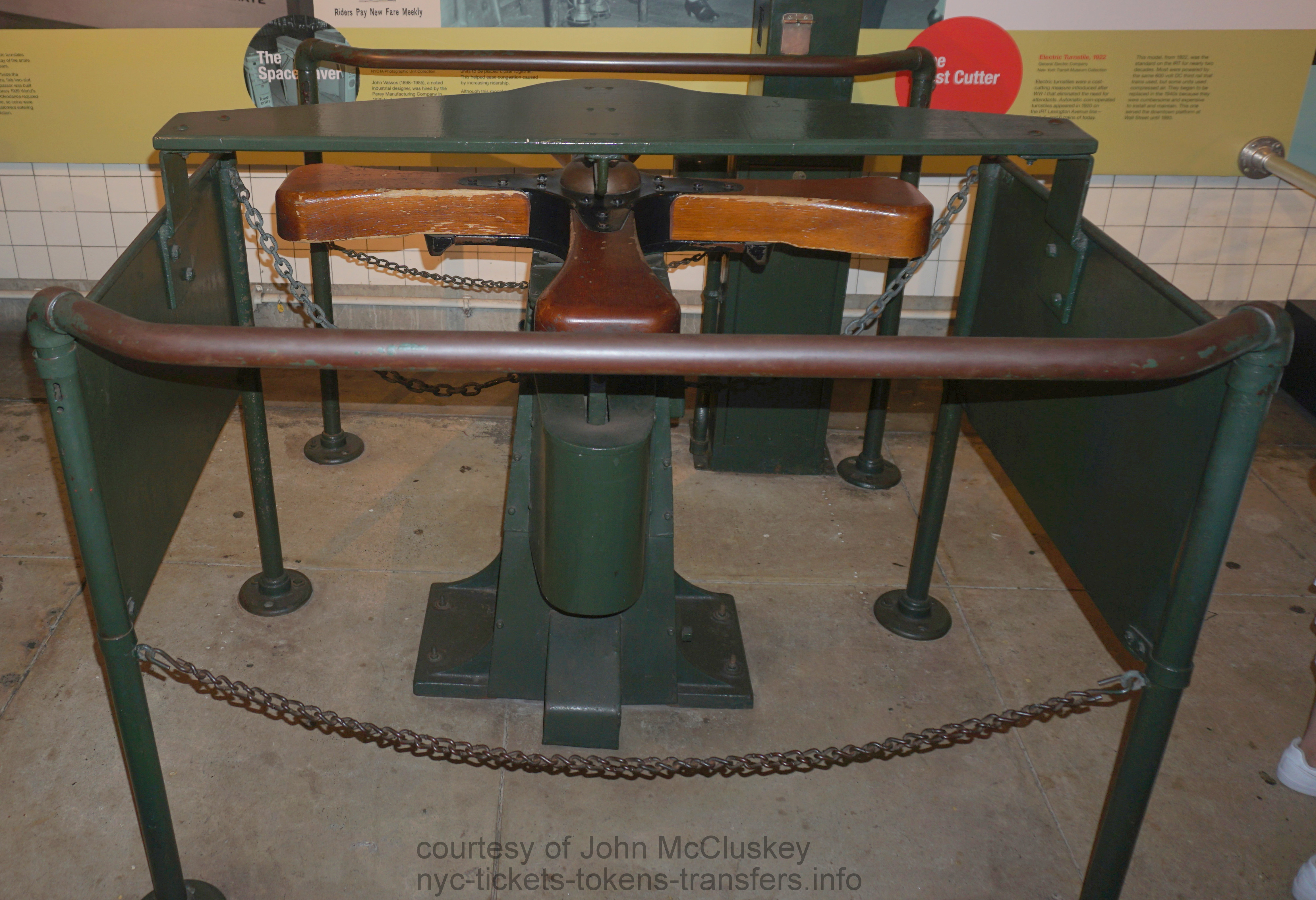 GE "Featherweight Pressure Gate" turnstile - side view covered hub type |
||||||
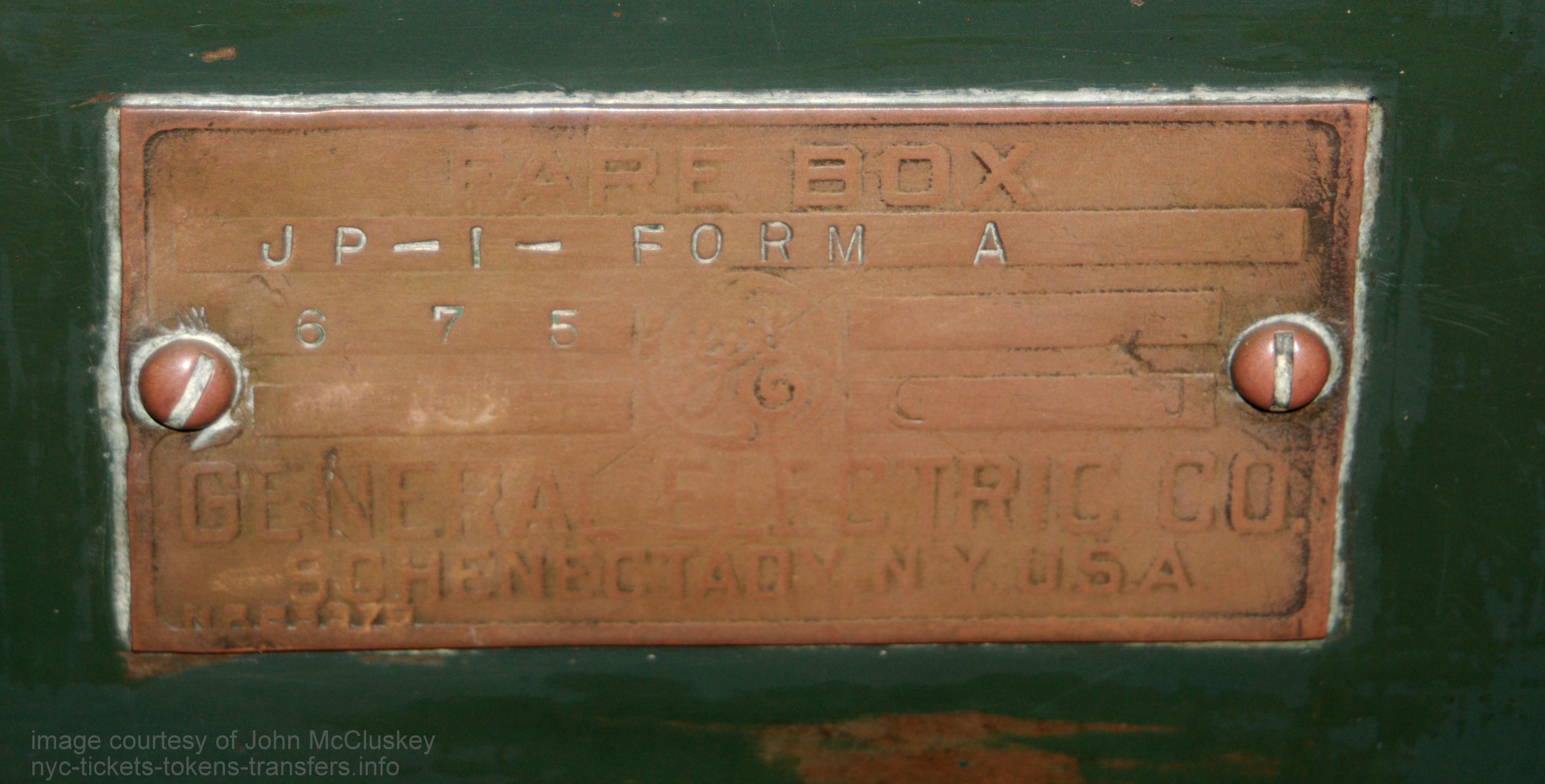 builders plate for GE "Featherweight Pressure Gate" turnstile |
|||||||
A little internet research located the following two entries which reveal that the Interborough Rapid Transit, and its subsidiary Manhattan Railway; were still in the process of purchasing turnstiles in January 1923! So, in short these documents confirm, and refute the New York Transit Museum's erroneous statements that the ticket choppers were replaced in 1921, as IRT / Manhattan Rwys were still purchasing turnstiles to replace the choppers. These documents also enlighten us to the cost of the turnstile: $258.00 per unit |
|||||||
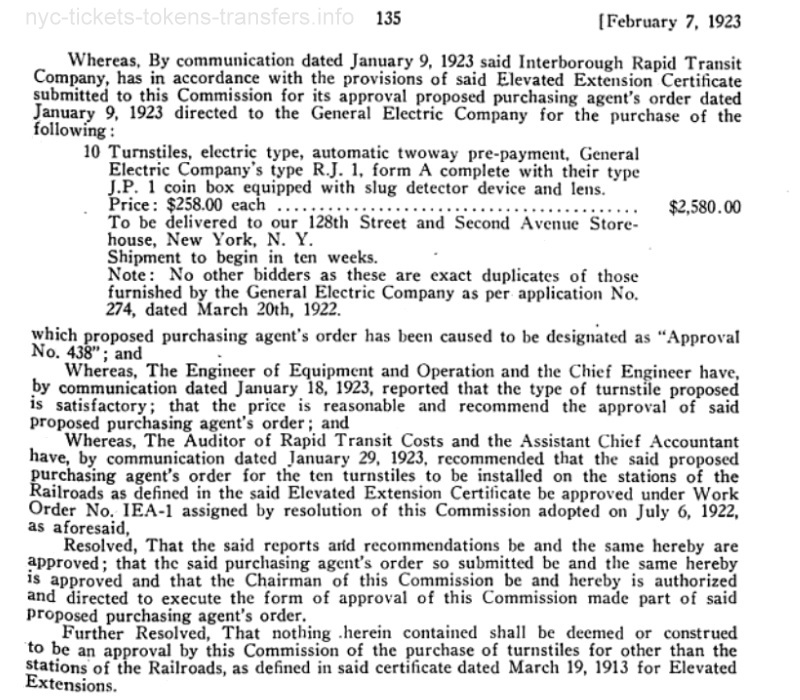 both: Proceedings of the Transit Commission, State of New York, Volume 3 January 1, to December 31, 1923 |
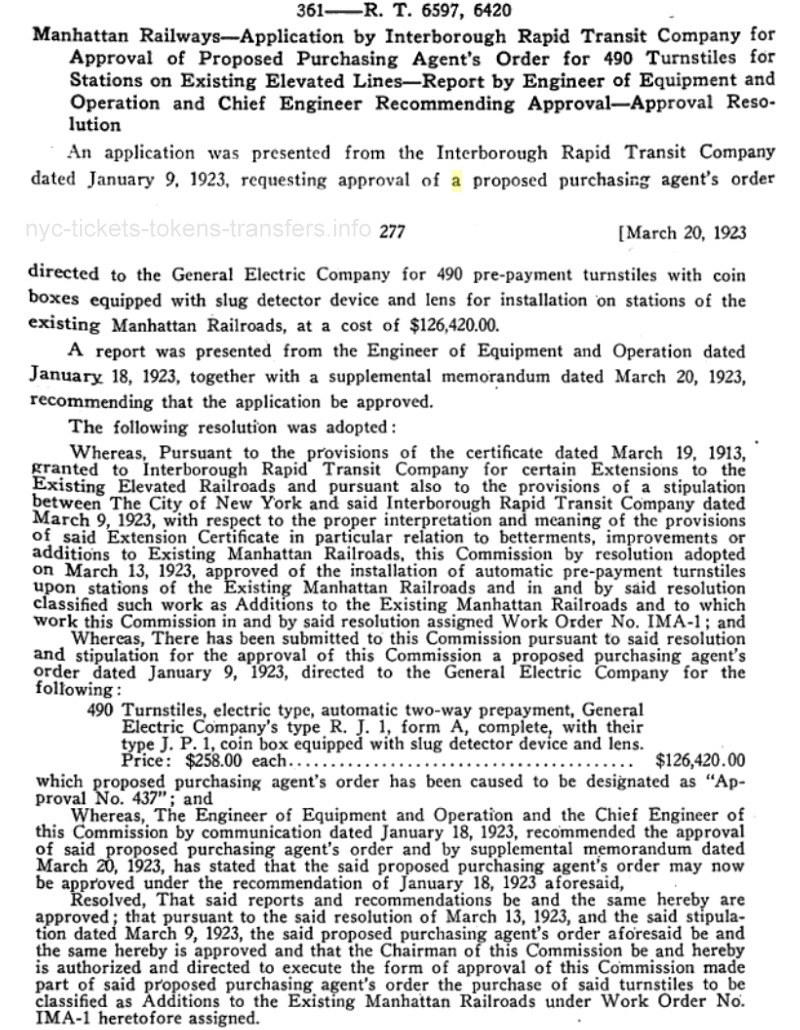 |
||||||
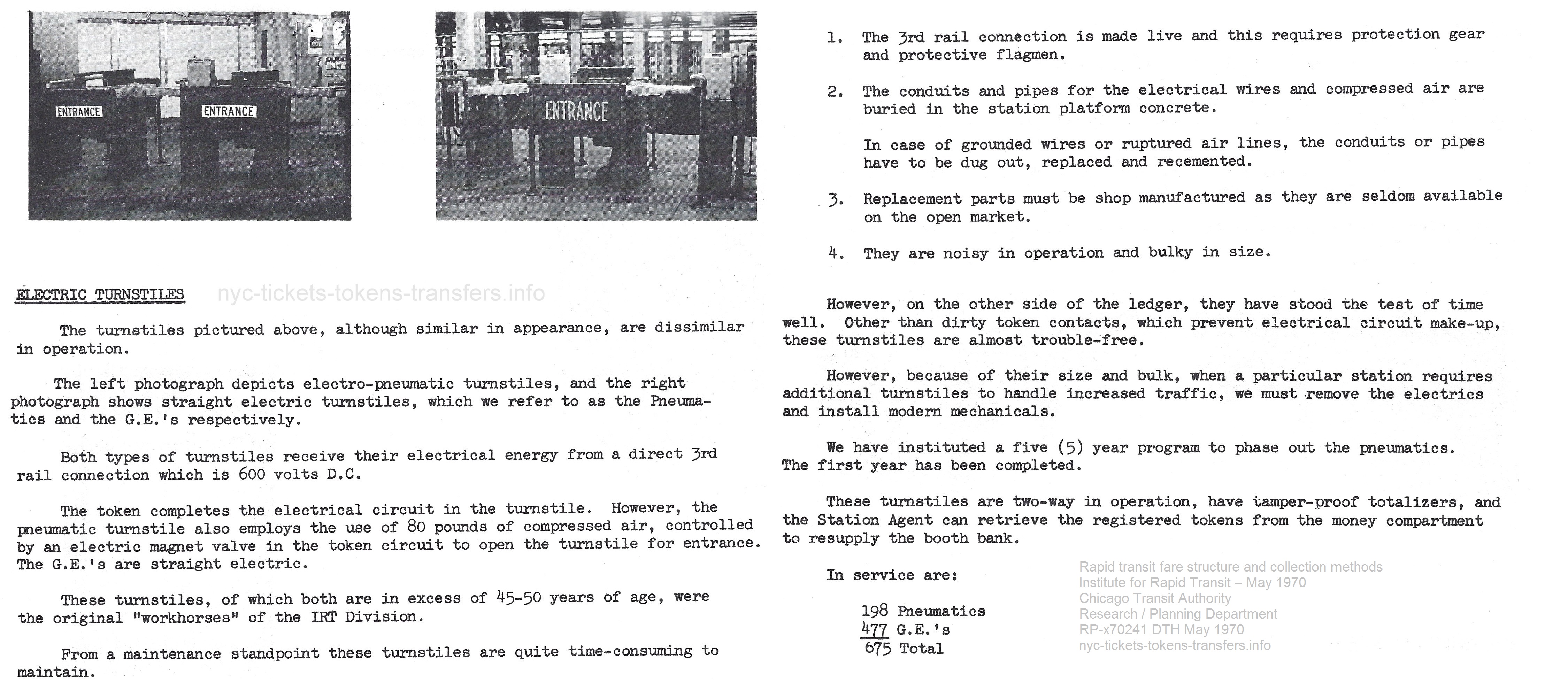
| fare media: | nickel | 1921 - 1948 |
| dime | 1948 - 1953 | |
| tokens | 1953 - |
|
Manufactured by Perey, Model #55 "Coinpassor". This type of turnstile; was first introduced in 1920 and this
model
was strictly mechanical, and would accept nickels, dimes and when introduced in 1953, tokens. The only online reference I can find regarding this model, is the 1970 "Rapid Transit Fare Structure and Collection Methods" published by the Institute for Rapid Transit (U.S.). In this reference it's referred to as the "BMT Perey Coinpassor":  1970 "Rapid Transit Fare Structure and Collection Methods" published by the Institute for Rapid Transit (U.S.) This now leads me to believe the IRT, the BMT and the IND all used different turnstiles. This would make sense as each was its own organization prior to unification in 1940, and only after would turnstile use be universal. Another interesting facet about the above entry, is that 20 were left hand rotation. One has to wonder what locations these were required for. Research is needed to ascertain if this model was in fact used on IRT lines as well. According to the image at right, this is an IND installation; so we are now aware the Perey 55 Coinpassors were installed at IND stations as well. As such, it appears this turnstile replaced the Low American four paddle turnstiles. Also, it is understood this model is not on display at the Transit Museum. The Coinpassors were designed to be bolted directly to concrete, and incorporated a rub rail for an adjoining turnstile lane. Note that the "Coinpassor" 55 is a cousin to the "Superstyle" 55 seen below. The Superstyle had a non-slip diamond plate / pattern plate base and a side railing for easy installation and removal in streetcars and buses. |
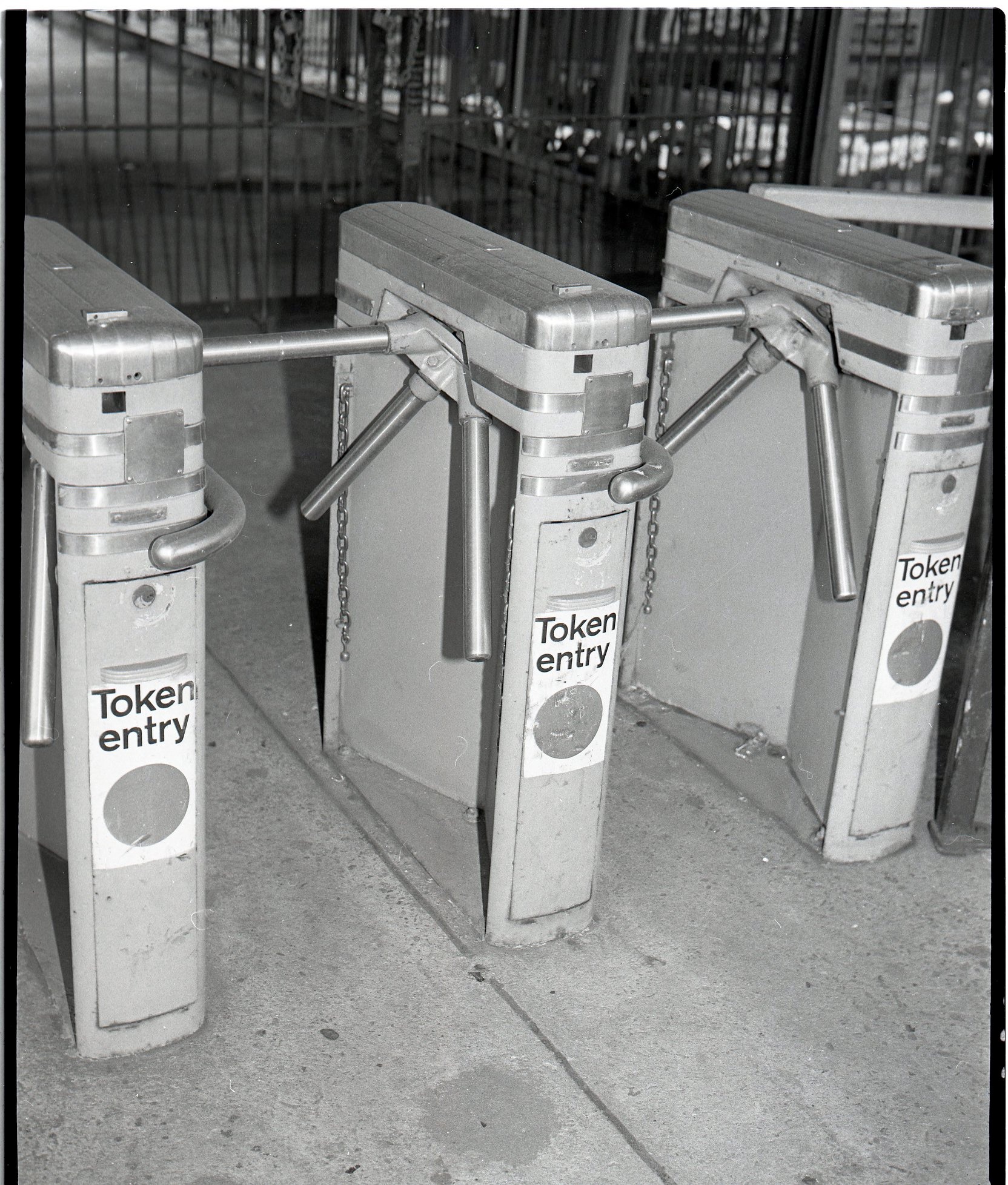 Turnstiles on IND, ca. 1970 New York Transit Museum archives. |
Perey Model "HD" 48 and
"Superstyle" 55 - circa 1930's
|
|||||||
This model of turnstile was not used for rapid transit (subway / elevated) fare collection, but it was used by the surface transportation vehicles beginning around 1930; namely the newer model streetcars (Presidential Conference Committee Cars) and even some internal combustion powered bus models of that era as well.
These models of turnstiles were utilized with both nickels and the "transfer tokens" issued by the surface operators in the 1930's and 1940's: Brooklyn Bus Corporation, Brooklyn & Queens Transit, Board of Transportation - Transit System - Brooklyn Manhattan Transit Division, etc. |
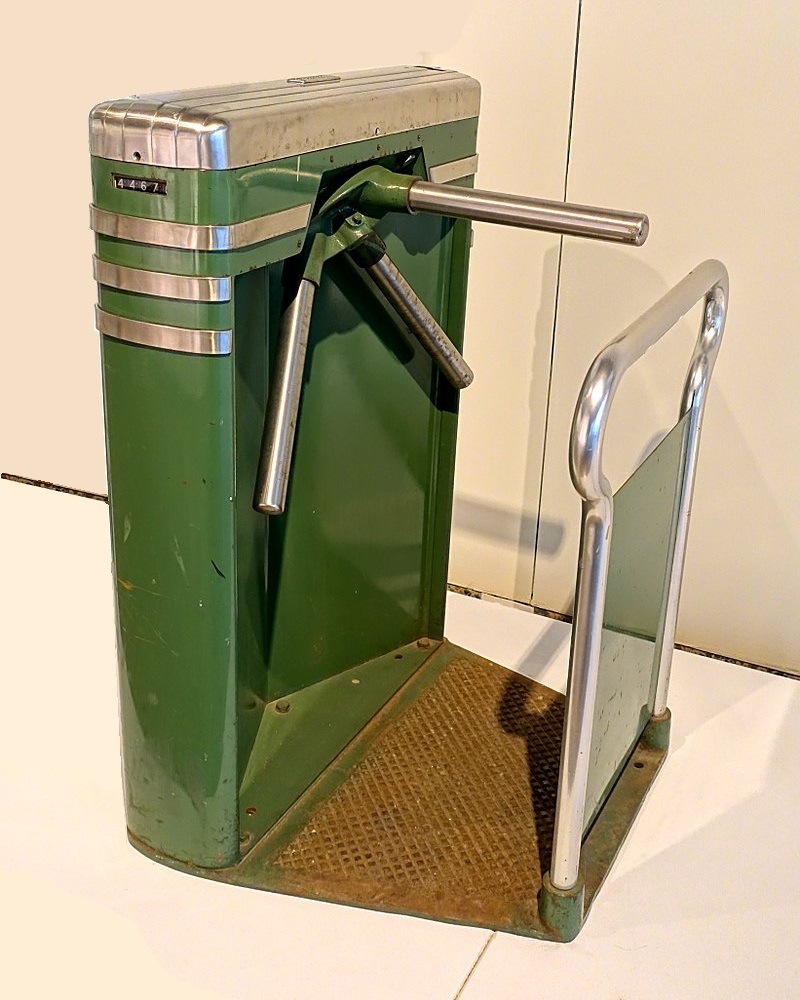 Perey Model
55 "Superstyle"
|
||||||
|
In this area of
operation, the surface transfer system had a lot of variations. There
were transfers that cost 2 cents, and some were free and some companies
charged 3 cents for the transfer. Normally, with a fare box equipped
vehicle; a
passenger handed their paper transfer to the operator / driver and the
passenger proceeded to the rear
of the streetcar / bus to find a seat. The installation of this turnstile hindered that operation. As the turnstile was mounted in the aisle a few feet behind the driver and the passenger now had to pass through it to reach the seating portion of the vehicle - it was accessible only by the passenger. The passenger now needed some form of fare media to activate the turnstile to be able to pass through. Since the transfer had already been prepaid; depositing additional funds was not the answer as that would incur a double payment upon the passenger. The solution laid with the use of transfer tokens to overcome that turnstile obstacle. When a passenger desired a transfer to another line, it was requested at time of boarding of the first streetcar / bus. The two cent surcharge was paid directly to the operator on the first streetcar or bus, or if it was free; presented the passenger with the applicable paper transfer. When that passenger boarded the second streetcar or bus, they surrendered the paper transfer to the operator; and in turn the operator gave the passenger a transfer token to be deposited into the turnstile, permitting the passenger to proceed through to the back of the streetcar / bus. In no other terms, it was an added labor procedure that accomplished the same end result. In the case of free transfers, a token was issued just as well to pass through the turnstile; however, it appears very likely that the two different color tokens were used to denote the different fare structure: one for free transfers and the other for 2 cent transfers. Perhaps at some point, if the companies were steadfastly adamant about retaining the use of the turnstiles and not fareboxes; an electric release for the turnstile operated via push button by the operator would have sufficed, eliminating the need for the transfer tokens. Despite the initial outlay of producing the token issues, and the labor incurred in handling them; it was the fact that the turnstile took up too much space - its placement in the aisle between the first set of seats; was the ultimate factor against its continued use. Double seats now had to be replaced with single seats, and the seating capacity was reduced by at least four passengers. Or, during rush hour; thirty standing passengers packed in like sardines (just kidding!) - more like maybe ten standees. In either case, it reduced the carrying capacity of fare paying passengers. Detrimentally its position, in cases of short and sudden stops; standees would bang into it and / or even fall over it. More over, in a situation where passengers needed to get off the bus via the front doors, in case of emergency or when the rear exit doors were blocked by a crowd, the turnstile hindered this exit route. So, fareboxes remained king of revenue collections on the surface transit vehicles. Note that the "Superstyle" 55 seen above is a cousin to the "Coinpassor" 55, in the preceding chapter. The Superstyle had a non-slip diamond plate / pattern plate base and a side railing for easy installation and removal in streetcars and buses; whereas the Coinpassors were designed to be bolted directly to concrete, and incorporated a rub rail for an adjoining turnstile lane. |
|||||||
| fare media: | nickel | 1921 - 1948 |
| dime | 1948 - 1953 | |
| token | 1953 - post 1970 |
|
Manufactured by American Turnstile, model "Low American". This type of turnstile; was first introduced in 1932, with 215 purchased. In this following reference this particular turnstile is referred to as the "IND Low American"; which infers it was used on the IND (Board of Transportation) lines. This reference also lists the Perey Coinpassor as being the "BMT Perey Coinpassor." With this publication, this now leads us to understand that the IRT, the BMT and the IND divisions all used different turnstiles. This would make sense as each was its own organization prior to unification in 1940, and only after the second unification would turnstile model ordering be universal for any division. |
 |
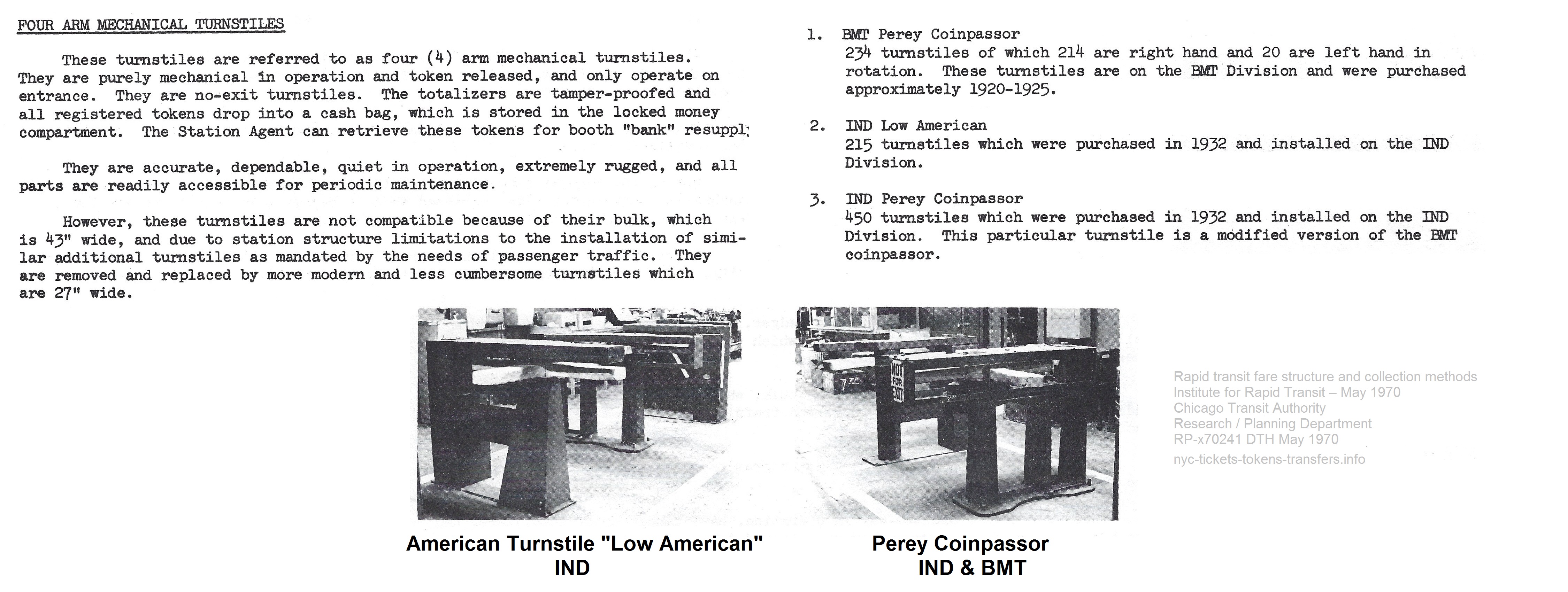
| fare media: | nickel | 1920 - 1948 |
| dime | 1948 - 1953 | |
| token | 1953 - post 1970 |
| Manufactured by Perey; Model Coinpassor A cursory glance comparing the IND Low American and the BMT / IND Coinpassors appear similar; but there are design differences. The Perey Coinpassor has three vertical legs and a sub-structure that protected the bottom of the arm mechanism whereas the Low American only had two legs with a horizontal plate connecting the two legs, with no protection for the arm mechanism. According to "Rapid Transit Fare Structure and Collection Methods" (Institute for Rapid Transit, May 1970): BMT version: 234 total units: 214 right hand, and 20 left hand operation (where used?) purchased 1920 through 1925. IND version: 450 purchased in 1932  |
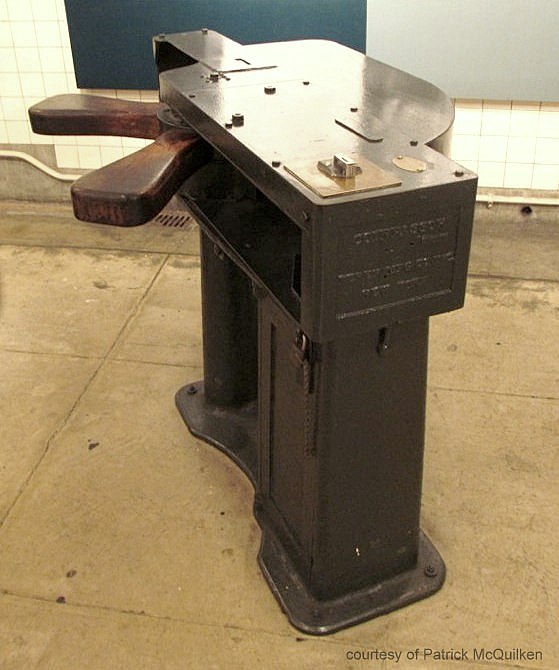 |
Perey World's Fair Model - Double Fare - 1939 - 1940
|
|||||||
|
Manufactured by Perey, (model number not known at
this time). This
type of turnstile; was used for double fare
applications,
specifically at the 1939-1940 World's Fair at Corona - Flushing Meadows
Park. Double fares were collected at the World's Fair Station of 1939 - 1940 for passengers arriving to visit the location. An extra 5 cents was payable upon exit from the station, making the total fare paid 10 cents. Departing the World's Fair Station charged 10 cents upon entrance. So in essence, this turnstile was dual fare, dual denomination. This extra fare was collected to help offset the cost of the temporary subway line extension to the Fair Grounds, which was built at a cost of approximately two million dollars. At the conclusion of the World's Fair, only $500,000 in fares had been collected to offset the cost leaving the Board of Transportation to absorb the remaining balance. A similar "exit payment" style of turnstile was used from 1956 through 1975 on the IND Rockaway Line south of Howard Beach, and of which also collected a double fare in the means of an extra token upon exit; and for the time span listed. It is not known at this time if this 1939 Worlds Fare Model Turnstile were repurposed for the Rockaway Double Fare Stations, or a different machine entirely was placed into use. 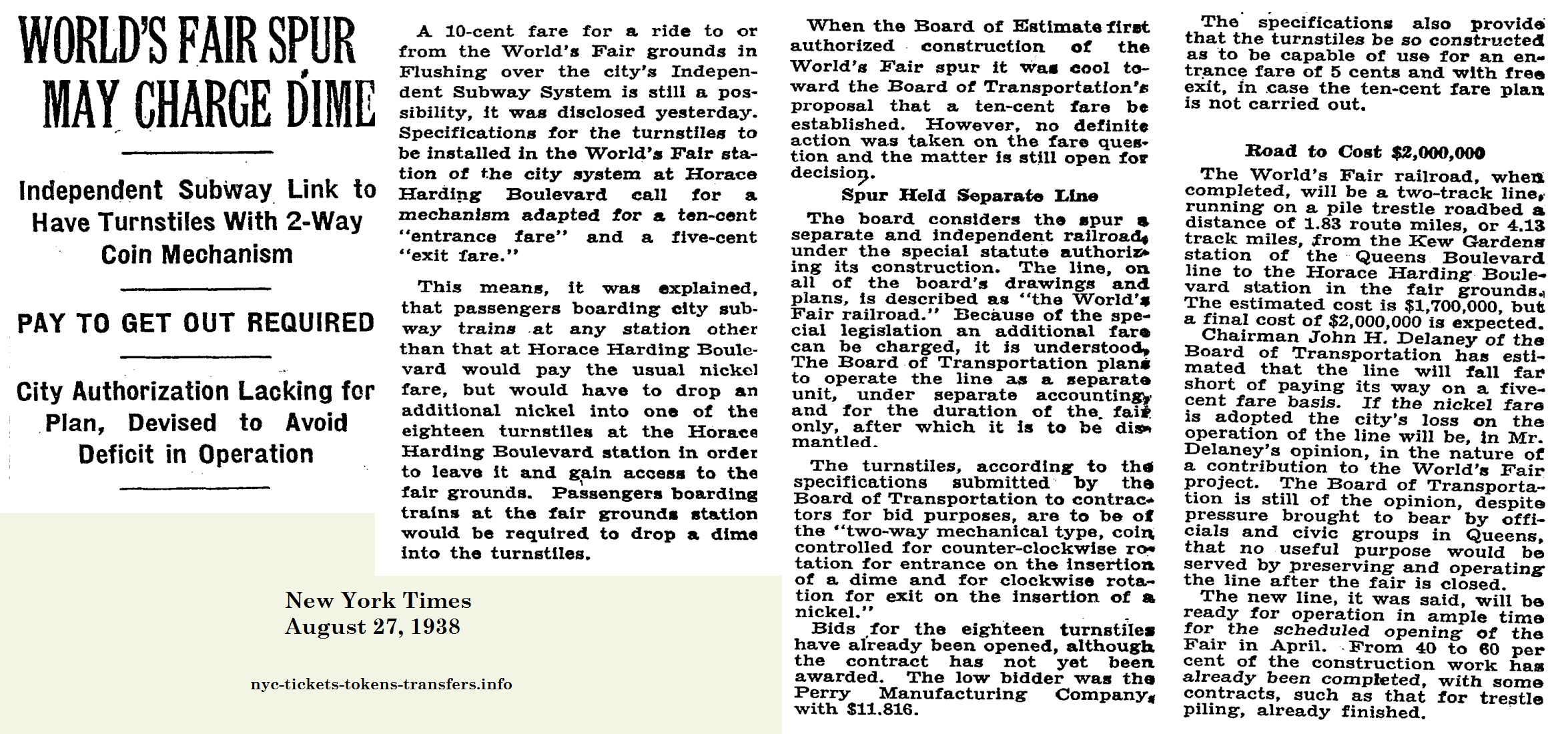 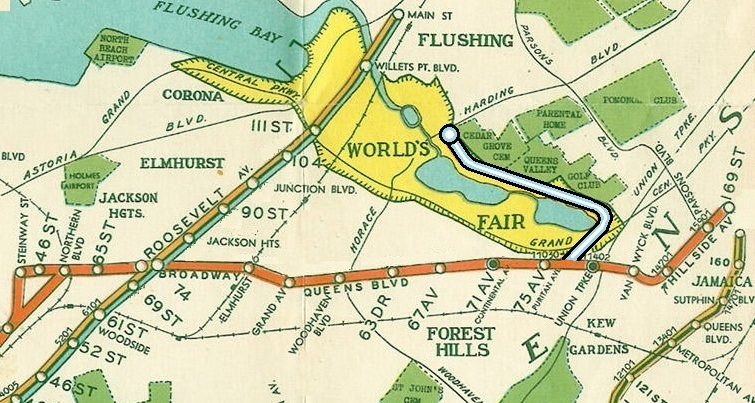 |
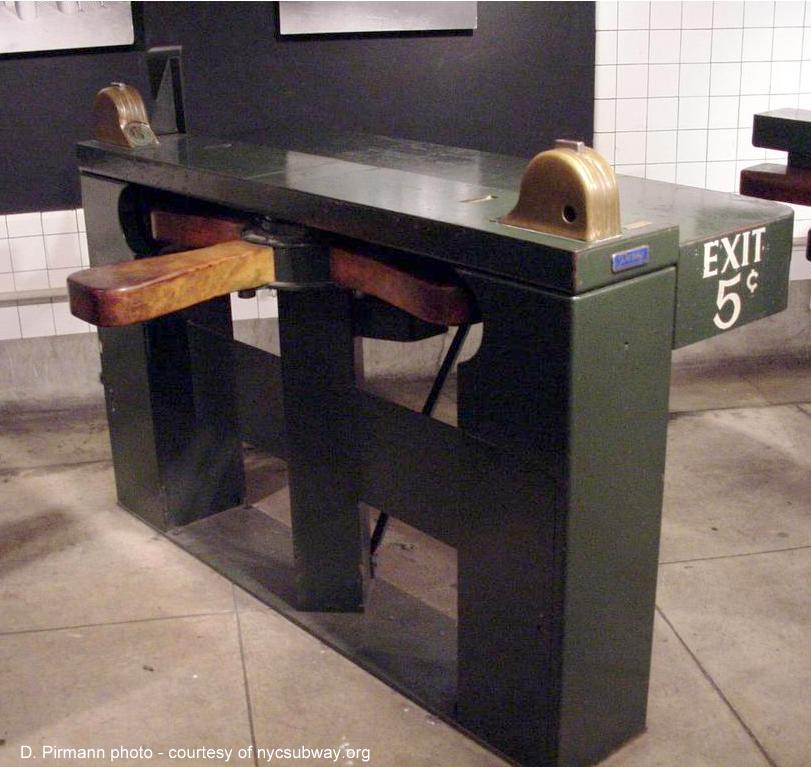 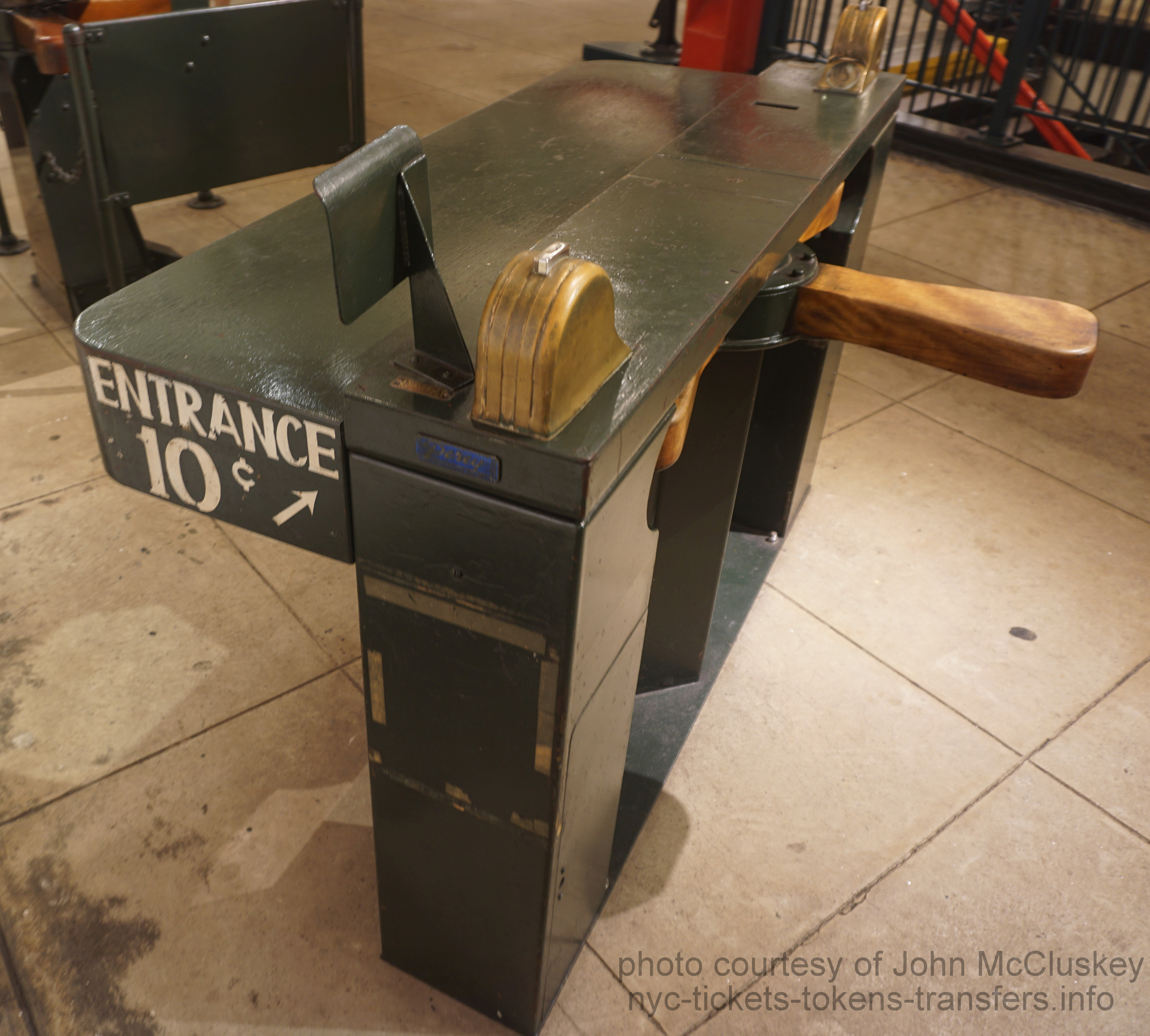 |
||||||
Perey Model 37 Square End Kompak - 1934
|
||||||||||
|
Purchased in 1934 for the BMT Division. 120 in service (1970) of which
110 are entrance only and 10 are two way operation (entrance and exit.)
A notable feature of the Model 37, is this design was the first to featured a three arm conical turnstile arm arrangement, with the hub mounted at a 45 degree angle to the ground. This design allowed for a significantly smaller footprint for the machine on the platform floor. These turnstiles were 27" wide, compared to the old style four arm turnstiles which were 43" wide due to the fourth wooden arm jutting out from the right side of the machine. These new turnstile arm configurations, eliminated the fourth arm entirely, and with it; the unused space required between turnstiles. Therefore another turnstile lane could be placed immediately to the right of this one, increasing passenger payment capacity. This saving of space allowed more turnstiles to be placed "en block" (several grouped together) and in a row, and hence increasing fare payment capacity for that location. This was especially beneficial in large stations, such as those at junction points or at terminals, that saw large amounts fare payment traffic. Simple, utilitarian, compact, easy to clean, easy to maintain. The Model 37 became the workhorse of the transit system. |
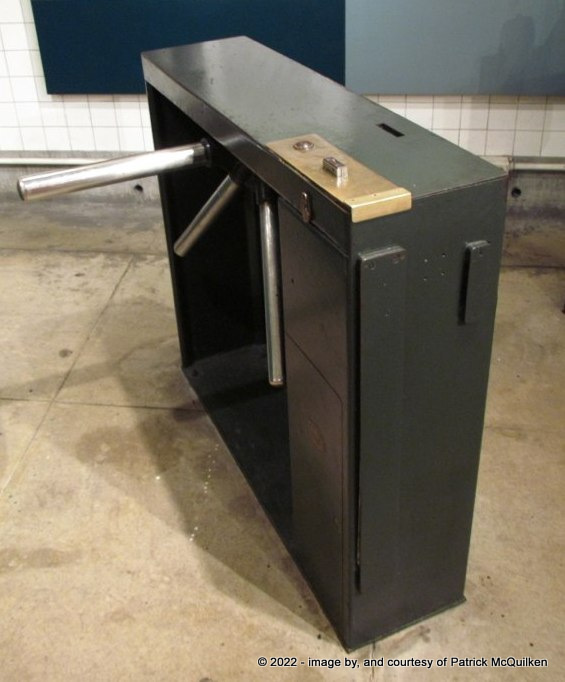 |
|||||||||

Perey Model 97 Round-End Kompak - 1946
|
||||||||||||||||
| Designed by
John
Vassos, a renowned industrial designer; of whom was hired to design
this new
streamlined turnstile by Perey Manufacturing. Streamlining
was en vogue, and Vassos applied the look to many items, including
Nedick's food outlets, RCA household radios; and the first television
and entertainment centers (TV - radio - turntable in cabinets). Mr. Vassos worked with other notable industrial designers of the time, including but not limited to: Henry Dreyfuss, Raymond Loewy and Norman Bel Geddes; but Mr. Vassos' name is not as well recognized as the others, as he refrained of opening his own firm. This design featured the conical turnstile arm arrangement as well, which allowing for smaller foot print space. This conical arm arrangement has become the standard configuration for future turnstile models. Another interesting fact about this model; it was designed for either one way operation (enter only) or two way operation enter and exit). This is because this would be the first model to be ordered by the Board of Transportation, after the first unification of 1940. As the IRT favored two way use (enter and exit) of turnstiles; yet the BMT and the IND favored one way turnstile use; (with exit via swinging gate at the token booth or HXT (High Exit) gates at unmanned locations.) Eventually is was decided to purchase all the Model 97's two way (enter and exit) and as far as is known, all 97's and later models were two way operation. According to New York Times newspaper articles, it is believed this model turnstile was retrofitted with a half dollar acceptance mechanisms for Aqueduct Racetrack Special service in 1959. In 1966 the half dollar was eliminated and the "Extra Large Y cut out token" was issued upon the increase in fare to 75 cents for the same service. In 1970; there were a total of 1085 of this model in service: 408 - single token, one way |
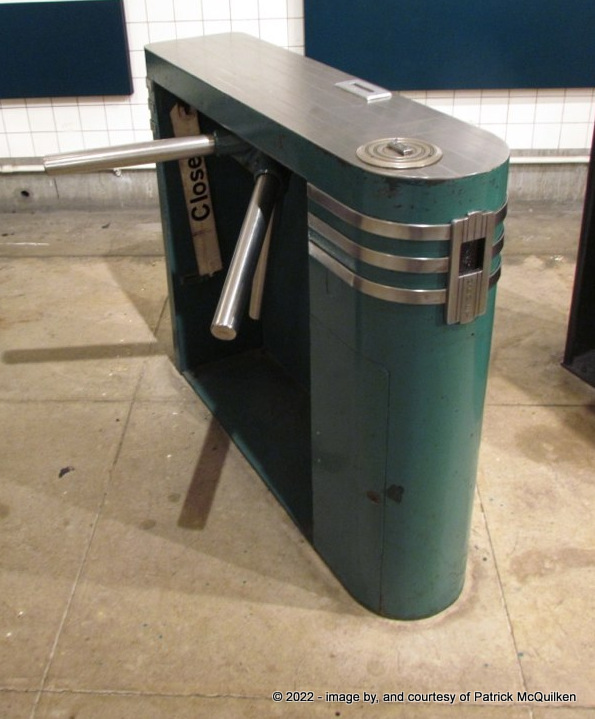 |
|||||||||||||||

Perey Model
107 - 1950's
|
|||||||
|
The next model in the evolution of conical arm turnstile. Design accents bear resemblance to the tail-fins and vertical taillights of 1950's automobiles. Its open bottom design under the turnstile arms facilitated better sweeping and mopping of the revenue area. Black. Chrome. Simple. Elegant. Mechanically, it shares coin acceptance mechanisms with the Model #97, however the turnstile cone is not compatible. With the exit of other turnstile manufacturers from the market, this model would become the the standard for replacement of older models, however; only 47 were placed into service. |
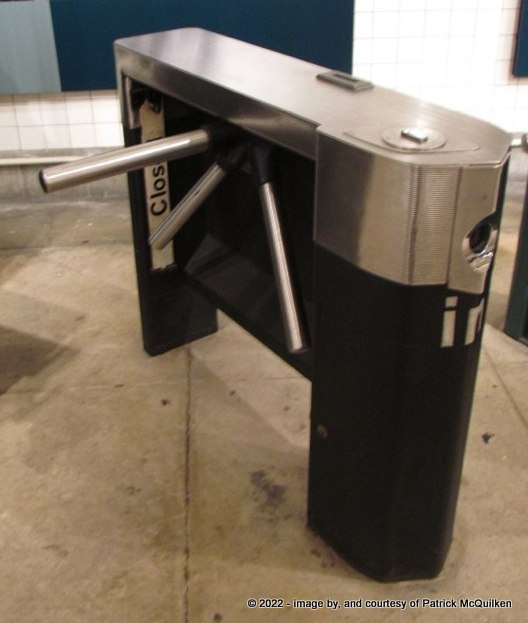 |
||||||

| Low Turnstyles | Perey Kompak (1 and 2 way) General Electric 4 arm, 2 way, electric American 4 arm, one way, mechanical Perey Coinpassor, 4 arm, mechanical |
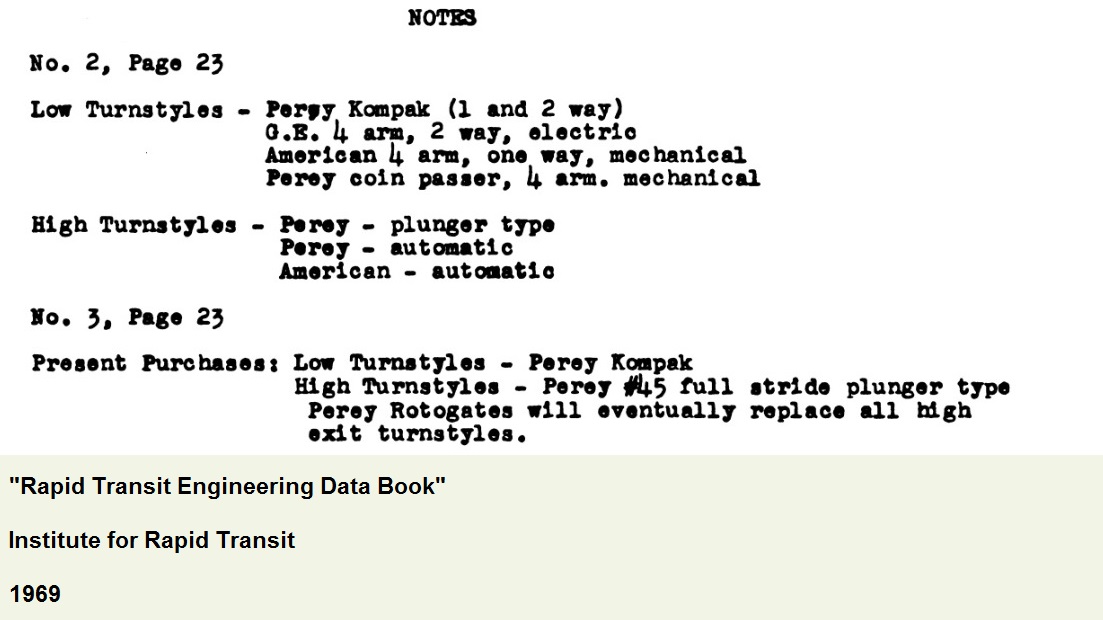 |
| High Turnstyles | Perey - plunger type Perey - automatic American - automatic |
|
| Present Purchases; Low Turnstyles | Perey Kompak | |
| Present Purchases; High Turnstyles | Perey #45 full stride plunger type Perey Rotogates will eventually replace all High Exit turnstiles |
| fare media: | two quarters only | 1978 |

Duncan Industries Model
TC "Token - Coin" - 1980
|
||||
| This model is not to be confused with the earlier (1978) attempted conversion of unknown model of turnstile. This model of turnstile was an attempt to collect both tokens and coins within a single turnstile. While the kinks had long since been worked out for a multiple coin mechanism in a turnstile; many New Yorkers had been so conditioned to the single token, they were placing the token or quarters in the first slot they saw, and this gave them a 33 percent chance of choosing the correct slot: 33% chance of coin in token slot - 33% chance of token in coin slot - 33% chance correct object in correct slot! As such, the design was not successful. But this model saw the incorporation of smooth stainless case panels for ease of cleaning and did not require painting. In any event, the acceptance of tokens and coins made this turnstile a dual fare media. But kudos to the NYCTA Revenue Department for the attempt! |
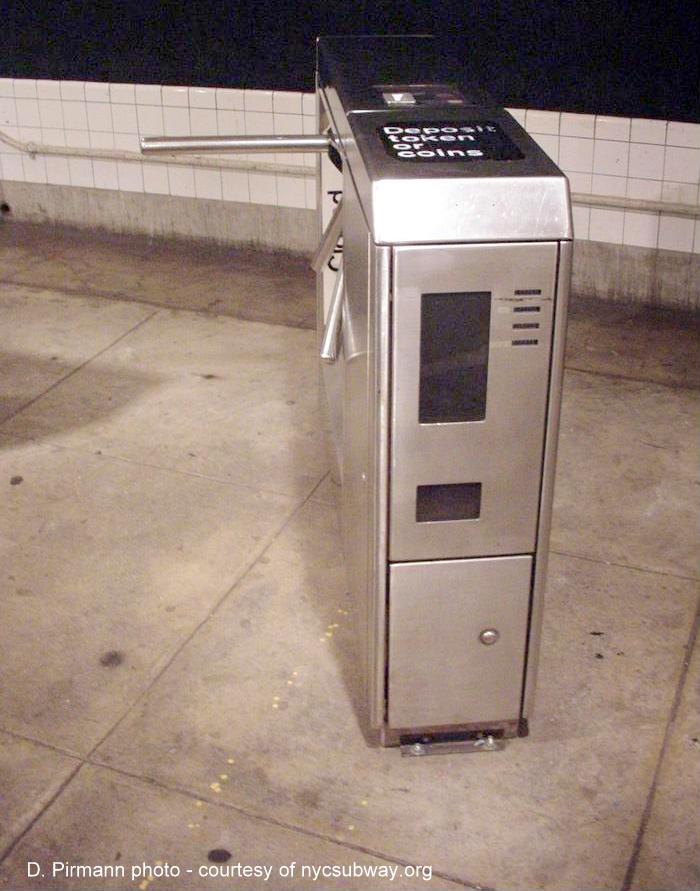 |
|||
| Tomsed
Turnstile Company Model 110 - 1983 fare media: token 1983 - 2003 |
|
Not a great deal is known about this model, or its reason for installation. It could simply be a case of Tomsed being the lowest bidder for the contract. Tomsed is known to also manufactured the new stainless steel one way High Exit Gates. Perhaps a deal was reached where the NYCTA would take 5000 High Exit Gates, and 500 turnstiles on an approval basis, but this is unconfirmed. Brushed stainless steal case with minimal seams and smooth joints make for easier sanitizing, especially when the "token suckers" were at their height. Did not require painting and was better for keeping internal mechanisms free of dust and dirt. Tomsed was purchased by Boon Edam in 2005, a Dutch company that also specializes in gates, turnstiles and other revenue controlled access items. Research will be forthcoming. |
 |
AFC
Turnstile (Cubic) Automatic Revenue Collection Group - 1992
|
|||||||
| This turnstile was released into public use initially as a token only machine in 1992. However, its original design was fully intended to be, and was upgraded to include; an electronic fare payment method such as the MetroCard, when said system rolled out at a later date, which was 1997. In taking tokens and MetroCard, made this turnstile dual fare media. These turnstiles were also designed to deter fare-evaders by turnstile jumping. The sloped top caps on left and right prevent a flat and level placement of hands, and the inverted U tubes and uprights towards the exit, limit the headroom and arm placement when hopping over. As always, the determined fare evader still found ways to circumvent paying their fare, but the instances were reduced. These are the last turnstiles to have been built with token acceptance in mind. Again, stainless was the material for the case. With the abolishment of token use in 2003; the token slots were capped and this machine became MetroCard Only. The machines are expected to have the internal MetroCard computer readers exchanged for OMNY computers and RFID pads mounted on top by 2024. These would be the last turnstile model to accept tokens and therefore is the final model applicable to the coverage of this website. |
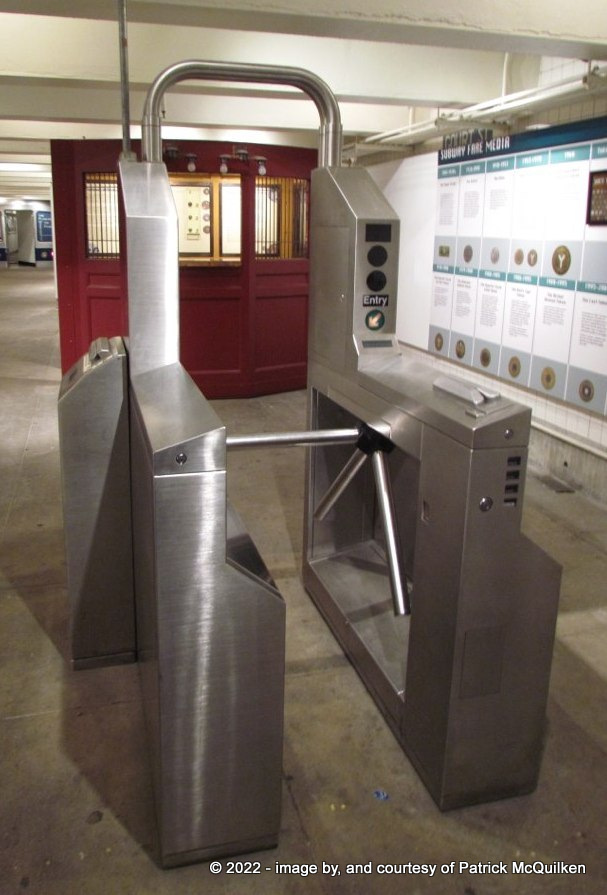 |
||||||
| Perey Model #45 (full stride) "Coin Passor" High
Entrance Exit Turnstile "HEET": ca. 1945 - the "Iron Maiden" Perey Manufacturing
|
||||||||||||
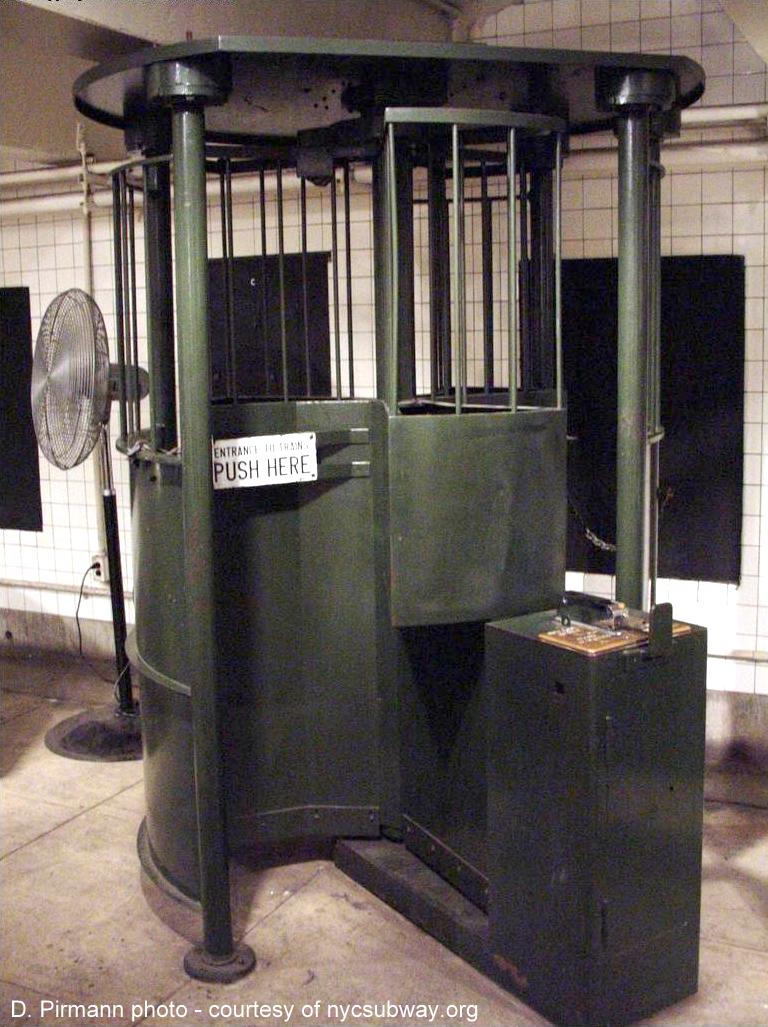 |
Perey Manufacturing model 45 full stride "Coin Passor" - ca. 1945 (not shown) American Turnstile 1931 - ca.1945 These turnstiles were coin - mechanical operated from 1945 to 1953 and then operated by tokens (only) after that date. A farepayer deposited a coin or token into the slot on top, and then pressed a plunger inwards from the front, which released a mechanism which allowed the passenger to rotate the turnstile while entering. After 120 degrees of rotation, the turnstile locked, until the next coin / token deposit and plunger activation. These are used at low traffic egresses of stations, where token booths may have been part time, or a passageway where a change or token booth may have been impractical due to space restrictions. In another consideration for their use, was when budgetary shortfalls became common place within the transit system in the late 1960's through the 1980's; these High Entrance Exit Turnstiles could be installed, replacing a part time or full time change / token clerk position. Collection of tokens was done by Collection Agents, not by Station Agents (Token Clerks) |
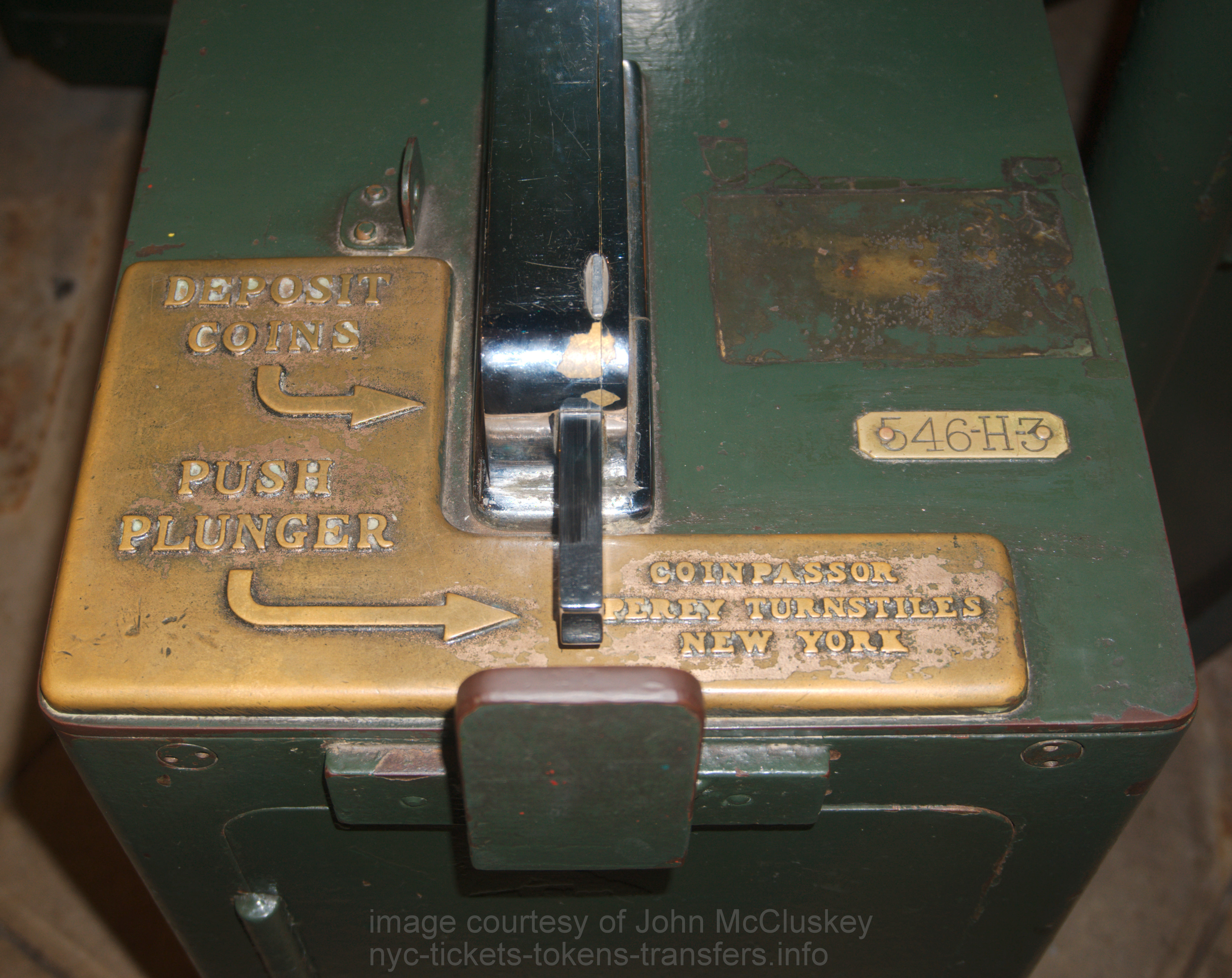 Plunger Mechanism |
||||||||||
 1970 "Rapid Transit Fare Structure and Collection Methods" published by the Institute for Rapid Transit (U.S.) |
||||||||||||
High
Entrance Exit Turnstile "HEET" - 1993
. |
||||||||||||
| Perey Rotogate? One Way High
Exit Gate "HXT" media: none |
||||||||||||
|
This is called a High EXit
Turnstile; but technically speaking, it
is not a turnstile. It is a one way gate, as there was no method of payment to enter through the device from either direction. The design incorporates a one way ratcheting mechanism to prevent unpaid entry, but freewheels in the exit direction. Inclusion here is because their use often coincided and were mounted next to or in close proximity to the High Entrance Exit Turnstile model above. As a kid, they could be fun to lock your little brother or sister in, by holding the bars from moving further once they were in the wedge shaped area where they could neither get in or get out; until a quick smack from your mother made you let them out. ☺ They remain significant hazards in cases of rapid evacuation, such as smoke conditions, fire, rapid flooding, derailments, acts of crime or terror attacks. But, as they are strictly mechanical, they work in loss of power conditions. |
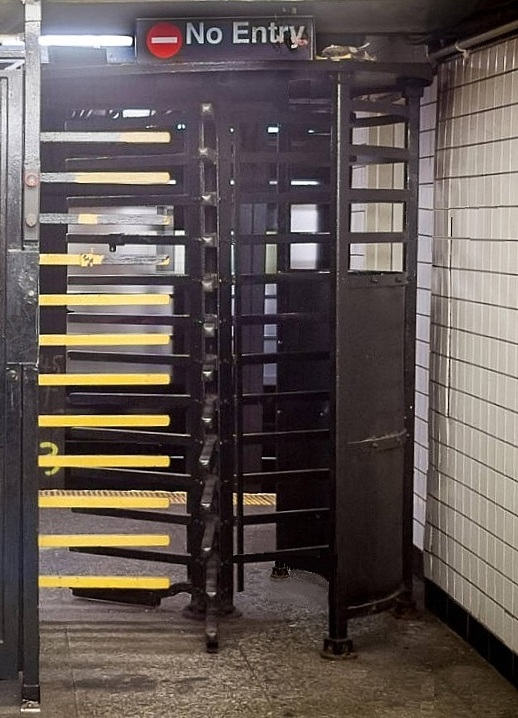 |
|||||||||||
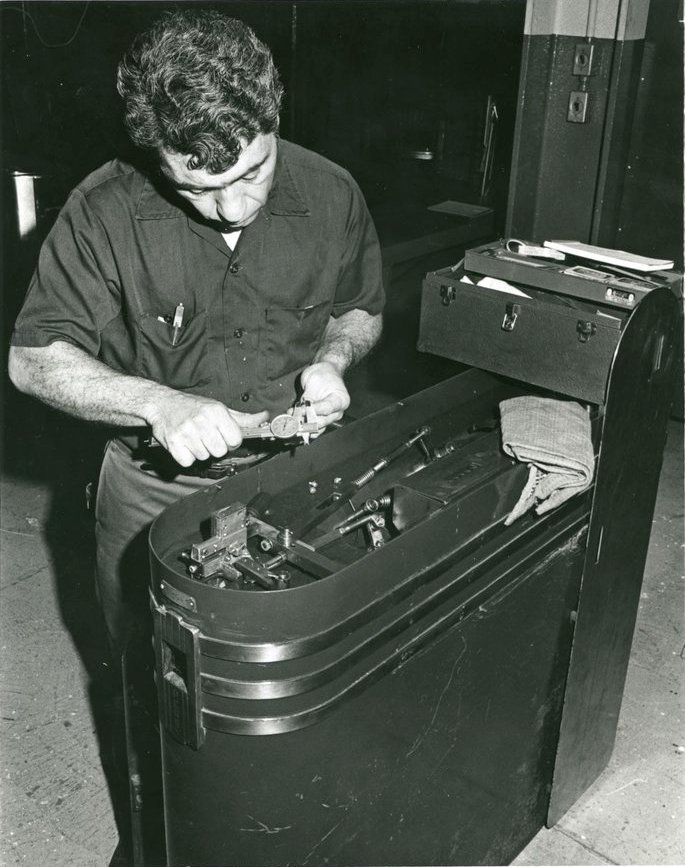 |
| Turnstile technician
with vernier caliper performing maintenance on a Perey Kompak
Round-End Model 97 - 1975 image courtesy of the New York Transit Museum image archives |
![]()
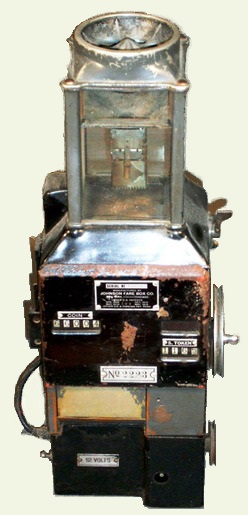 Model D - Manual |
But
with the advent of the
internal combustion bus, bus stops were relocated to the curbside out
of traffic lanes and now drivers had to steer the bus in and out of the
stops as well as swerve in and out of traffic. When considering a bus driver had to collect fares, make change, issue transfers, collect transfers (and make sure they were valid on both date, time as from an appropriate connecting route), keep tallies of same; on the rare occasion assist a passenger in boarding or alighting from the bus, let alone actually driving the bus (especially in congested traffic), making change was a distraction that could be eliminated. Especially when a passenger realized last minute they needed change or a transfer for a connecting line and the bus was already moving towards the stop! Driving and making change did not make for a good combination, but they did it. Early fare boxes had a crank on the side that the driver had to rotate (like a coffee grinder) to sort and count the change which then dropped into the coin box below. In New York City, these were the Johnson Farebox, Manual D Model and can be seen at left (please note: this is the only the upper sorting and counting portion only; the coin box / pedestal is not seen in the photo.) Note that the Model D did not accept quarter dollars - only pennies, nickels, dimes and one size of token. IRT Dyre Avenue Line Collection Method
It was most interesting to learn that the Model D was used on board subway cars of the IRT Dyre Avenue Line for fare collection between the hours of 9:00 pm and 6:00 am daily! 3. "Conductor on train Train fare collection is utilized on the Dyre Avenue Line of the IRT Division between the approximate hours of 9:00 P.M. to 6:00 A.M. daily. On this line there are five (5) stations involved. Passengers have free access to the train platform. Upon entering the two (2) car train at the Conductor's position, the passengers deposit their fare in a Johnson Fare Box which has a locked box for the fare receipts. Four (4) type "D" hand operated Johnson Fare Boxes are employed in this phase of fare collection. The receipts from these locked boxes are removed and reconciled with the register reading. The receipts are then bagged and deposited in the drop safe in booth R-328 East 180th Street Station, which is the beginning of the Dyre Avenue Line." |
|

| The next farebox to be installed on NYCTA buses were Johnson
Model
K25 seen at right. These were simplified for operation with
the
lever instead of a crank to drop the coins. It also had a coin drawer for rejects or if the operator needed change to refill his manual coin changer. This model accepted: pennies; nickels, dimes, quarter dollars; as well as two sizes of tokens. This model too sat upon a floor mounted pedestal that was enclosed on three sides and acted as a storage cubby for the driver. Keep in mind the NYCTA did accept pennies until at least 1955, as they were being used by bus drivers and trolley operators to make change for 2 cent, 6 cent and 7 cent continuing ride tickets, and the 13 cent bus fares. Around 1966, a new problem surfaced - the armed robbery of bus drivers. Robbers were brandishing a knife or a firearm, and relieving the driver of his change maker and the change within the farebox. Remember, at this time, the driver had access to the change to replenish his change maker or to empty the farebox at the end of the route. When aggregated at the end of a shift, meant the fareboxes could hold a few hundred dollars. Until this point, the problem was isolated to perhaps two or three drivers getting robbed a year. We shall discuss the details of Bus Change Maker & Farebox Robberies in greater detail in the Fare Crimes chapter below. |
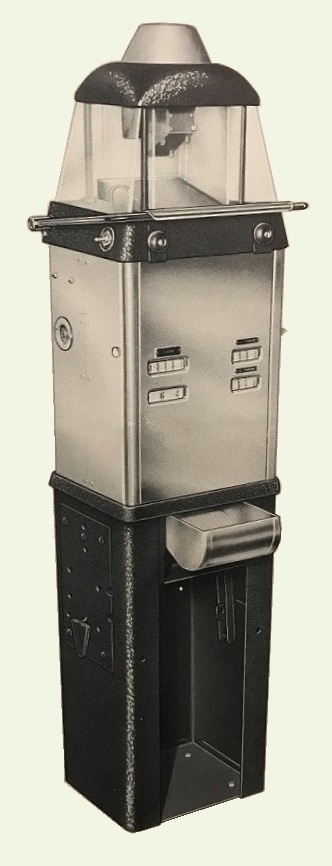 Model K25 (early version) |
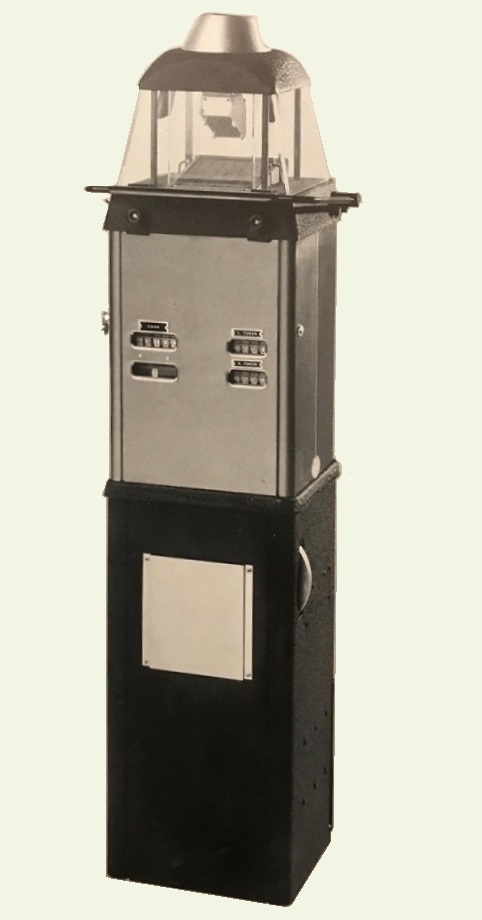 |
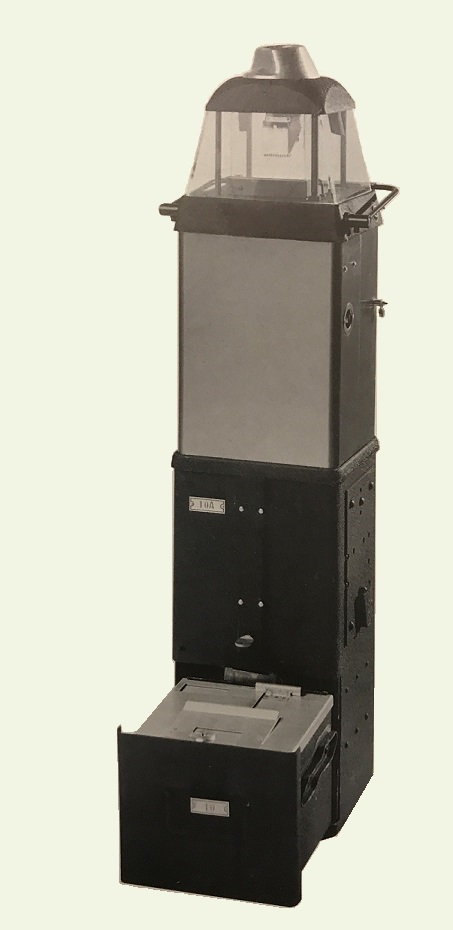 |
Also by this
point in time, the Johnson Farebox Company had been bought out by Keene. Keene kept the Johnson model numbers but substituted their name. Seen at left and right is the Keene Model K25 / K50. The Keene Model K50 is almost identical in outward appearance to the K25, with the added internal feature to accept half dollar coins. We definitely know the K25 were installed in NYCTA buses, but the K50 is unconfirmed. While the first version of the K25 had a open three sided pedestal (as seen in the above chapter at right), the second version of the K25 / K50 had totally enclosed pedestals and was now equipped with a double key locked coin vault drawer. The image at far left is the front of the newer K25 / K50 unit (facing the operator / driver). Note that the reject drawer has been eliminated, and a chrome slot for holding daily trip reports mounted on the pedestal. The image to the immediate left, is the back of the unit (facing the passengers) with the vault drawer in the open position, to show its placement and mounting. The vault drawer required two keys: one to unlock it and allow removal from pedestal, the other key to actually open the drawer lid. The first key, allowed personnel at the bus depot, aptly called a "vault puller"; to remove the drawer from the bus and bring to the count room, but not allow him to access the coins to prevent theft. A second key was kept in the count room, and it was this key that actually opened the drawer and allowed it to be emptied of coinage for sorting and counting. A further evolution of the Model K25/K50 was the K25M3; and were those units manufactured after 1979, which were now equipped to also accept the Susan B. Anthony dollar coins and of which we know the Transit Authority also accepted. This lockable vault drawer could hold more than the old built in coin reservoir and the drivers change maker. |
| K25 / K50 (second
version) (operators side showing coin counters) |
K25 / K50 (second
version) (passenger side - showing vault drawer) |
 |
On August 31, 1969, bus
drivers were relieved of the responsibility of making change, and buses went to exact
fare only.
But the criminal element adapted and now brought crowbars with them. So this led to another, even more secure; design of pedestal. The answer lay in doing away with the removable vault drawers altogether. They were removed from the pedestals; and coins now dropped into a sealed coin vault mounted directly to the floor of the bus; and within the pedestal. This sealed coin vault was equipped with a bayonet type hose coupler on the side. |
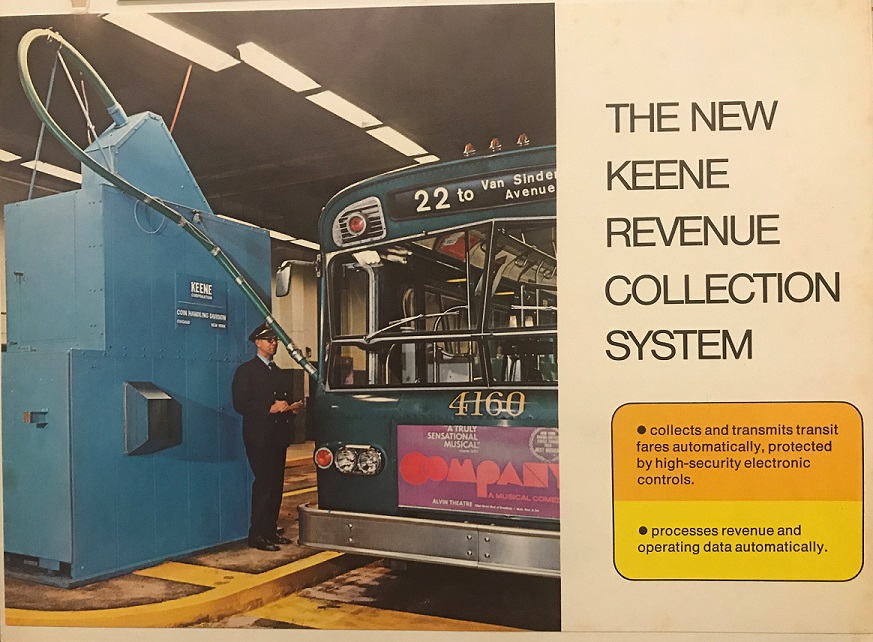 |
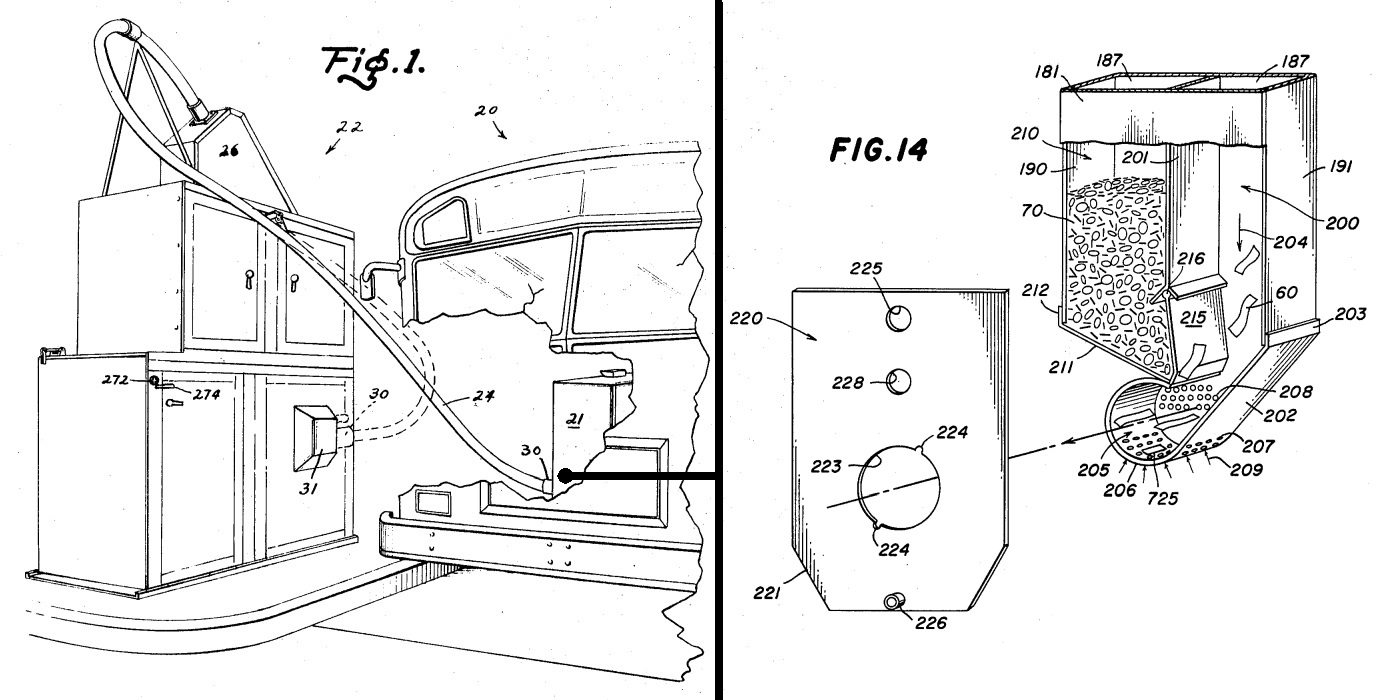 |
The lug on the bayonet opened a latched door (215)
allowing the coins to flow into the perforated "catch
basin" (205). While the patent drawing at left shows both coins (70) and paper money (60); NYCTA buses did not accept paper currency, and the coin bin (210) took up the space alloted for paper currency (200). A vacuum powered coin collector and processor (22) was installed at bus depots throughout the city around 1971-1972. An advertisement for this system seen at above right. The patent filing date is September 29, 1971, with the patent being granted on October 22, 1974. The assignee for the patent is the Keene Corp. Upon pulling into the depot at the end of a run, a revenue collecting agent hooked up the end of the hose to the port on the farebox, and activated the vacuum. As the air rushed into the perforations to fill the vacuum, it provided pneumatic force to the coins flowing down and the vacuum drew the coins into the hose and into the collector unit for sorting and counting. |

![]()
| Where would we be without the Railroad Clerk; also known as the "Change Clerk", or better known colloquially called a "Token Clerk." If we were lucky, we might have caught a fleeting glimpse of the motorman as the train pulled in, and more often we only heard the conductors voice, unless you sat in the conductors car. But it was the token clerk, that was our savior behind bullet resistant glass. They were, and are; remain the face of the subway system. We regular passengers knew our station clerks as they did their passengers. Their duties were more than just standing in the booth and exchanging money for nickels, dimes and later tokens to get through the turnstiles. Their duties were much more involved, and as such; they were responsible for many tasks including but not limited to the following: |
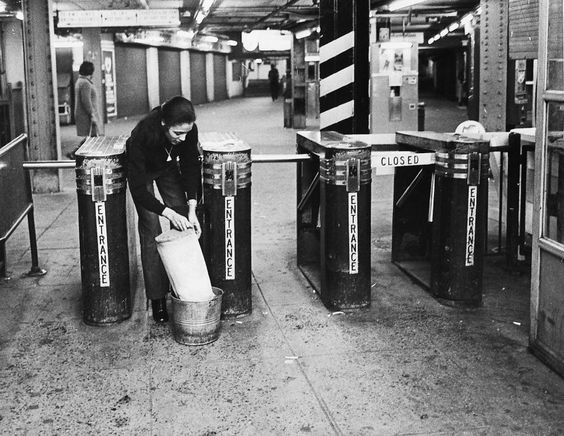 Rail
clerk Vera Turner's first duty at midnight was to empty the tokens
from the turnstiles at the 42nd Street and Seventh Avenue Station in Manhattan, NY - January 4, 1972 image courtesy of Newsday |
|
|
||
|
As this position of Railroad Clerk required the handling of money; Railroad Clerks were
bonded and insured. Meaning, they went through a rigorous background
check, and were insured against theft and embezzlement. As for token booth equipment, they were equipped with money counting appliances and the Downey-Johnson Model 20 P.H. Coin Counter was the centerpiece of this. Through various adjustments and settings, it could count all forms of US coinage, as well as tokens. A feed tray fed coins or tokens onto a steel rotating disc which in turn fed the coins or tokens into a rubber wheel, which then guided the coins into a tube (or bag). The tube holder could be set to 20, 25, 30 or 40 coin quantities if desired for rolling; otherwise, the canvas bag hung under the tube holder to catch what coins or tokens were being counted. In the image seen at right, a railroad clerk is seen in the process of counting "Bullseye" tokens. What the author is trying to determine at this time, is whether the "Ten Pak" (little plastic bags containing ten tokens) were filled and sealed in the booth by the Railroad Clerk; or were they packaged at the Revenue Room at 370 Jay Street and distributed by the Revenue Car. If a Railroad Clerk knows the answer, please contact me brghtnbchexp@aol.com |
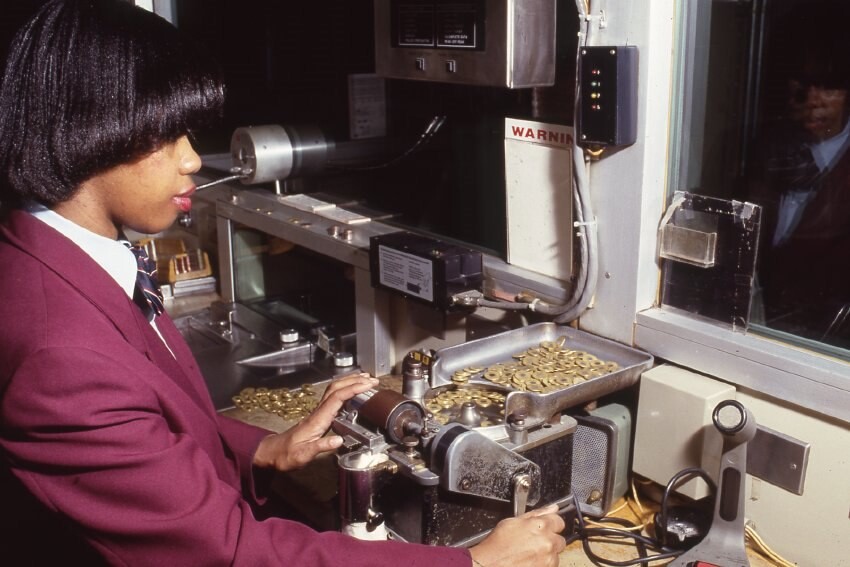 image courtesy of New York Transit Museum
|
|
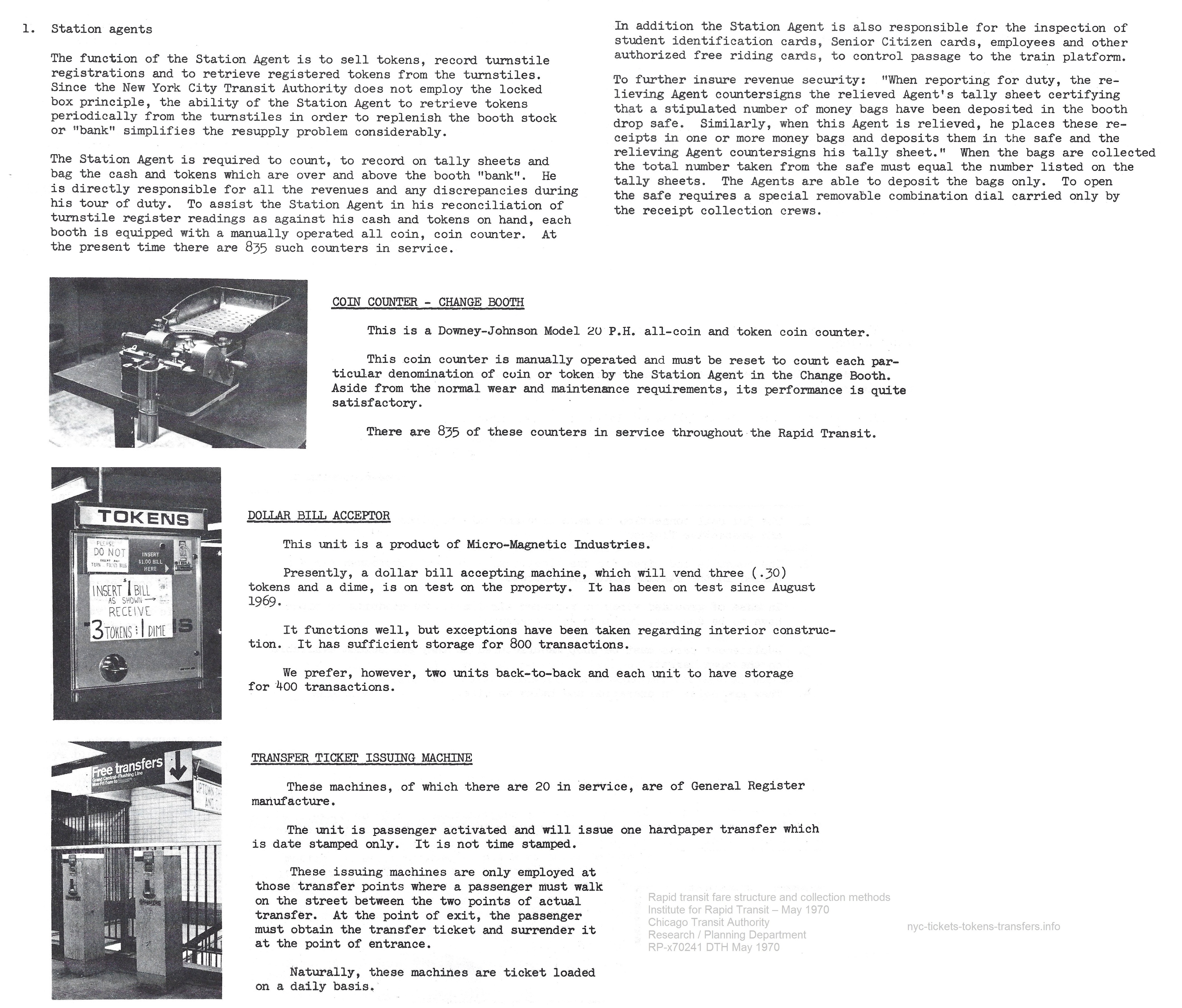
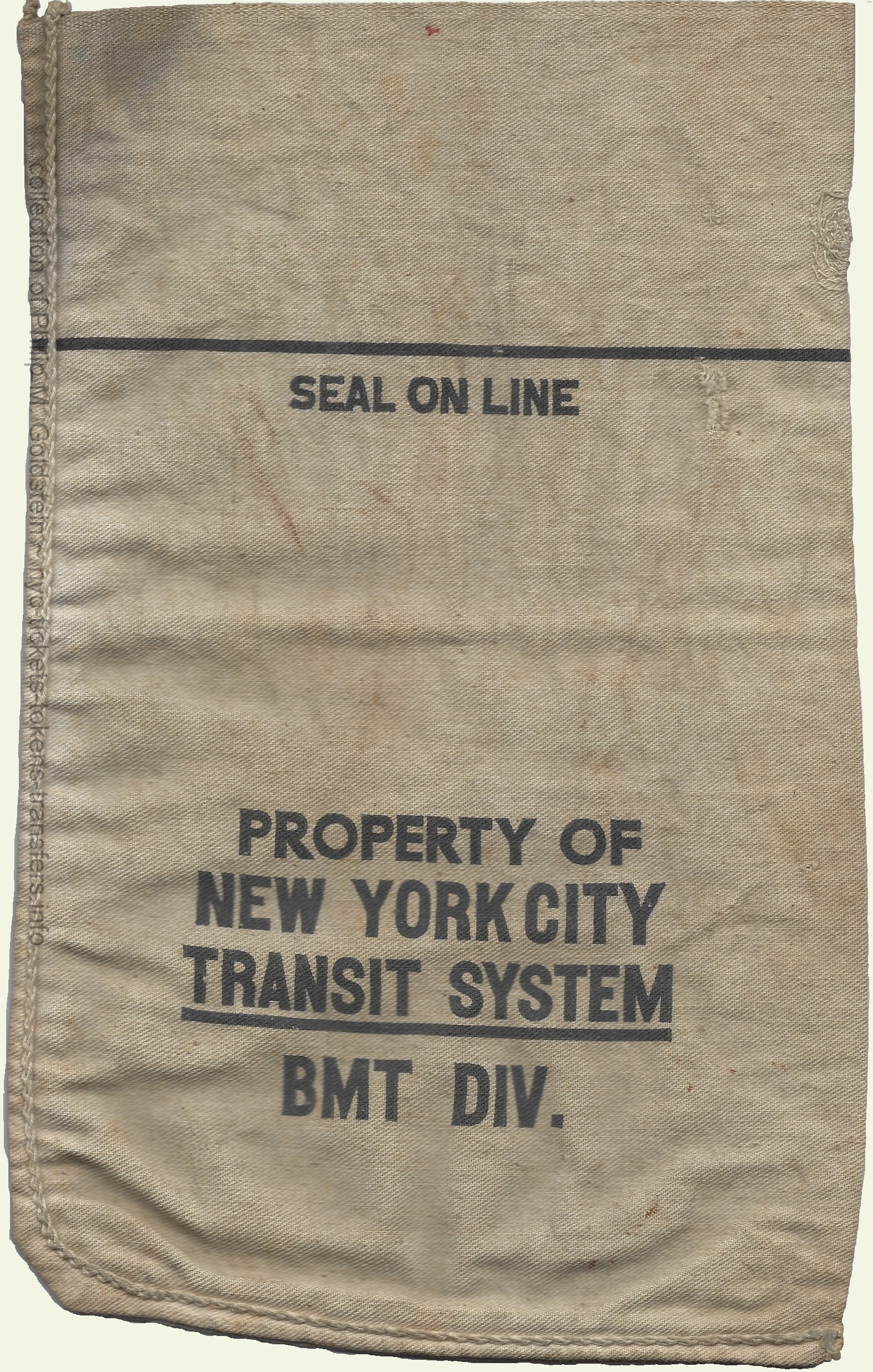 |
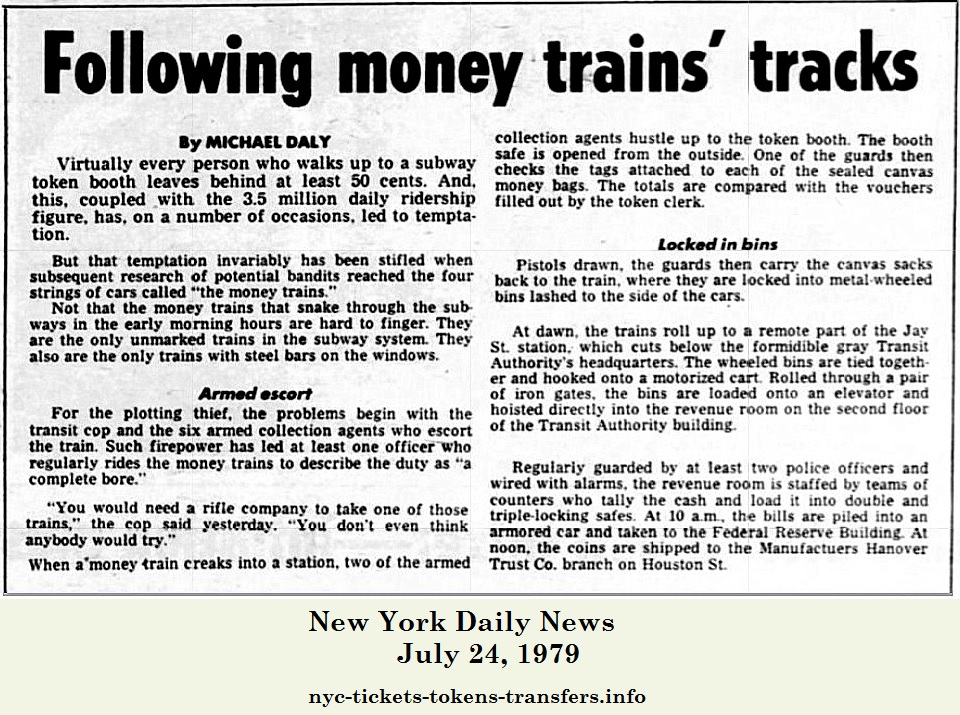 |
 |
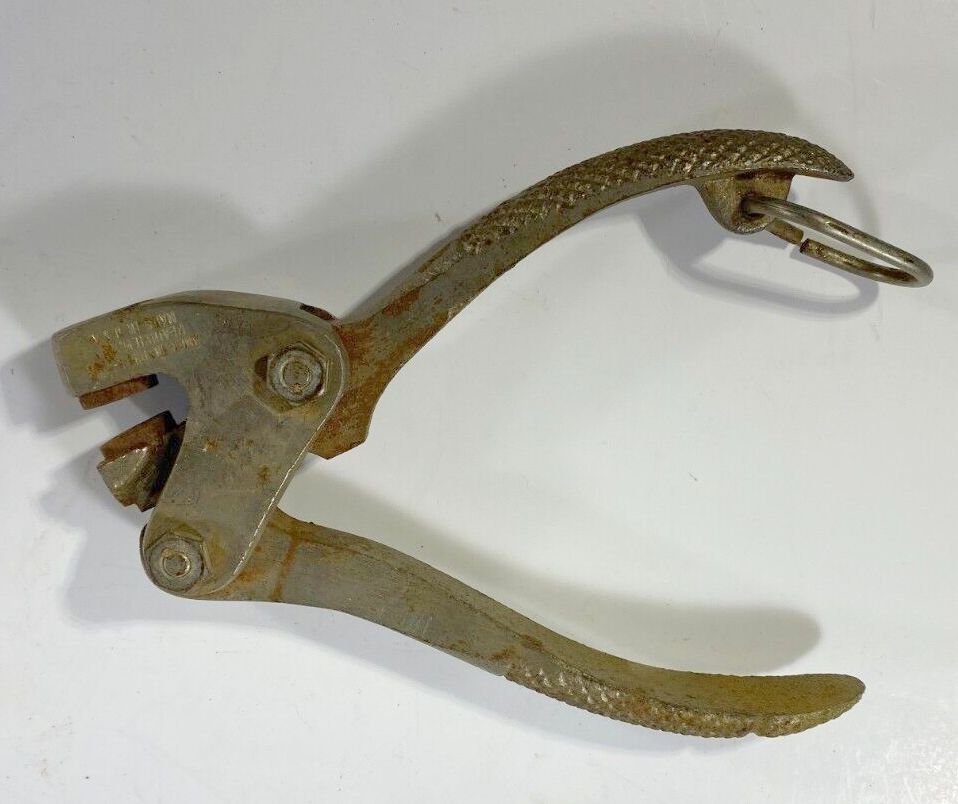 |
A tool which resembled a pair of pliers, crimped
this
metal seal. This metal seal can be seen in the top right corner of the
upper right image. Upon crimping, it also embossed a code denoting the
location the token booth it was
sealed at. If by chance you ran out of string and seals, or the tool broke; you would call for an assistant station supervisor. The sealed canvas bags (seen above) were placed into a drop vault mounted to the wall of the token booth. There was no door on the inside portion of the vaults for a Railroad Clerk to open - just a drop chute. The only vault access was a door on the outside of the booth equipped with a combination dial (later lock and key) - this door can be seen in the image of the token booth below right. Unlike the bus fareboxes vault drawers, these token booth vaults were constructed much more stoutly, and not prone to robbery, if they were even noticed at all. Basically they were hidden in plain sight. Furthermore, token booths have video surveillance and alarm systems. |
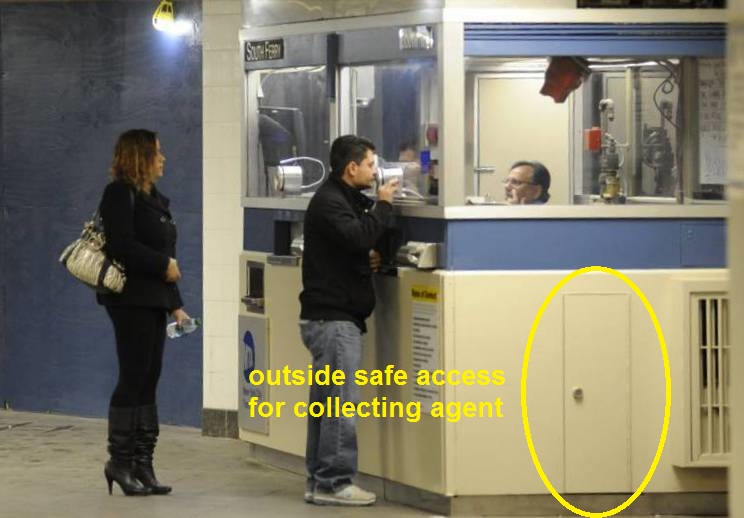 |
![]()
| MTA-NYCTA Rapid Transit Station Booth Codes & Control Areas - by Booth ID Number | MTA-NYCTA Rapid Transit Station Booth Codes & Control Areas - by Station Name |

![]()
 |
There were two methods utilized by the New York City Transit
Authority for collecting revenue: Revenue Trains and Armored Cars. While operations of the Revenue Trains has garnered more publicity due in part to movies, the method of collection by armored car has not. FOIA requests as to the historical procedures of Armored Car collection have gone unanswered, and perhap rightly so; as this method is still used by the NYCTa, and could very well constitute a security issue for present day operations. However, we do have some information regarding Armored Car collections thanks to the technical publication "Rapid Transit Fare Structure and Collection Methods" (Institute for Rapid Transit, 1970). In this publication, it is specifically stated that the IND Rockaway Line "outer zone" stations (presumable those stations in Rockaway, Queens) were collected by armored car, and not by Revenue Train. |
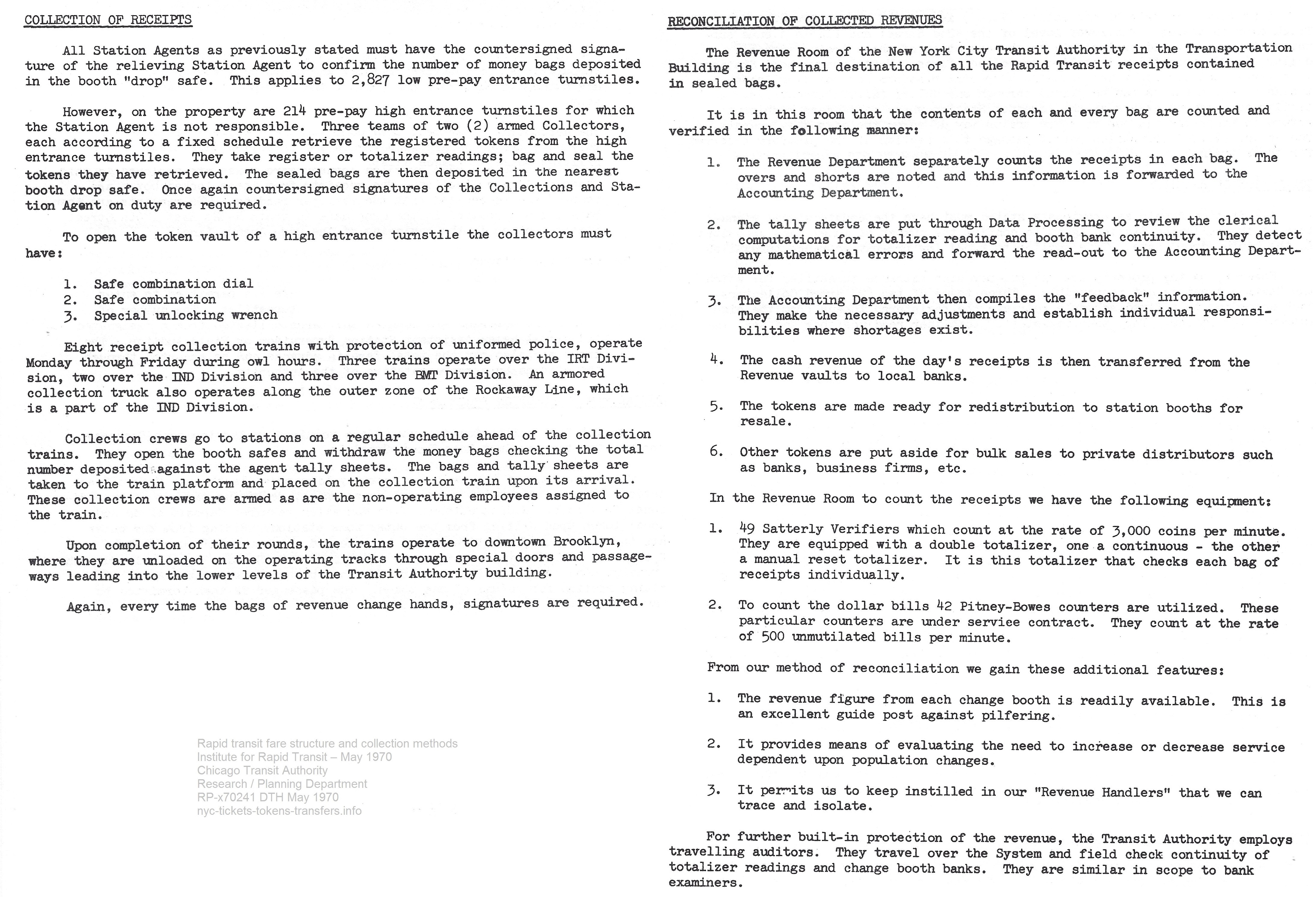
![]()
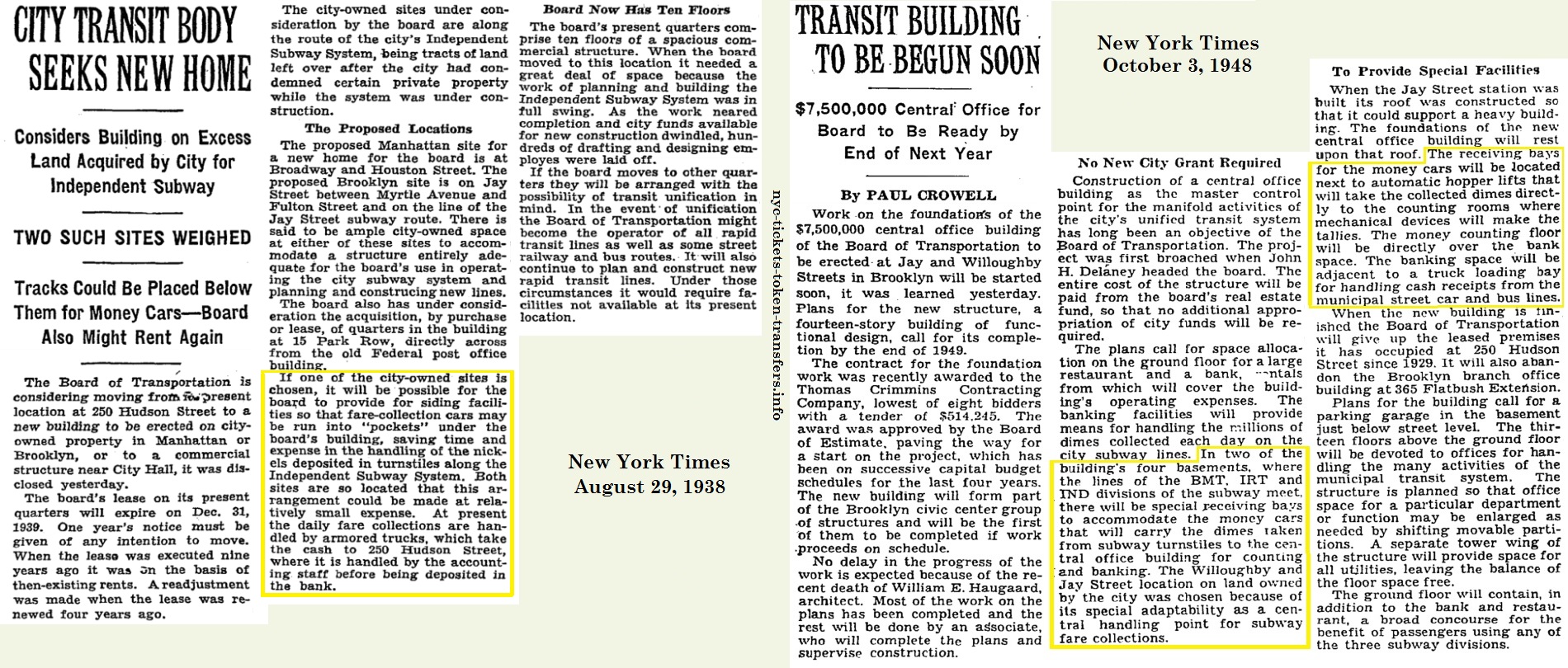
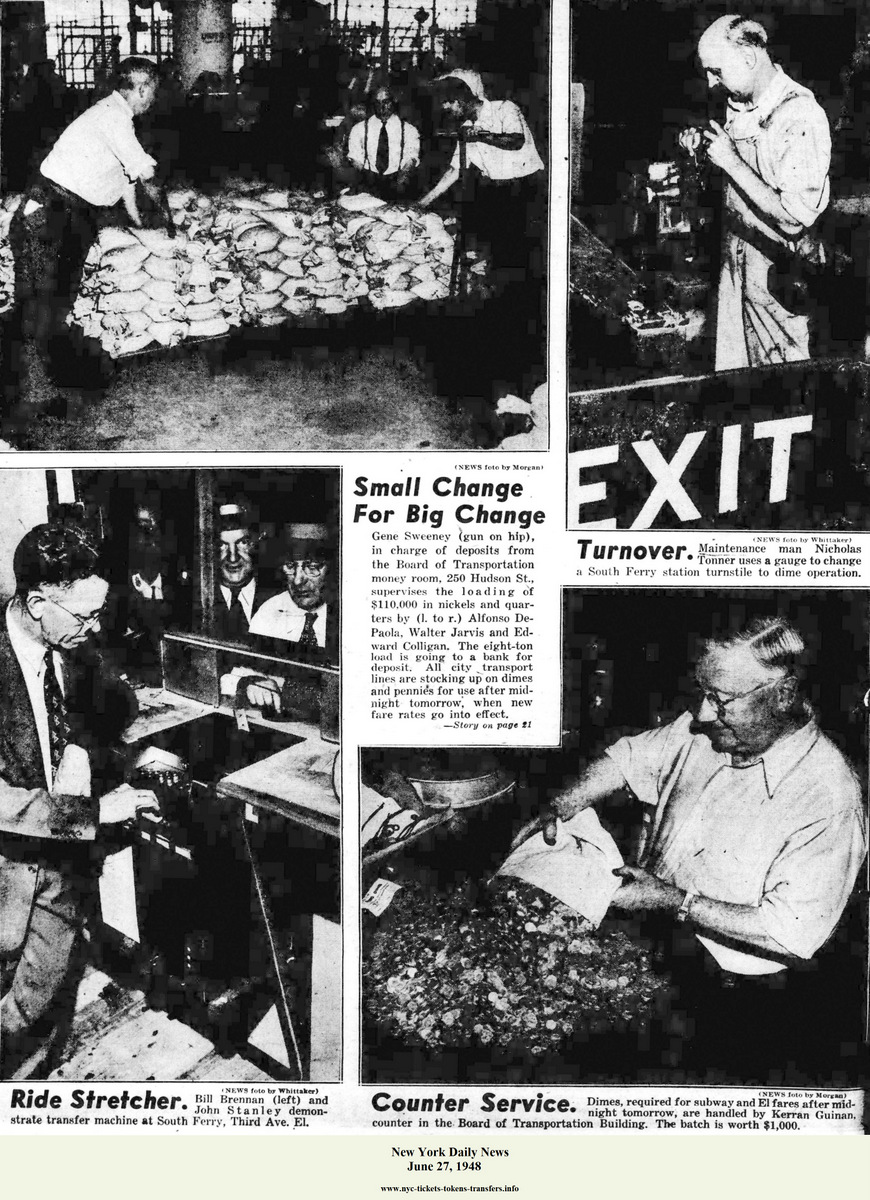
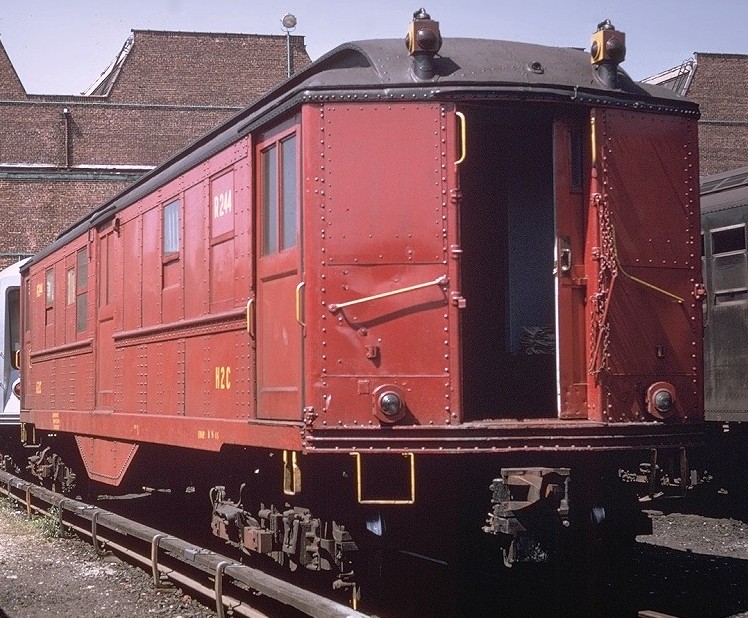 IRT R244 - Lo V image courtesy of nycsubway.org - D. Grotjahn |
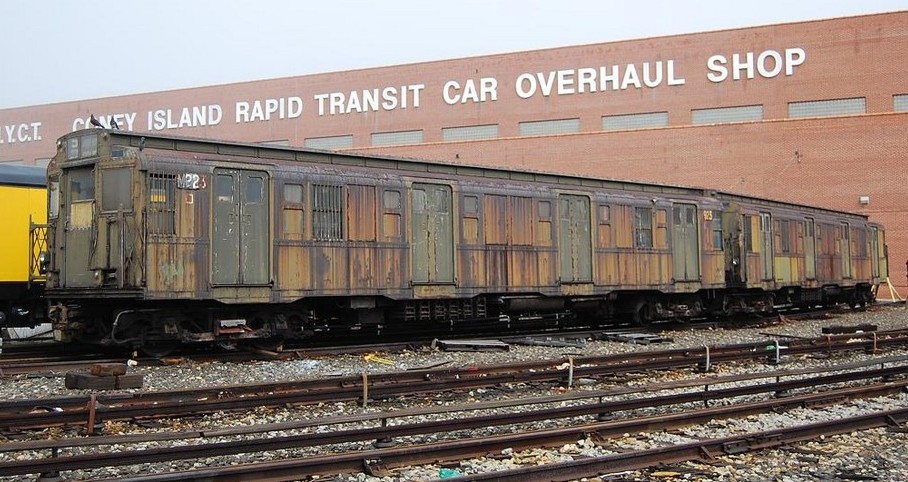 IND R247-248 - R6-3 image courtesy of nycsubway.org - M. Hodurski |
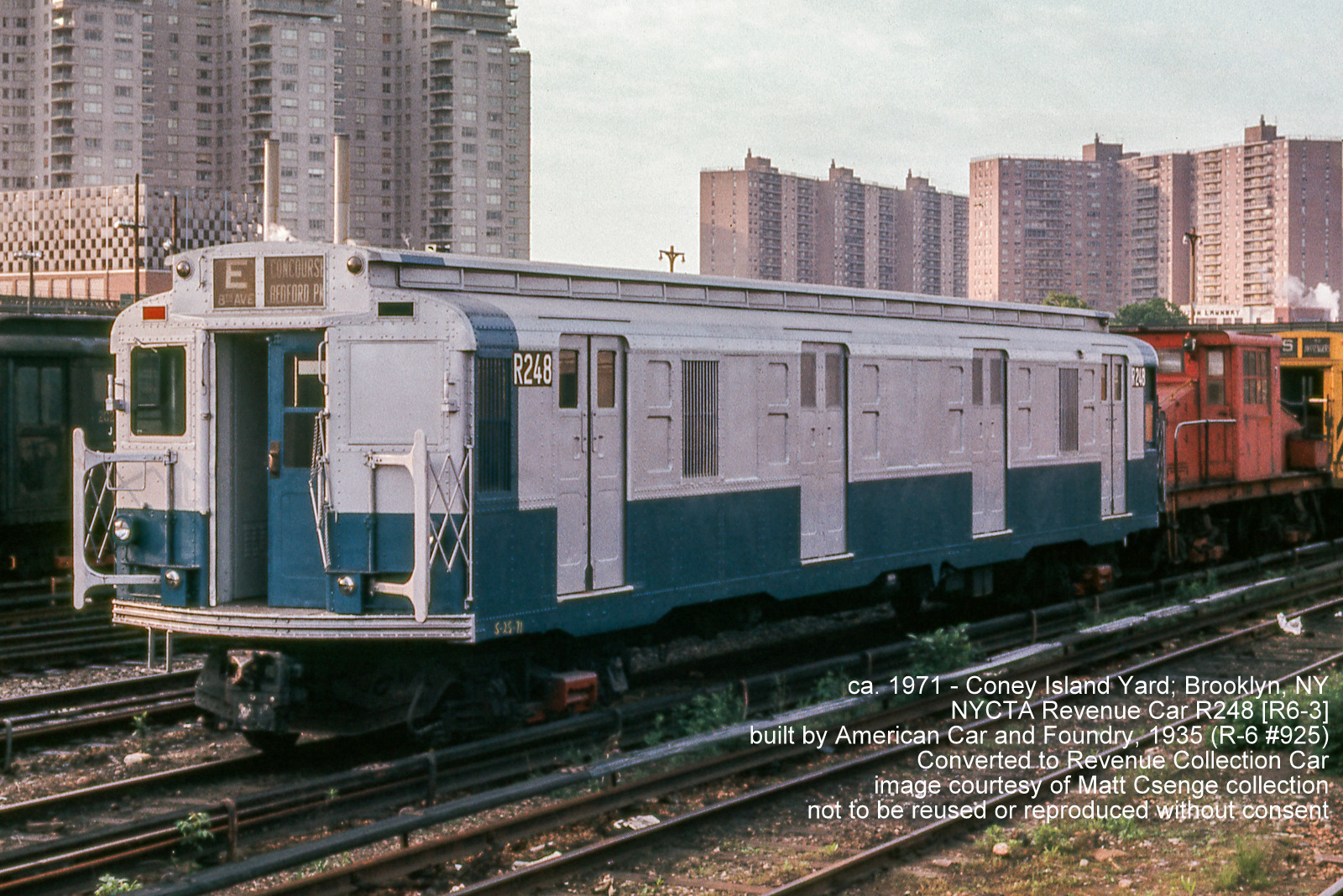 IND R248 - R6-3 image courtesy of Matt Csenge |
 IND
R8A #66
image courtesy of nycsubway.org - D. Pirmann |
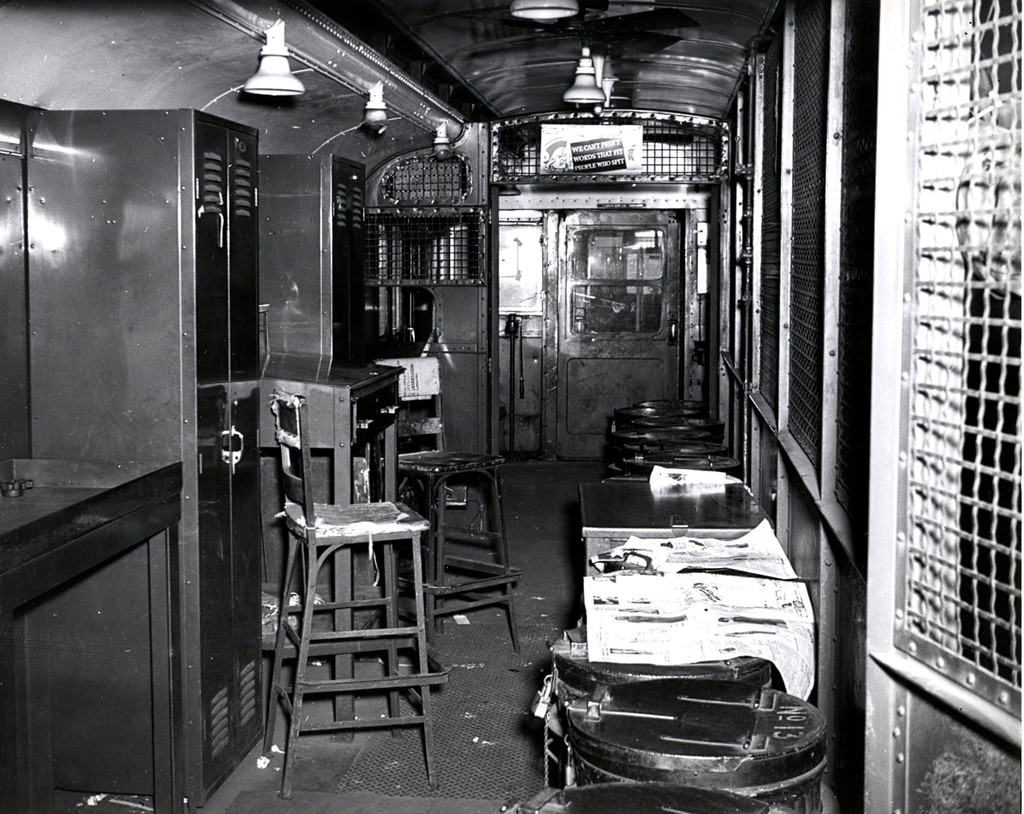 Note the round steel
barrels with a locking lid. These are early strongboxes.
image courtesy of New York Transit Museum Digital Collections |
 IND R8A - #67 image courtesy of nycsubway.org - D. Pirmann |
 Revenue Collection Train - Locker Car IR 714 (IRT) On display at IND Court Street / Transit Museum Station, Brooklyn NY |
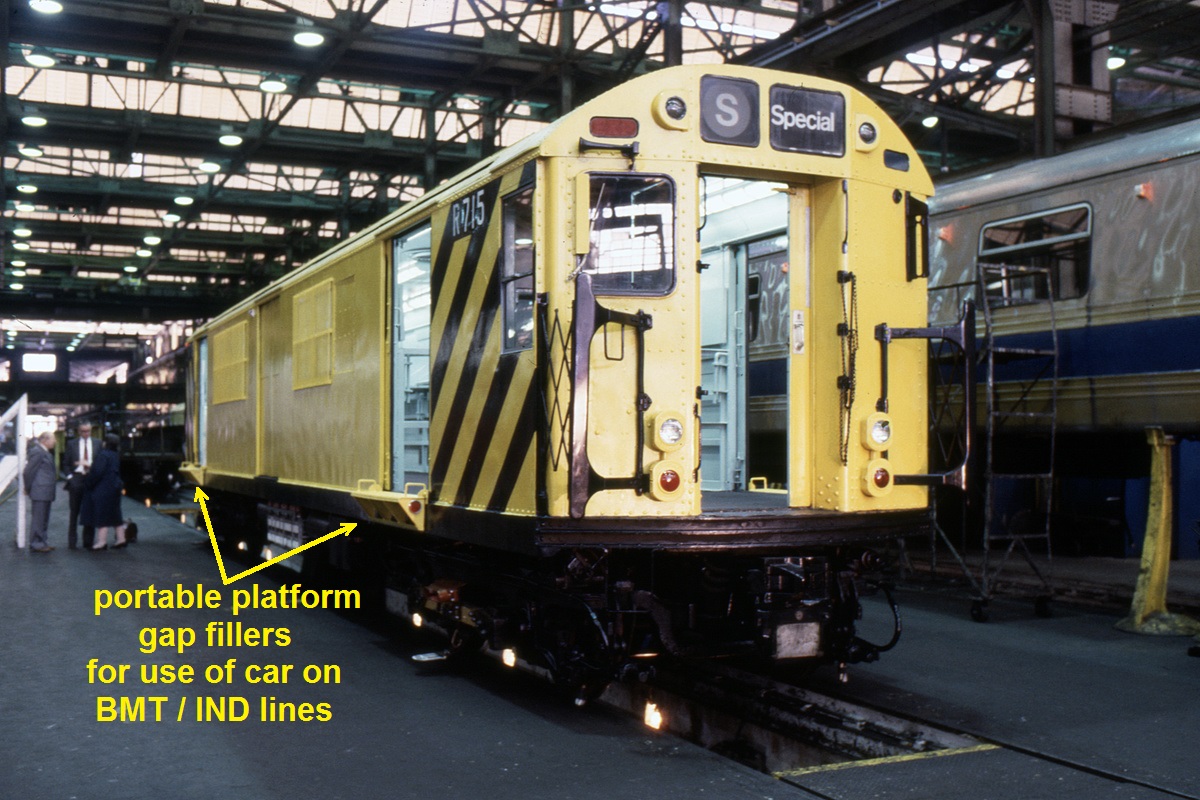 Revenue Collection Train - Revenue Car OR 715 (BMT / IND) Note the removable / portable gap fillers at the each of the door sills. This allowed an original IRT R-21/22 car to be used on BMT and IND lines. |
| . | |
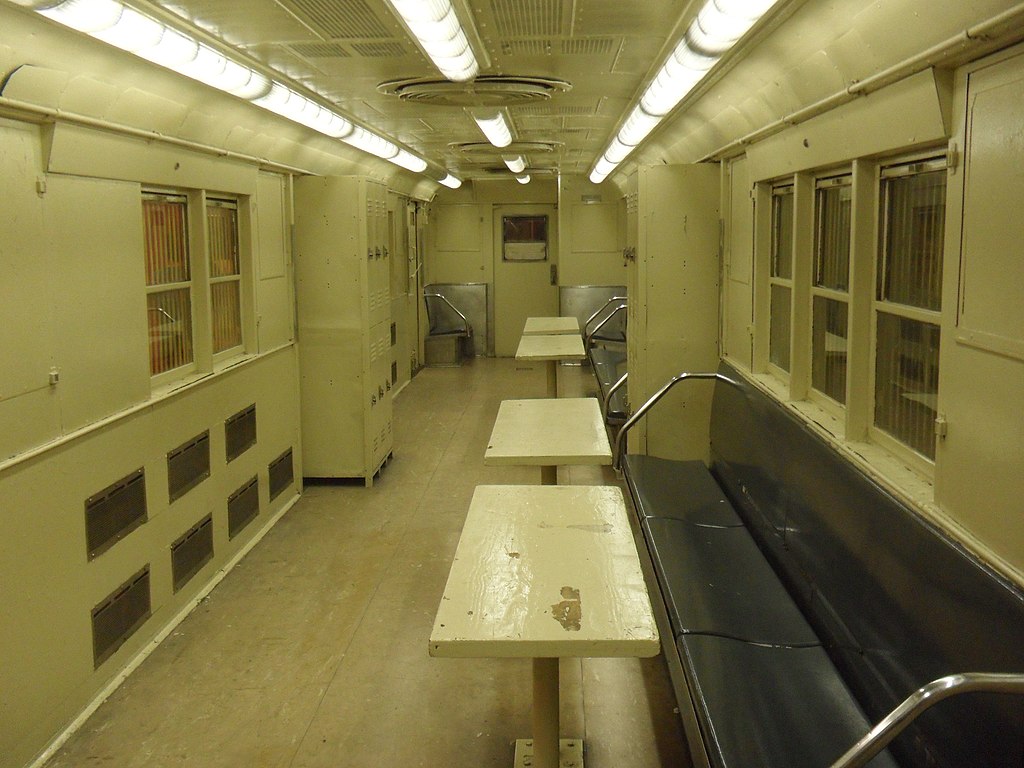 Revenue Collection Train - Locker Car Interior (IRT) |
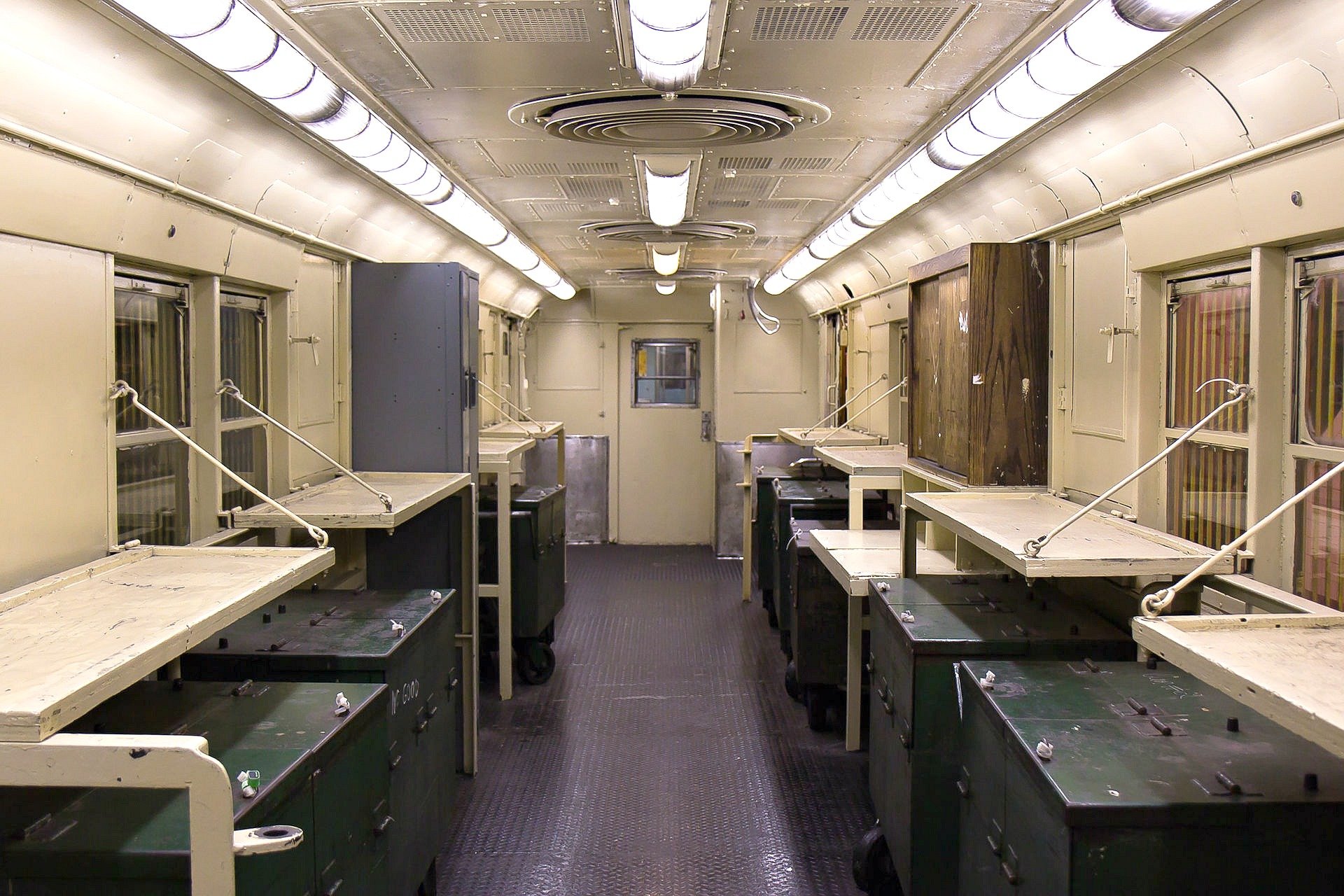 Revenue Collection Train - Revenue Car Interior (IRT) Note the small rolling strongboxes under the folding counter space. |
| . | |
 Revenue Collecting Agent - Revenue Car OR717 (IRT) This image were taken by MTA photographer Patrick Cashin on the final day of Money Train service in 2006 courtesy of New York Transit Museum |
|
| bottom most image above; courtesy of New York Transit Museum . All other images and and data in roster below courtesy of nycsubway.org / David Pirmann. | |
Revenue Collection Trains Roster IRT - BMT - IND (Board of Transportation) |
||||||||||||||||
| IRT | BMT / IND | |||||||||||||||
| New Car # | Old Car # | Original # | Car Type | Notes | New Car # | Old Car # | Original # | Car Type | Notes | |||||||
| R241 | 20182 | 4704 | Lo-V | Pressed Steel Car Co. - 1916-1925 | 30178 | 20178 | 2500 | Standard | American Car Foundry - 1914-19 | |||||||
| R244 | 5622 | Lo-V | Pressed Steel Car Co. - 1916-1925 | 30179 | 20179 | 2714 | Standard | Pressed Steel Car Co. - 1921 | ||||||||
| 30183 | 20183 | 5302 | Lo-V | Pressed Steel Car Co. - 1916-1925 | 30180 | 20180 | 2741 | Standard | Pressed Steel Car Co. - 1921 | |||||||
| 30181 | 5559 | Lo-V | ||||||||||||||
|
|
|
|||||||||||||||
| M247 | 923 | R-6-3 | both American Car
Foundry - 1935 stored 207th Street Yard awaiting restoration |
|||||||||||||
| M248 / R248 | 925 | R-6-3 | ||||||||||||||
|
|
|
|||||||||||||||
| 20177 | 67 | R-8A | St. Louis Car Company - 1939 | |||||||||||||
| 20178 | 68 | R-8A | St. Louis Car Company - 1939 | |||||||||||||
|
|
|
|||||||||||||||
| Revenue Collection
Trains New York City Transit Authority |
||||||||||||||||
| IRT
- Division A one revenue car and one locker car made up one train. |
BMT - Division B1
/ IND - Division B2* one revenue car and one locker car made up one train. |
|||||||||||||||
| New Car # | New Contract # | Old Car # | Old Contract # | Car Type | Train | Basing location | Notes | New Car # | New Contract # | Old Car # | Old Contract # | Car Type | Train | Basing location | Notes | |
| 0R714 | R-95 (1988) | 7194 | R-21 | Revenue | #2 | East 180th St. Bronx | St.
Louis
Car Company - 1956 was in NYTM |
0R719 | R-95 (1988) | 7389 | R-22 | Revenue | #7 | Jamaica, Queens | St. Louis Car Company - 1957 | |
| 1R714 | R-95 (1988) | 7422 | R-22 | Locker | #2 | East 180th St., Bronx | St.
Louis
Car Company - 1957 was in NYTM |
1R719 | R-95 (1988) | 7386 | R-22 | Locker | #7 | Jamaica, Queens | St. Louis Car Company - 1957 | |
|
|
|
|||||||||||||||
| 0R715 | R-95 (1988) | 7343 | R-22 | Revenue | #3 | Corona, Queens | St. Louis Car Company - 1957 | 0R720 | R-95 (1988) | 7337 | R-22 | Revenue | #8 | Concourse, Bronx | St. Louis Car Company - 1957 | |
| 1R715 | R-95 (1988) | 7424 | R-22 | Locker | #3 | Corona, Queens | St. Louis Car Company - 1957 | 1R720 | R-95 (1988) | 7444 | R-22 | Locker | #8 | Concourse, Bronx | St. Louis Car Company - 1957 | |
|
|
|
|||||||||||||||
| 0R716 | R-95 (1988) | 7355 | R-22 | Revenue | #1 | Livonia, Brooklyn | St. Louis Car Company - 1957 | 0R721 | R-95 (1988) | 7392 | R-22 | Revenue | #5 | 36th St, Brooklyn | St. Louis Car Company - 1957 | |
| 1R716 | R-95 (1988) | 7410 | R-22 | Locker | #1 | Livonia, Brooklyn | St. Louis Car Company - 1957 | 1R721 | R-95 (1988) | 7449 | R-22 | Locker | #5 | 36th St, Brooklyn | St. Louis Car Company - 1957 | |
|
|
|
|||||||||||||||
| 0R717 | R-95 (1988) | 7313 | R-22 | Revenue | #3A | Livonia, Brooklyn | St. Louis Car Company - 1957 | 0R722 | R-95 (1988) | 7368 | R-22 | Revenue | #6 | 36th St, Brooklyn | St. Louis Car Company - 1957 | |
| 1R717 | R-95 (1988) | 7314 | R-22 | Locker | #3A | Livonia, Brooklyn | St. Louis Car Company - 1957 | 1R722 | R-95 (1988) | 7459 | R-22 | Locker | #6 | 36th St, Brooklyn | St. Louis Car Company - 1957 | |
|
|
|
|||||||||||||||
| 0R718 | R-95 (1988) | 7379 | R-22 | Revenue | IRT - Spare | St. Louis Car Company - 1957 | 0R723 | R-95 (1988) | 7490 | R-22 | Revenue | BMT-IND Spare | St. Louis Car Company - 1957 | |||
| 1R718 | R-95 (1988) | 7374 | R-22 | Locker | IRT - Spare | St. Louis Car Company - 1957 | ||||||||||
| * Since the
R-22 / R-95 cars are built to IRT dimensions, and use a portable gap
filler for use on BMT and IND divisions; these cars could be run on IRT divisions if need be, by simply lifting the gap filler off the sill. |
||||||||||||||||
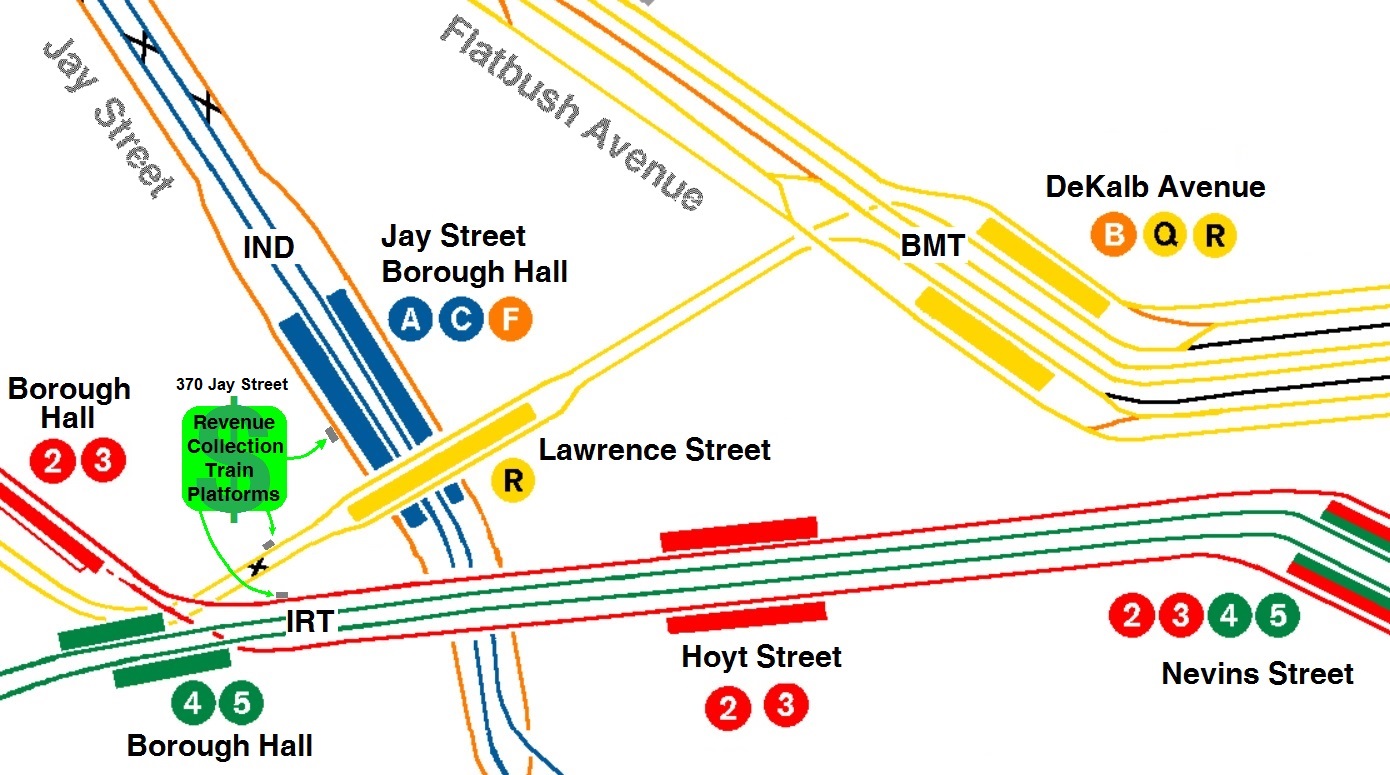
|
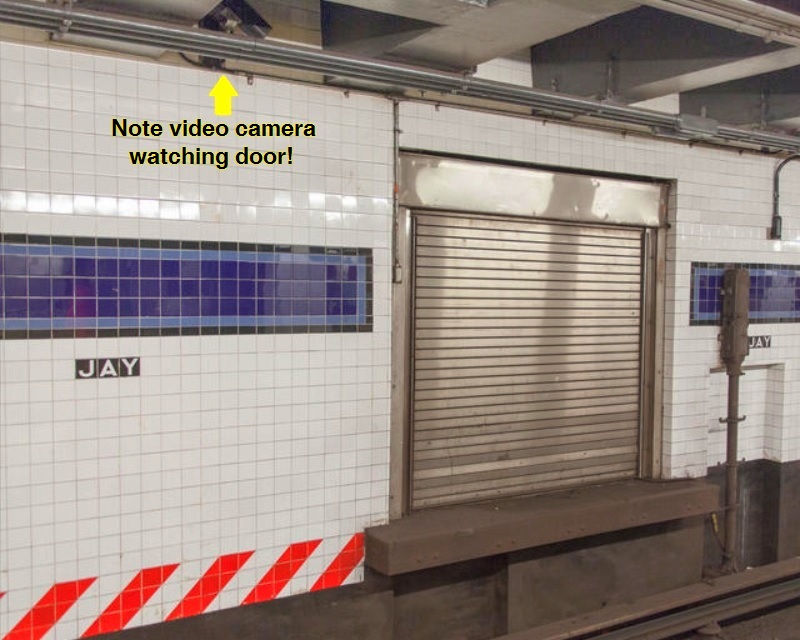 |
 |
Ultimately, the Jay Street location in Brooklyn was chosen,
and construction
began in late 1948 and completed in 1951. The Board of Transportation had been planning to relocate for years, but contractual issues delayed the relocation. In 1951, the US Government ordered the Board of Transportation to vacate 250 Hudson Street, as the General Services Administration and the Navy needed the space. So, in a grand rush, the Board of Transportation relocated before the building as 370 Jay Street was completely finished. You can read this in detail in the March 31, 1951 New York Times article below. And it is here, in this this building and on the second floor; the holiest of holy areas in the NYCTA universe was created: the count rooms and vaults. Here, coins and currency were counted, wrapped, bundled and placed into rolling strong boxes. Millions of tokens stored in bags of 10,000 - new tokens to be rolled out when a raise in fare was to take place to prevent hoarding - or kept in storage when a token change was deemed unnecessary. Old token issues retained and stored for future use, or waiting to be scrapped for metal content. But most importantly, the accounting of revenue could take place for all divisions in one locations; as well at the secure storage of coins, currency, tokens, tickets, and other high value revenue items; which could be stored under the tightest of security; in that location. |
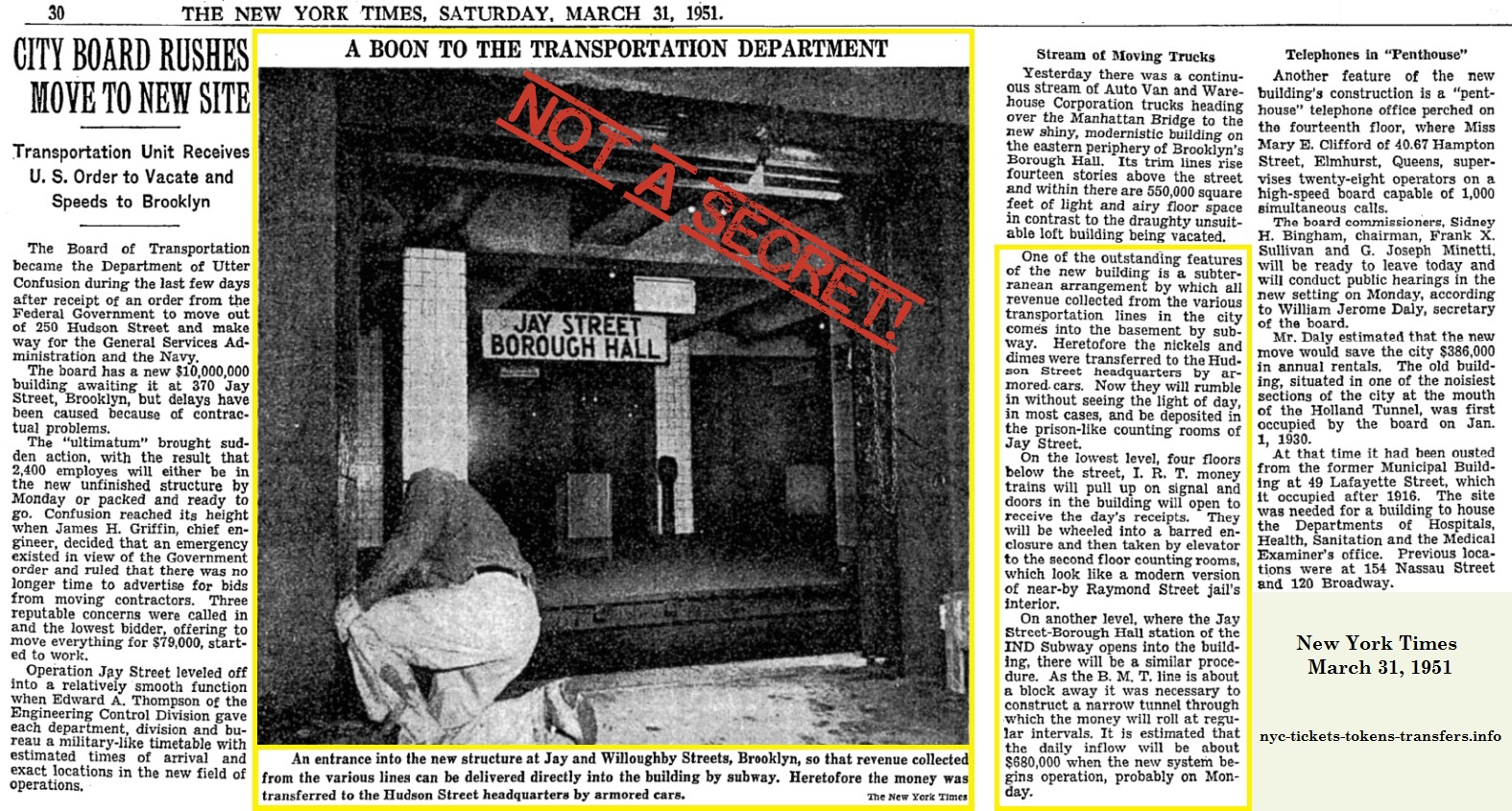
|
Considering an armored car (actually a truck) of the era was
a
smallish vehicle. The accompanying image is of armored cars of the City
of New York - Department of Finance. Armored cars used by the Board of
Transportation would have been similar and possibly even the same. The armored cars seen in the image were built by International Motor Trucks, and were built right in Queens. Mack - International Truck had factories and assembly lines in Brooklyn, Queens, Manhattan, and the Bronx. The armored trucks of the era were of limited capacity, in regards to the amount of protective agents and in regards to the amount cargo in comparison to a subway car. As the predominate fare throughout this era of operations was by coin, this was naturally a heavy cargo. Perhaps heavier than one realizes: Over a billion fares were collected on the Transit System (rapid and surface lines) in 1950. The fare was a dime. This equates to 168,100,000 dimes. That figure, divided by 365 days equals 460,547 dimes per day. That amount of dimes weighs 23,028 pounds or 11½ tons. If one is generous, the armored cars shown had a carrying capacity of 1 ton, maybe a ton and a half. There were about 600 stations (don't forget the now demolished elevateds!) spread out over 243 square miles in 4 boroughs. It hardly could have been efficient. Furthermore, road vehicles could easily be stopped at any point along its route. Rush hour congestion, broken traffic signals, a large fire, and number of reason could hold up the revenue collection. Of course the worst scenario was armed robbery. At any number of street corners, a group of armed robbers could be waiting to "knock off" and armored car. Block the street with a car or truck (à la the movie "Heat") and security was jeopardized - there was nowhere to go. Many armored car heists took place in this fashion. The nature of operating in the open was itself a security issue. |
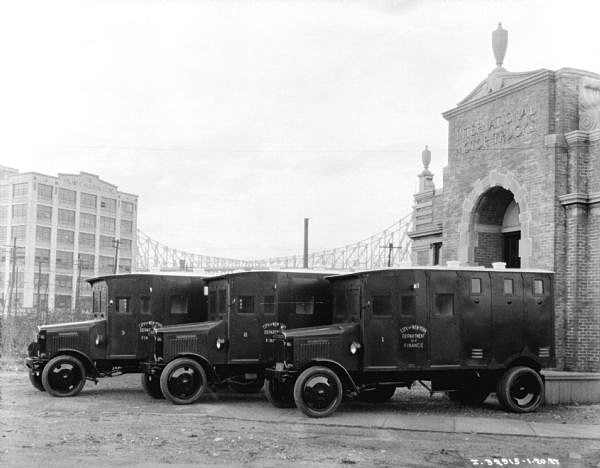 courtesy of the
Wisconsin Historical Society archives
|
 The employee is extracting sorted banknotes from the machine and placing them into the acrylic stacking box to her right. Additional racks of stacking boxes are seen on the sloped table behind her. |
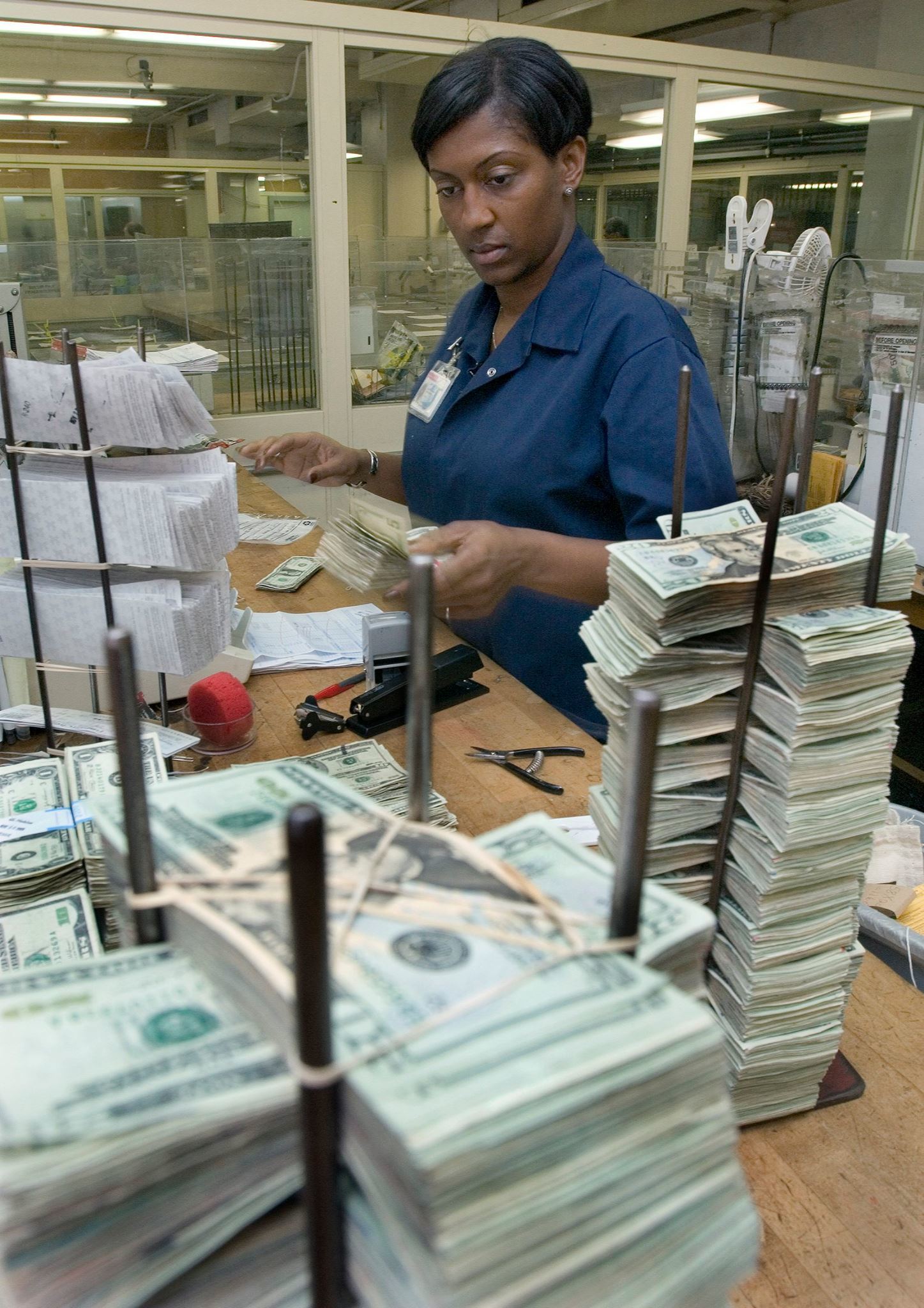 |
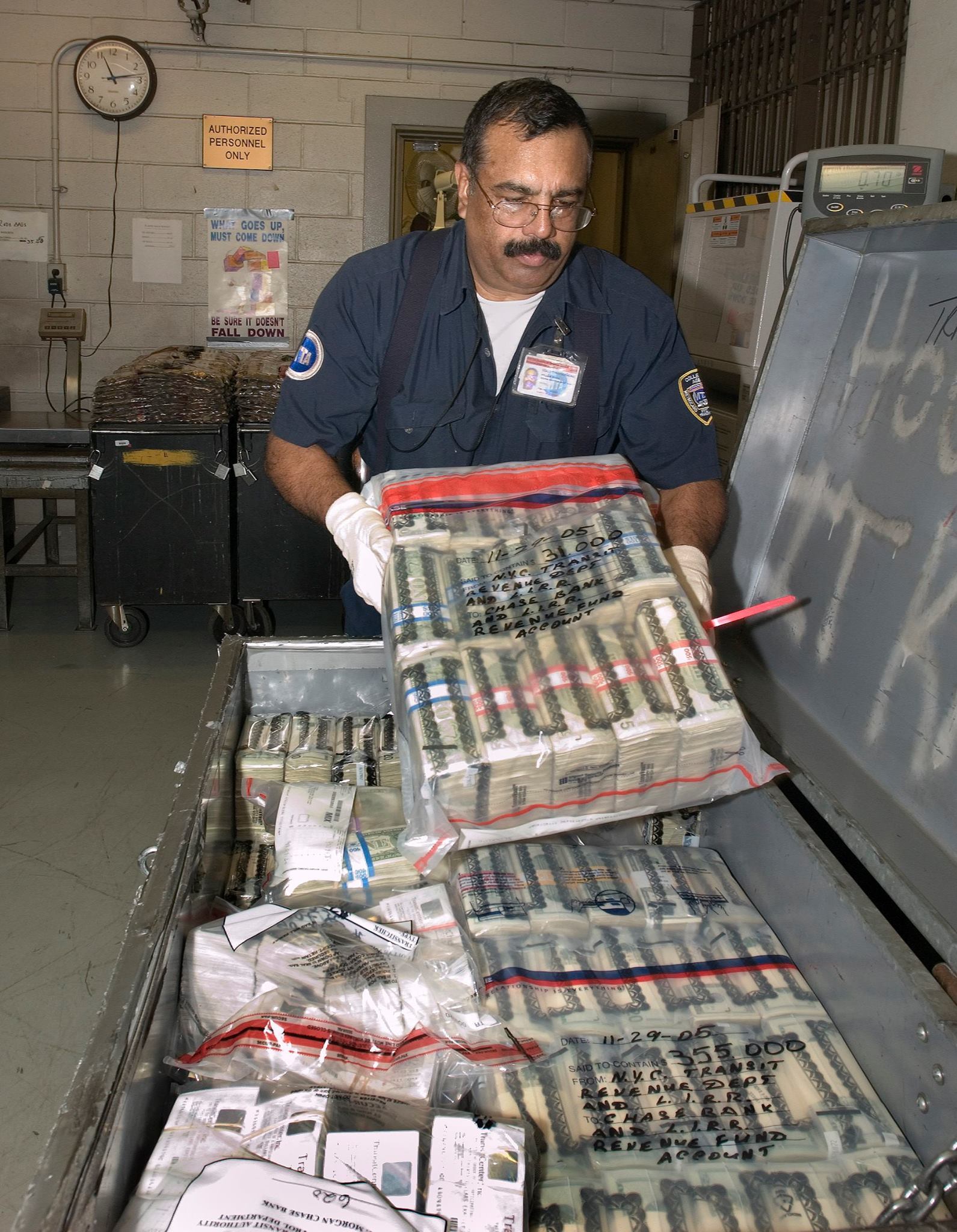 |
| center image: Manual counting and rubber banding of currency by denomination. Accounting of TransitCheks in rack closest to employee. | ||
right most image: bundles of banded and wrapped currency being placed into large rolling strongboxes. The smaller rolling strongboxes in the background are the type that were carried aboard the Revenue Collection Train. The large strongbox being loaded by the employee, was for internal count room use. Note the various types of revenue in this strongbox: US currency of various denominations and Transit Checks (bottom left), also note the wrapping bottom right: NYCTA and LIRR. Coins and tokens (were counted and stored in another room. All images: MTA photographer Patrick Cashin on the final day of Money Room operations at 370 Jay Street in 2006. © 2006 - courtesy of the New York City Transit Authority |
||
|
But as time
marches on; so does history. Buildings become old. Heating plants and
elevators wear out; electrical and plumbing systems become
insufficient, with so much office equipment electrical driven these
days. You can only repaint the walls so many times, but that does
little to renew, repair and improve the structure itself. Structures,
like vehicles; become obsolete for their intended purposes. In some
cases, it becomes more cost efficient to build a new facility or split
up operations amongst several building than reconstruct an old one; and
370 Jay Street was no exception. The NYCTA slowly began vacating their administrative offices from 370 Jay Street beginning in 1990; however the NYCTA Revenue Department remained on site until 2006. In that year; NYCTA revenue operations were consolidated with the MTA and TBTA Bridges & Tunnels, and relocated to newly constructed, extremely high security facility in Ridgewood, Queens; bordering on Newtown Creek upon the former Cerro Wire property. In all honesty, the new facility has the appearance of a maximum security prison rather than a municipal structure. But being equally as honest, that make perfect sense. The widespread acceptance of MetroCards and their (mostly) electronic payment systems; did away with a significant amount of handling of coins and currency at the token booths. With this diminished handling of coin and currency, it is nowhere on the scale of pre-MetroCard era and no longer required the established method of collection, which we will discuss in the next chapter. |
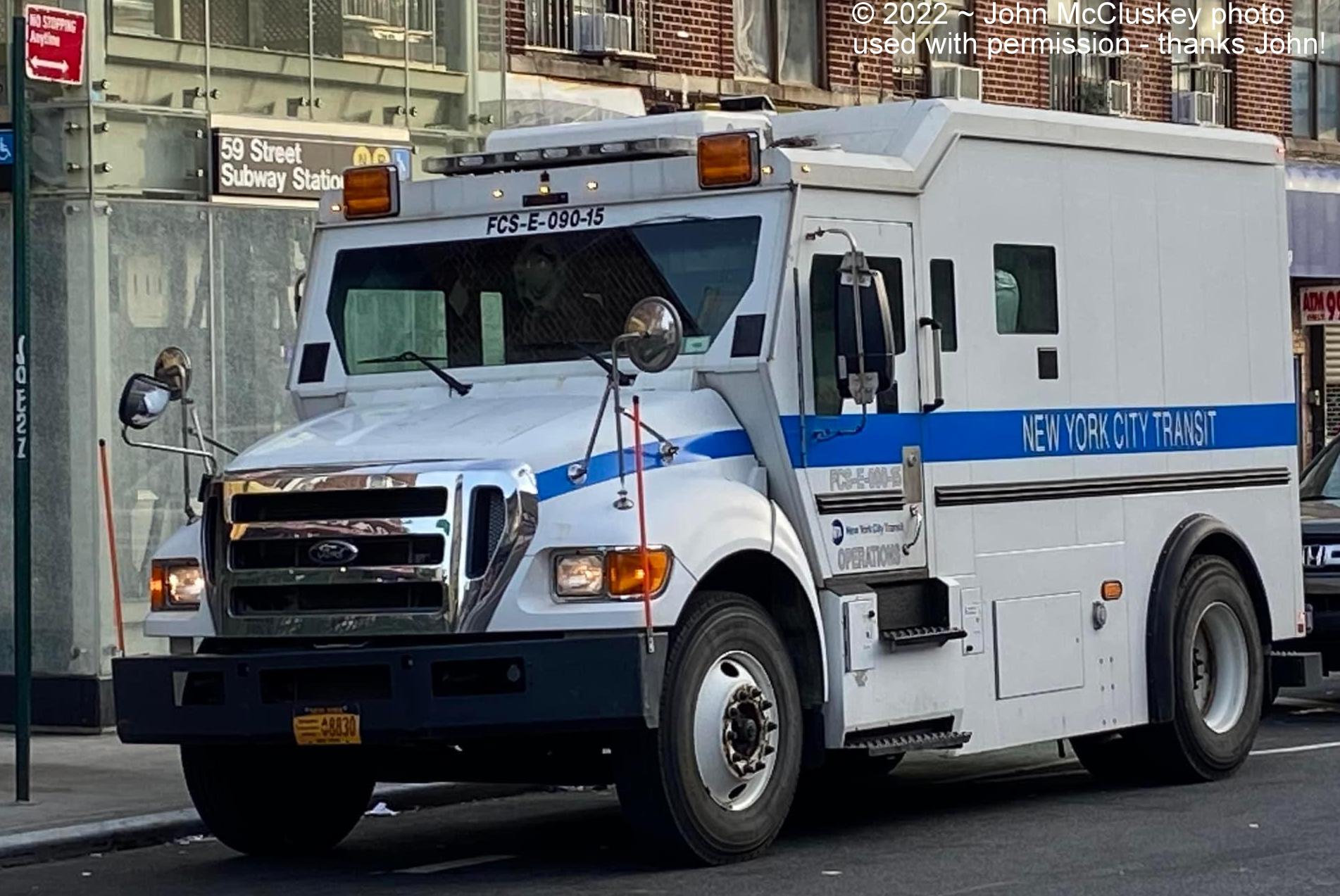 |
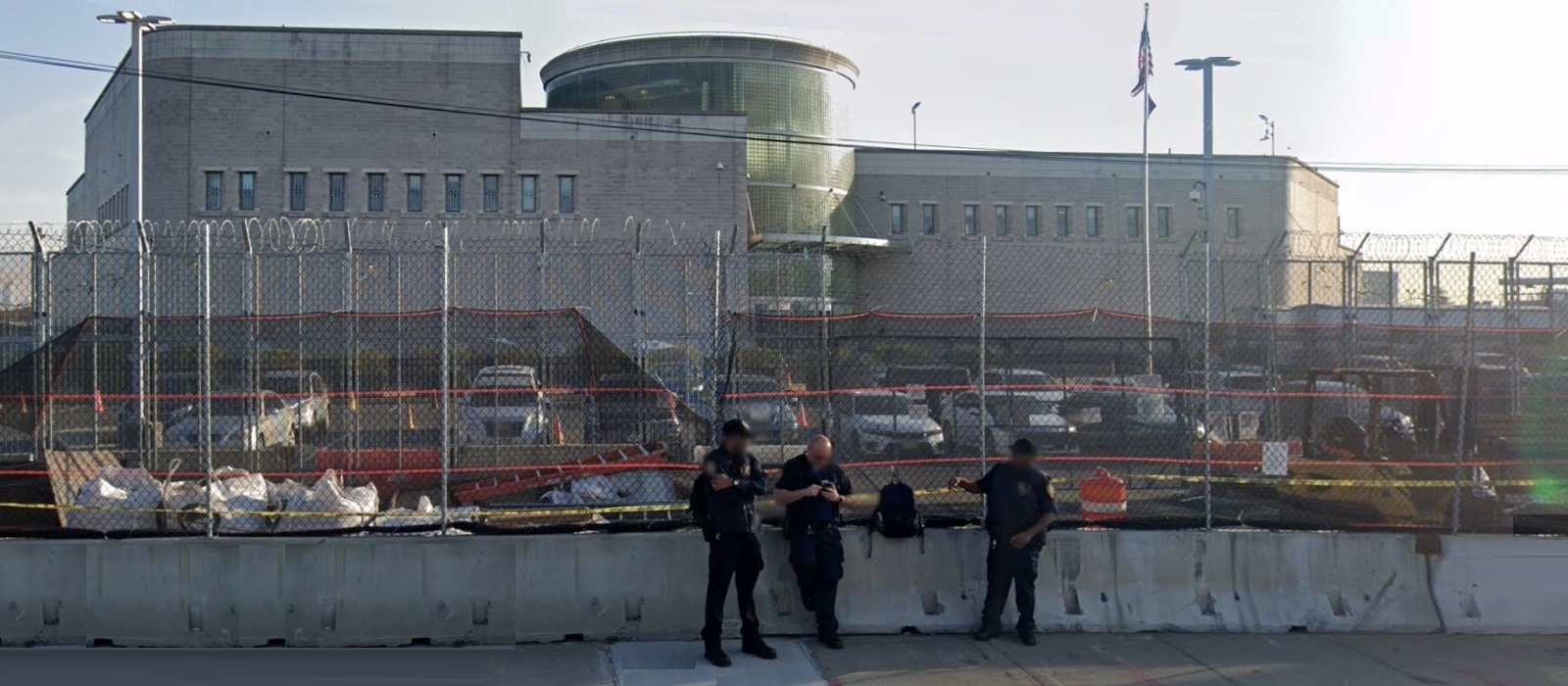 |
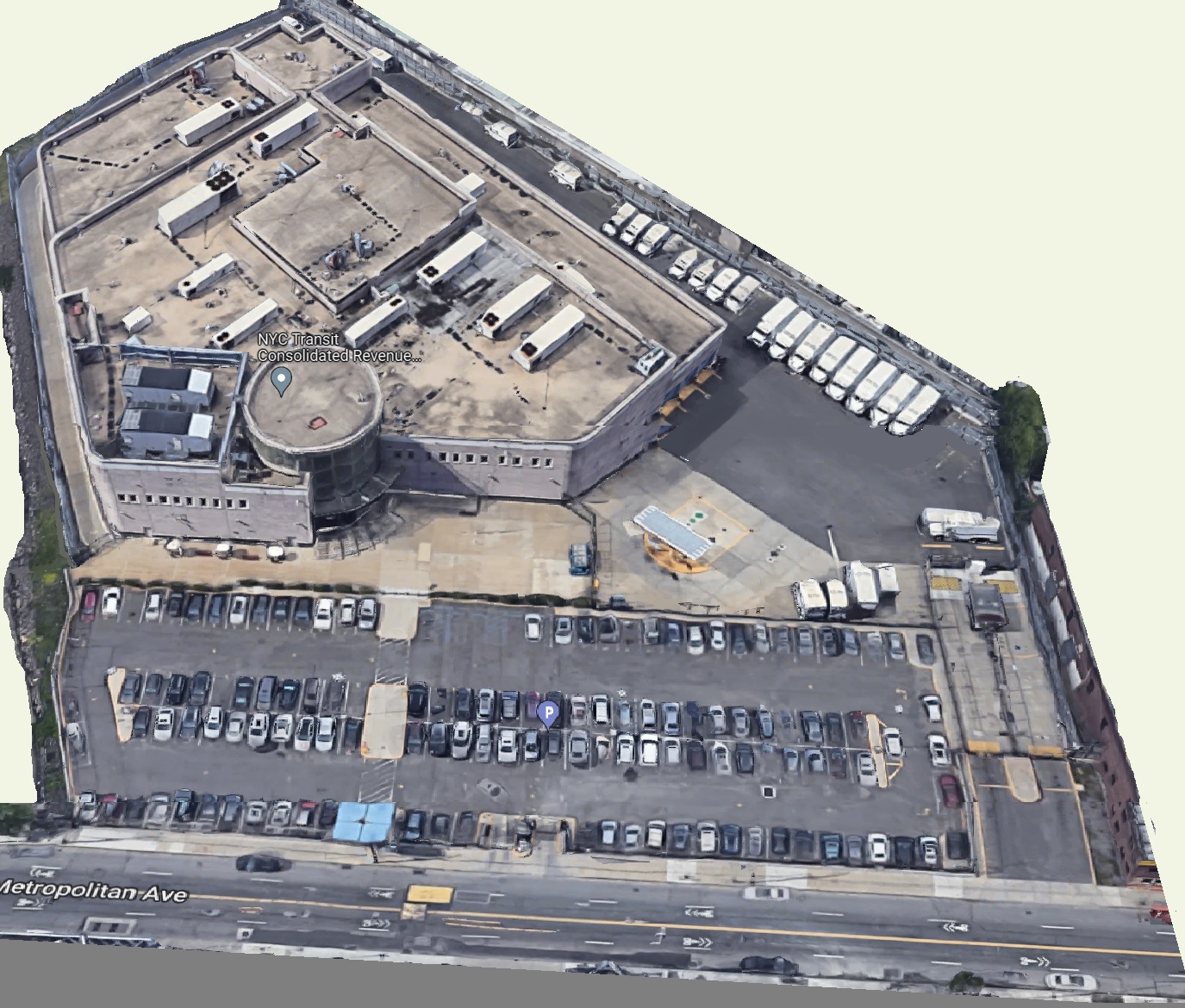 |
| MTA
(Metropolitan Transportation Authority) - NYCT (New York City Transit)
- B&T (Bridges & Tunnels) Consolidated Revenue
Facility Ridgewood, Queens images courtesy of Google Maps |
|
| Attempts on the Collection Train | Bus Driver / Farebox Robberies | Token Booth Robberies | Kidnapping A Revenue Agent | Token Sucking | Inside Jobs | And speaking of inside jobs.. |
| But,
the criminal
element
then adapted to a most despicable, vile and heinous method. The pouring of flammable liquids (usually gasoline) through the coin slot. If the token clerk did not open the door to let the thief in, more than one "degenerate" (keeping it clean here - this is a family website!) severely injuring and / or costing the lives of several token clerks. Following a rash of these attacks the year before, in 1990 the NYCTA installed Halon fire suppression systems equipped with in the token booths throughout the system. Flame sensors instantaneously triggered the discharge of that fire suppression system which helped prevent serious injury to the clerks. Sadly, on November 26, 1995; two individuals attempted to rob the Kingston - Throop Station Token Booth on the IND Instead it caused a flammable vapor explosion; literally blowing the token booth apart and of which a photo can be seen at right. A scene in the movie "Money Train", bore striking resemblance to this incident; and the NYCTA as a matter of record, objected to the scene in the script and asked it be removed, as well as refused to allow the film crew of the movie to film that sequence on NYCTA property; in the hopes to avoid "copycatting". Removal of the scene was refused on the part of the studio; and the movie crew shot the scene on a stage instead. |
 Kingston -
Throop Station Token Booth - November
26, 1995
courtesy of NY Daily News |
|
While
research transit fares, I was amazed to learn that there was an
incident where a Revenue Agent was kidnapped by a several criminals.
While I heard (in varying degrees of detail) of the other crimes I list
in thischapter, this one I had not heard of. The agent was held for several days and over the course of that time forced to access safes at two stations: BMT Whitehall and Cortland Street. He was released unharmed. Over $18,000 in cash and subway tokens was taken. I found no follow up articles about the kidnappers having been caught, so it is my estimation this crime remains unsolved. |
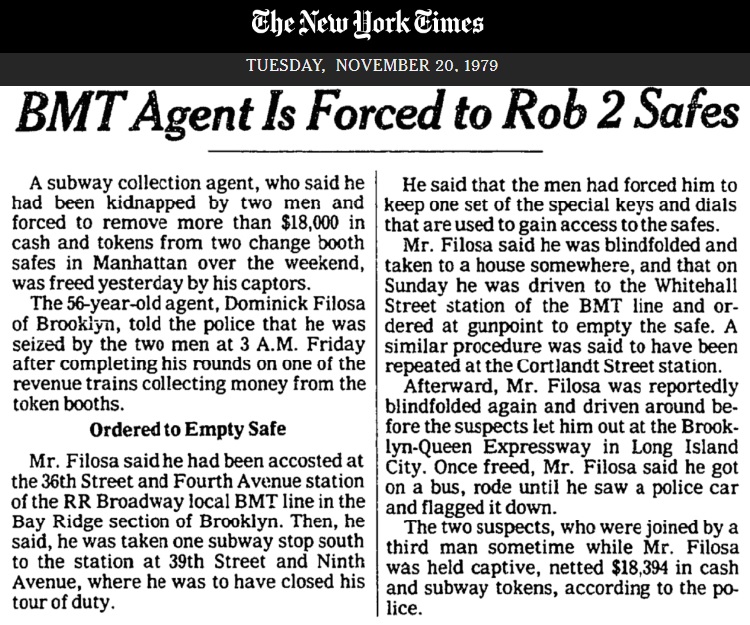 |
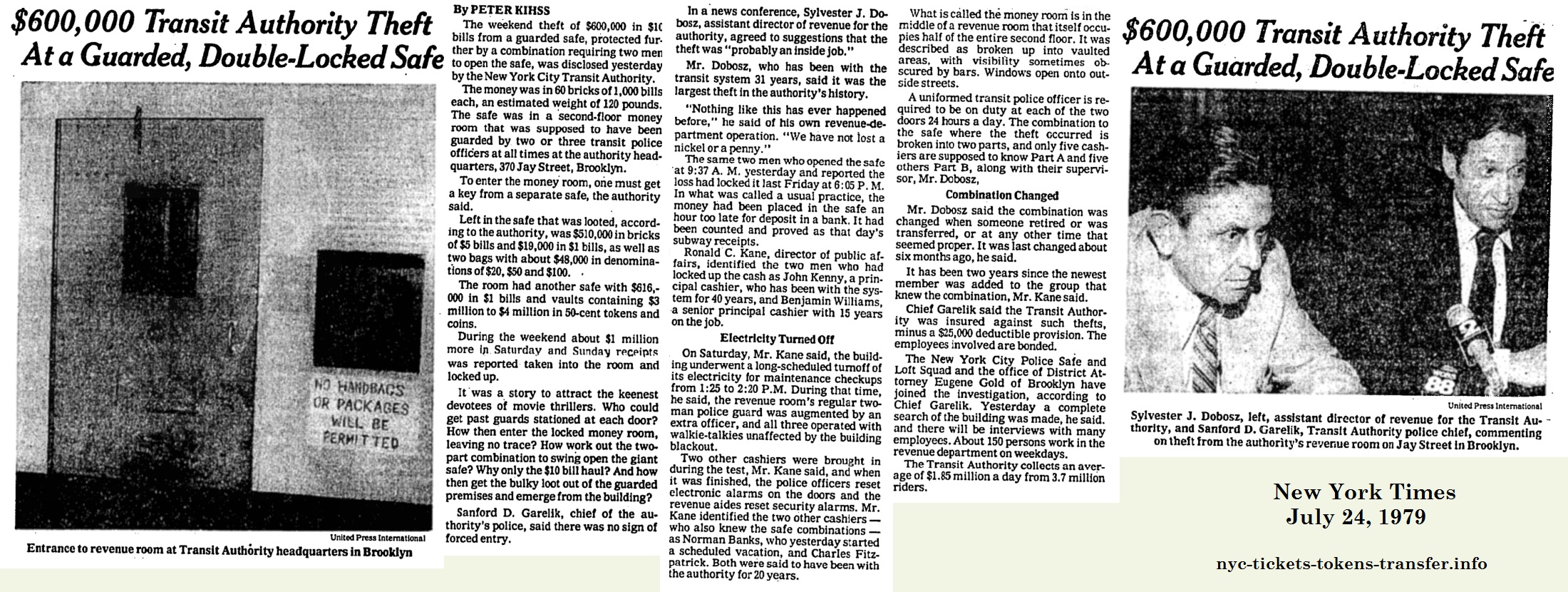 New York Times - July 24, 1979 |
|
 New York Daily News - July 24, 1979 |
|
| . | |
 New York Daily News - July 25, 1979 |
|
| . | |
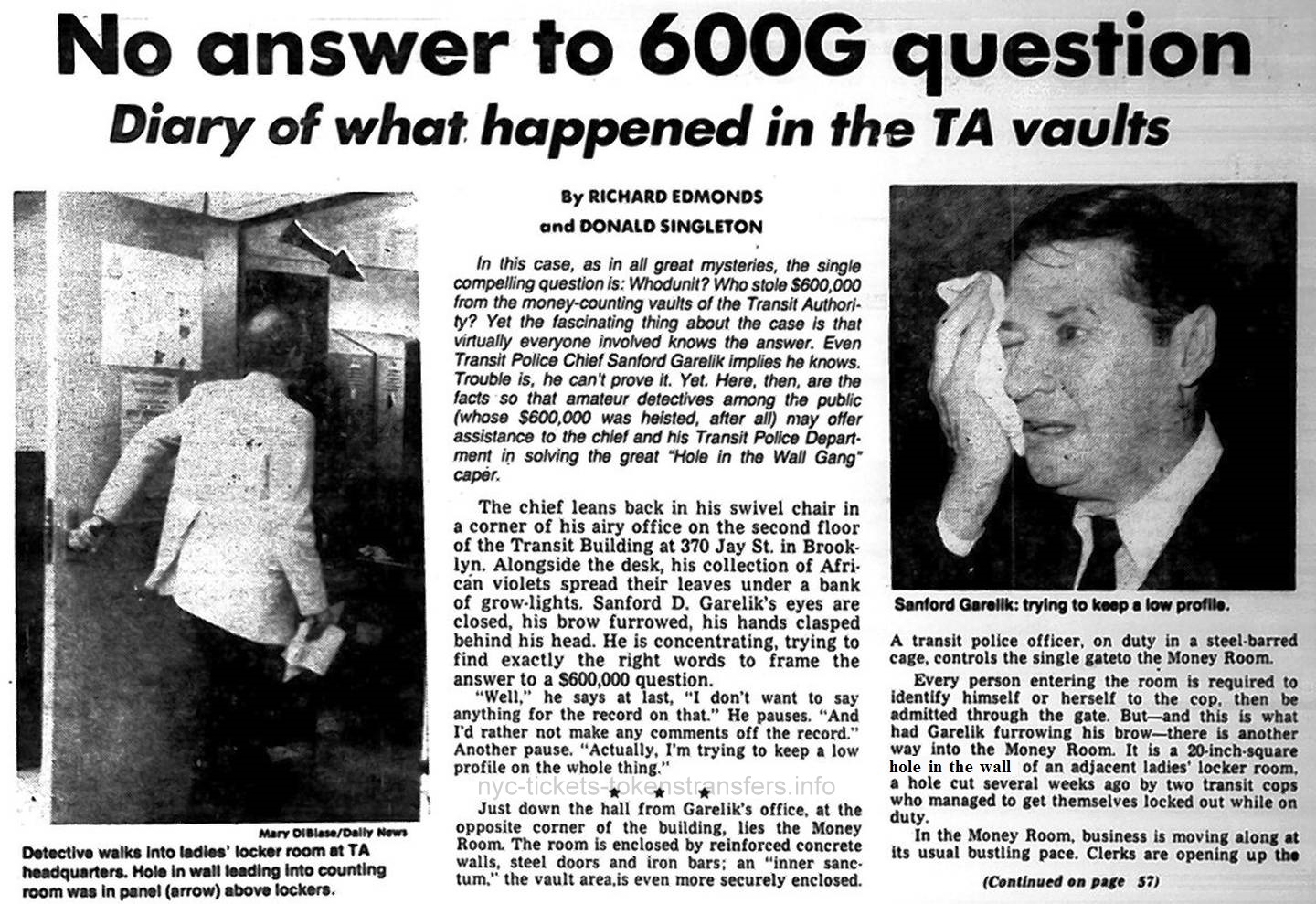 New York Daily News -
August 5, 1979
|
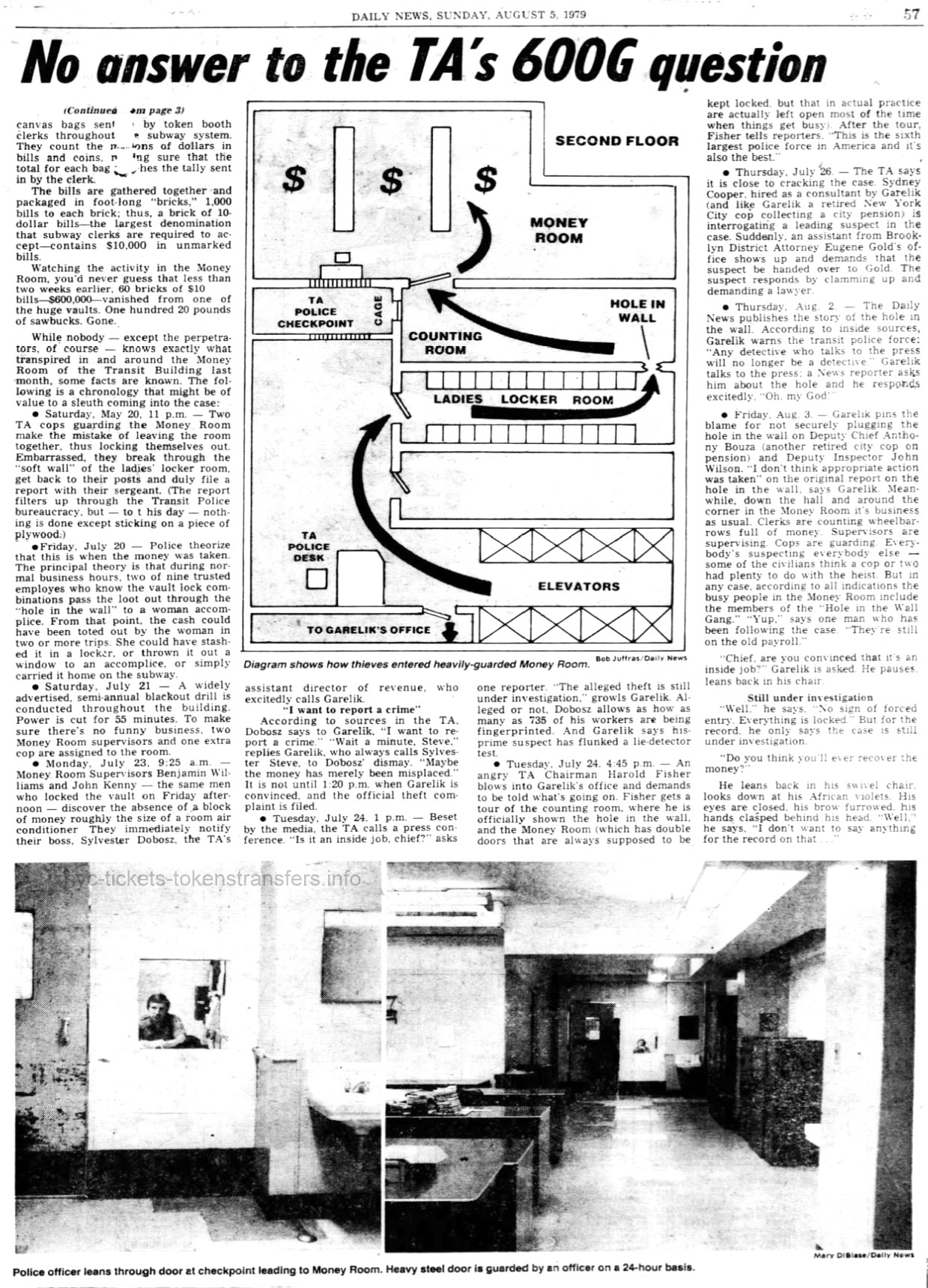 New York Daily News - August 5, 1979 continued |
| . | |
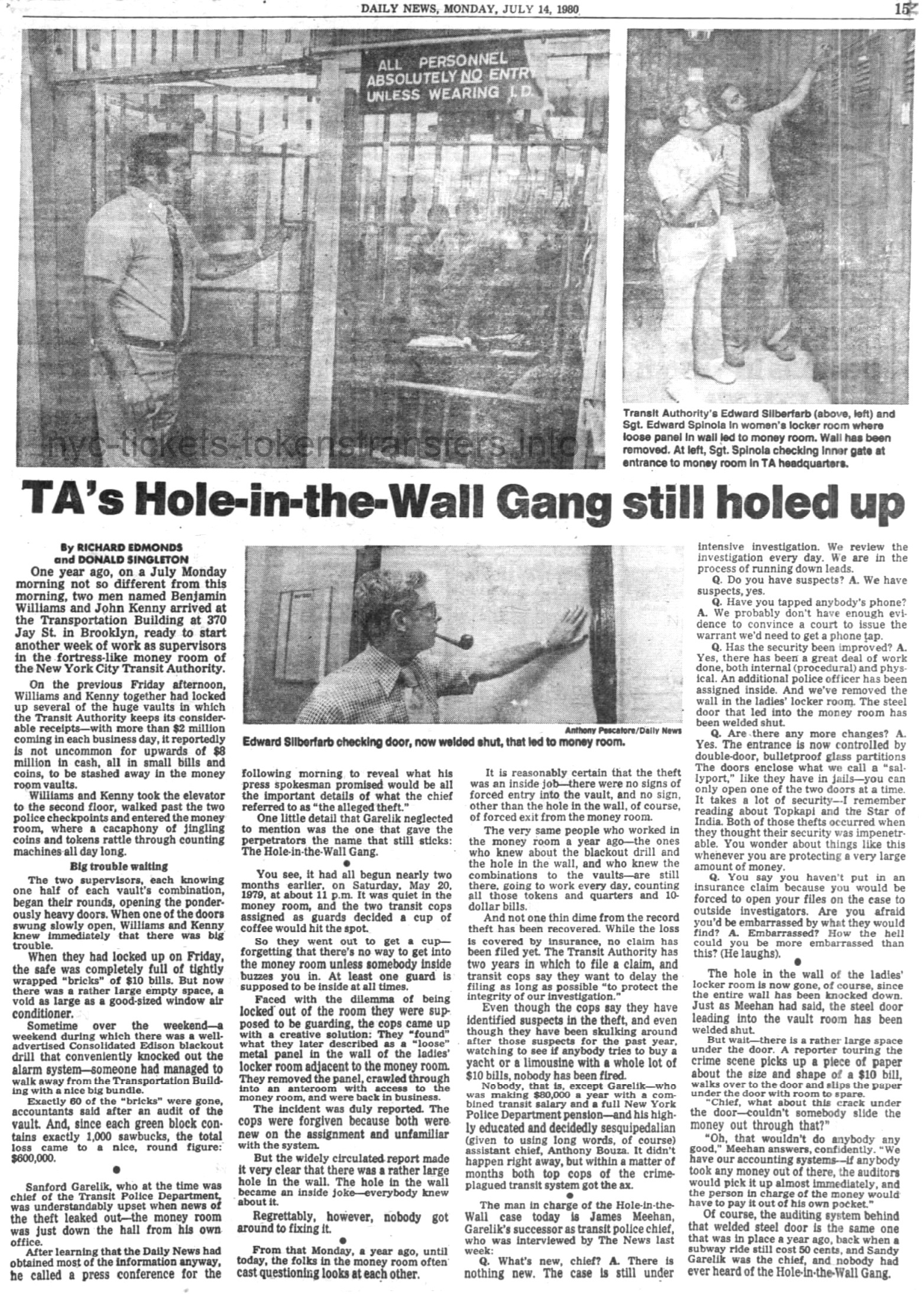 New York Daily News - July 14, 1980 |
|
And as of composing this chapter on September 17, 2022; the case remains unsolved.
![]()

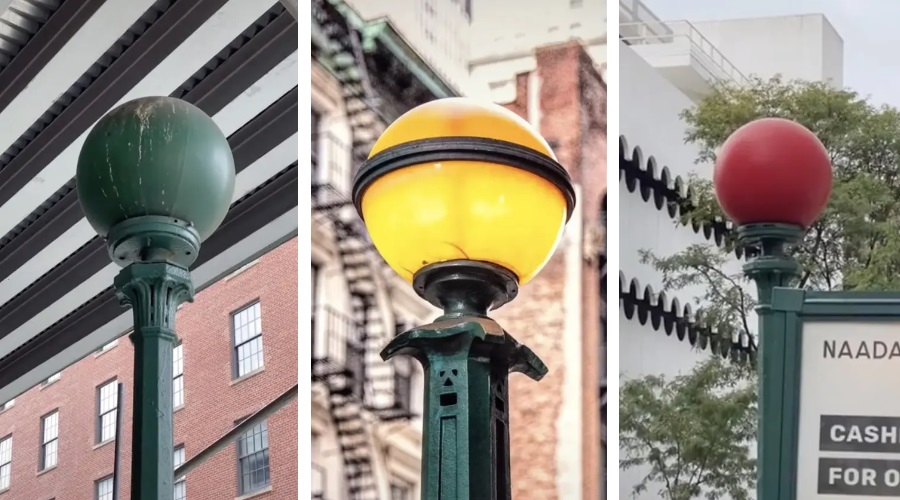
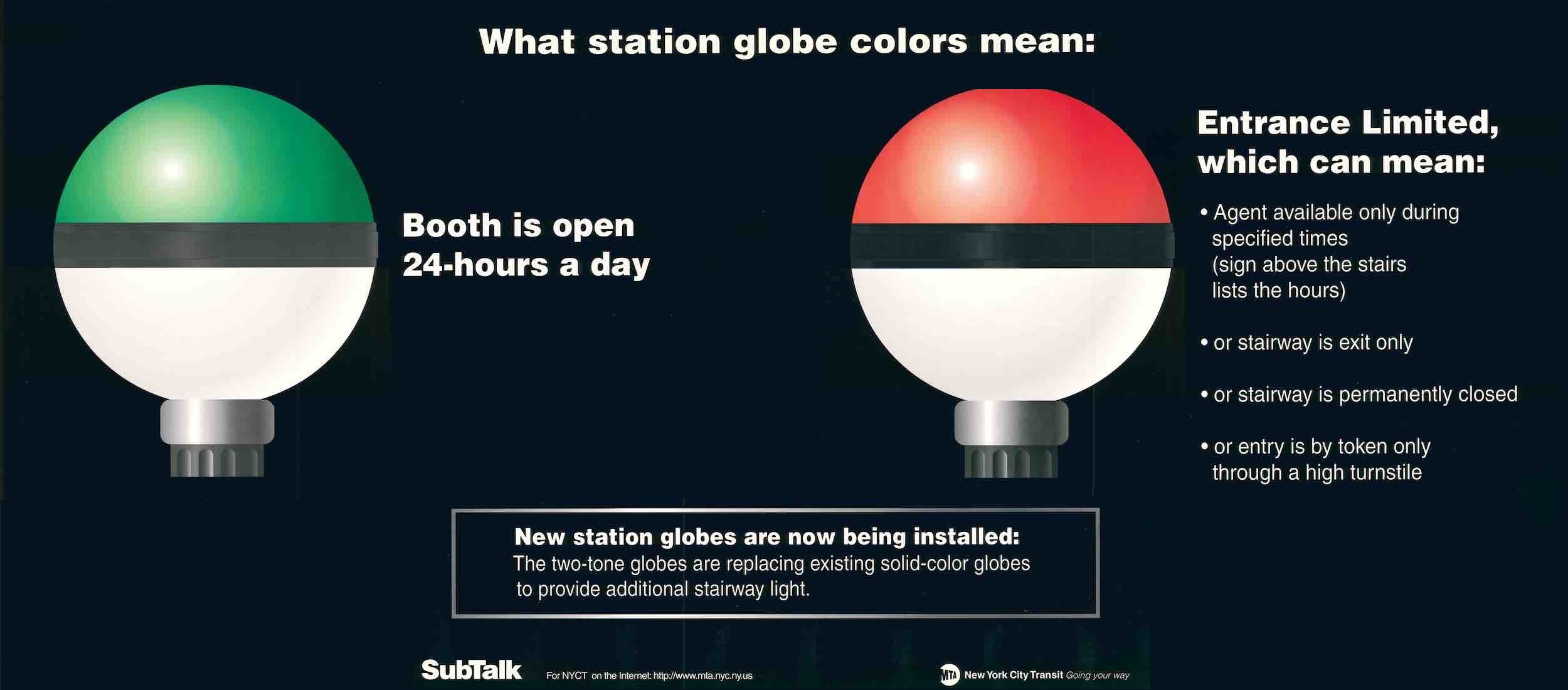

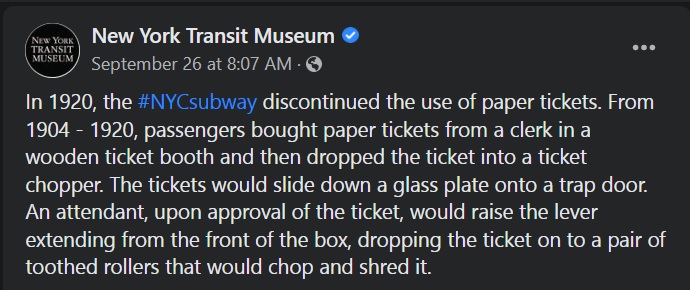 (2022)
|
|
||||||||||||||||||||||||||||||||||||||||||||||||||||||||||||||||||||||||||||||||||||
|
|||||||||||||||||||||||||||||||||||||||||||||||||||||||||||||||||||||||||||||||||||||
| . . |
|||||||||||||||||||||||||||||||||||||||||||||||||||||||||||||||||||||||||||||||||||||
| There is more than a "two part process" in manufacturing of tokens: not including the metal manufacturing process, and post-manufacture inspecting and packaging. Also, some manufacturers (Osborne Coin / Roger Williams Mint worked directly from coiled metal, while others cut it into plates first. | |||||||||||||||||||||||||||||||||||||||||||||||||||||||||||||||||||||||||||||||||||||
 |
|
||||||||||||||||||||||||||||||||||||||||||||||||||||||||||||||||||||||||||||||||||||
|
|||||||||||||||||||||||||||||||||||||||||||||||||||||||||||||||||||||||||||||||||||||
| . . |
|||||||||||||||||||||||||||||||||||||||||||||||||||||||||||||||||||||||||||||||||||||
 |
|||||||||||||||||||||||||||||||||||||||||||||||||||||||||||||||||||||||||||||||||||||
| . . |
|||||||||||||||||||||||||||||||||||||||||||||||||||||||||||||||||||||||||||||||||||||
 |
|
||||||||||||||||||||||||||||||||||||||||||||||||||||||||||||||||||||||||||||||||||||
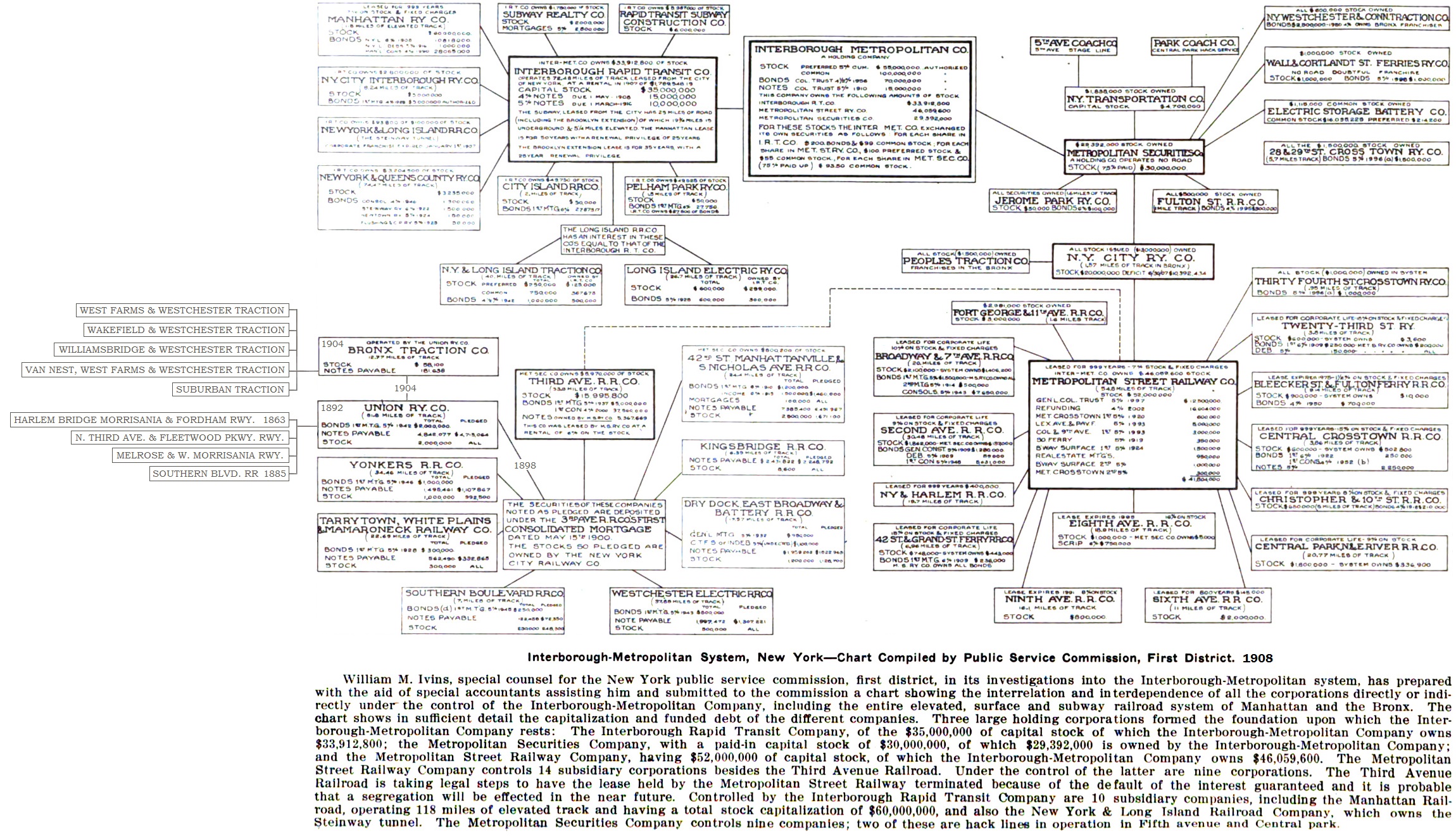
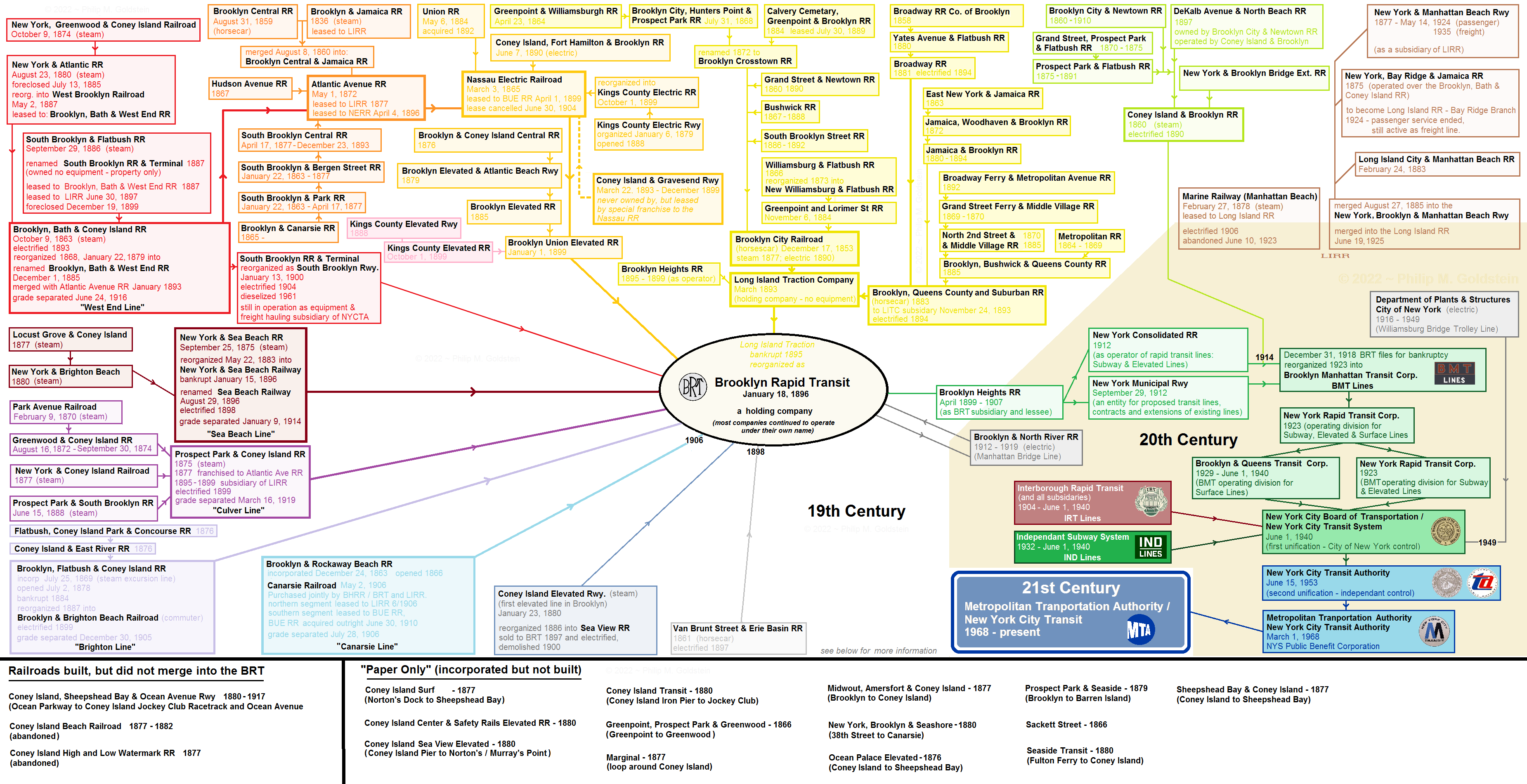
![]()
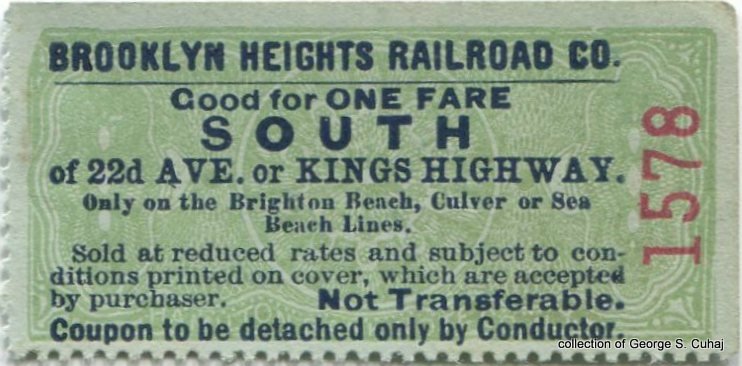 |
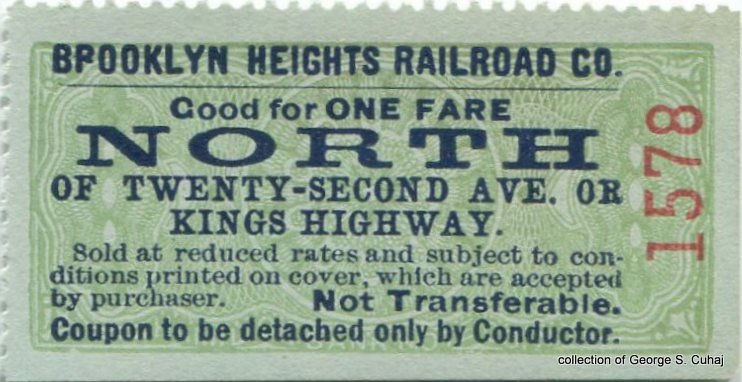 |
| Commutation Tickets for
passengers that resided south of 22nd Avenue / Kings Highway Station. All other passengers must pay the extra 5 cent fare to Coney Island. (shown enlarged to 150% ) |
|
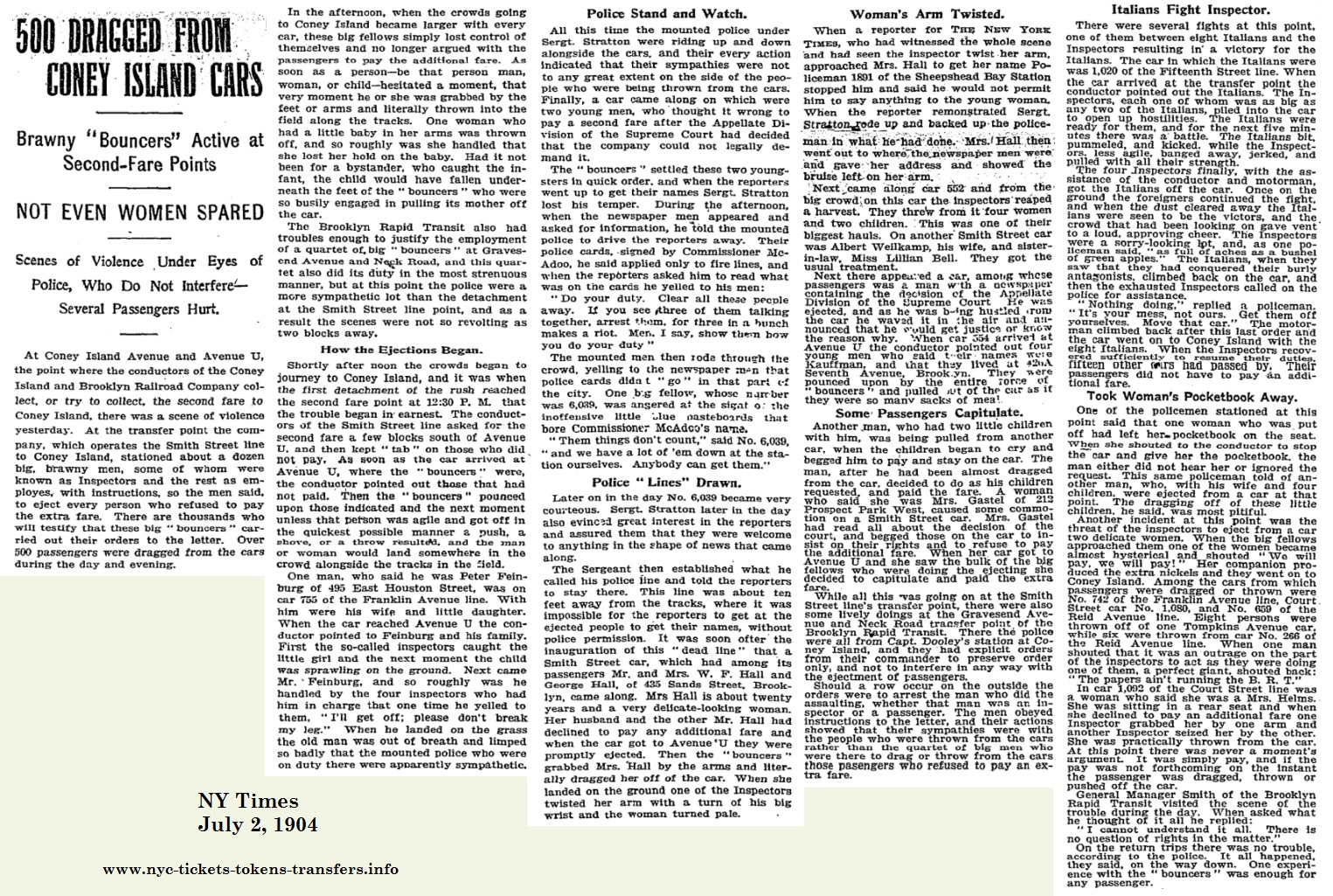
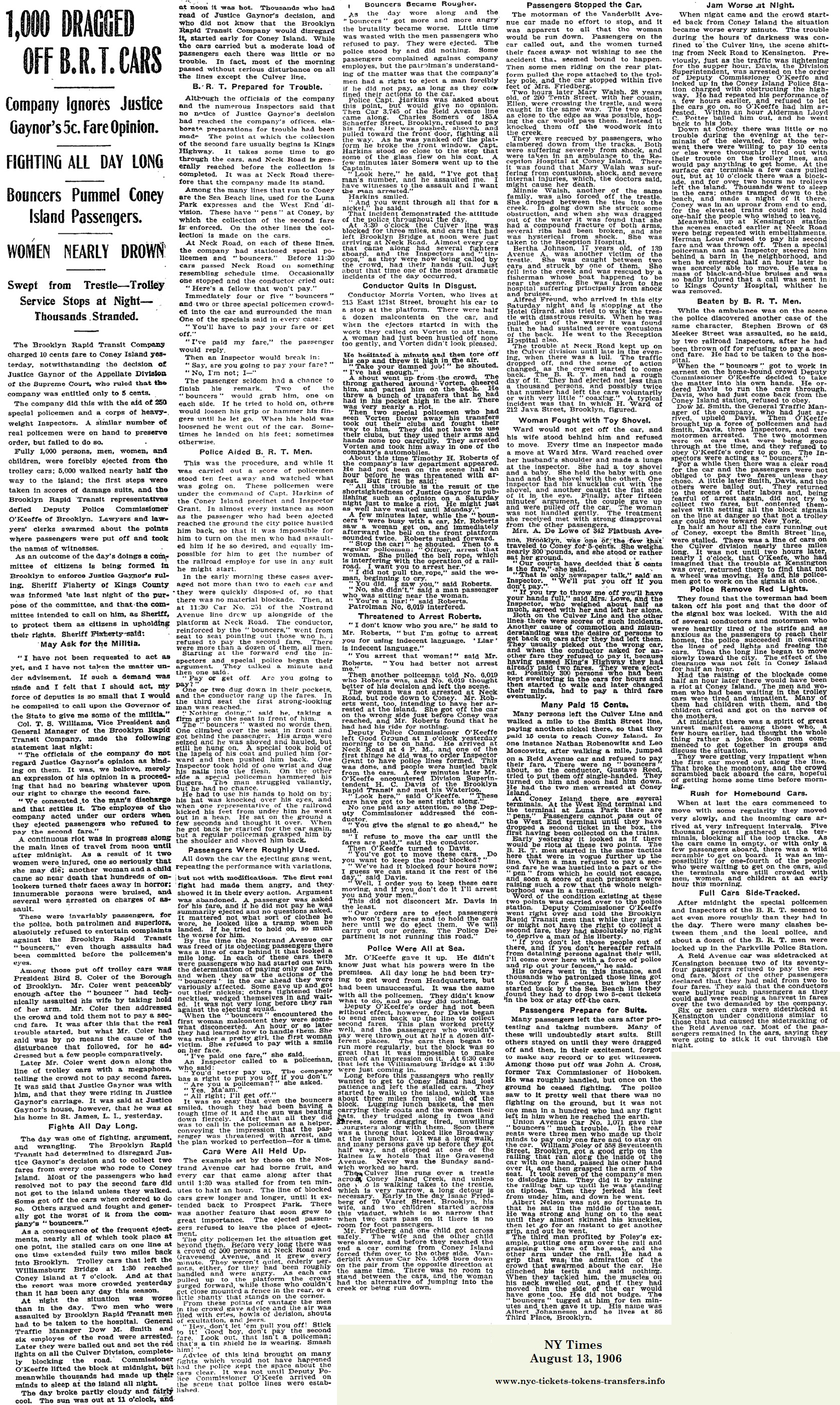
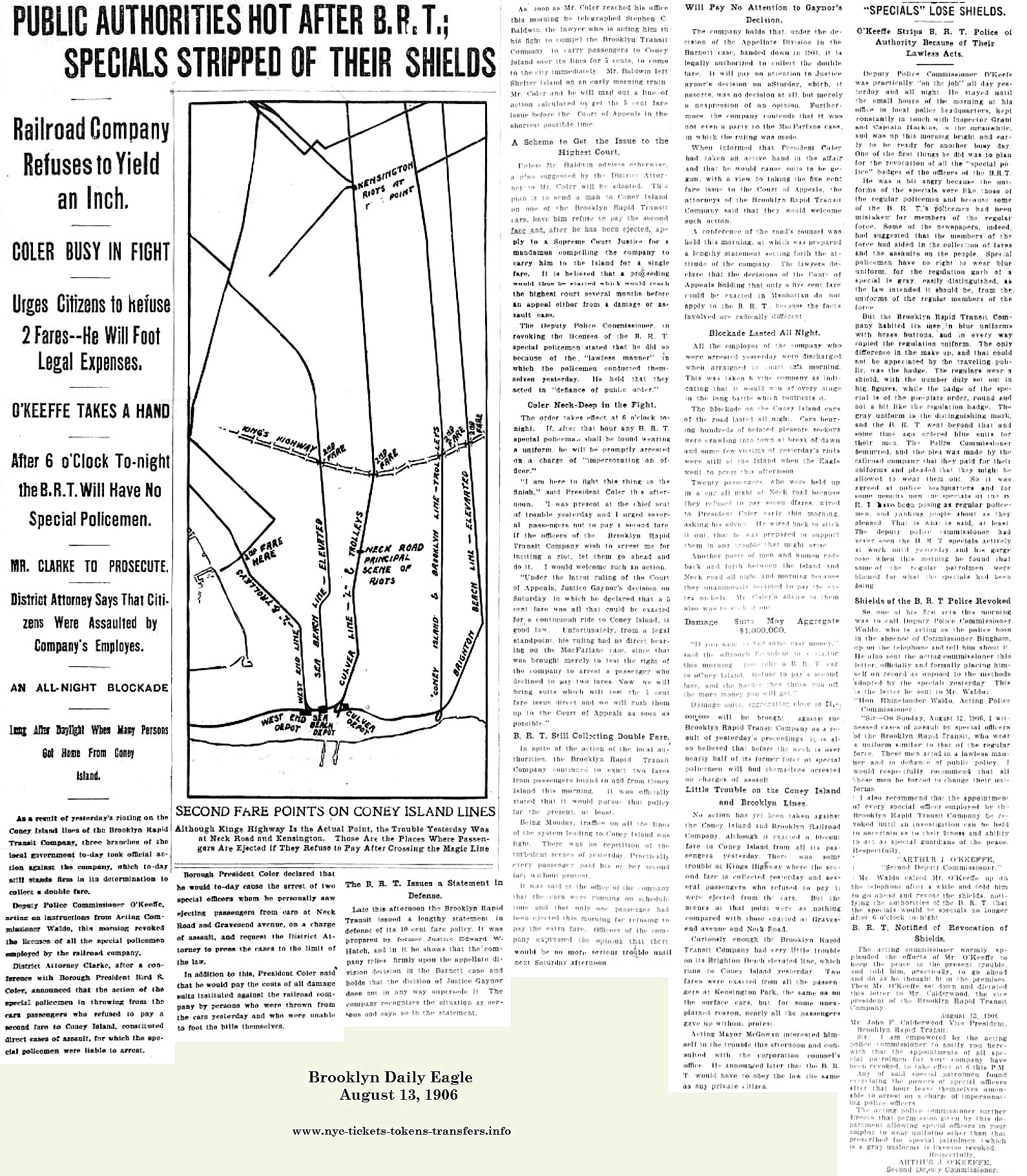
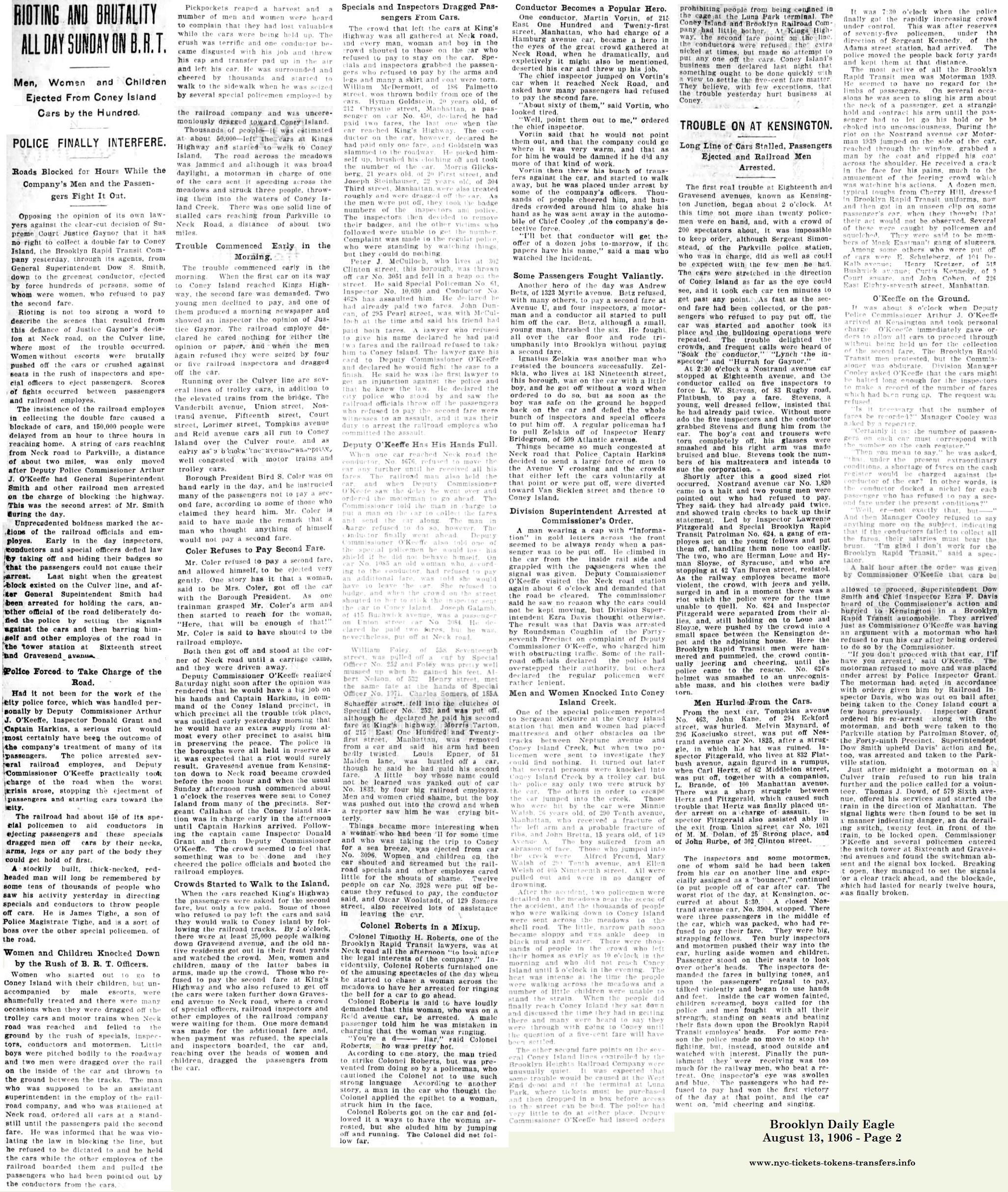
 Passengers
refusing to pay the extra 5 cent fare to Coney Island being displaced
from Union Street car. Note the blur of a
tussle at the front end of the car.
|
| . |
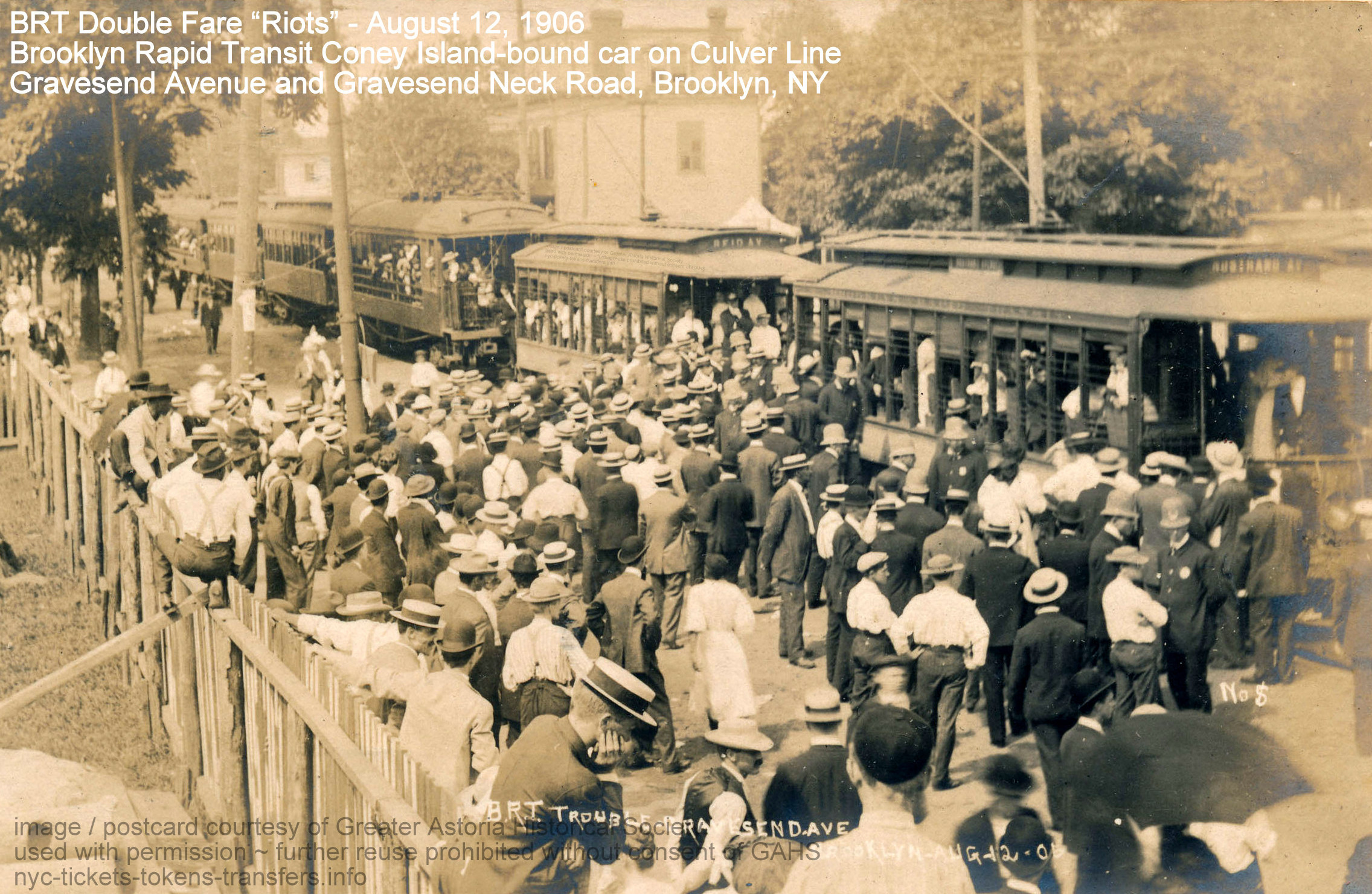 Note the
Fifth Avenue Elevated cars behind the Reid Avenue car.
|
| . |
 |
| . |
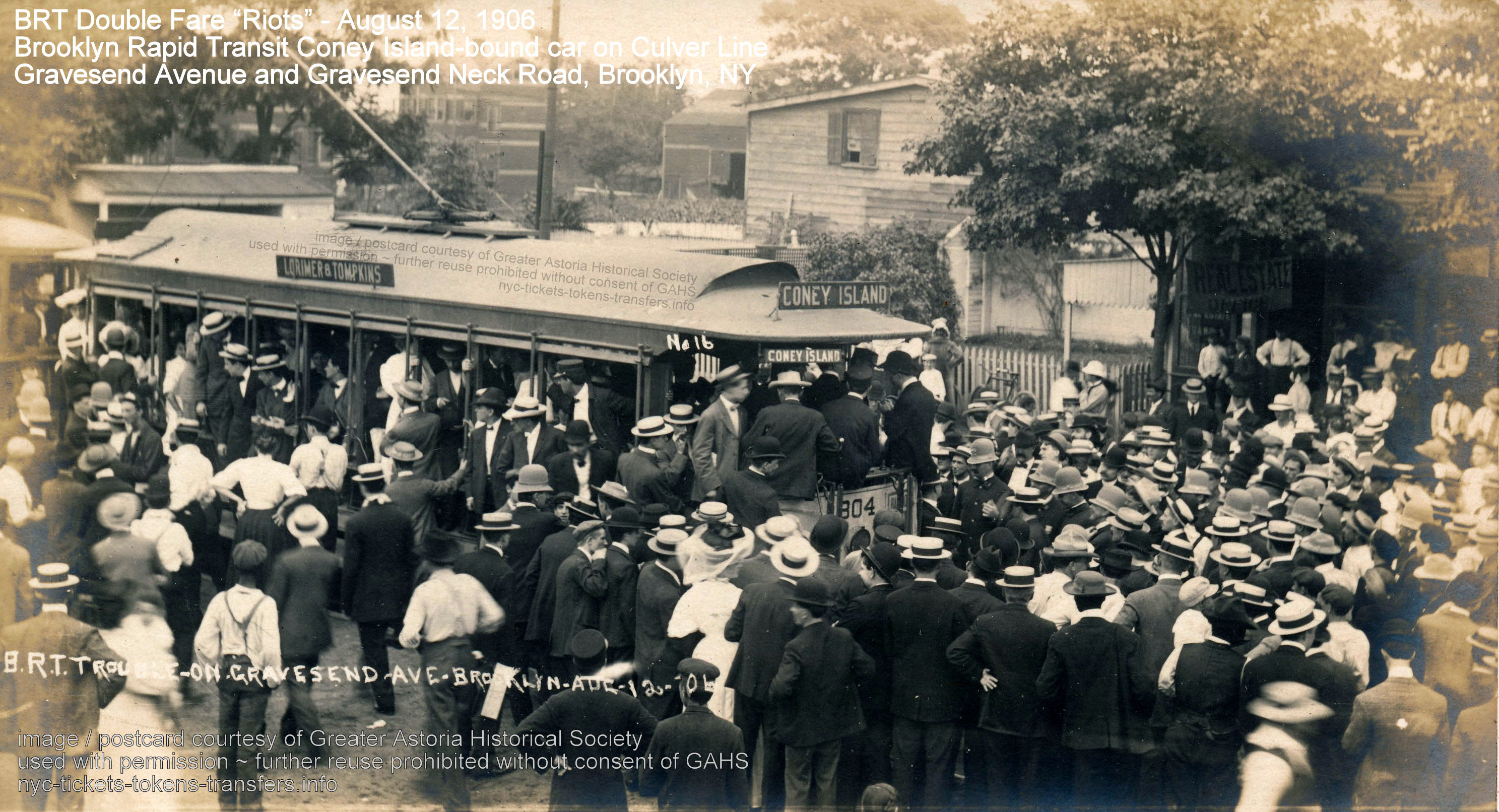 |
| . |
 |
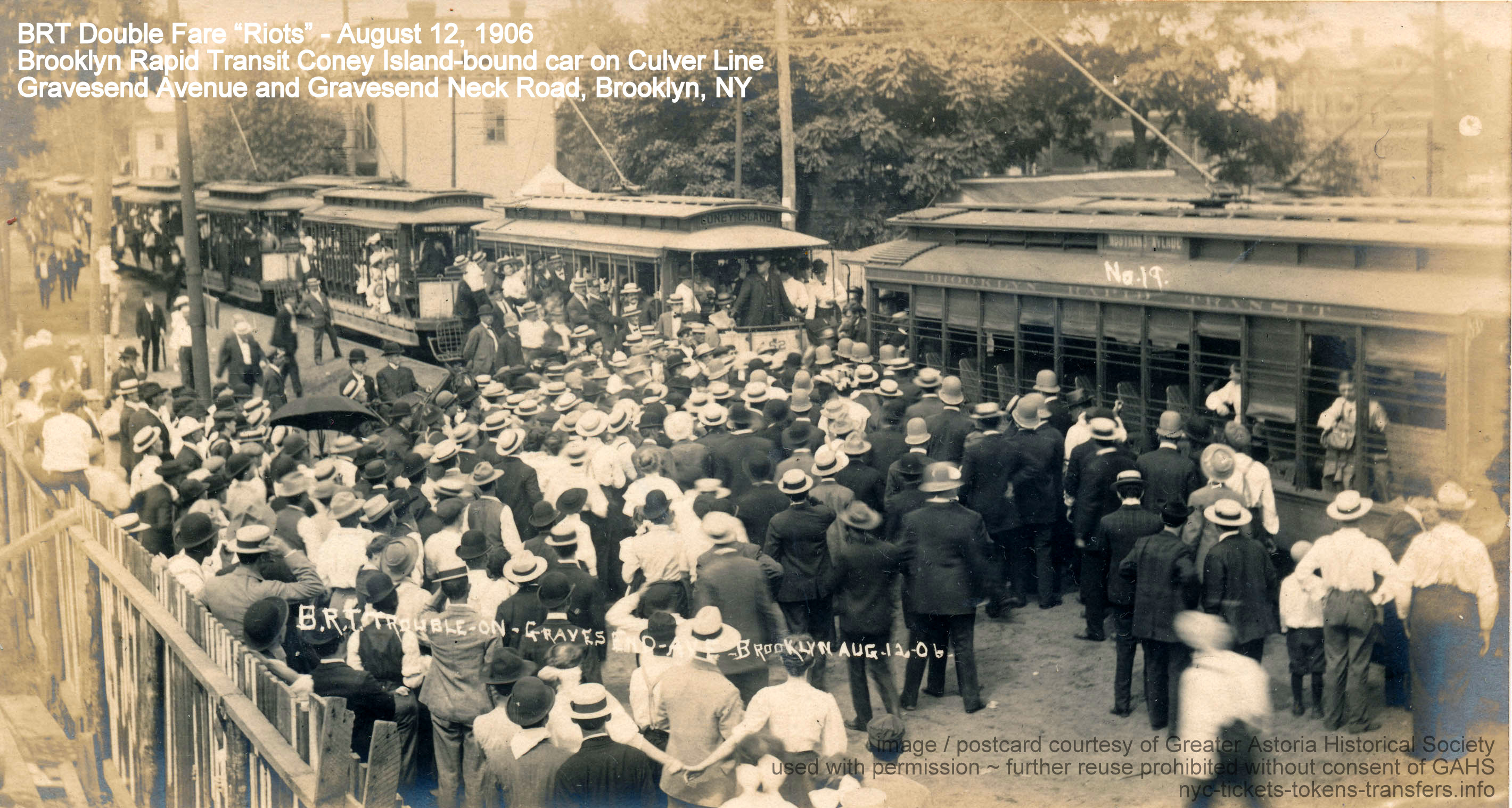 all
images above courtesy of Greater Astoria Historical Society - reuse
prohibited without express permission of GAHS
|


Mayor John F. Hylan was a very strong proponent for the 5 cent fare. His direct involvement beginning in 1921 ensured that following the BRT bankruptcy and reorganization into Brooklyn Manhattan Transit, the 10 cent fares to Coney Island and Queens would not be repeated. While this was commendable from a city resident / passenger standpoint, it did fail to take into consideration the effect of inflation.
In 1932, the City of New York, created built and opened the IND Subway, maintaining the 5 cent fare edict; while the privately owned BRT and IRT, still forced by the Dual Contracts to hold their fares at 5 cents were once again swimming in deficit. Each time these companies went to the Public Service Commission for a fare raise, it was denied. It took nearly 25 years for the IRT to develop financial problems. A lawsuit to raise the fare to 7 or 8 cents was long fought and eventually lost by the IRT at the Supreme Court level, but not before several million nice IRT tokens were minted in anticipation of that fare raise, only to remain in storage when it was denied.
Nobody likes paying more for a product, especially so since it had been cheap for so long, but forcing the 5 cent fare to remain in effect, while the cost of operations and labor rose; was undeniably poor fiscal judgment.
For at least a decade, the fare was locked at 5 cents and one can only tighten the belt so much, before you must reduce service, not give raises, layoff employees, close underutilized lines, and delay maintenance on equipment etc.
The City operated the IND, which for all intents and purposes was a rapid transit (subway / elevated) only operation. Bus operations were franchised out to private companies alleviating the IND from that responsibility. Furthermore, the city could raise taxes, franchise rates or transfer budget surpluses and finances from other departments to the subway operation. Robbing Peter to pay Paul so to say.The IRT and the BMT were not only operating rapid transit services, but surface transit operations as well. And they did not have the benefit of other non-transit operations to redirect finances to their transit operations, not to mention in continuing to pay dividends to their stock holders. This added to the expense side of their ledgers.
Also around this time, many of the elevated lines became redundant with subway or bus lines, so down they came. One by one, the elevated lines in Manhattan, which were considered noisy and an eyesore; were eventually all demolished. For Manhattan to develop into the metropolis of the late 20th Century, those elevated lines that had been built in the 1880s needed to go, and between 1930 and 1940; most did.
By 1940, the two private subway operators and dozens of traction companies were struggling and entering receivership. Thus, it was also the time of the "First Unification".
![]()
This line however would not open to
service until September 10, 1932, and additional extensions to this
line as well would open frequently after, but the next trunk line
(Sixth Avenue) would open in 1936 and gradually be extended. While the
IND
was enjoying a modicum of success, the IRT and
BMT,
and the myriad of surface lines not owned by the City of New York began
showing signs of struggle.
 |
||||||
| On
March 30, 1948, Governor Thomas E.
Dewey signed legislation allowing the Board of Transportation to
increase fares. This was subject to the approval of the Mayor William O'Dwyer, of whom granted his consent and on July 1. So, the Board of Transportation immediately began to make the necessary changed to the turnstiles to accept dimes. On Thursday, July 1, 1948 the fare was officially 10 cents. The nickel subway fare and of which had been in place since October 27, 1904 - a period of 45 years - and a provision of the Dual Contracts; was no more. But remember - the elevateds were ten cents back in the 1880's, so this was not the first time mass transit fares were a dime. Equally as notable was that the City of New York was the last major metropolitan transit system to charge 5 cents - all other major cities had since raised their fares. It must also be kept in mind, the fare only went to 10 cents on the subways and elevateds - the fare was "only" raised to 7 cents on the buses and trolleys. The Board of Transportation also instituted some changes to help offset the raise in fare, such as low cost inter-system transfers from rapid transit operations to surface operations and vice versa. These were the small format tickets purchased for 2 cents allowing transfer from rapid transit to the surface lines, or purchased for 5 cents from the surface lines to rapid transit.
Once again, the New York Times digital archives furnished the following coverage, seen at right. Also the BOT created fourteen free transfer points between the formerly separate subway operating divisions. On January 1, 1950; the fare on the surface lines (trolleys & buses) was raised to 10 cents to match its rapid transit counterparts, making for a uniform 10 cent fare on rapid transit and surface operations. While this fare raise helped the fiscal situation, but its effects were not long lived as it was hoped. With the Second World War over and thanks to post war prosperity, "a chicken in every pot and an automobile in every garage" was becoming a reality. John Q. Public could now afford the modern conveniences, such as an automobile, and travel trailers. Little stood in the way to stem the tide of transit users that were leaving the system to purchase these automobiles and with it, they were now also moving out to the suburbia where the subways did not reach. With this new found freedom, day trips to the beach resorts at Coney Island or Orchard Beach, were replaced with trips to farther destinations: the eastern shores of Long Island, Upstate New York, or even other states. The city residents on vacation no longer had to settle for the day at the beach - it was now a day in the mountains for fishing or camping, or visiting relations in other states and stopping at the landmarks along the journey. These were places the subways and buses couldn't take them. On July 1, 1952, the inter-system transfers were eliminated, forcing transit users back to a two fare system when using rapid transit and surface transit. |
 |
|||||
![]()
 The major goal of
the formation of the NYCTA was to remove transit policy; and especially
so, the setting of the transit fare; from the politics of City of New
York.
The major goal of
the formation of the NYCTA was to remove transit policy; and especially
so, the setting of the transit fare; from the politics of City of New
York.
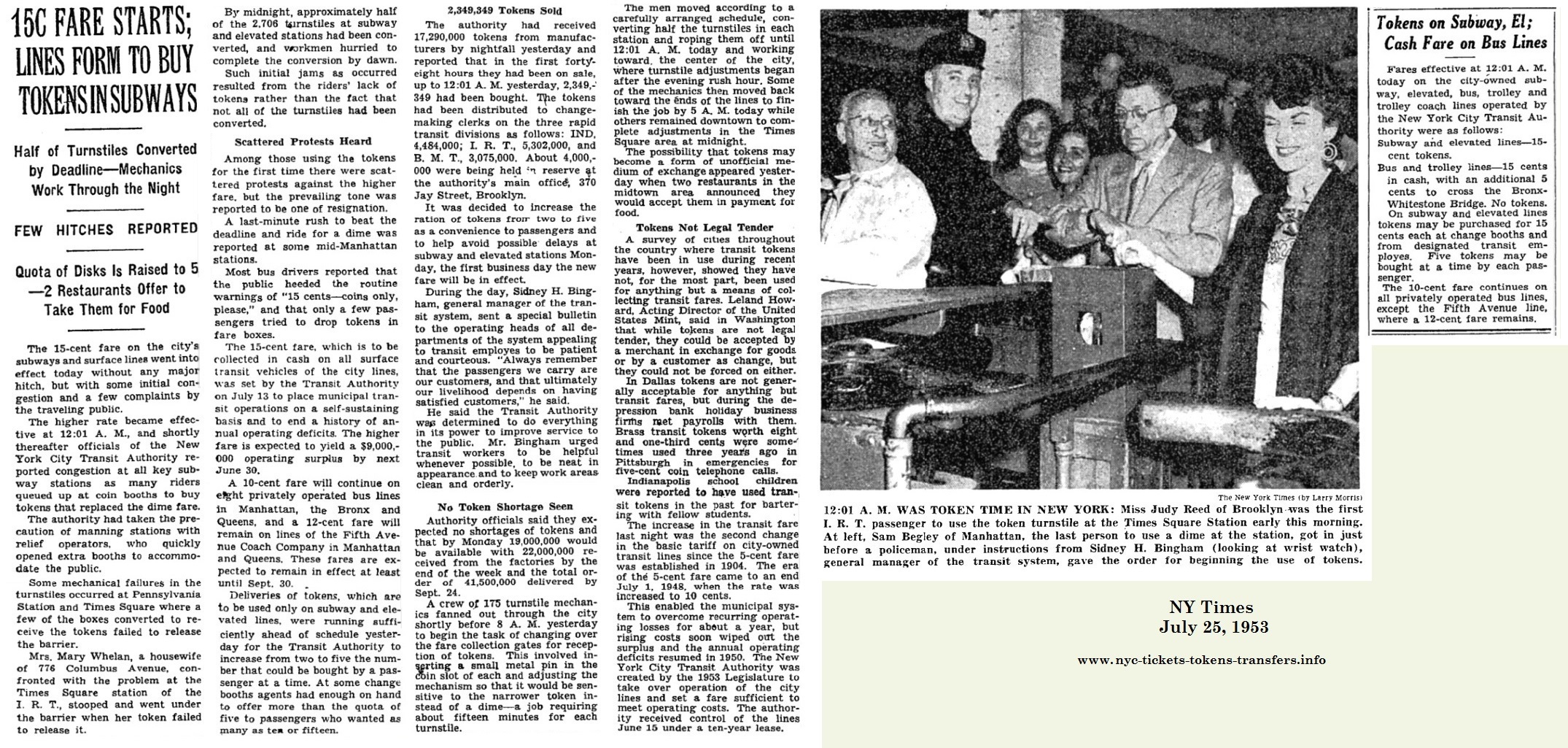
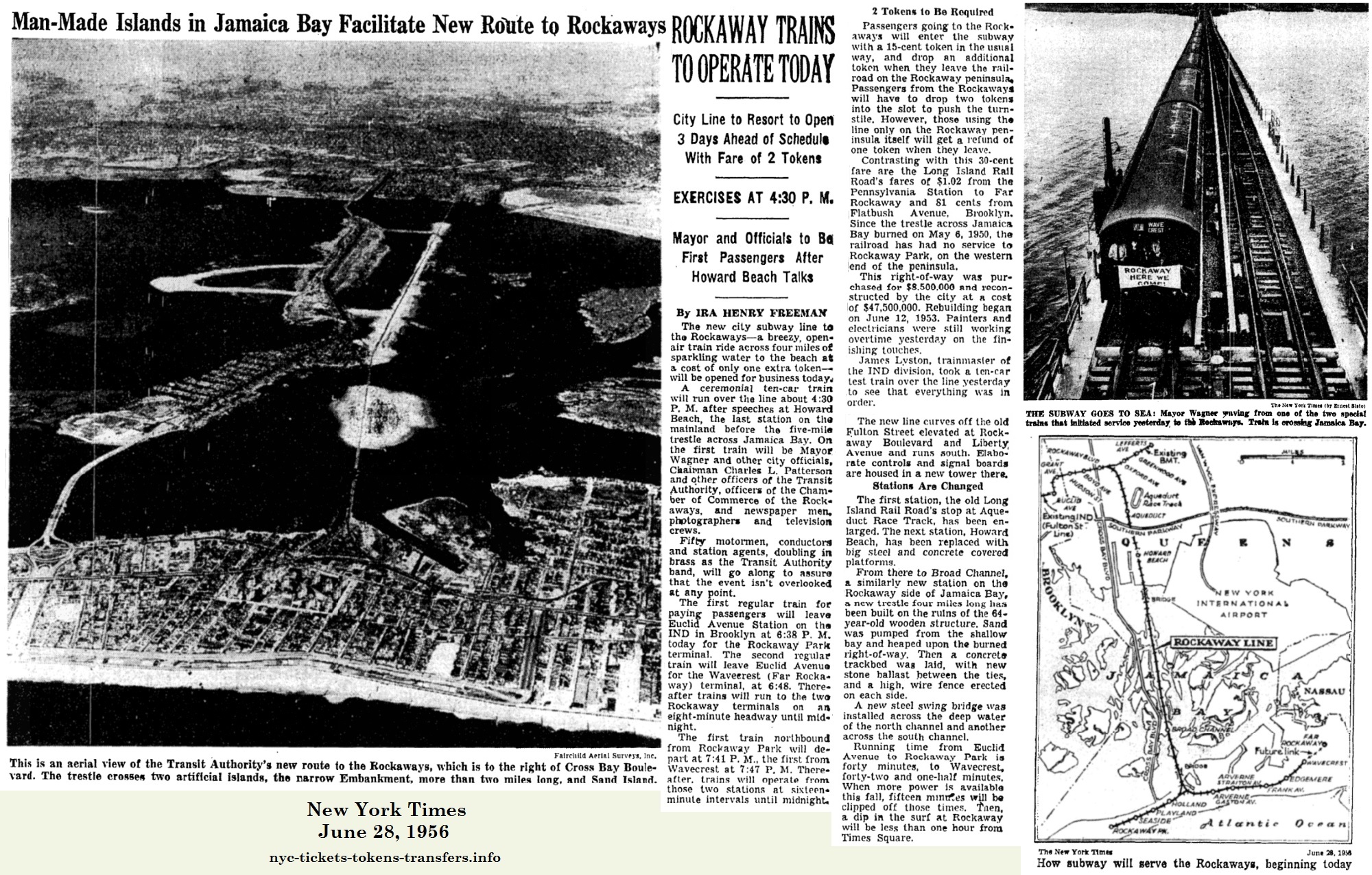
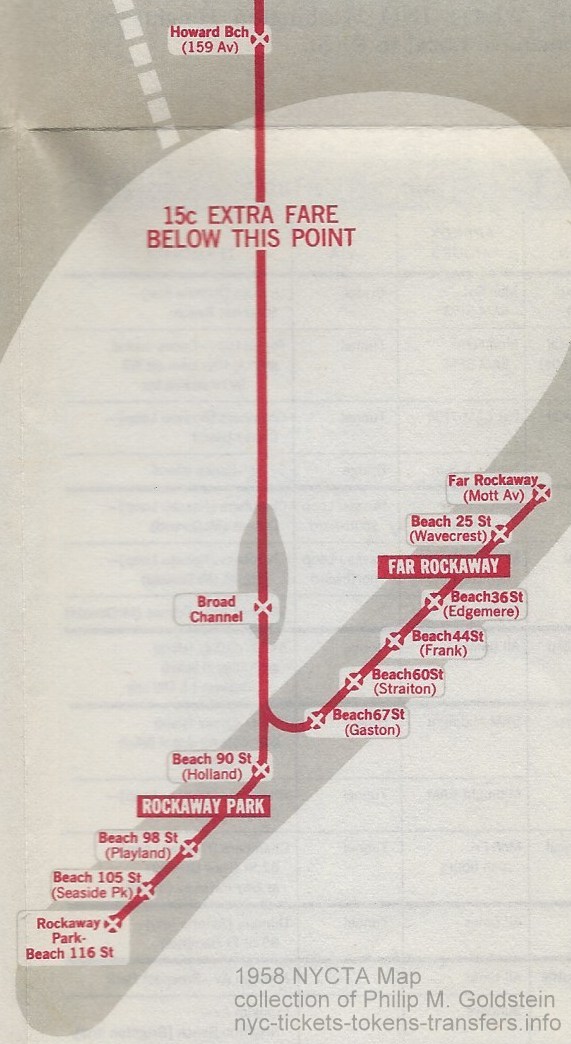 |
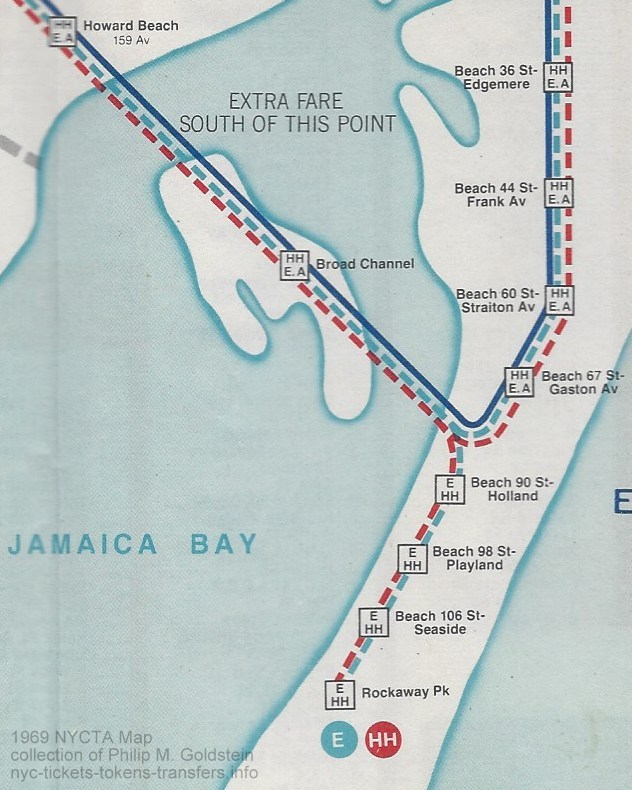 |
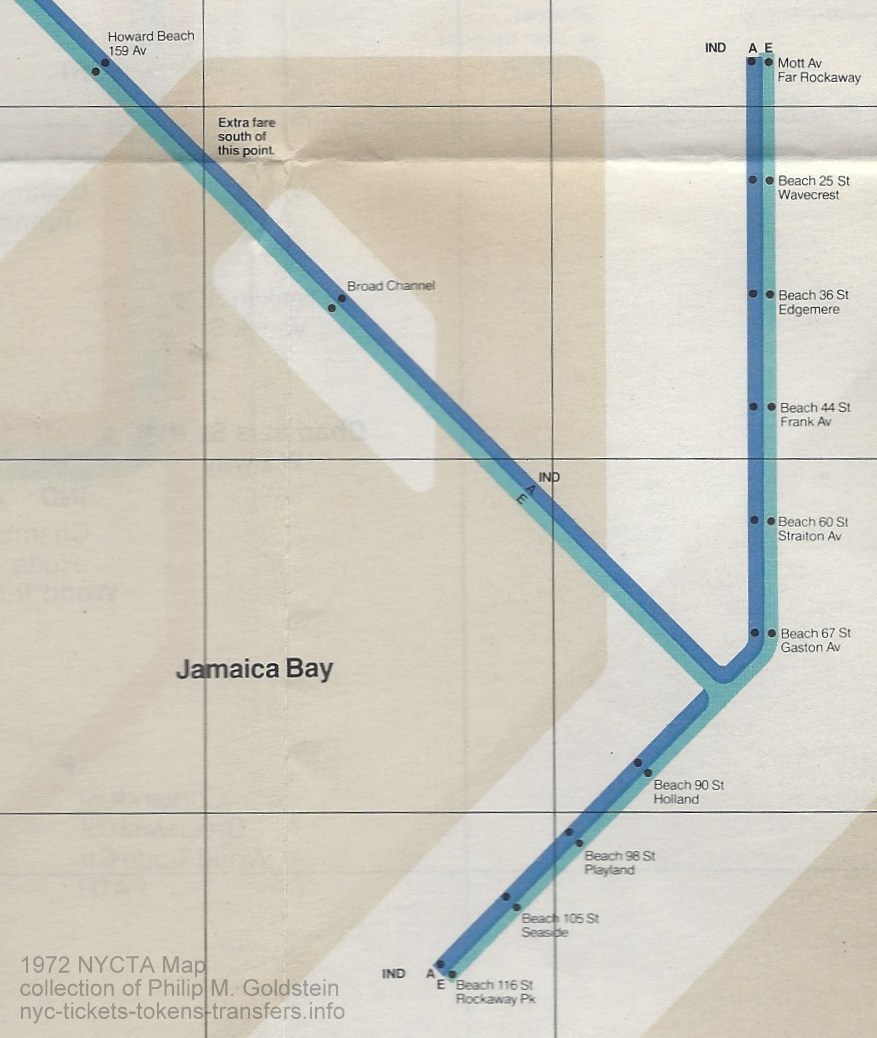 |
 |
| June 28, 1956 - July 4,
1966: 15¢ regular fare / 30¢ Rockaway fare |
July 5, 1966 - December
31, 1971 20¢ regular fare / 40¢ Rockaway fare |
January 1, 1972 -
September 2, 1975 35¢ regular fare / 70¢ Rockaway fare |
Rockaway Refund Ticket Rock-1 |
![]()
| By
1966, a new problem surfaced - the armed robbery of bus
drivers. A robber or two would board, brandish a knife or gun, and
relieve the
driver of his change maker and the change within the farebox. Remember, at this time, the driver had access to the change to replenish his change maker or to empty the farebox at the end of the route. When aggregated at the end of a shift, meant the fareboxes could hold a few hundred dollars. Until this point, the issue was isolated to maybe two or three drivers getting robbed a year. But with the 1960's, crime exploded. The New York Times reports 56 driver robberies in 1966, 97 in 1967, 244 in 1968 and 356 in 1969. As the result of this, Johnson / Keene Farebox introduced their next model, with an enclosed pedestal and a two key lockable drawer that acted as a vault. (see the chapter on Coins & Tokens as General Fare Media - Surface Fare Boxes for further information and images.) On August 31, 1969, bus drivers were relieved of the responsibility of making change, and buses went to exact fare only. |
 |
|
| If
one needed to travel more than a few blocks or farther than convenient
walking distance, a horse drawn omnibus
or stage was the optimal answer for travel. Omnibuses were the predominate means of mass transit within the developed areas of Manhattan (and even through the rural areas). They were convenient for both those who could not afford a horsedrawn carriage of their own, or for those that could; not have the time at that particular moment to go to the stable, mount the riding tack (saddle) for direct riding on the horse; or mount the harness to the horse(s) to attach the carriage, etc. One reference source cites the first known stage line was introduced in 1827 by Abraham Brower. The route was along Broadway between Bowling Green and Bleecker and Prince Streets in front of Niblo's Garden, a popular theater of the era. With some very tedious and in-depth research, of the New York Times (then called the New York Daily Times); I was able to ascertain fare for this first stage line: 12½ cents per passenger; remember - back in this era, the United States circulated a half cent coin. The first street railway - The New York and Harlem Railroad; was incorporated in 1831 and opened for service with a route from Prince Street eventually extending to Harlem Bridge in 1837 (and eventually beyond). |
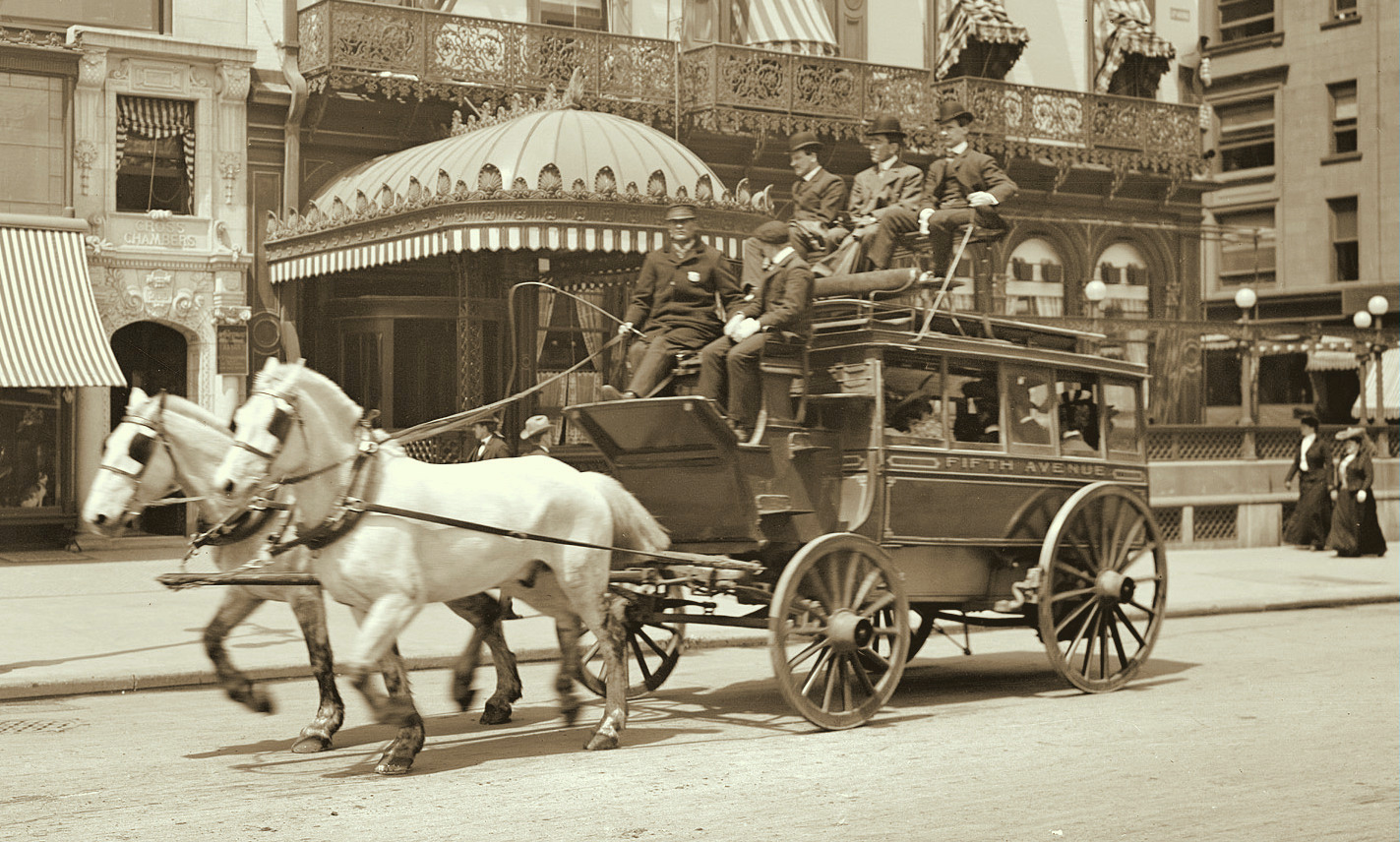 image courtesy of Shorpy Photo Archives |
|
Horse drawn vehicles gave way to electric or
gasoline powered vehicles, just about the same time the
first subway was built and opened in 1904. The first successful motor bus route began operation in Manhattan in 1905, when the Fifth Avenue Coach purchase a fleet of fifteen DeDion buses manufactured in France; and rapidly followed by 132 more; followed by buses built by the English manufacturer Daimler. In the image at right, dated July 10, 1913 and courtesy of Shorpy Historical Photo Archives; we see a Daimler double decker bus on the left (with right hand drive!) and original DeDion - Bouton (with left hand drive) on right. Note the snazzy bulb type brass trumpet horn on the DeDion! Pay particular note to the sign board on the side under the windows: FARE TEN CENTS. Now, it has long been said the Fiorello LaGuardia and Robert Moses were the impetus behind the destruction of New York's streetcars & trolley system. I have long believed this to be as well. While they certainly did not help the survival of the traction interests in the least, and were certainly among the final people to drive the nail into the coffin for streetcars; as we see from this New York Times article dated August 28, 1924 and seen below; there was a call for a network of buses that early to replace the trolleys, and before Mssrs. LaGuardia or Moses came to power - 10 years before to be exact. And as can be read, many motor coach companies were lining up behind the idea. |
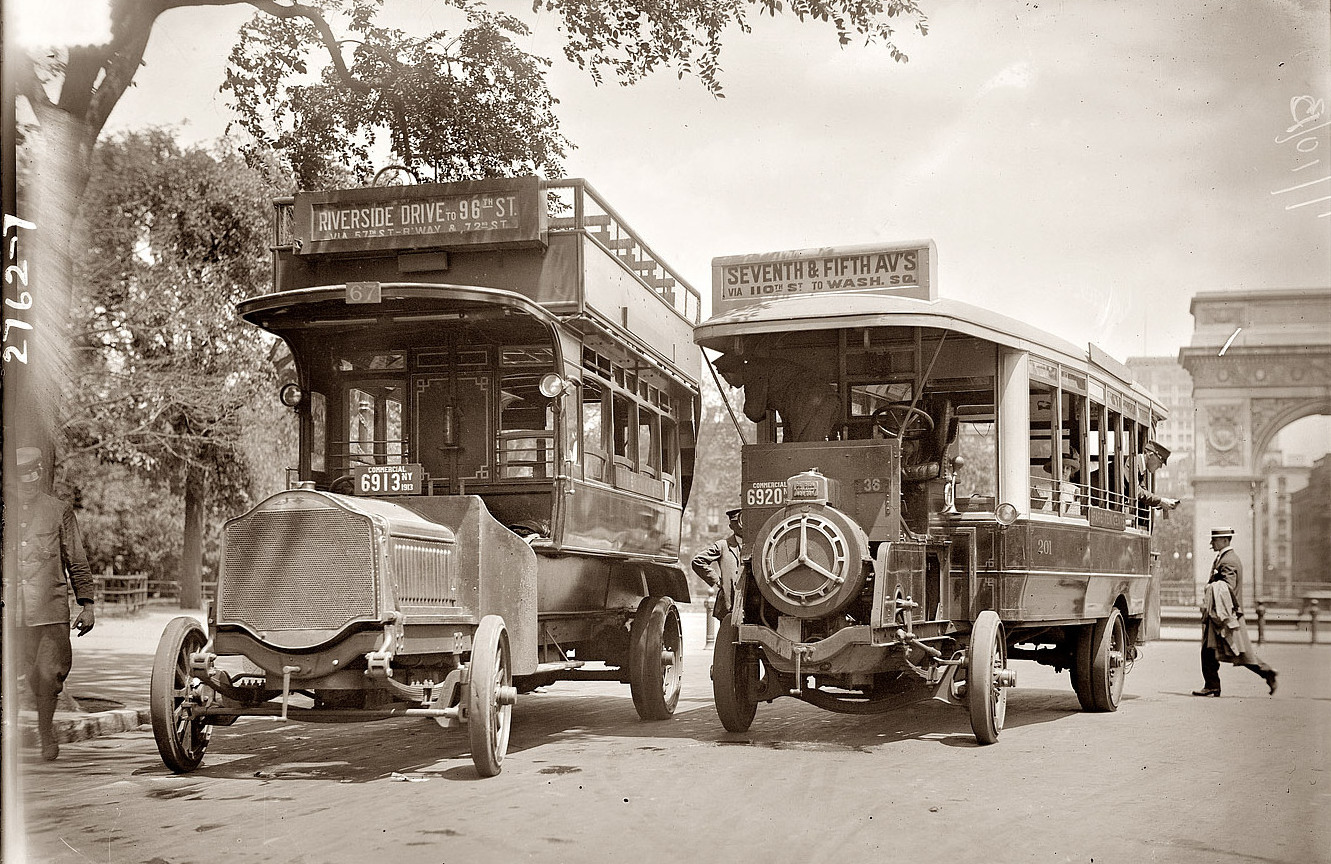 image courtesy of Shorpy
Photo Archives
|
Liberty Lines; operating in western and central Bronx with seven Express Bus routes, and
New York Bus Service in eastern Bronx operating six Express Bus routes.
| Affiliated Bus Transit Courier Bus Flushing Heights Bus Green Bus Lines Jamaica Buses Kings Coach Liberty Bus Lines Long Island Coach |
Ludwig Bilow Midland Coach Municipal Motorbus National City Bus Lines New York Bus North Shore Bus Queens Auto Traction Queens - Nassau Transit |
Rauchwerger Richmond Hill Bus Ruoff Brothers S & C Bus Steinway Omnibus Schenck Transportation Triboro Coach Z & M Coach |
|
But, and very frankly; service in the beginning was haphazard
and deemed
inefficient. So inefficient is seems, that a few early bus routes were temporarily operated under supervision by the New York City Department of Plant & Structures (DP&S) as the "Emergency Bus System" which supplied 20 seat buses. These routes were assigned numbers in the order in which they were introduced, in all five boroughs. In 1931, to avoid unnecessary duplication of routes between two different carriers, and as not to incur the strong arming of passengers into one carriers' bus over another (much like what had happened in the mid 1800's with the first stage companies); the Board of Estimate proposed dividing Queens into four zones, for bus operating franchise purposes. The four zone setup for bus franchises was as follows:
|
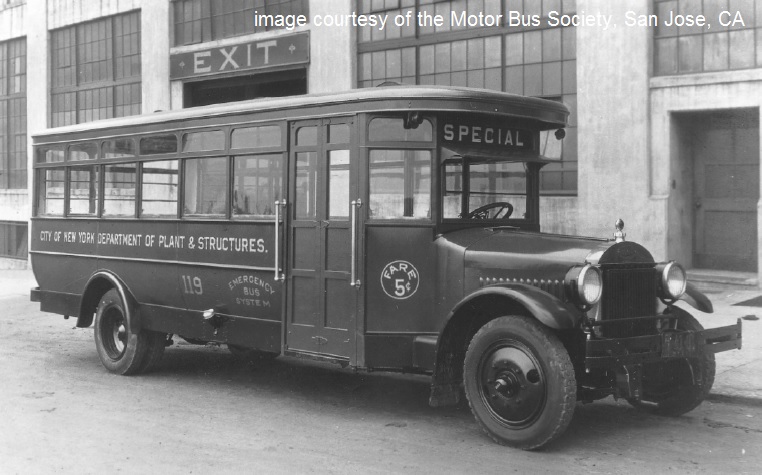 Emergency Bus System -
City of New York - Department of Plants & Structures - 1928 image courtesy of Motor Bus Society |
| Zone A - Triboro Bus | Zone B - North Shore Bus | Zone C - Green Bus Lines | Zone D - Bee Line, Inc. |
3.10 Fare Structure and Transfer PolicyFare and transfer policy for franchised services has been established by New York City Department of Transportation. In most instances, the policy integrates very well with that of MTA-NYCT. Franchised bus carriers do accept MetroCard as fare media to board buses, and transfers are allowed between the private franchised buses and MTA-NYCT buses and subways. The new fareboxes in use on the private carriers are compatible with MetroCard, and are the same as those in use by MTA-NYCT, therefore, cash fares need to be paid with coins. Liberty Lines and New York Bus have Bill Accepting Units attached to their fareboxes, so cash fares can be paid with dollar bills for these companies. The fare policy of New York City private franchised buses identifies three different service types in operation, with a fare policy set for each type. These three service types New York City Department of Transportation Bus Ridership Survey and Route Analysis 25 are:
The base fare for 1-zone express services is also $1.50, and the fare policy is similar to local services. The main difference is that there is no off-peak discount, at all times the fare is $1.50. Half fare for senior or disabled passengers does not apply during peak periods. A one-day borough specific pass is available to riders for $3.00 for unlimited rides on 1-zone express buses in that borough. Metro-card (both pay-per-ride and unlimited) as well as NYCT tokens are accepted as payment on all 1-zone express buses. All transfers are accepted on 1-zone express buses, except those issued onboard a route with the same designation. In certain instances an additional “step-up” charge may be charged. Transfers are good for two hours after issuance. Free transportation is available for person authorized by the carrier and/or New York City Department of Transportation as well as a personal care attendant for a paying disabled passenger. The base fare charged on 2-zone express services is $3.00. Fares can be paid in cash, with pay-per-ride Metro-Card, as well as express bus unlimited Metro-Cards. NYCT tokens are accepted and count $1.50 towards the fare an all 2-zone express services. Senior citizens and disabled passengers are entitled to ride at half fare ($1.50) during offpeak hours only. Passengers can transfer to any other bus route in New York City within two hours with a MetroCard, except one that is the same route of the original bus. Local and 1-zone transfers are valid for the equivalent of $1.50 onboard a 2-zone express bus. Transfers from NYCT express bus routes are accepted without any additional charge. Student Metro-cards are accepted as $1.50 of the fare aboard a 2-zone express bus. Personal care attendants, as well as persons designated by either New York City Department of Transportation or the individual carrier, may travel free on 2-zone express buses. Table 3-9: Fare Structure
At the time this survey was completed, NYCTA fares were $2.00. |
| January 3, 2005 | Liberty Lines Express | Queens |
| February 27, 2005 | Queens Surface Corporation | Queens |
| July 1, 2005 | New York Bus Service | Bronx |
| December 5, 2005 | Command Bus Company | Brooklyn |
| January 9, 2006 | Green Bus Lines | Queens |
| January 30, 2006 | Jamaica Buses | Queens |
| February 20, 2006 | Triboro Coach Corporation | Queens |
![]()
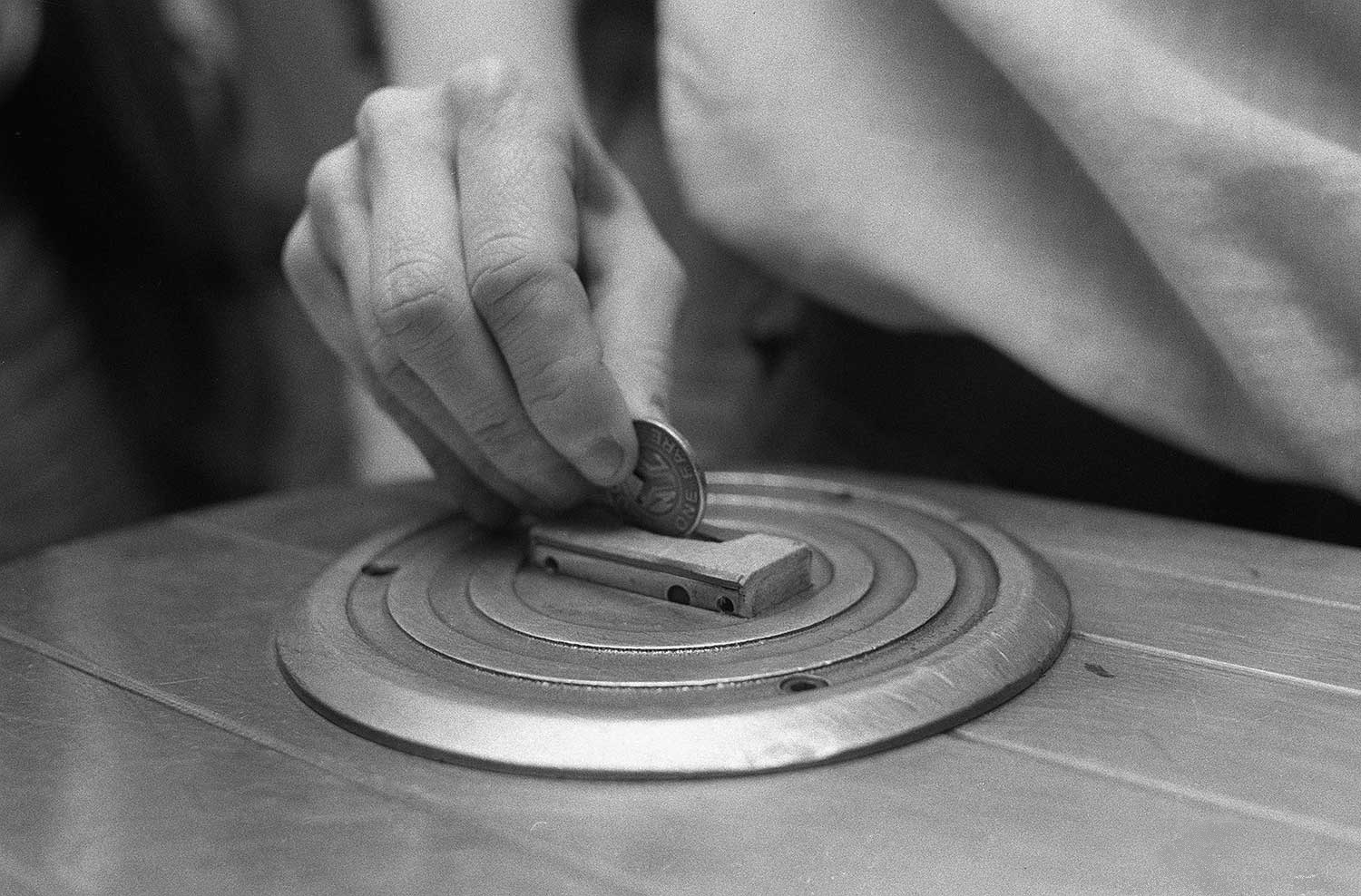 |
The
following table is a comprehensive compilation of all known
fares in chronological order, as well
as
dates relating to the institution of or cessation of fare related
services, for all services
(when known) for both private and municipal operations. The following table is divided into two sections; the left column for rapid transit (subways and elevateds) and the right column for surface lines (trolleys, streetcars and buses). As such, you will see blank spaces where one mode may have changed but not the other. Token types and changes thereof are in bold face type. Also take note, the private bus operator fares were usually raised after the NYCTA raised theirs, to allow for filing with the Board of Estimate, and subsequent amending of the associated contracts. Most of the information below has been compiled from New York Times archives. |
| date | fare transfers | Rapid Transit (subways & elevateds) | date | fare transfers | Surface Lines (stages, trolleys, streetcars, and buses) | |
| 1827 | 12½¢ | per person - Brower Stage (Broadway between Bowling Green & Prince Street) | ||||
| 1832 | 18¾¢ 20¢ |
New York &
Harlem River RR - to Yorkville to Harlem |
||||
| 1850 - 1864 | 10¢ 8¢ |
fare for Broadway / Fifth Ave; Broadway, 23rd St & Ninth Ave; Broadway / Fourth Ave; Broadway / 8th St; Madison Ave stages Second Street & Broadway stage |
||||
| October 23, 1852 | 5¢ | Eighth Avenue Railroad, entire railroad | ||||
| 1853 | 6¢ | Third Avenue Railroad | ||||
| March 22, 1855 | 10¢ 12½¢ |
New York &
Harlem River RR - to Yorkville to Harlem (upon competition from Third Avenue Stage) |
||||
| 1860 | 6¢ 3-4¢ |
most stages
uniform fare for main avenues cross streets |
||||
| 1871 | 10¢ | New York Elevated; Ninth Avenue El route | 1872 | 6¢ | New York and Harlem
RR (street railway) Authorized maximum fare for any distance traveled below 42nd Street on the |
|
| 1879 | 10¢ 7¢ 5¢ |
Manhattan
Elevated: trips less than 5 miles, not to exceed through passage from
Battery and Harlem River, except on Commission Trains (operating 5:20 - 7:20 am & 5:00 - 7:00 pm) at 5¢ and 7¢ |
||||
| May 26, 1900 | 10¢ | double fare collected on train / cars south of Kings Highway on Culver Line and Brighton Lines; upon exit at Coney Island on Sea Beach Line and West End Lines. | ||||
| 1904 | 5¢ 3¢
free |
Interborough Rapid
Transit, Manhattan Elevated, Third Avenue Elevated transfers to other lines transfer to Second and Third Avenue Lines at South Ferry |
1904 | 5¢ 3¢
free |
New York City
Interborough Railway (surface lines) transfers to other lines transfer to Second and Third Avenue Lines at South Ferry |
|
| 1912 | 6¢ 11¢ |
Manhattan & Queens Traction Corp | ||||
| May 1, 1920 | double fare to Coney Island abolished | |||||
| November 1, 1923 | 3¢ 5¢ 5¢ |
Manhattan &
Queens Traction Corp converts to Zoned
System: Queensboro Bridge Local Zone A: Manhattan Terminal QBB to Grand St. Elmhurst Zone B: Old Mill Road to LIRR / Trolley Terminal, Jamaica |
||||
| September 12, 1928 | IRT files for 7 cent fare, tokens minted; fare hike denied | date? | 5¢ 3¢ 2 for 5¢ |
Queensboro Bridge
Railway: Manhattan to Queens (cash), Queensboro Bridge Railway: Manhattan to Welfare Island (cash), Queensboro Bridge Railway: tokens (2½¢ - also good for Welfare Island to Queens) |
||
| February 17, 1936 | 2½¢ | eastbound Norton Point Line passengers transferring to the rapid transit lines at Stillwell Avenue Terminal fare was reduced from 5 cents each part to 5 cents for both. Westbound Norton's Point Line trolley passengers (away from Stillwell) or using the trolley as a stand alone trip, the fare remained 5 cents. | ||||
| 1939 / 1940 | 10¢ 5¢ |
BMT Streetcar routes
from Brooklyn to Worlds Fair from Queens |
||||
| April 9, 1943 | age of
children required to pay fares on rapid transit lines, was raised from
2 years old to 6 years old |
|||||
| March 14, 1947 | Franchises let and approved for Triboro, North Shore and Green Bus Operators in Queens | |||||
| July 1, 1948 | 10¢ 2¢
|
BOT
- NYCTS first unification combination transfers from subway to bus |
July 1, 1948 | 7¢ 5¢
6¢ |
BOT
buses & trolleys additional for combination tickets from bus to subway introduced additional for combination tickets from private surface operators to NYC subway introduced |
|
| September 22, 1948 | 6¢ 11¢ |
private buses except: Fifth Avenue Coach |
||||
| December 12, 1948 | 7¢ 5¢ 5 for 20¢ 1¢
|
Green Bus, New York City
Omnibus, Eighth Avenue Coach, Madison Avenue Coach Queensboro Bridge Railway Manhattan to Welfare Island (cash), Queensboro Bridge Railway tokens (6¼¢ - also good for Welfare Island to Queens) Queensboro Bridge Railway transfers to other lines |
||||
| June 25, 1949 | 12¢ | Fifth Avenue Coach | ||||
| July 1, 1950 | 10¢ 8¢ |
BOT
buses & trolleys (combination transfers from bus to subway
still additional 5¢) private bus operators: New York City Omnibus, Madison Avenue Coach, Eighth Avenue Coach, Green Buses, Triboro Coach, Jamaica Buses, Steinway Omnibus, Queens-Nassau Transit, Avenue B & East Broadway Transit |
||||
| January 1, 1951 | 10¢ 2¢ 5¢ 5¢ |
private
bus operators: Queens-Nassau
Transit, Steinway Omnibus, Green Bus Lines, Triboro Coach, Jamaica
Buses, Avenue B & East Broadway, New York City Omnibus, Madison
Coach, Eighth Avenue Coach; transfer between above companies combination tickets between above companies and BOT surface lines introduced Queensboro Bridge Railway transfers |
||||
| July 1, 1951 | combination tickets eliminated between BOT surface
& BOT rapid, (rapid to rapid not affected except at one Manhattan and three Brooklyn stations. IND Broadway-Nassau(?), IND/BMT Bridge-Jay St, IND High Street; and BMT Broadway Elevated at Marcy Avenue. This elimination was also announced in the July 1, 1952 edition of NYT one year later to remain in effect. |
July 1, 1951 | free free 5¢ |
combination tickets eliminated between BOT
surface buses & BOT rapid except: transfers from Bklyn bound elevated to bus @ Brooklyn Bridge issued at Bridge-Jay St transfers between surfBace lines terminating at Brooklyn Bridge at IND High Street Sta; and transfers to Broadway Elevated at Marcy Avenue. extra fare for bus routes crossing Bronx-Whitestone Bridge |
||
| July 25, 1953 | 15¢ | NYCTA
second unification - tokens for rapid transit only
"Small Solid Token" released |
July 25, 1953 | 15¢ |
surface
line fares remain payable by coins only (NYCTA fare parity between rapid transit and surface line from this point down) |
|
| September 24, 1953 | 15¢ | "Small Y Cutout Token" replaces "Small Solid token" | ||||
| October 31, 1953 | 8¢ 5¢
|
Queensboro
Bridge Railway (cash) transfers to other lines |
||||
| January 1, 1954 | 10¢ 10¢ 15¢ free
13¢13¢ |
Queensboro
Bridge Railway (cash), 5¢ to
Welfare Island;
4 tokens @ 25¢ Third Avenue Lines Fifth Avenue Coach, Surface Transportation Bus Avenue B & East Broadway Transit, transfers from above companies to their own lines Jamaica Bus, Triboro Coach, Queens-Nassau Transit, Steinway Omnibus, Green Bus Lines local, 25¢ two zone, 35¢ three zone |
||||
| June 28, 1956 | 30¢ | double fare (south of Howard Beach Station) for new Rockaway Line service instituted w/ refund tickets for station - station travel within Rockaway Zone | ||||
| April 7, 1957 | 15¢ $1.50 for 24 free |
Queensboro Bridge Bus:
Manhattan to Queens: (trolley line discontinued, replaced by bus service) tokens for Bird-Coler Employees (6¼¢ per token.) tokens no longer accepted at Manhattan Terminal - Queens to Welfare Island only transfers |
||||
| September 15, 1959 | 50¢ | Aqueduct
Special express service instituted, US Half Dollars used as special fare in special turnstiles |
||||
| December 1, 1958 | 3¢ | transfers from Fifth Avenue Coach, Surface Transportation Bus | ||||
| June 15, 1961 | 5¢ | transfers on from Fifth Avenue Coach & Surface Transit | ||||
| January 6, 1962 | transfers abolished from Fifth Avenue Coach & Surface Transit | |||||
| March 1962 | 15¢ | NYCTA
absorbs Fifth Avenue Coach and Surface Transit Bus, creates Manhattan and Bronx Surface Transit operating Authority "MaBSTOA". |
||||
| May 18, 1963 | "Small Y Cutout Token" usage on buses instituted | |||||
| November 3, 1965 | 30¢ | R-8X (R-84?) Express Bus (Staten Island - Downtown Brooklyn Boro Hall) created | ||||
| July 5, 1966 | 20¢ 75¢ |
Aqueduct Special - "Extra Large Y Cutout" (Special Fare) Token released |
July
5, 1966 |
20¢ 10¢
25¢
|
NYCTA
Local Buses "Small
Y Cutout Token" bus - bus transfers Q-44 bus route (Bronx-Queens) |
|
| July 25, 1966 | 20¢ | MaBSTOA Bus and Private Bus Lines | ||||
| August 17, 1966 | NYCTA token acceptance on MaBSTOA Buses instituted | |||||
| December 9, 1968 | 75¢ 90¢ |
NYCTA extra
fare R-9X bus route created (Staten Island-Brooklyn-Manhattan) City Hall (fares as reported SI Advance 12/10/68 - not noted as one or two way) Midtown |
||||
| July 1, 1969 | Half Fare for Senior Citizens instituted | July 1, 1969 | NYCTA Half Fare for Senior Citizens instituted | |||
| August 31, 1969 | NYCTA Exact Change Only on buses instituted | |||||
| January 4, 1970 | 30¢
60¢ $1.00 |
"Large
Y Cutout" token released
Rockaway Line (double fare) Aqueduct Special fare |
January 4, 1970 | 30¢
35¢
40¢
|
NYCTA Q-44 bus route (Bronx-Queens) NYCTA R9X bus route (Staten Island-Brooklyn) |
|
| January 25, 1970 | 25¢ " " 25¢ 35¢ 45¢ $1.00 $8.50 |
Avenue
B & East Broadway Transit, Triboro Coach, Queens Transit, Steinway Omnibus, Pioneer Bus, NY Bus Tours Zone 1 - Green & Jamaica Bus Lines Zone 2 - " " " " " " " " Zone 3 - " " " " " " " " Private Express Buses 10 trip commutation ticket |
||||
| January 3, 1971 | $1.00 | Bay Ridge, Brooklyn - Wall Street, Manhattan Express Bus service began (B-27X?) | ||||
| April 12, 1971 | NYCTA Express Buses $1.00 | |||||
| 1971 | 30¢ |
Avenue
B & East Broadway Transit, Triboro Coach, Queens Transit, Steinway Omnibus, Green Bus Lines, Jamaica Bus, Pioneer Bus Private Bronx Express Buses to $1.25, Private Queens Express Buses to $1.50 |
||||
| July 1, 1971 | Staten Island Rapid Transit becomes part of MTA / NYCTA | |||||
| November 1, 1971 | $1.00 | Liberty Bus Bronx to 59th Street Manhattan Express bus began | ||||
| January 4, 1972 | 35¢ 30¢ 70¢ $1.50 |
elderly round trip Rockaway Line (double fare) Aqueduct Special fare |
January 4, 1972 | 35¢ 15¢ 40¢ 50¢ 85¢ $1.00 |
NYCTA elderly one way bus Q-44 bus route (Bronx-Queens) R-8X bus route (Staten Island-Brooklyn) R-9X bus route (Staten Island-Brooklyn-Wall St. Manhattan) NYCTA Express Buses & R-9X (Staten Island-Brooklyn-Midtown Manhattan) |
|
| April 1972 | $1.00 | Aqueduct Special fare reduced? | February 10, 1972 | 30¢ 40¢ 50¢ |
Zone 1 - Green &
Jamaica Bus Lines Zone 2 - " " " " " " " " Zone 3 - " " " " " " " " |
|
| October 14, 1974 | 75¢ | Aqueduct Special fare reduced | ||||
| December 1, 1972 | 35¢ " " 35¢ 45¢ 55¢ |
NY Bus Tours, Avenue B
& East Broadway Transit, Steinway Omnibus, Queens Transit,
Triboro Coach, Pioneer Bus Zone 1 - Green & Jamaica Bus Lines Zone 2 - " " " " " " " " Zone 3 - " " " " " " " " 10 trip Commutation Ticket abolished |
||||
| October 8, 1973 | 75¢ | NYCTA unlimited rides Midtown Shoppers Bus | ||||
| December 16, 1973 | Half Fare Sundays instituted | |||||
| September 2, 1975 | 50¢ | Half
Fare for Handicapped / Disability recipients added Rockaway Line double fare abolished |
September 2, 1975 | 50¢ 25¢ 10¢ $1.50 |
NYCTA
free bus transfers eliminated, replaced with: Add-A-Ride tickets instituted - Monday through Saturday Add-A-Ride tickets Saturday night through Sunday night NYCTA Express Buses (skipped over $1.25) |
|
| November 15, 1975 | Half Fares extended to Saturday | |||||
| January 1, 1976 | 50¢ | Riverdale
Transit, Pelham Parkway Bus Service, NY Bus Tours, Triboro Coach, Queens Transit, Steinway Omnibus, Jamaica Bus, Green Bus, Pioneer, Domenico Private Express Buses to $1.50 |
||||
| September 23, 1978 | $3.00 / $3.50 | JFK Express service inaugurated (to / from - from fare includes regular subway fare - see Page 10: for explanation of fares) | September 23, 1978 | $1.00 / $1.20 | NYCTA JFK Airport Loop Bus | |
| January 1, 1979 | $25 ($1.25) | JFK Express Airport Employees Discount Ticket Books released | ||||
| April 1979 | $1.00? | "Silver Special Fare Token" released for Aqueduct Special | ||||
| November 1, 1979 | "Diamond Jubilee Token" released | |||||
| May 18, 1980 | Half Fare weekends abolished | |||||
| June 28, 1980 | 60¢
$1.50 $3.40 / $4.00 $30 ($1.50) |
"Large
Solid Y Token" released Aqueduct Special fare JFK Express fare JFK Express Airport Employees Discount Ticket Books |
June 28, 1980 | 60¢ $1.20 / $1.50 $2.00 |
"Large
Solid Y Token" - NYCTA
Local Buses NYCTA JFK Airport Loop Bus NYCTA Express Buses |
|
| July 3, 1981 | 75¢ $4.25 / $5.00 $45? ($2.25) |
JFK Express fare JFK Express Airport Employees Discount Ticket Books |
July 3, 1981 | 75¢ $1.50 / $1.80 |
NYCTA 25¢ Add-A-Ride
transfers eliminated, free bus-to-bus transfers re-instated NYCTA JFK Airport Loop Bus |
|
| October
1981 |
$5.00 | "Silver
Special Fare Tokens" removed from circulation, replaced with Aqueduct Special Tickets similar to JFK Express tickets |
July 25, 1981 | 75¢ | Triboro
Coach, Queens Transit, Steinway Bus, Jamaica Bus, Green Bus, Command Bus |
|
| September ?, 1981 | $2.50 | NYCTA Express Buses | ||||
| January 2, 1984 | 90¢ $5.10 / $6.00 |
JFK Express fare |
January 2, 1984 | 90¢ $1.80 / $2.00 $3.00 |
NYCTA
Local Buses NYCTA JFK Airport Loop Bus NYCTA Express Bus NYCTA Add-A-Ride tickets abolished (possibly earlier) |
|
| January 1, 1986 | $1.00 $5.50 $5.50 / $6.50 $50 ($2.50) |
Aqueduct Special Fare (using JFK Express service) JFK Express fare JFK Express Airport Employees Discount Ticket Books |
January 1, 1986 | $1.00 $2.00 / $2.25 $3.00 $4.00 |
NYCTA
Local Buses NYCTA JFK Airport Loop Bus NYCTA Express buses NYCTA East Side Express Bus |
|
| April 21, 1986 | "Bulls-eye Token" (with SJD) released | April 21, 1986 | "Bulls-eye Token" (with SJD) | |||
| December 1988 | "Archer Avenue Bulls-eye" Token released | December 1988 | "Archer Avenue Bulls-eye" Token released | |||
| January 1, 1990 | $1.15 $5.60 / $6.75 |
JFK Express fare (possibly $6.35 / $7.50) |
January 1, 1990 | $1.15 no change $4.00 |
NYCTA Local
Buses NYCTA JFK Airport Loop Bus NYCTA Express Buses |
|
| April 15, 1990 | JFK Express service abolished | |||||
| June 4, 1990 | experimental 4 pack of tokens released | |||||
| January 1, 1992 | $1.25 | "Bullseye Token" (without SJD) released(?) | January 1, 1992 | $1.25 | "Bullseye Token" (without SJD) released(?) | |
| June 1, 1993 | MetroCard system (Blue) rolled out in subways only | |||||
| September 1995 | first MetroCard (Blue) fareboxes installed on SI Buses, | |||||
| December 1995 | MetroCard fareboxes installed in all NYCTA buses | |||||
| November 12, 1995 | $1.50 | "Five Borough" token released (last token to be issued) | $1.50 | "Five Borough" token released (last token to be issued) | ||
| July 4, 1997 | free | MetroCard
Gold introduced allowing free transfers between subway & buses,
including private buses |
March 1, 1998 | free
transfers $3.00 |
MetroCard
Gold introduced allowing free transfers between subway & buses,
including private buses NYCTA Express Buses reduced |
|
| September 18, 2000 | Bullseye tokens no longer accepted | September 18, 2000 | Bullseye tokens no longer accepted | |||
| April 13, 2003 | sales of tokens ceased | April 13, 2003 | sales of tokens ceased | |||
| May 4, 2003 | $2.00 | Five Borough tokens no longer accepted for subway | $2.00 $4.00 |
tokens
accepted on buses only with additional 50¢ NYCTA Express Buses |
||
| December 31, 2003? | Five Borough token acceptance on buses ceased (last token to be issued) | |||||
| May 2004 | $1.00 $1.50 $3.00 |
Queen Private Bus
Operators: Off Peak Local routes Local routes - Base Fare Two Zone Express routes |
||||
| February 27, 2005 | $5.00 | NYCTA Express Buses | ||||
| February 20, 2006 | Last of the Private Bus Lines absorbed into MTA Bus | |||||
| June 28, 2009 | $2.25 | single ride MetroCard: $2.50 | June 28, 2009 | $2.25 | ||
| December 30, 2010 | $5.50 | Express Buses | ||||
| March 3, 2013 | $2.50 | single ride MetroCard $2.75 | March 3, 2013 | $2.50 $6.00 |
Local Buses Express Buses |
|
| March 22, 2015 | $2.75 | single ride MetroCard $3.00 | March 22, 2015 | $2.75 $6.50 |
Local
Buses; single
ride MetroCard $3.00 Express Buses |
|
| October 23, 2017 | NYCTA announced MetroCard system being abolished of contactless "OMNY" RFID Card System. | |||||
| April 21, 2019 | $6.75 | Express Buses - MetroCard or OMNY only; coin payment discontinued | ||||
| May 2019 | OMNY Card readers begin to be installed (SIRT was first) | |||||
| December 2020 | OMNY Card reader rollout completed on NYCTA Subway & MTA Buses | |||||
| October 1, 2021 | OMNY Cards go on sale | |||||
| August 20, 2023 | $2.90 | single ride MetroCard $3.25 | August 20,
2023 |
$2.90 $7.00 |
Local Buses Express Buses |
|
| ca. 2024 | MetroCard system announced to be abolished, delayed | |||||
| December 2025 | MetroCard sales to cease |
![]()
.
Pricing for items listed in this catalog are based on prices paid for examples acquired for our collections (adjusted for inflation where necessary); as well as:
- prices realized (not listing / asking prices) on eBay and other internet sources via completed / sold listings search,
- Worthpoint, and other internet sales history aggregators
and- personal records of collectors, including myself; compiled from prices realized from conventional numismatic auction listings, and over the past few decades.
A
sale price is determined by three factors: Condition, demand and
rarity. If one of those three legs is missing from the milking stool,
things do not sit well.
Rarity takes into
account not only the number made, but the number of similar
items that have survived, and the number known to have traded
hands.
Demand exists when fifteen
people are in search of seven items; eight people will be disappointed. They
will then perhaps be eager to pay higher at the next
auction appearance, or drop out
of the collecting pool altogether and move on to something else.
Condition comes
into effect when numerous like items are available
thus discretion can be made to how well preserved it
is. On a
truly rare item, condition has a lot less consideration.
Many items in this catalog are known in less than
five specimens, especially the omnibus tokens and stage tickets.
However, when only two or three people are interested in them and there
are ten;
well then, there is no demand. If a particular item
is nice
and "sexy"
and twenty exist but forty people
want it, then the
demand
is disproportionate to the availability, and the price rises
until
the demand fades.
When an old
time collection or horde becomes available, many items come to the
market at once; which
have formerly been unavailable and thus create interest and buying
opportunities. But when plentiful, the price should go DOWN.
To bring this into focus:
But not all items from a specific railroad may be rare. Rarity is based on whether or not the issues were for general or special fares, every day circulation or a special occasion.
Other factors considered, are the longevity and scope of the operation; for example: a ticket from a one or two route transportation company in the 1920's will be significantly rarer than that of tickets from a large subway operator in 1904.
In regard to items listed on this website, the following terms are used and their explanation:
| common: |
many
examples are known; by variety, date and quantity; pretty much
seen
full time for sale individually on eBay, Etsy, Mercari, and on
dealer / private sales lists. |
| uncommon: | examples
not frequently seen, but can appear for sale several times a year on eBay, Etsy, Mercari, et al. however: tokens in this category may be found on private sales lists of token specialists & dealers. |
| scarce / rare: | very
infrequently seen, purchasing opportunities extremely limited to
perhaps once or twice a year; some competition to be expected. |
| extremely rare: | minimal examples known, years before an example appears for sale; much demand; intense competition to be expected, but not guaranteed. |
![]()
.
Several years ago, I (PMG) created a group on Facebook for the collectors of New York City Transit Exonumia and Ephemera. After about a year, it had not received the kind of attention I had envisioned, and so I archived it.
With the publication of this website however, I now foresee increased interest the area: those that will be seeking knowledgeable assistance for pricing of objects in the area, as well as offering those collectors a specific area to have discourse on the subject; and provide an opportunity to buy, sell and trade as an alternative to eBay (and their fees).
So I thought it would be an opportune time to un-archive the group.
You may access the group here:
|
- no modern generalized politics;
(historical politics regarding fare control and fare raises however are inevitable and will be accepted in polite, mature, congenial discussion)- no copyright infringement;
- no spam or off topic advertising;
- no unsolicited criticism;
- no generalized posts bashing or criticizing the MTA / NYCTA / MN / LIRR;
- no deliberately false or inaccurate posts (so called April Fools posts),
and- above all else: NO DRAMA.
- yes to wheeling and dealing,
- yes asking questions,
and- yes to bringing friends.
![]()
This website is fondly
dedicated in the memories of
|
It can be said that this website was in some way inspired of his initial efforts.
Benjamin W. Schaeffer
A good friend, a stalwart employee of the Transit Authority, an extremely knowledgeable transit buff and collector. Unfortunately, one of the first victims of CoVid 19 in April 2020.![]()
.
Whether it be a collector submitting a large assortment of items or only one item for inclusion to the catalog; whether it be fare related, or photographs or documents; or whether they are a respectable and repeat seller of items (on or off eBay); we are greatly appreciative of the submissions of the following people to help make this website what it is;
|
Ms. Ricki Bauman William Downes Steve Hayden Civil War
Tokens Arthur Huneke John Isaksen New York Times Article Archives Gibson Olpp Harold Pinsker Jim Poulos Bob Schneider Bob Singleton
Greater Astoria
Historical Society
astorialic.org Robert Tegan Ken Whorton Mark Wolodarsky Al Zelazo |
and much appreciation goes to Steve Grande for the unlimited amount of digital space for, and the hosting of; this website on Trainweb.com!
All content, graphics, and text -
© 2022 - Philip
![]()
George S. Cuhaj
.
.
Philip M. Goldstein
In 1998 after relocating to Margaretville, NY; and following in his father's passion; he refocused his collection to local Upstate New York railroads: the Ulster & Delaware, Delaware & Eastern and Delaware & Northern Railroads; with a strong emphasis on ephemera.
Coinciding with these collecting interests throughout the years, and coupled with knowledge learned from formal schooling in graphic arts, and his self taught experience in webpage design, he has created and maintains websites / digital encyclopedias on these various subjects; such as Offline Rail-Marine Freight Terminal Railroads of New York City, as well as Military Railroads of New York City; another website pertaining to the Double Ended Railroad Wreckers of New York Area. Yet another website regarding The Development of the Carfloat Transfer Bridge of New York Harbor; has been well received and cited numerous times in the field of professional engineering.
His collecting interests led him to author a website on Toll Scrip and Token Issues of New York and New Jersey - www.nynjtollscrip.info, and became acquainted with George S. Cuhaj. This in turn led them both to discover their mutual collecting interest of New York City Transit ephemera, and their subsequent decision to create this website.
In his spare time, Philip can usually be found photographing BNSF and Union Pacific Railroad operations near his home. He is an avid lover of animals and is owned by no less than ten felines, two dogs and his wife Deborah.
![]()
| Private Publishings | ||
| The New York and Brooklyn Bridge | Loeser, Frederick | 1883 |
| New Subways for New York, Dual System of Rapid Transit | McCall, Edward E. | 1913 |
| The Street Surface Railway Franchises of New York City | Carman, Harry | 1919 |
| Fares Please | Miller, John Anderson | 1941 |
| Under the Sidewalks of New York | Cudahy, Brian | 1979 |
| How We Got To Coney Island | Cudahy, Brian | 2002 |
| Uptown, Downtown | Fischler, Stan | 1976 |
| The Bus Is Young and Honest | Schrag, Zachary | 2000 |
| From a Nickel to a Token | Sparberg, Andrew | 2015 |
| The Elevated Railways of Brooklyn and the BMT Subway, Volumes 1 & 2 | Oszustowicz, Eric R. | 2023 |
| . | ||
| Websites, Forums and Internet Based Sources | ||
| The JoeKorNer (website - no longer published) | Korman, Joseph | |
| Shorpy Old Photos | (digitized photo archive) | |
| nycsubway.org | (internet site) | |
| bustalk | (forum) | |
| New York's Railroads, Subways & Trolleys - Past & Present | Facebook Group | |
| Only Classic NYCTA Subways Buses / LIRR / MetroNorth and PATH and Moments | Facebook Group | |
| New York City Time Machine | Facebook Group | |
| New York City Memories | Facebook Group | |
| Subway World | Facebook Group | |
| Perey Turnstiles | product history | |
| . | ||
| Internal Reports, Documents, Proceedings | ||
| The City of New York Charter with amendments | various dates | |
| Sixth Annual Report | Board of Railroad Commissioners | 1888 |
| v. Interborough Rapid Transit | New York Supreme Court, Court of Appeals | 1917-1933 |
| v. Brooklyn Rapid Transit | New York Supreme Court, Court of Appeals | 1900-1920 |
| Proceedings of the Transit Commission, Volume 3 |
State of New York | January 1, to December 31, 1923 |
| First Annual Report of the Brooklyn and Queens Transit Co. | Brooklyn & Queens Transit | 1930 |
| Board of Transportation, City of New York - Public Notices and Informational Posters | various sources | 1940-1953 |
| New York City Transit Authority - Public Notices and Informational Posters | various sources | 1953 - 2003 |
| Minutes of Meetings | City of New York Board of Franchise & Apportionment | various dates |
| Annual Reports, Board Minutes and other documentation | City of New York Board of Transportation | various dates |
| select images and documents with descriptions where noted | New York Transit Museum | various dates |
| Effects of the 1966 New York City Transit Strike of Travel Behavior of Regular Transit Users | NYCTA | 1966 |
| JFK Express - 1 Year Service Evaluation, MTA | NYCTA | 1979 |
| Facts & Figures - 1981-1982 | New York City Transit Authority, Public Affairs Department | 1976, with yearly revisions to 1982 |
| New York City Transit Authority: The Automatic Fare Collection Program | New York Office of the State Comp'r, Div of Mngmt Audit, | 1992 |
| New York City Department of Transportation Bus Ridership Survey and Analysis | NYCDOT | 2004 |
| ATS Transportation Practices; New York City Department of Education | NYCDOE | 2011 |
| New York City Transit Tariff | MTA | 2015 |
| Northeast Queens Bus Study; Parts 1 and 2 | MTA | 2015 |
| Reports and Proceedings | Public Service Commission of the State of New York | various dates |
| . | ||
| Technical and Industrial Publications and Periodicals | ||
| Elevated Railway Review; Vol. XIX; January 1 - May 15 | 1908 | |
| Proceedings of the American Society of Civil Engineers; Vol. XLIII, No. 6 | 1917 | |
| Supplement to Electric Traction | 1919 | |
| Red Book Informational
Guides |
various dates | |
| Electric Railway Journal | 1921 | |
| Rider's New York City Guide Book, Second Edition | 1923 | |
| Electric Railroaders Association article archives | various dates | |
| New York City Transit Report | C.E. Smith | 1927 |
| Fare Structures in the Transit Industry, A Report of the Committee | American transit association | 1933 |
| The record of transit fares in thirty-nine American cities | Citizens Budget Commission | 1943 |
| The Theory of Fare Collection on Railways and Tramways | Wingate H. Bett; Railway World, | 1945 |
| The Revision of the Rapid Transit Fare Structure of the City of New York: Technical Monograph No. 3 | William Vickrey, Robert M. Haig | 1952 |
| Rapid Transit Fare Structure & Collection Methods | Institute of Rapid Transit | 1970 |
| Fare Policy and Structure |
DOT Project Report UMTA 78-84 | 1978 |
| Bus Transit Fare Collection Equipment Overview | US DOT Urban Mass Transportation Administration | 1982 |
| Rail transit fare collection : policy and technology assessment : final report / | G. K. Deshpande, J. J. Cucchissi, R. C. Heft (JPL) | 1982 |
| Fare Collection Program Implementation Plan - Fare Collection Task Force | Office of Technical Assistance, Urban Mass Transit Admin. | 1984 |
| New York City Transit Authority: The Automatic Fare Collection Program | NY Office of the State Comptroller, Div of Management Audit | 1992 |
| Bus
Transit Fare Collection Practices National Research Council (U.S.). Transportation Research Board |
Richard Stern | 1997 |
| BRT (Bus Rapid Transit) Planning Guide | IDTP | 2014 |
| Riding the New York Subway - The Invention of the Modern Passenger | Stefan Höhne, MIT Press | 2021 |
| . | ||
| Newspaper Archives | ||
| New York Times article archives | various dates | |
| New York Daily News article archives | various dates | |
| New York Post article archives | various dates | |
| Leader Observer, Forest Park, NY | 1978 | |
![]()